
Loading...
Loading...
Loading...
Loading...
Loading...
Loading...
Loading...
Loading...
Loading...
Loading...
Loading...
Loading...
Loading...
Loading...
Loading...
Loading...
Loading...
Loading...
Loading...
Loading...
Loading...
Loading...
Loading...
Loading...
Loading...
Loading...
Loading...
Loading...
Loading...
Loading...
Loading...
Loading...
Loading...
Loading...
Loading...
Loading...
Loading...
Loading...
Loading...
Loading...
Loading...
Loading...
Loading...
Loading...
Loading...
Loading...
Loading...
Loading...
Loading...
Loading...
Loading...
Loading...
Loading...
Loading...
Loading...
Loading...
Loading...
Loading...
Loading...
Loading...
Loading...
Loading...
Loading...
Loading...
Loading...
Loading...
Loading...
Loading...
Loading...
Loading...
Loading...
Loading...
Loading...
Loading...
Loading...
Loading...
Loading...
Loading...
Loading...
Loading...
Loading...
Loading...
Loading...
Loading...
Loading...
Loading...
Loading...
Loading...
Loading...
Loading...
Loading...
Loading...
Loading...
Loading...
Loading...
Astera Data Stack is built on a client-server architecture. The client is the part of the application which a user can run locally on their machine, whereas the server performs processing and querying requested by the client. In simple words, the client sends a request to the server, and the server, in turn, responds to the request. Therefore, database drivers are installed only on the Astera Data Stack server. This enables horizontal scaling by adding multiple clients to an existing cluster of servers and eliminating the need to install drivers on every machine.
The Astera client and server applications communicate on REST architecture. REST-compliant systems, often called RESTful systems, are characterized by statelessness and separate concerns of the client and server, which means that the implementation of both can be done independently if each side knows what format of messages to send to the other. The server communicates with the client using HTTPS commands, which are encrypted using a certified key/certificate signed by an authority. This saves the data from being intercepted by an attacker as the plaintext is encrypted as a random string of characters.
After you have successfully installed Express, open the application and you will see the User Logon screen as pictured below.
You can skip the log on or proceed with your preferred log on method.
Astera offers two methods to create your account:
Sign Up with Microsoft – Useful for users who have an active Microsoft account. No separate sign-up is required, since your Microsoft account already exists and can be used directly for login.
Sign Up with Email – Suitable for any other email domains. In this case, you will have to Create an account to complete the account creation process. This step is necessary because Email Authentication requires registration in our Azure tenant. Once created, your email is added both to our database and to the Azure directory.
Select your preferred method and go through the MFA steps.
Once you have signed up, the designer will launch. You can now start preparing your data.
To log in from the designer, click the profile dropdown and select Log in.
This will direct you to a login screen where you can provide your user credentials.
After you log in, you can click the Create New Chat button in the Dataprep AI Agent panel to begin chatting with the agent.
This release is a major milestone for Astera, introducing:
Astera Cloud - A comprehensive cloud-native platform that combines our different product offerings into a unified web-based portal. The portal serves as a single hub enabling users to sign up for a personalized experience with our products, download and get started using the right product in the configuration that best fits their needs, and handle administrative tasks such as adding or managing other users. The platform now supports both Dataprep and ReportMiner with scalable cloud infrastructure, dedicated storage, and seamless asset management.
Astera Express Editions - Lightweight versions of our core products designed for faster onboarding and streamlined usage scenarios. These editions remove complexity barriers while maintaining the essential functionality organizations need to get started quickly with data integration and processing tasks.
Astera Dataprep - Our first AI-powered self-service data preparation tool that empowers business users to clean, transform, and prepare their data without requiring technical expertise. This intelligent solution automates complex data preparation tasks while providing an intuitive interface for users at any skill level.
Together, these offerings make it easier than ever for organizations to access, manage, and prepare their data without worrying about infrastructure or complex technical processes. With cloud-native deployments and intuitive data preparation capabilities, this release democratizes data management and processing for organizations of all sizes.
Astera Cloud extends our platform beyond traditional on-premise deployments, allowing teams to leverage the full power of Astera without managing infrastructure. Preconfigured and optimized cloud servers let users focus on designing and running data flows instead of handling server resources.
Lightweight Client Installation: Install the client designer locally and continue working with the familiar drag-and-drop interface to build data flows, workflows, and more.
Server-Side Execution: All execution, scheduling, and processing runs on managed cloud infrastructure, minimizing local resource usage.
Scalable Infrastructure: Cloud servers automatically adjust to workload demands, ensuring reliable performance without capacity planning.
With this release, Astera Cloud now supports both Dataprep and ReportMiner, giving users the flexibility to prepare, extract, and integrate data seamlessly in the cloud.
The Astera Cloud experience is managed through a unified web-based portal that streamlines deployment, administration, and subscription management without the need for lengthy procurement cycles. This single interface provides:
User Configuration: Create and manage accounts with role-based permissions and access controls
Client Downloads: Access and download client applications
The portal provides a seamless experience in managing your complete Astera Cloud experience from one centralized location.
To simplify onboarding and accelerate adoption, Express editions are now available for both Dataprep and ReportMiner. These lightweight versions are designed for faster setup, simplified usage, and entry-level scenarios.
Dataprep Express: Quick access to AI-powered data preparation for smaller datasets and business use cases.
ReportMiner Express: Streamlined data extraction for simpler scenarios, without the overhead of advanced template management.
By default, the Express editions use local storage, with an option to connect to the cloud
We are proud to introduce Astera Dataprep, the fastest and simplest way to prepare data for analysis through an AI-powered, chat-based interface. Available on Astera Cloud as well as in the lightweight Dataprep Express edition, it enables both business and technical users to clean, transform, and prepare data by interacting with the AI agent using natural language instructions.
AI-Powered Chat Interface: Prepare data effortlessly with natural language instructions
Preview-Centric Tabular View: See real-time data changes with every action.
Flexible Import and Export Options: Work with Excel, CSV/TXT, and major databases (SQL Server, Oracle, PostgreSQL).
Instant Data Profiling: Gain insights into data quality, structure, and patterns instantly with real-time graphical profiles and chat-based analysis.
This concludes the Astera 12.0 Release Notes.
The Astera Cloud Portal provides secure access for managing your data integration projects in the cloud. In this document, we will walk through the steps to create an account on the Cloud Portal.
Go to cloudastera.com.
Click Create an account.
Astera offers two methods to create your account:
Sign Up with Microsoft – Useful for users who have an active Microsoft account.
Sign Up with Email – Suitable for any other email domains.
Select your preferred method and go through the MFA steps.
Once you have signed up, Step 2: Profile will appear. Enter your First Name and Last Name here.
Click Start Trial, you will be directed to the portal home page
You can now launch your designer by clicking Launch Designer to start designing data integration flows in Astera.
In this section we will discuss how to install and configure Astera Dataprep Express.
Run ‘DataprepExpress.exe’ from the installation package to start the express installation setup.
Astera Software License Agreement window will appear; check I agree to the license terms and conditions checkbox, then click Install.
When the installation is successfully completed, click Close.
You can connect to different servers right from the Server Explorer window in the Client. Go to the Server Explorer window and click on the Connect to Server icon.
A prompt will appear that will confirm if you want to disconnect from the current Server and establish connection to a different server. Click Yes to proceed.
You will be directed to the Server Connection screen. Enter the required server information (Server URI and Port Number) to connect to the server and click Connect.
If the connection is successfully established, you should be able to see the connected server in the Server Explorer window.
Data pipelines in Astera, are designed in the Designer. The designer is a desktop based interface where users can design and test their pipelines before they run them on the cloud server.
To get started, you need to launch your designer from the portal by clicking on Launch Designer.
The launch designer screen will appear, which will automatically open the designer if previously downloaded. If not, download it by clicking the Download button.
The download button will download an executable, run the executable.
Astera Software License Agreement window will appear; check I agree to the license terms and conditions checkbox, then click Install.
When the installation is successfully completed, click Close.
The designer will now launch automatically.
The designer has successfully launched; you can now start preparing your data.
Application Processor
Dual Core or greater (recommended); 2.0 GHz or greater
Operating System
Windows 10 or newer
Memory
8GB or greater (recommended)
Hard Disk Space
2 GB – (including .NET Desktop Runtime installed)
AI Subscription Requirements
OpenAI API (provided as part of the package)
LLAMA API
Together AI
Other
In some cases, it may be necessary to supply a license key without prompting the end user to do so. For example, in a scenario where the end user does not have access to install software, a systems administrator may do this as part of a script.
One possible solution is to place the license key in a text file. This way, the administrator can easily license each machine without having to go through the licensing prompt for each user.
Here’s a step-by-step guide to supplying a license key without prompting the user:
To get started, create a new text document that will hold the license key required to access the application.
In the text document, enter a valid license key. The key must be the only thing in the document, and it must be on the very first line. Make sure there are no unnecessary leading or trailing spaces, lines, or any characters other than those of the license key.
Name the text document “Serial” and save it in the Integration Server Folder of the application located in Program Files on your PC. For instance, if the application is Astera, save the Text Document in the “Astera Integration Server 10” folder. This folder contains the files and settings for the server application. The directory path would be as follows:
C:\Program Files\Astera Software\Astera Integration Server 10.
Finally, restart the Astera Integration Server 10 service to complete the process. This step ensures that, from now on, when the user launches Astera or any other application by Astera, they will not be prompted to enter a license key.
Also, please keep in mind that all license restrictions are still in effect, and this process only bypasses the user prompt for the key.
In conclusion, by following these simple steps, system administrators can easily supply a license key without prompting the end user. This approach is particularly useful when installing software remotely or when licensing multiple machines.
The Python server is embedded in the Astera server and is required to use the Text Converter object in the tool. It is disabled by default, and this document will guide us through the process of enabling it.
Launch the client and navigate to Server > Manage > Server Properties.
In the Server Properties, check the Start Python Server checkbox and press Ctrl + S to save your changes.
Now open the Start Menu > Services and restart the service of Astera Integration Server 11.1.
After restarting the service, wait for a few minutes and run cmd as administrator.
Typenetstat -ano | findstr :5001 command in the command prompt to check if your python server is running.
We’ve successfully enabled the Python server. You can now close this window and use any python server dependent features in the Client.
In order to access the install manager on the sever machine, open start and search for “Install Manager for Integration Server”.
Run this Install Manager as admin.
The Install Manager welcome window will appear. Click on Next.
If the prerequisite packages are already installed, the Install Manager will inform you about them and give you the option to uninstall or update them as needed.
If the prerequisite packages are not installed, then the Install Manager will present you with the option to install them. Check the box next to the pre-requisite package, and then click on Install.
During the installation, the Install Manager window will display a progress bar showing the installation progress.
You can also cancel the installation at any point if necessary.
Once the installation is complete, the Install Manager will prompt you. Click on Close to exit out of the Install Manager.
This concludes our discussion on how to use the install manager for Astera.
Once you have created the repository and configured the server, the next step is to login using your Astera account credentials.
You will not be able to design any dataflows or workflows on the client if you haven’t logged in to your Astera account. The options will be disabled.
Go to Server > Configure > Step 2: Login as admin.
This will direct you to a login screen where you can provide your user credentials.
If you are using Astera 10 for the first time, you can login using the default credentials as follows:
Username: admin Password: Admin123
After you log in, you will see that the options in the Astera Client are enabled.
You can use these options until your trial period is active. For fully activating the options and the product, you’ll have to enter your license.
If you don’t want Astera to show you the server connection screen every time you run the client application, you can skip that by modifying the settings.
To do that go to Tools > Options > Client Startup and select the Auto Connect to Server option. On enabling the option, Astera will store the server details you entered previously and will use those details to automatically reconnect to the server every time you run the application.
The next step after logging in is to unlock Astera using the License key.
In this section we will discuss how to install and configure Astera Server and Client applications.
Run ‘IntegrationServer.exe’ from the installation package to start the server installation setup.
Astera Software License Agreement window will appear; check I agree to the license terms and conditions checkbox, then click Install.
Your server installation has been completed. If you want to use advanced features such as OCR, Text Converter, etc, click on Install Python Server and follow the steps .
Run the ‘ReportMiner’ application from the installation package to start the client installation setup.
Astera Software License Agreement window will appear; check I agree to the license terms and conditions checkbox, then click Install.
When the installation is successfully completed, click Close.
Application Processor
Dual Core or greater (recommended); 2.0 GHz or greater
Operating System
Windows 10 or newer
Memory
8GB or greater (recommended)
Hard Disk Space
2 GB – (including .NET Desktop Runtime installed)
AI Subscription Requirements
OpenAI API (provided as part of the package)
LLAMA API
Together AI
Other
After you have successfully installed Astera client and server applications, open the client application and you will see the Server Connection screen as pictured below.
Enter the Server URI and Port Number to establish the connection.
The server URI will be the IP address of the machine where Astera Integration server is installed.
Server URI: (HTTPS://IP_address)
The default port for the secure connection between the client and the Astera Integration server is 9264.
If you have connected to any server recently, you can automatically connect to that server by selecting that server from the Recently Used drop-down list.
Click Connect after you have filled out the information required.
The client will now connect to the selected server. You should be able to see the server listed in the Server Explorer tree when the client application opens.
To open Server Explorer go to Server > Server Explorer or use the keyboard shortcut Ctrl + Alt + E.
Before you can start working with the Astera client, you will have to create a repository and configure the server.
Existing Astera customers can upgrade to the latest version of Astera Data Stack by executing an exe. script, which automates the repository update to the latest release. This streamlined approach enhances the efficiency and effectiveness of the upgrade process, ensuring a smoother transition for users.
To start, download and run the latest server and client installers to upgrade the build.
Run the Repository Upgrade Utility to upgrade the repository.
Once run, you will be faced with the following prompt.
Click OK and the repository will be upgraded.
Once done, you will be able to view all jobs, schedules, and deployments that you previously worked with in the Job Monitor, Scheduler, and Deployment windows.
This concludes the working of the Repository Upgrade Utility in Astera Data Stack.
Before you start using the Astera server, a repository must be set up. Astera supports SQL Server and PostgreSQL for building cluster databases, which can then be used for maintaining the repository. The repository is where job logs, job queues, and schedules are kept.
To see these options, go to Server > Configure > Step 1: Build repository database and configure server.
The first step is to point to the SQL Server or PostgreSQL instance where you want to build the repository and provide the credentials to establish the connection.
Open Astera as an administrator.
Once Astera is open, go to the Tools > Run Install Manager.
The Install Manager welcome window will appear. Click on Next.
Astera Cloud allows you to seamlessly transfer content between your local machine and the cloud environment. Whether bringing local files into Astera Designer or saving work back to your system, the Designer offers intuitive tools for efficient content management. This document explains how to perform both upload and download operations.
Requires ASP .NET Core 8.0.x Windows and Desktop Runtime 8.0.x
Requires ASP .NET Core 8.0.x Windows and Desktop Runtime 8.0.x
Seamless Migration: Easily migrate existing on-premise flows to the cloud while maintaining compatibility.
Comprehensive Data Operations: Handle missing values, remove duplicates, fix formatting, and apply transformations through simple natural language instructions.
Recipe Mode: View your data manipulation actions as step-by-step English instructions for clarity and reuse.
Workflow Automation (available in Cloud and on-prem client/server): Automate preparation processes with scheduled runs and real-time job monitoring.
Data Privacy Protection: Your data remains secure within the Astera platform, no data is ever sent to external LLMs, with the AI used solely to interpret natural language instructions.






















Server: 8GB or greater (recommended)
32GB or greater for large data processing
32GB or greater for AI processing
Hard Disk Space
Client: 2GB– (if .NET Framework is pre-installed)
Server: 2GB – (if .NET Framework is pre-installed)
Additional 300 MB if .NET Framework is not installed
AI Subscription Requirements
OpenAI API (provided as part of the package)
LLAMA API
Together AI
Postgres Db (if knowledgebase is needed)
Other
Requires ASP.NET Core 8.0.x Windows and Desktop Runtime 8.0.x for the client, .NET Core Runtime 8.0.x for the server
Client Application Processor
Dual Core or greater (recommended); 2.0 GHz or greater
Server Application Processor
8 Cores or greater (recommended)
Repository Database
MS SQL Server 2008R2 or newer, or PostgreSQL v15 or newer for hosting repository database
Operating System - Client
Windows 10 or newer
Operating System - Server
Windows: Windows 10 or Windows Server 2019 or newer
Memory
Client: 8GB or greater (recommended)
Go to Server > Configure > Step 1: Build repository database and configure server.
Select SQL Server from the Data Provider drop-down list and provide the credentials for establishing the connection.
From the drop-down list next to the Database option, select the database on the SQL instance where you want to host the repository.
Click Test Connection to test whether the connection is successfully established or not. You should be able to see the following message if the connection is successfully established.
Click OK to exit out of the test connection window and again click OK, the following message will appear. Select Yes to proceed.
The repository is now set up and configured with the server to be used.
The next step is to log in using your credentials.
Go to Server > Configure > Step 1: Build repository database and configure server.
Select PostgreSQL from the Data Provider drop-down list and provide the credentials for establishing the connection.
From the drop-down list next to the Database option, select the database on the PostgreSQL instance where you want to host the repository.
Click Test Connection to test whether the connection is successfully established or not. You should be able to see the following message if the connection is successfully established.
Click OK and the following message will appear. Select Yes to proceed.
The repository is now set up and configured with the server to be used.
The next step is to log in using your credentials.
After you have configured the server, and logged in with the admin credentials, the last step is to insert your license key.
Go to Server > Configure > Step 4: Enter License Key.
On the License Management window, click on Unlock using a key.
Enter the details to unlock Astera – Name, Organization, and Product Key and select Unlock.
You’ll be shown the message that your license has been successfully activated.
Your client is now activated. To check your license status, you can go to Tools > Manage Server License.
This opens a window containing information about your license.
This concludes unlocking Astera client and server applications using a single licensing key.
If the prerequisite packages are already installed, the Install Manager will inform you about them and give you the option to uninstall or update them as needed.
If the prerequisite packages are not installed, then the Install Manager will present you with the option to install them. Check the box next to the pre-requisite package, and then click on Install.
During the installation, the Install Manager window will display a progress bar showing the installation progress.
You can also cancel the installation at any point if necessary.
Once the installation is complete, the Install Manager will prompt you. Click on Close to exit out of the Install Manager.
The packages for AGL and OCR usage are now installed, and the features are ready to use.
In case the Integration Server is installed on a separate machine, we will need to install the packages for AGL and OCR there as well.
Your local file explorer will open. Here you can select the files (or folder if using the dropdown option) you want to upload and click Open.
A success message will appear and the Data Source Browser panel will open with the uploaded content in a Default Uploads folder.
The Data Source Browser panel also has a similar upload button . This option will only be enabled when a user has selected a folder, as this button is designed to upload files or folders to the selected folder rather than the Default Folder. The rest of the steps remain the same as before.
To save files or folders from Astera Cloud to your local machine, you can use the download functionality available in the Designer.
In this document, we will learn how to download files and folders from the Designer.
You can download content by first selecting a file or folder in the Data Source Browser panel, this will enable the Download button.
Click the Download button.
Your local file explorer will open, allowing you to choose where you want to save the downloaded content. Select your preferred download location and click OK. The selected content will be downloaded to your chosen location.
Once the download is complete, a success message will appear confirming that the download was successful.

Managing user access in Astera Cloud Portal is user-centric and allows you to efficiently control who can access your cloud resources. This guide will walk you through the process of managing users in your Organization.
Let's begin by navigating to the User Management section in your Astera Cloud Portal. Here, you'll see the User Management interface displaying existing users and their roles
To add a new user to your portal, click on the Invite User button.
The Add User pop-up will appear. Here, you'll need to provide the following information:
Email Address: Enter the email address of the user you want to invite
Role Assignment: You can assign one of two roles to the new user:
Admin: Provides full administrative access to the portal, including the ability to manage other users, access all resources, and modify settings
User: Provides standard user access with limited administrative privileges
Click Send Invite to send an invitation email to the new user. A success message will appear notifying if the email was sent successfully.
The user will now be able to accept the invitation and login to this organization.
After sending an invitation, you can monitor the status of your invites in the Invited section.
The interface displays several important details about each user:
Email: The user's email address
Roles: Displays the assigned role (Admin or User)
Status: Shows whether the user is Active, Accepted or Cancelled
Active: The invitation has been sent but not yet accepted
Once users have accepted their invitations and are part of your organization, an Admin can manage their access and roles as needed in the Users section.
In the Actions column for each active user, you'll find a menu with the following options:
Delete: Permanently removes the user from the organization
Deactivate: Temporarily disables the user's access without removing them
Make Admin: Promotes a regular user to admin role
Once you have logged into the Astera client, you can set up an admin email to access the Astera server. This will also allow you to be able to use the “Forgot Password” option at the time of log in.
In this document, we will discuss how to verify admin email in Astera.
1. Once logged in, we will now proceed to enter an email address to associate with the admin user by verifying the email address.
Go to Server > Configure > Step 3: Verify Admin Email
In this document, you’ll learn how to use the Distinct transformation in Astera Dataprep to remove duplicate rows based on selected columns, ensuring your dataset contains only unique records.
To apply Distinct in Astera Dataprep, click on the Transform option in the toolbar and select Distinct from the drop-down.
Once selected, the Recipe Configuration – Distinct panel will open.







Accepted: The user has accepted the invitation and can access the portal
Cancelled: The invitation for the user has been cancelled
Actions:
Cancel Invitation: Cancel an invitation here.
Resend Invitation: Resend an invitation here








2. Unless you have already set up an email address in the Mail Setup section of Cluster settings, the following dialogue box will pop up asking you to configure your email settings.
Click on Yes to open your cluster settings.
Click on the Mail Setup tab.
3. Enter your email server settings.
4. Now, right-click on the Cluster Settings active tab and click on Save & Close in order to save the mail setup.
5. Re-visit the Verify Admin Email step by going to Server > Configure > Step 3: Verify Admin Email.
This time, the Configure Email dialogue box will open.
6. Enter the email address you previously set up and click on Send OTP.
7. Use the OTP from the email you received and enter it in the Configure Email dialogue and proceed.
On correct entry of the OTP, an email successfully configured dialogue will appear.
8. Click OK to exit it. We can confirm our email configuration by going to the User List.
Right click on DEFAULT under Server Connections in the Server Explorer and go to User List.
9. This opens the User List where you can confirm that the email address has been configured with the admin user.
The feature is now configured and can be utilized when needed by clicking on Forgot Password in the log in window.
This opens the Password Reset window, where you can enter the OTP sent to the specified e-mail for the user and proceed to reset your password.
This concludes our discussion on verifying admin email in Astera.
Column Names: Here, you can select one or more columns from the drop-down. The uniqueness check will be applied based on the selected columns.
After selecting the columns, click Apply.
Now, in the grid, you can see that only unique records, based on your selected columns, remain in the dataset.

In order for advanced features such as AGL, OCR and Text Converter to work in Astera, different packages are required to be installed, such as Python, Java etc. To avoid the tedious process of separately installing these, Astera provides a built in Install Manager in your tool.
There are two types of packages which are required to be installed:
Prerequisites for Python Server: This package is required to be installed on server machine only.
Prerequisites for ReportMiner: This package is required to be installed on client and server machine.
The packages being installed for AGL are listed as follows:
is installed
with the following packages:
The packages being installed for OCR are listed as follows:
Python packages
The packages being installed for Python Server are listed as follows:
Python Server executable is installed (comes with all packages necessary for Python Server)
In the following documents, we will look at how to use the install manager to install these packages on client and server machines.
This article introduces the role-based access control mechanism in Astera. This means that administrators can grant or restrict access to various users within the organization, based on their role in the entire data management cycle.
In this article, we will look at the user lists and role management features in detail.
Username: admin
Password: Admin123
Once you have logged in, you now have the option to create new users and we recommend you to do this as a first step.
To create/register a new user, right-click on the DEFAULT server node in the Server Explorer window and select User List from the context menu.
This will open the Server Browser panel.
Under the Security node, right-click on the User node and select Register User from the context menu.
This will open a new window. You can see quite a few fields required to be filled here to register a new user.
Once the fields have been filled, click Register and a new user will be registered.
Now that a new user is registered, the next step is assign roles to the user.
Select the user you want to assign the role(s) to and right-click on it. From the context menu, select Edit User Roles.
A new window will open where you can see all roles that are there by default in Astera or are custom created. We haven’t created any custom role, so we’ll see the three default roles that are - Developer, Operator, and Root.
Select the role that you want to assign to the user and click on the arrows in the middle section of the screen. You’ll see that the selected role will get transferred from the All Roles section to the User Roles section.
After you have assigned the roles. click OK and the specific role(s) will be assigned to the user.
Astera lets the admin manage resources allowed to any user. They can assign permissions of resources or they can restrict resources.
To edit role resources, right-click on any of the roles and select Edit Role Resources from the context menu.
This will open a new window. Here, you can see four nodes on the left under which resources can be assigned,
The admin can provide a role with resources from the Url node, the Cmd node, access to deployments from the REST node and access to Catalog aritfacts from the Catalog Node.
Expanding the Url node shows us the following resources,
Expanding the Cmd node will give us the following checkboxes as resources.
If we expand the REST checkbox, we can see a list of available API resources, including endpoints you might have deployed.
Upon expanding the Catalog node, we can see the artifacts that have been added to the Catalog, along with which endpoint permissions are to be given.
This concludes User Roles and Access Control in Astera Data Stack.
In this document, you’ll learn how to use the Stack transformation in Astera Dataprep to combine multiple columns into a single column for easier analysis.
Suppose you have a dataset containing patient glucose readings across different times of the day. By applying Stack, you can merge these time-specific columns into one Glucose Level column, with an additional Category column indicating the time of measurement, making the data easier to analyze and visualize.
To apply Stack in Astera Dataprep, click on the Transform option in the toolbar and select Stack from the drop-down.
Once selected, the Recipe Configuration – Stack panel will open.
Column Name: Select the column(s) you want to stack.
Stacking Option: Defines how values and identifiers are combined when stacking columns.
Repeat: Repeats identifier or reference values for each stacked entry.
Category: Specify the category column to label each stacked group.
Once done, click Apply.
Now, in the grid, you can see that all glucose measurements are combined into a single column, with a corresponding category indicating the time of day they were taken.
In this document, you will explore how to aggregate in Astera Dataprep.
To aggregate in Astera Dataprep, you can click on the Transform option in the toolbar and select Aggregate option from the drop-down.
Once selected, the Recipe Configuration – Aggregate panel will open.
Here, you can configure the Aggregate section by selecting column names in the Name drop-down, adding any expressions in the Calculation column, and selecting an Aggregate Function from the drop-down with all the aggregate functions.
Once done, you can click on Apply
Now, in the grid, you can see that the columns have been grouped by the EmployeeID and a Count aggregate function has been applied to the OrderID field.
This concludes the document on using Aggregate in Astera Dataprep.
In this document, we will explore how to concatenate columns in Astera Dataprep.
To begin, click on the Layout option in the toolbar and select the Concatenate Columns option from the drop-down.
This will open the Recipe Configuration – Concatenate Columns panel.
In this panel, you can configure the following:
New Column Name: Enter a name for the new column that will hold the combined values.
Delimiter: Specify the character (such as a space, comma, or dash) that should separate the values.
Column Name(s): Use the drop-down to select the columns you want to concatenate.
Once you're done, click Apply . The new column will appear in the Grid, showing the combined values. For example, a new PC_Country column.
In this document, you’ll learn how to use the Find and Replace function in Astera Dataprep to search for specific values and replace them with new ones across your dataset.
To begin, click on the Cleanse option in the toolbar and select Find and Replace from the drop-down.
This will open the Recipe Configuration – Find and Replace panel.
In this panel, you’ll configure the following options:
Column Selection Properties
Apply to entire dataset: Applies the find and replace action to all columns.
Apply to specific column(s): Applies the action to selected columns only.
Find and Replace
Once you’re done, click Apply . In the Grid, you’ll see that all matching values have been replaced accordingly in the selected column(s).
Alternatively, you can right-click on any column header in the Grid and go to Cleanse > Find and Replace. The same configuration panel will appear with the column already selected. Make any changes you need and click Apply to update your data.
In this document, you’ll learn how to use the Filter transformation in Astera Dataprep to include or exclude records based on a specified condition within your Dataprep Recipe.
Suppose you have a dataset of transactions, but some rows have missing transaction amounts. These incomplete records could lead to incorrect revenue calculations. By applying a filter, you can remove rows where the transaction amount is missing, ensuring that only valid transactions are included in the analysis.
To filter in Astera Dataprep, click on the Transform option in the toolbar and select Filter from the drop-down.
Once selected, the Recipe Configuration – Filter panel will open.
Filter Condition: Here, you can configure the Filter section by entering a condition to include or exclude records.
Click on the three dots to open Expression Builder. Here you can either write your own expression or choose from the built-in functions' library. For example, to remove rows where the Amount field is missing, you can enter: Amount IS NOT null
Once done, click Apply.
Now, in the grid, you can see that only records meeting the specified condition remain in the dataset.
Astera Dataprep makes it easy to connect to and work with databases. You can connect, browse, and start preparing your data within a few clicks.
Start by creating a database connection as a shared action in your project. This allows you to reuse the connection throughout your project. To learn how to create a database connection, click here.
Ask in chat to read your desired table.
This approach is ideal if you prefer working through natural language and want to quickly load data from your connected databases without manual browsing.
Open the Data Source Browser.
Click the Add Data Source dropdown and choose Add Database Connection.
Note: When working with Astera Cloud, local (on-premises) databases will not be accessible.
Once your connection is added, browse through the list of tables and simply drag and drop the required table into your dataflow. This creates a shared action automatically in your project ready to be used for reading.
The table is now ready for filtering, cleaning, or transforming, just like any other dataset.
In this document, you’ll learn how to use the Remove function in Astera Dataprep to clean unwanted characters from your data.
To begin, click on the Cleanse option in the toolbar and select Remove from the drop-down.
This will open the Recipe Configuration – Remove panel.
In this panel, you’ll configure the following options:
Apply to entire dataset: The changes will be applied to the entire dataset.
Apply to specific column(s): Allows you to apply changes to specific columns.
Under the Remove section, you can choose what to remove:
All whitespaces
Leading and trailing whitespaces
Tabs and line breaks
Duplicate whitespaces
Once you’re done, click Apply. For example, in our use case the Grid will show that all whitespaces and hyphens ("-") have been removed from the ShipPostalCode column.
Alternatively, you can right-click on a column in the Grid and go to Cleanse > Remove. The same configuration panel will appear with the column already selected. Make any changes you need and click Apply to clean the data.
In this document, you’ll learn how to use the Change Case function in Astera Dataprep to convert text data to lower, upper, or title case.
To begin, click on the Cleanse option in the toolbar and select Change Case from the drop-down.
This will open the Recipe Configuration – Change Case panel.
In this panel, you’ll configure the following options:
Column Selection Properties
Apply to entire dataset: Applies the case change to all columns in the dataset.
Apply to specific column(s) – Applies the change only to selected columns.
Case Type
Lower: Converts all text to lowercase.
Upper: Converts all text to uppercase.
Title: Capitalizes the first letter of each word.
Once you’re done, click Apply . In the Grid, you’ll see that the data in the StoreName column has been converted to uppercase.
Alternatively, you can right-click on a column header in the Grid and select Cleanse > Change Case. The same configuration panel will appear with the column already selected. Make any changes you need and click Apply to update your data.
In this document, you will explore how to split columns in Astera Dataprep.
To split columns in Astera Dataprep, click on the Layout option in the toolbar and select the Split Columns option from the drop-down.
This will open the Recipe Configuration – Split Columns panel.
In this panel, you can configure the following options:
Column Name: Choose the column you want to split.
Delimiter: Enter the character (like a space, comma, or dash) that separates the values.
New Column Names: Specify the names for the new columns that will hold the split values.
Once you're done, click Apply . You’ll see in the Grid that your selected column (for example, CustomerName) has been split into new columns (like FirstName and LastName) based on the delimiter you provided.
Alternatively, you can right-click on a column header directly in the Grid and select Split Columns from the menu. The configuration panel will open with the selected column pre-filled. Make any changes you need and click Apply to split the column.
In this document, you will explore how to move a column to a new position in Astera Dataprep.
To move a column in Astera Dataprep you can click on the Layout option in the toolbar and select Move Column from the drop-down.
Alternatively, you can also right-click on the column header that you want to move to a new position and select Move Column and the required position from the drop-down.
Once selected, the Recipe Configuration – Move Column panel will open. Here, you can specify the Name and Position of the column.
Position: Consists of various options which can be selected to move columns to different positions.
Start: Moves the column to the start of the dataset.
End: Moves the column to the end of the dataset.
Right Displacement:
Once the necessary configurations have been made, you can select Apply to move the column to your desired position.
You can also move a column within the Grid itself. To do this, you simply drag-and-drop the column to a new position. When dragging a column, a black line appears to indicate the drop position.
In this document, you’ll learn how to use the Compute All function in Astera Dataprep to apply an expression across all fields in your dataset.
To begin, click on the Cleanse option in the toolbar and select Compute All from the drop-down.
This will open the Recipe Configuration – Compute panel.
Click on the button to open the Expression Builder window.
In this example, we have mapped a regular expression to the “$FieldValue” parameter.
Click OK and the expression will appear in the Recipe Configuration – Compute panel.
Once you’re done, click Apply. In the Grid, you’ll see that all white spaces in every field have been replaced with single spaces.
In this document, you’ll learn how to use the Replace Null Values function in Astera Dataprep to handle missing data by replacing null strings or numerics with default values.
To begin, click on the Cleanse option in the toolbar and select Replace Null Values from the drop-down.
This will open the Recipe Configuration – Replace Null Values panel.
In this panel, you’ll configure the following options:
Column Section Properties:
Apply to entire dataset: The changes will be applied to the entire dataset.
Apply to specific column(s): Allows you to apply changes to selected columns only.
Replace Nulls:
Once you’re done, click Apply. In the Grid, you’ll see that all specified null values have been replaced accordingly.
Alternatively, you can right-click on a column in the Grid and go to Cleanse > Replace Null Values. The same configuration panel will appear with the column already selected. Make any changes you need and click Apply to update your data.
Astera Dataprep streamlines data cleansing, transformation, and preparation within the Astera platform. With an intuitive interface and data previews, it simplifies complex tasks like data ingestion, cleaning, transformation, and consolidation.
With the AI-powered chat interface, users can describe data preparation tasks in plain language, and the system automatically applies the right transformations and filters, reducing the learning curve and accelerating the process.
Astera Dataprep is essential for optimizing data processes, ensuring clean, transformed, and integrated data is ready for analysis.
To activate Astera on your machine, you need to enter the license key provided with the product. When the license key is entered, the client sends a request to the licensing server to grant the permission to connect. This action can only be performed when the client machine is connected to the internet.
However, Astera provides an alternative method to activate the license offline by providing an activation code to the users who request for it. Follow the steps given below for offline activation:
1. Go to the menu bar and click on Server > Configure > Step 4: Enter License Key
2. Click on Unlock using a key.
3. Type your Name, Organization and paste the Key provided to you. Then, click Unlock. Do the same if you are changing (instead of activating) your license offline.
The Dataprep Recipe panel is a workspace where you can visualize and manage all data preparation tasks applied to your datasets. This panel is at the core of the data preparation process, providing a clear view of each step taken.
This panel displays a flow of all operations performed on the dataset, with each task shown as a distinct step in the sequence. You can follow a step-by-step workflow, making it easier to understand the impact of each action. This approach ensures that each data preparation task is applied methodically and can be reviewed at any point.
To navigate to the Dataprep Recipe panel, go to View > Dataprep > Dataprep Recipe.
The panel is interactive, allowing you to click on any step to review or modify it. Clicking on the Expand All option allows you to get a more detailed view of a data preparation task.
This provides flexibility, enabling users to adjust their data preparation process as needed.
Maintaining high data quality is crucial for accurate analysis and decision-making. The Dataprep Profile Browser panel and active profiling provide real-time insights into data health, assisting in data cleaning and transformation while ensuring the data meets quality standards. Key features include real-time monitoring, evaluation of cleanliness, uniqueness, and completeness, helping you quickly identify and address issues to maintain data integrity and reliability.
This Dataprep Profile Browser panel, displayed as a side window, offers visual and tabular representations of data quality metrics, helping you assess data health, detect issues, and gain valuable insights.
Key Features:
Comprehensive Data View: The Profile Browser provides a holistic view of the dataset with graphs, charts, and field-level profile tables, making it easier for you to understand and analyze data quality.
Field-Level Insights: Detailed profile tables offer granular insights into each data column, helping you pinpoint specific issues and their impact.
The Dataprep Profile Browser panel toolbar provides options for different views of the data:
In this document, you will explore how to add a column in Astera Dataprep.
To add a column, click Layout in the toolbar and select Add Column.
Once done, the Recipe Configuration – Add Column panel will open.
In this document, you will explore how to route datasets in Astera Dataprep. A Route transformation routes the data to multiple datasets based on custom decision logic expressed as rules or expressions. This allows the creation of multiple sub-datasets from the main dataset with records being directed to different datasets based on specified conditions.
Open a Recipe in Astera Dataprep.
Navigate to the Toolbar and select Transform > Route.
In this document, you explore how to make changes to a column in Astera Dataprep.
To change a column, select the Layout option in the toolbar and select Change Column from the drop-down.
Alternatively, you can also right-click on the column you need to change and select the Change Column option from the drop-down.
Once selected, the Recipe Configuration – Change Column
In this document, you will explore how to remove columns in Astera Dataprep.
To begin, open your recipe in Astera Dataprep. Then, click on the Layout option in the toolbar and select Remove Columns from the drop-down.
This will open the Recipe Configuration – Remove Columns panel.
In this document, you’ll learn how to use the Unstack transformation in Astera Dataprep to convert values from a single column into multiple columns, making it easier to compare data side by side.
Suppose you have a dataset containing education-related statistics for multiple countries, with columns for Country, ISO_Code, Year, and LAYS. Each country has separate rows for different years. For example, 2017, 2018, and 2020.
To unstack data in Astera Dataprep, click on the Transform option in the toolbar and select Unstack from the drop-down.
Astera Dataprep features a preview-centric grid, an Excel-like, dynamic, and interactive grid that updates in real time. This interface, with its familiar rows and columns layout, allows for easy navigation and data manipulation, mimicking the traditional spreadsheet format. It displays transformed data immediately after each operation, providing you with an instant preview. This allows you to see the impact of their transformations right away, enabling quick verification and ensuring that changes are applied correctly.
You can directly apply transformations to columns by right clicking the column header and selecting the required transformation.
If multiple columns are selected when right clicking, different transformations are available for application. For example, Concatenate Columns.
You can rename columns by double clicking the column headers.
To change a column’s data type, you can select the data type icon next to the column name and select a different data type from the drop-down menu.
In this document, you’ll learn how to use the Join function in Astera Dataprep to combine a dataset from a database table in a shared connection with an existing dataset in your Dataprep Recipe.
In this use case, we have a Dataprep Recipe where a company’s Customers dataset has been cleansed. Now, they want to join it with their Orders dataset, which is stored in a database table accessible through a shared connection in the project.
In this document, you’ll learn how to use the Lookup transformation in Astera Dataprep to enrich a dataset by bringing in additional fields from another source.
A university maintains a student's dataset, but roll numbers are stored separately. To prepare data for reporting and transcripts, the university needs to enrich the student's dataset with roll numbers, ensuring each student is matched correctly.
This lookup source may exist as a file, a shared project source or in a database table.
In this document, you will explore how to rename a column in Astera Dataprep.
To rename a column in Astera Dataprep click on the Layout option in the toolbar and select the Rename Column option from the drop-down.
Alternatively, you can also right-click on the column header that you want to rename and select Rename Column from the drop-down.
Once selected, the
In this document, you’ll learn how to use the Join function in Astera Dataprep to combine two datasets within the same Dataprep Recipe.
For this use case, we have a Dataprep Recipe where a company’s Orders and OrderDetails dataset has been cleansed, they now want to join these datasets with each other.
In this document, you will explore how to sort columns in Astera Dataprep.
To sort columns in Astera Dataprep, click on the Layout option in the toolbar and select the Sort Columns option from the drop-down.
Once selected, the Recipe Configuration – Sort Columns panel will open.
spaCy
NLP
Java 17 is installed





















Match Case: Enable this checkbox to make the search case sensitive.
Find: Enter the value you want to search for.
Replace: Enter the value you want to replace it with.










Digits
Punctuations
Specified characters – You can enter one or more characters (separated by commas) to be removed.
















Left Displacement: Moves the column to the left by the specified number of Index times.
Index: Moves the column to the specified Index position.
Move Before: Moves a column before a specified column in the dataset. Once selected, you must specify the column through the Referenced Column drop-down.
Move After: Moves a column after a specified column in the dataset. Once selected, you must specify the column through the Referenced Column drop-down.











Null strings with blanks: Replaces all null strings with blank entries.
Null numerics with zeros: Replaces all null numeric values with 0.





AI-powered Chat: Interact with a smart assistant to perform data preparation tasks through natural language commands. Just type what you want, for example, "filter out records where contact title is "Sales Manager" and the AI agent will apply the required transformation instantly.
Point and Click Recipe Actions: Easily accomplish data preparation tasks through intuitive point and click operations. The Dataprep Recipe panel provides a visual representation of all the Dataprep tasks applied to a dataset.
Rich Set of Transformations: Perform a variety of transformations such as Join, Union, Lookup, Calculation, Aggregation, Filter, Sort, Distinct, and more.
Active Profiling and Profile Browser with Data Quality Rules: Real-time data health assists in data cleaning and transforming while validating data to provide a comprehensive view of its cleanliness, uniqueness, and completeness. The Profile Browser, displayed as a side window, offers a comprehensive view of the data through graphs, charts, and field-level profile tables, helping you assess data health, detect issues, and gain valuable insights.
Preview-Centric Grid and Grid View: An Excel-like, dynamic, and interactive grid updates in real time, displaying transformed data after each operation. It offers an instant preview and feedback on data quality, ensuring accuracy and integrity.
Data Source Browser: A centralized location that houses file sources, catalog sources, and project sources, providing a seamless way to import these sources into the Dataprep artifact.
Only flat (tabular) data structures are supported.
Hierarchical data formats such as nested JSON or XML with multiple levels are not supported.
2. Data Size Constraints
Large files may experience performance delays when previewing or applying multiple transformations. Extremely large datasets should be processed in smaller chunks.
3. Export Destinations
Direct exports are currently limited to CSV and Excel formats.
4. Dataprep AI Chat
The Dataprep Agent only works with metadata and cannot answer questions about the actual data values. You can paste a sample into the chat window so it can assist you.
The Agent cannot respond to queries outside the scope of Astera Dataprep.
4. Another pop-up window will give you an error about the server being unavailable because you cannot connect to the server offline. Click OK.
5. Click on Activate using a key button.
6. Now, copy the Key and the Machine Hash and email it to [email protected]. The Machine Hash is unique for every machine. Make sure you send the correct Key and Machine Hash as it is very important for generating the correct Activation Code.
7. You will receive an activation code from the support staff via e-mail. Paste this code into the Activation Code textbox and click on Activate.
8. You have successfully activated Astera on your machine offline using the activation code. Click OK.
9. A pop-up window will notify you that the client needs to restart for the new license to take effect. Click OK and restart the client.
You have successfully completed the offline activation of Astera.
You can move, edit, or remove tasks directly within the panel. This makes it simple to adjust the data preparation strategy as new insights are gained or requirements change.
The Up and Down option can be used to move recipe actions and change their order:
You can select any of the recipe actions and select the Preview option to view any changes in the dataset in real-time.
The edit and delete icons can be used to edit and/or remove tasks from a Dataprep Recipe. Recipe actions can also be edited by double clicking the cards.




By default, the field profiles are displayed through a bar chart. By selecting the To Line Chart icon, you can view the field profile through a line chart:
When in Bar Chart view, the Show Data Labels option can be used to have labels displayed on the chart:
The Reset option resets any changes made to the profile view. For example, in case the profile view is adjusted using the sliding bar below the graph.
The Expand View option opens a new window to give you a better view of the data profile.
Finally, selecting the Global View option displays the overall dataset profile.
Issue Detection: The Profile Browser highlights issues like missing values, duplicates, and outliers, allowing you to address problems proactively and maintain data integrity.


In this panel, you can specify the Name, Type, Header, Position, and Index.
Name: The name of the new column.
Type: The datatype of the new column to be added.
Header: Specifies the column name when writing to a file.
Position: Consists of various options to help specify where the new column should be added.
Index: Adds the column at the specified Index position.
Start: Adds a column to the start of the dataset.
End: Adds a column to the end of the dataset.
Move Before: Adds a column before a specified column in the dataset. Once selected, you must specify the column through the Reference drop-down.
Value: You can specify the expression that you want to be applied on the objects for the new column.
This can be done directly in the expression box, or you can open the Expression Builder by clicking next to the expression box.
Here, we have simply added 100 to our existing ‘Freight’ value.
Now, let’s select Apply to add this new column to our dataset.
Once done, you can see that the new column with your specified configurations has been added to the grid.


Configure the following options in the recipe action in the Recipe Panel:
Default Dataset Name: This dataset contains all the records not passing any rules defined in the Route transformation expressions. It is required to set a name for the Default Dataset here.
Dataset Name: The name of the dataset that will contain data for the records that pass/fulfill its specific expression's requirements.
Expression: Enter an expression (e.g., Region = ‘North’) or any condition you want to apply to your data. Each Route expression you add here will create its own Dataset based on whether the records satisfy the expression.
In the Route Properties, click on the expression text entry box to enter an expression. You can enter the expression here or click the button to open the expression builder. Click to approve and apply the expression.
In this example, we have created three datasets based on the value in the Region field: one for North_Region, one for South_Region, and a default dataset named Other_Region. Each dataset has an associated expression that routes records accordingly. Records where the Region is "North" are sent to North_Region, those with "South" go to South_Region, and any records that do not match these conditions are routed to the default dataset, Other_Region.
Click Apply to apply the changes or Cancel to discard them.
Once you click Apply, the routed datasets are created and by default, the first Route Dataset (here: “North”) is previewed on the grid.
The other datasets can then be read using the Read Dataset recipe action.
This concludes the document on using Route in Astera Dataprep.


Name: The name of the column that needs to be modified.
Operation: The modification that needs to be applied to the column. This drop-down consists of three options: DataType, Header, and Value.
DataType: Select this if the column’s data type needs to be modified. If selected, you can use the Type drop-down to choose a new data type for the selected column.
Header: Select this if a column’s header needs to be changed. If selected, you can specify a new header in the Header textbox.
Value: Select this if you need to modify the value within a column. If selected, you can use the expression box to enter an expression that you want to be applied.
Once you are done with the necessary configurations, you can select the Apply option for the changes to be applied to the selected column.


In this panel, use the Column Name(s) drop-down to select the columns you want to remove. You can select multiple columns from the list.
Once you're done, click Apply . The selected columns will be removed from the Grid.
Alternatively, you can right-click on a column header directly in the Grid and select Remove Columns from the menu. The configuration panel will open with the selected column pre-filled. You can further configure the columns to be removed and add any others if needed. Once done click Apply to remove the column(s).


Once selected, the Recipe Configuration – Unstack panel will open.
Group Count: Check this option if you manually define the number of input groups in your dataset.
Number of Input Groups: The number of times your repeating values appear for each unique Key.
Unstack Options:
Key: Columns that uniquely identify each record (e.g., Country, ISO_Code).
Input: Columns that hold the values you want to unstack (e.g., LAYS).
Example: Setting number of input groups to 3 (for years 2017, 2018, and 2020) with Country and ISO_Code as Key and LAYS as Input will unstack values into three new columns (LAYS1, LAYS2, LAYS3).
Pivot: Check this option when you want to unstack data based on a category or driver values (e.g., Year), creating separate columns for each value.
Unstack Options:
Key: Columns that uniquely identify each record (e.g., Country, ISO_Code).
Input: Columns that hold the values you want to unstack (e.g., LAYS).
Pivot: Column containing categories or drivers (e.g., Year).
Driver Values: You also need to provide the driver values (e.g., 2017, 2018, 2020). These can be entered manually or fetched using Auto Fill.
Once you are done with your configurations, click Apply.
Example: Setting Country and ISO_Code as Key, LAYS as Input, and Year as Pivot with driver values 2017, 2018, 2020 will generate separate columns named LAYS_2017, LAYS_2018, and LAYS_2020.

You can also change column order by dragging and dropping columns to a different place in the table. Small black markers help guide you when moving columns.
In case there are any errors or warnings in the dataset, they are displayed on the Grid for easier identification. For example, here we’ve created a validation rule for Null values in the Region column:
Once the validation rule has been applied successfully, it will show the errors in the preview grid like so:




To begin, click on the Join option in the toolbar and select Table from the drop-down.
This will open the Recipe Configuration – Join panel.
In this panel, you’ll configure the following options:
Connection Name: Select the shared connection you want to use. The drop-down lists all shared connections available in the project.
Table: From the drop-down, choose the database table you want to join with. In this example, we’ll select the Orders table.
Join Dataset: You can provide a custom name for the joined dataset or keep the default name. In this example, we’ll keep the default name.
Join Type: Choose the type of join you want to perform:
Inner: Keeps only the records that have matching values in both datasets.
Left Outer: Keeps all records from the current dataset and adds matching data from the table. Unmatched records from the table are filled with nulls.
Right Outer: Keeps all records from the table and adds matching data from the current dataset. Unmatched records from the current dataset are filled with nulls.
Full Outer: Keeps all records from both datasets. Unmatched values are filled with nulls.
In our example, we’ll use an Inner join to include only matching records.
Keys: Specify the key fields that the join will be based on. Astera will auto-detect matching fields, but you can modify them as needed.
Left Field: Field from the current dataset.
Right Field: Field from the table in the shared connection.
In this case, we’ll keep the default key fields selected.
Once you’re done, click Apply. The shared connection table will now be joined, and the result will appear in the grid.

This will open the Recipe Configuration – Lookup panel. In this panel you can configure the source-specific settings (see tabs below).
Browse Path: Use this to manually browse and select your source file.
Path from Variable: Use this when your file path is dynamic and parameterized. To learn more about using variables click here.
For this use case, we’ll use the Browse Path option.
Lookup Source: Choose the source you want to use for your Lookup. All available sources will be visible in the drop-down.
Connection Name: Select the shared connection you want to use. The drop-down lists all shared connections available in the project.
Table: From the drop-down, choose the database table you want to lookup from with. In this example, we’ll select the RollNo table.
Provide a name for the lookup dataset (or keep the default name).
Keys: Select the key fields to define how records will be matched. Astera will auto-detect matching fields, but you can modify them as needed.
Current Dataset Column: Field from the current dataset.
Source Column: Field from the lookup dataset.
Return Columns: Choose which columns to return from the lookup source.
Once you’re done, click Apply. The result will appear in the grid with the new column(s) added.
Once you are done with your configurations, you can select Apply for the column to be renamed.
To rename a column using the Grid itself, you can also simply double-click on the column header that you want to rename and provide a new name directly within the Grid.


This will open the Recipe Configuration – Join panel.
In this panel, you’ll configure the following options:
Dataset: From the drop-down, choose the dataset you want to join with. For example, if you're currently working with the Orders dataset, you can select OrderDetails as the joining dataset.
Join Dataset: You can enter a custom name for the joined dataset or keep the default name.
Join Type: Choose the type of join you want to perform:
Inner: Keeps only the records that have matching values in both datasets.
Left Outer: Keeps all records from the current dataset and adds matching data from the joined dataset. Unmatched records from the joined dataset are filled with nulls.
Right Outer: Keeps all records from the joined dataset and adds matching data from the current dataset. Unmatched records from the current dataset are filled with nulls.
Full Outer: Keeps all records from both datasets. Unmatched values are filled with nulls.
In our example, we’ll use an Inner join to include only matching records.
Keys: Specify the key fields that the join will be based on. Astera will auto-detect matching fields, but you can modify them as needed.
Left Field: Field from the current dataset.
Right Field: Field from the joining dataset.
Once you’re done, click Apply. The datasets will now be joined, and the result will appear in the Grid.

In this panel:
Optional checkboxes allow you to customize the sort behavior:
Treat Null as the Lowest Value: Places null values at the beginning of the sort.
Case Sensitive: Enables case-sensitive sorting.
Return distinct values only: Returns only unique rows in the sorted output.
Use the Field drop-down to select the column you want to sort.
The Sort Order options include:
Ascending: Sorts the column from A to Z or smallest to largest.
Descending: Sorts the column from Z to A or largest to smallest.
Click Apply to sort the dataset. The Grid will now reflect the specified sort order. For example, sorting the StoreName column in ascending order.
Alternatively, you can sort a column directly in the Grid by right-clicking on the column header and selecting Sort Columns from the menu. This opens the Recipe Configuration panel with the selected column pre-filled. Adjust the settings if needed and click Apply to confirm.


You can ask the Dataprep agent to create a new project for you. Provide the agent with the folder path where you want to create your project.
Alternatively, go to Project > New > Integration Project, enter a name, and select a location to save it.
Within the project, create a Dataprep document.
To create a data prep document you can simply ask the Dataprep agent, or right click the Project tab and selecting Add New Item.
On the Add New Item window select Dataprep and click the Add button.
Open the Data Source Browser.
Navigate to Cloud Storage and upload the files you want to work with.
Once the files have been uploaded, they will be visible in you project folder, ready for you to use in your Dataprep document.
Ask the Dataprep agent to load the file into your Dataprep document, or
Drag and drop the file from Cloud Storage onto the Dataprep canvas. To learn more click here.
Once the file is loaded, it will appear in the Preview Grid, where you can begin cleaning, transforming, and organizing your data.
Dataprep
Dataflows
Workflows
Subflows
Data Model
Report Model
API Flow
Project Management & Scheduling
Data Governance
Functions
Use Cases
Connectors
Miscellaneous
FAQs
Upcoming...

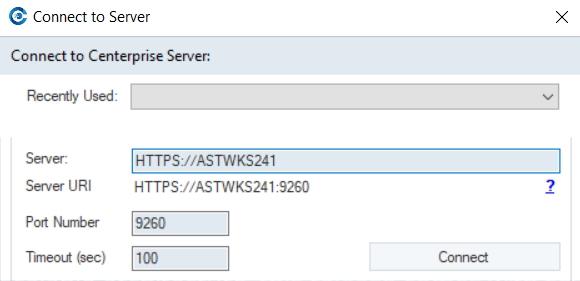
Astera Dataprep supports two ways to add sources:
By interacting with the AI-powered chat interface
Manually through Data Source Browser
You can simply ask the Dataprep chat interface to load your data by:
Providing it the name of the source:
Providing it the file path of your source:
The system will automatically load it as a dataset, making it ready for use in your data preparation workflow.
Open Astera Dataprep.
Navigate to the Toolbar and select Read > Project Source.
Once clicked, the recipe action is added to the Recipe Panel. Here, we have to configure the options to read the Project Source.
The options to be configured are:
Filter Source: This dropdown filters the type of shared sources you will be able to view and choose in the Shared Source options. Options are:
All: Shows all shared sources.
Excel Source: Shows only Excel sources.
Delimited Source
Shared Source: This dropdown shows the shared sources in the project (after filtering has been applied) that you can read.
Dataset Name: This is the name given to the dataset. You can configure this to be able to use the dataset separately elsewhere. The dataset name is auto filled and defaults to the name of the selected shared source. However, this name can be changed as needed.
Click Apply to apply the changes or Cancel to discard them.
Once you click Apply, the dataset will now be visible in Astera Dataprep, and further data processing can be applied to it.
Open the Data Source Browser and navigate to Project Sources and expand the accordion. Here you will see all the relevant supported shared sources that you can read from.
Drag and drop the desired source onto the Dataprep canvas. A 2x2 matrix will appear. Drop the source onto the Read option within the matrix.
Click Apply to apply the changes or Cancel to discard them.
Once you click Apply, the source will be loaded into the Dataprep Grid, and you can begin working with it.
This concludes the document on reading a Project Source in Astera Dataprep.
The ETL and ELT functionality of Astera Data Stack is represented by Dataflows. When you open a new Dataflow, you’re provided with an empty canvas knows as the dataflow designer. This is accompanied with a Toolbox that contains an extensive variety of objects, including Sources, Destinations, Transformations, and more.
Using the Toolbox objects and the user-friendly drag-and-drop interface, you can design ETL pipelines from scratch on the Dataflow designer.
The Dataflow Toolbar also consists of various options.
These include:
Undo/Redo: The Dataflow designer supports unlimited Undo and Redo capability. You can quickly Undo/Redo the last action done, or Undo/Redo several actions at once.
Auto Layout Diagram: The Auto Layout feature allows you to arrange objects on the designer, improving its visual representation.
Zoom (%): The Zoom feature helps you adjust the display size of the designer. Additionally, you can select a custom zoom percentage by clicking on the Zoom % input box and typing in your desired value.
In the next sections, we will go over the object-wise documentation for the various Sources, Destination, Transformations, etc., in the Dataflow Toolbox.
Report Model extracts data from an unstructured file into a structured file format using an extraction logic. It can be used through the Report Source object inside dataflows in order to leverage the advanced transformation features in Astera Data Stack.
In this section, we will cover how to get the Report Source object onto the dataflow designer from the Toolbox.
To get a Report Source object from the Toolbox, go to Toolbox > Sources > Report Source. If you are unable to see the Toolbox, go to View > Toolbox or press Ctrl + Alt + X.
Drag-and-drop the Report Source object onto the designer.
You can see that the dragged source object is empty right now. This is because we have not configured the object yet.
To configure the Report Source object, right-click on its header and select Properties from the context menu.
A configuration window for Report Source will open.
First, provide the File Path of the unstructured file (your report) for which you have created a Report Model.
Then, specify the File Path for the associated Report Model.
Click OK, and the fields added in the extraction model will appear inside the Report Source object with a sub-node, Items_Info, in our case.
Right-click on the Report Source object’s header and select Preview Output from the context menu.
A Data Preview window will open and shows you the data extracted through the Report Model.
This document explains how the Validate object is used to check whether your dataset meets certain conditions or rules before you use it further in your recipe. Think of it as a way to flag rows that don’t match expectations.
Suppose you are working with a customer's table. Some customers don’t provide a fax number, but your business requires it for all active customers. You can configure the Validate object to identify these missing values.
In the toolbar, click on Validate and select the Validate option.
This will open the Recipe Configuration – Validate panel.
In this panel, you’ll configure the following options:
Description: Enter a meaningful name for the rule (e.g., “Missing Fax Validation”).
Attach Rule to Field: Select a field to associate the rule with. For example, the Fax column.
Show Message: Provide a custom error or warning message that appears when a record fails the rule.
Severity: Choose whether a failed rule should be treated as an:
Error: The record is flagged and goes to the Invalid Output.
Warning:
Once you’re done, click Apply.
In the preview grid, records matching the "Missing Fax Validation" rule are validated. Conversely, records not matching the rule display an error, indicated by a red warning sign.
The records that fail to match the validation rule can be written and stored in a separate error log. Click to learn how you can store erroneous records to a log file.
In Astera Dataprep, the dataset that is most recently loaded becomes the current dataset meaning any transformation, filter, or cleansing steps you apply next will target this one. If you want to apply operations on a previously loaded dataset instead, you can use the Read Dataset step to bring it back as the current dataset.
This allows you to:
Reuse a cleaned dataset from earlier in your dataprep flow.
Switch focus from one dataset to another without reloading the file.
Ensure your transformations apply to the right data.
Simply type your request in the Dataprep chat, such as asking to apply a transformation to a previously used dataset. It will automatically reload that dataset and perform the requested operation.
Open Astera Dataprep.
Navigate to the Toolbar and select Read > Dataset.
Configure the following options in the dialog:
Name: From the dropdown, choose the name of the dataset you want to use. This dropdown shows you all the available datasets in the project.
Choose the Dataset you want to read and click Apply to apply the changes or Cancel to discard them.
Once you click Apply, your selected dataset is now the current one. You can continue performing any transformations, joins, validations, or data quality operations on it.
This concludes the document on reading a Dataset in Astera Dataprep.
Azure authentication is a security feature that allows users to log into a system using their Microsoft Azure credentials.
Astera Data Stack leverages this authentication method and provides the option to register new users using Azure authentication through its Server Browser interface.
Go to Server > Cluster > Cluster Settings
Designing effective prompts is more than just asking a question, it's about how you ask it. Below are best practices to help you craft clear, purposeful instructions that consistently guide language models (LLMs) to generate high-quality output.
Before writing a prompt, develop a thorough understanding of the task at hand. Review data examples or context to define the scope and desired output clearly.
In this document, you’ll learn how to use the Union transformation in Astera Dataprep to combine datasets from different sources with an existing dataset in your Dataprep Recipe.
A company wants to combine its North Sales dataset with South Sales and East Sales datasets. These additional datasets may exist as files, shared project sources, or database tables. The objective is to consolidate them into a single unified dataset for analysis.
In this document, you’ll learn how to use the Join function in Astera Dataprep to combine a dataset from a project source with an existing dataset in your Dataprep Recipe.
In this use case, we have a Dataprep Recipe where a company’s Customers dataset has been cleansed. Now, they want to join it with their Orders dataset, which is available in a shared project source.
In this document, you’ll learn how to use the Join function in Astera Dataprep to combine a dataset from a file source with an existing dataset in your Dataprep Recipe.
In this use case, we have a Dataprep Recipe where a Company’s Transactions dataset has been cleansed and aggregated. Now, they want to join it with their Portfolios dataset, which is available in a csv file.
In this document, you will explore how to select columns in Astera Dataprep. Selecting columns is useful when you want to limit your dataset to only the relevant fields for analysis, transformation, or export.
To select columns in Astera Dataprep, click on the Layout option in the toolbar and select the Select Columns option from the drop-down.
Once selected, the Recipe Configuration – Select Columns panel will open.
Dataprep Source: Shows only Dataprep sources.
Database Table Source: Shows only database table sources.
Report Model Source: Shows only report model sources.



































Move After: Adds a column after a specified column in the dataset. Once selected, you must specify the column through the Reference drop-down.

























































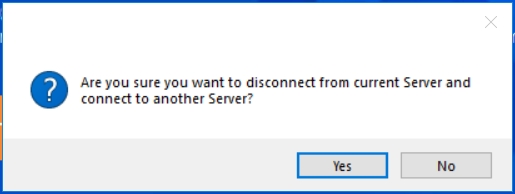
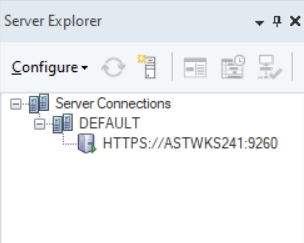
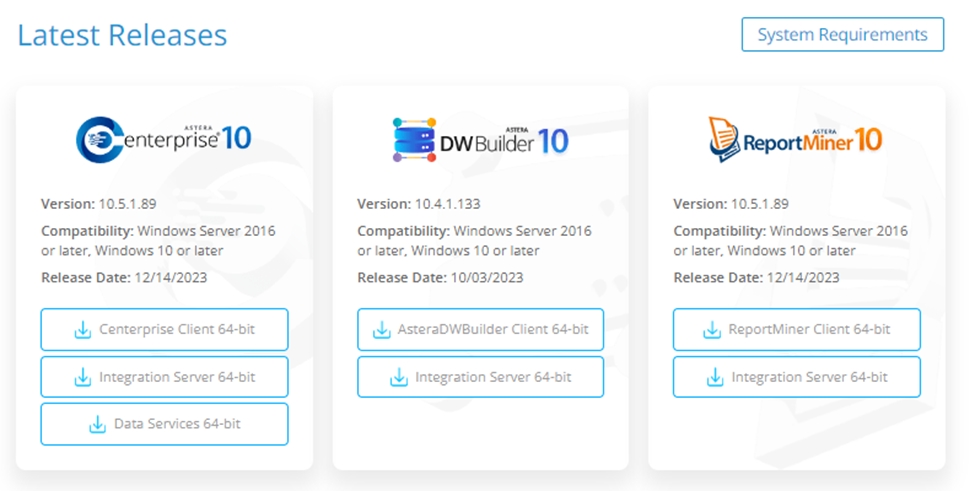
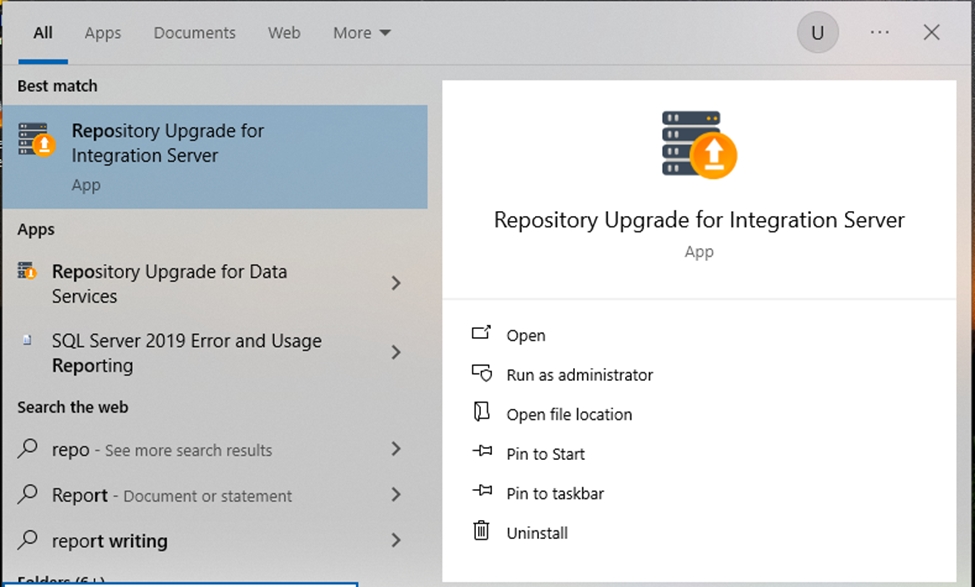

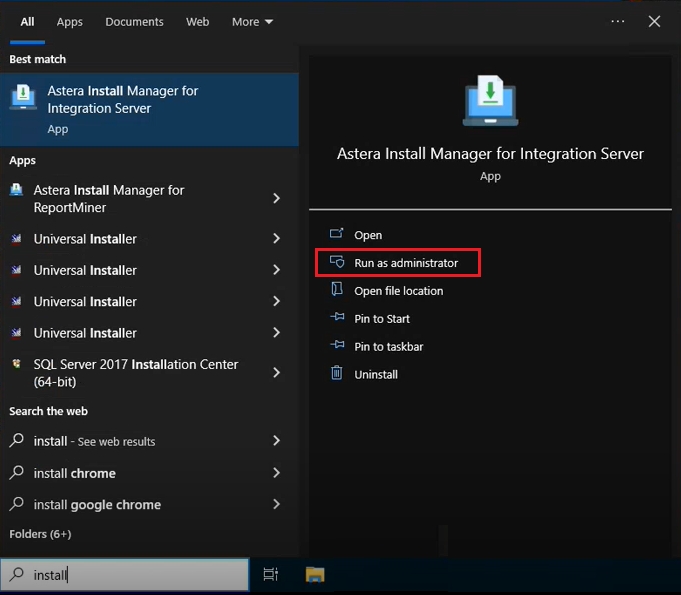


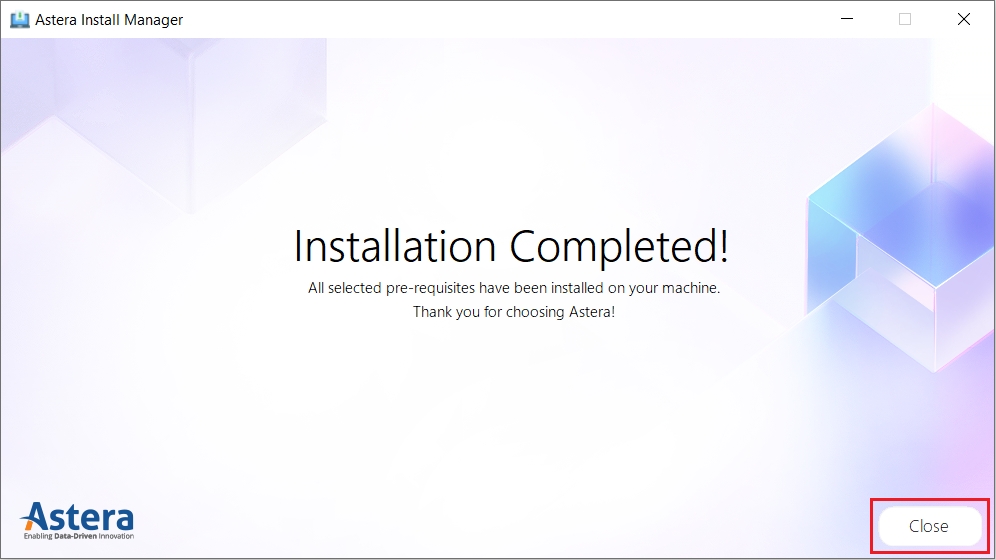
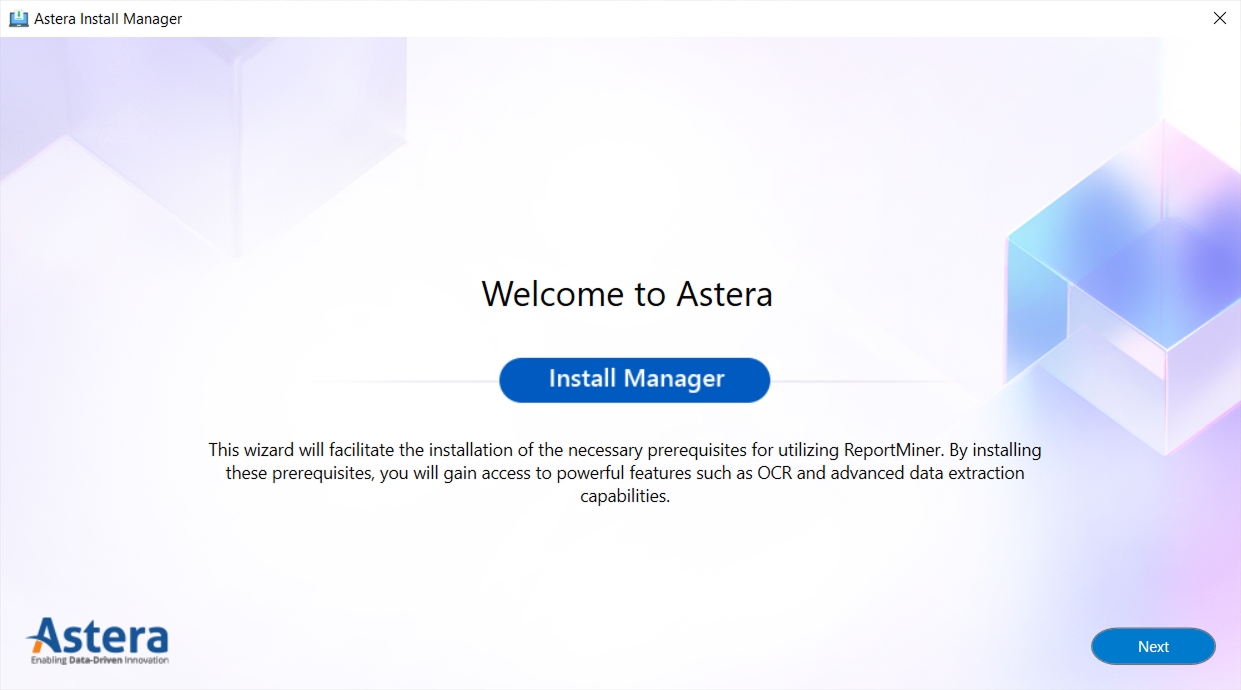
Expand All: The Expand All feature expands or enlarges the objects on the designer, improving the visual representation.
Collapse All: The Collapse All feature closes or collapses the objects on the designer, improving the visual representation and reducing clutter.
Use Orthogonal Links: The Use Orthogonal Links feature replaces the links between objects with orthogonal curves instead of straight lines.
Data Quality Mode: Data Quality Mode in Astera enhances Dataflows with advanced profiling and debugging by adding a Messages node to objects. This node captures statistical information, such as, TotalCount, ErrorCount, and WarningCount etc.
Safe Mode: The Safe Mode option allows you to study and debug your Dataflows in cases when access to source files or databases is not available. You can open a Dataflow/Subflow and then proceed to debug or understand it after activating Safe Mode.
Show Diagram Overview: This feature opens a Diagram Overview panel, allowing you to get an overview of the whole Dataflow designer.
Link Actions to Create Maps Using AI: The AI Auto-mapper semantically maps fields between different data layouts, automatically linking related fields, for example, "Country" to "Nation."
Rule Condition: Enter the expression for your rule by typing it directly or using the Expression Builder with built-in functions, operators, and fields.








Click on Authentication mode tab and select Azure Authentication from dropdown
Provide a valid Client Id, Redirect URI and Account Type
After Configuring Azure Credentials, navigate to Server Browser tool window by pressing ctrl + alt + B.
Here, in Security > User, right-click on User and select Register User
A Register User window will open, in the Registration drop-down select Azure Authentication
Once selected, Astera will start retrieving a list of users.
Once the users have been retrieved, a search UI will appear.
Now there are two ways to specify user you want to register
By clicking on the dropdown given in the search bar, this will show the list of all users which exist in that active directory:
By just directly searching in the search bar for a specific user and clicking enter so that user will be selected:
Once the user has been selected by one of the methods, the selected email id will be displayed in a User Email Id grid.
Now Click Register and you can see that selected users added
Now you can activate them or assign them a role as you would normally do in Astera
Once users have been registered with Azure authentication, they can login with the same authentication credentials.
To log in, select the Log In option from the top right of the client window.
Selecting this will open a new window.
In the authentication Dropdown, there are three options:
Centerprise: For Users that are created by using a simple/existing registration method.
Windows Authentication: For users that are created by using the Windows authentication method.
Azure Authentication: For users that are created using the Azure authentication method
By selecting Azure Authentication, the email and password textbox will get locked. Click on Log In
User would be redirected to the Microsoft sign-in screen where they can sign-in as they would normally do with their email id and password.
This concludes the working of Azure Authentication in Astera Data Stack.
Avoid vague, passive phrasing. Use direct action words to clearly state what the model should do.
Bad: "Details from the invoice should be extracted and returned in JSON format."
Good: "Extract details from the invoice and return them in JSON format."
Write short, unambiguous sentences. Eliminate overly polite or wordy constructions.
Bad: "Could you please try and rephrase this more formally?"
Good: "Rephrase this in a formal tone."
Be specific about input expectations, fields, and output format.
Ambiguous: "Extract relevant data from this form."
Improved: "Extract Customer Name, Order ID, Product, Quantity, and Total Price from the purchase order. Return the result in JSON format."
Avoid asking for too much in a single prompt. Instead, divide the task into steps.
Overloaded: "Clean the data, summarize it, chart monthly spending, and detect anomalies."
Step-by-Step Prompt: "Perform the following tasks in order: 1. Extract the following fields from the invoice: Date, Vendor, Amount, and Category. 2. Summarize total monthly spending, grouped by category. 3. Highlight any transaction where the Amount exceeds $10,000. 4. Return the result as a JSON object."
List the desired actions first, followed by exceptions and edge cases. Then add instructions on what to avoid.
Example:
Always state the desired output format, e.g., JSON, CSV, plain text. For CSV, mention delimiters if needed.
Show a sample input-output pair to anchor expectations. This reduces ambiguity and improves accuracy, especially in complex or unfamiliar domains.
Lead with high-impact terms in the first 10 words. The right keywords (e.g., "structured JSON", "key-value pairs") improve accuracy and help the model prioritize key tasks.
Example: “Extract key information from the NORSOK datasheet below. Focus on technical specifications, material details, performance requirements, and compliance standards.
Present the extracted data in a structured JSON format with the following keys: [list specific keys like Equipment Name, Material, Operating Pressure, etc.]. The datasheet content is as follows:"
<insert the datasheet content>
Use symbols like ###, ''', or ---- to draw the model’s attention to important sections or blocks of content.
Prompts that work well for one model (e.g., GPT-4) may not perform the same way on another. Always test and optimize accordingly.
Test prompts with noisy or inconsistent inputs to ensure resilience. Consider edge cases such as missing fields, varying formats, or embedded values.
Prompt engineering is iterative. Save prompt versions and track what changes improve (or degrade) performance.
For complex workflows, use a sequence of prompts. For example, extract data page-by-page in a bank statement, then combine results.
Set temperature = 0 for deterministic tasks like data extraction or formatting. Higher temperatures (e.g., 0.8) increase creativity but reduce consistency.
Don’t assume the model got it right. Watch for incorrect formats, extra symbols, or misinterpretations. Use follow-up prompts to correct them if needed.
Assign a role to the model when helpful.
Example: “You are a customer support agent. Respond in a calm and helpful tone.”
When output format is set to CSV or JSON, LLM often encloses it in parentheses, quotes, or tags. Add instructions in the prompt to not do so, to enable easy downstream parsing.
Example: “You must only get me the delimited output with field headers and values. DO NOT include the output enclosed in parenthesis or quotes.”
This will open the Recipe Configuration – Union panel. In this panel you can configure the source-specific settings (see tabs below).
Dataset: Select the dataset you want to union with from the drop-down.
Browse Path: Use this to manually browse and select your source file.
Path from Variable: Use this when your file path is dynamic and parameterized. To learn more about using variables click .
For this use case, we’ll use the Browse Path option.
Filter Source: Choose the type of source you want to use. You can filter by type or simply select All.
Shared Source: From the drop-down, select the project source dataset you want to join.
Connection Name: Select the shared connection you want to use. The drop-down lists all shared connections available in the project.
Table: From the drop-down, choose the database table you want to union with. In this example, we’ll select the southsales table.
Provide a name for the union dataset (or keep the default name).
Choose a Union Type:
Matching: Returns only the fields that are present in both datasets.
All: Returns all fields from both datasets.
Remaining: Returns fields present in the current dataset along with the fields present in both datasets.
Once you’re done, click Apply. The result will appear in the grid.
To begin, click on the Join option in the toolbar and select Source from the drop-down.
Alternatively, you can drag and drop the project source from the Data Source Browser panel onto the Join object in the Recipe canvas.
This will open the Recipe Configuration – Join panel.
In this panel, you’ll configure the following options:
Filter Source: Choose the type of source you want to use. You can filter by type or simply select All.
Shared Source: From the drop-down, select the project source dataset you want to join.
Join Dataset: You can provide a custom name for the joined dataset or keep the default name. In this example, we’ll keep the default name.
Join Type: Choose the type of join you want to perform:
Inner: Keeps only the records that have matching values in both datasets.
Left Outer: Keeps all records from the current dataset and adds matching data from the project source. Unmatched records from the project source are filled with nulls.
Right Outer: Keeps all records from the project source and adds matching data from the current dataset. Unmatched records from the current dataset are filled with nulls.
Full Outer: Keeps all records from both datasets. Unmatched values are filled with nulls.
In our example, we’ll use an Inner join to include only matching records.
Keys: Specify the key fields that the join will be based on. Astera will auto-detect matching fields, but you can modify them as needed.
Left Field: Field from the current dataset.
Right Field: Field from the project source dataset.
In this case, we’ll keep the default key fields selected.
Once you’re done, click Apply. The project source dataset will now be joined, and the result will appear in the grid.

Alternatively, you can drag and drop the file from the Data Source Browser panel onto the Join object in the Recipe canvas.
This will open the Recipe Configuration – Join panel.
In this panel, you’ll configure the following options:
File Location: Choose how you want to locate your file:
Browse Path: Use this to manually browse and select your source file.
Path from Variable: Use this when your file path is dynamic and parameterized. To learn more about parametrization click here.
For this use case, we’ll use the Browse Path option.
Join Dataset: You can provide a custom name for the joined dataset or keep the default name. In this example, we’ll keep the default name.
Join Type: Choose the type of join you want to perform:
Inner: Keeps only the records that have matching values in both datasets.
Left Outer: Keeps all records from the current dataset and adds matching data from the joined dataset. Unmatched records from the joined dataset are filled with nulls.
Right Outer: Keeps all records from the joined dataset and adds matching data from the current dataset. Unmatched records from the current dataset are filled with nulls.
Full Outer: Keeps all records from both datasets. Unmatched values are filled with nulls.
In our example, we’ll use an Inner join to include only matching records.
Keys: Specify the key fields that the join will be based on. Astera will auto-detect matching fields, but you can modify them as needed.
Left Field: Field from the current dataset.
Right Field: Field from the joining dataset.
In this case, we’ll keep the default key fields selected.
Once you’re done, click Apply. The file source dataset will now be joined, and the result will appear in the grid.

Use the Column Name(s) drop-down to choose the columns that you want to include.
Once done, click on Apply. The Grid will now display only the selected columns.









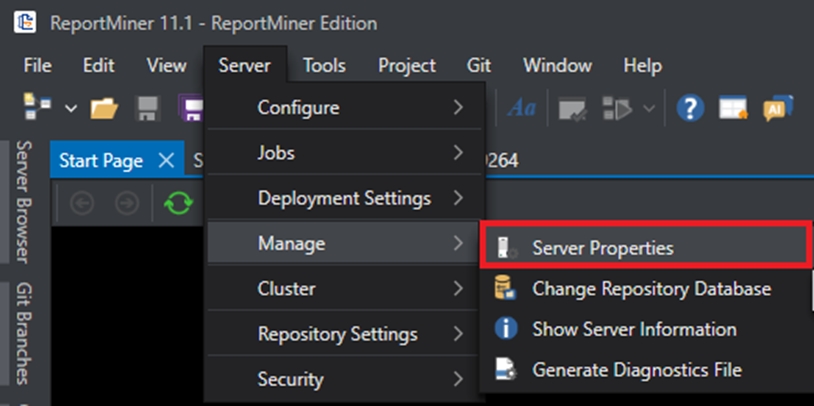
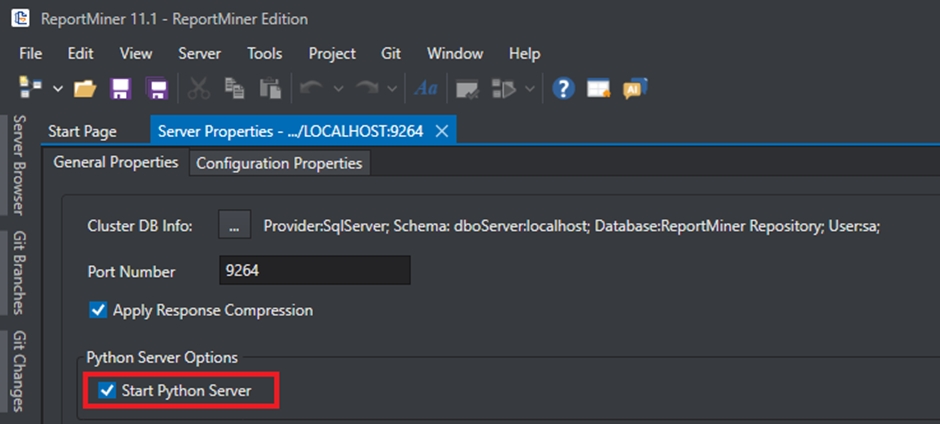
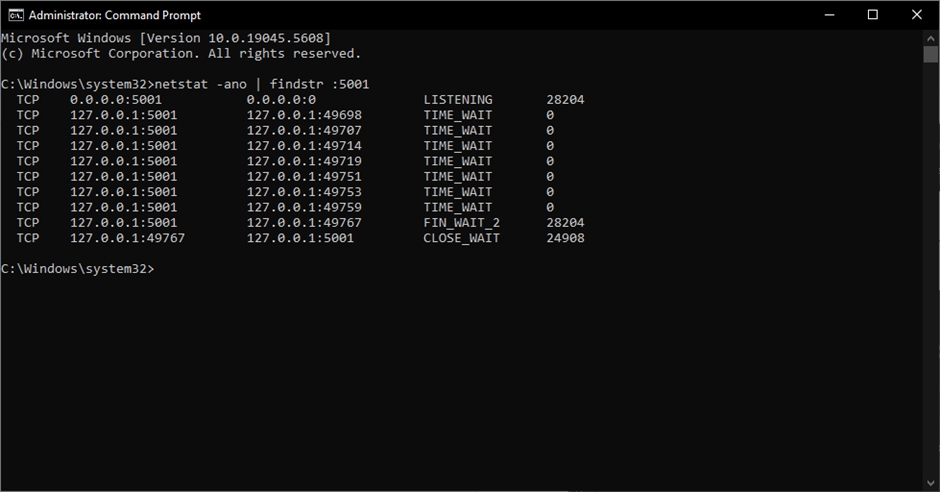
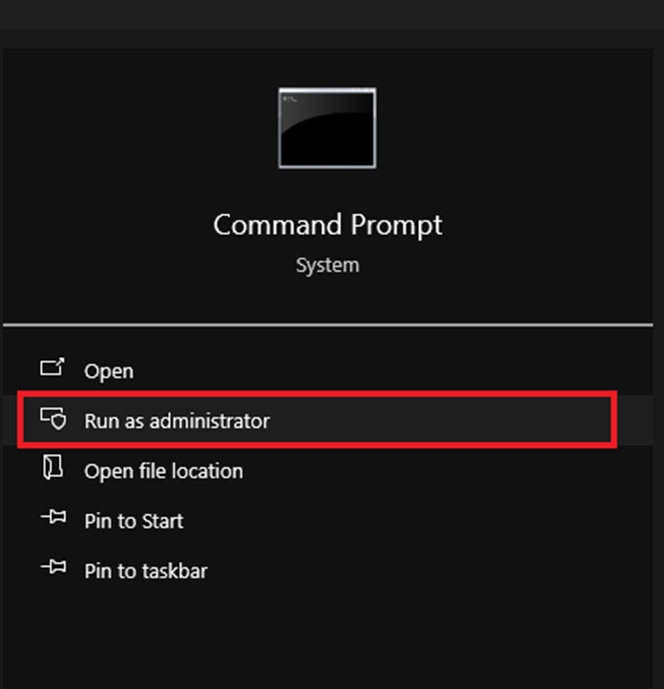
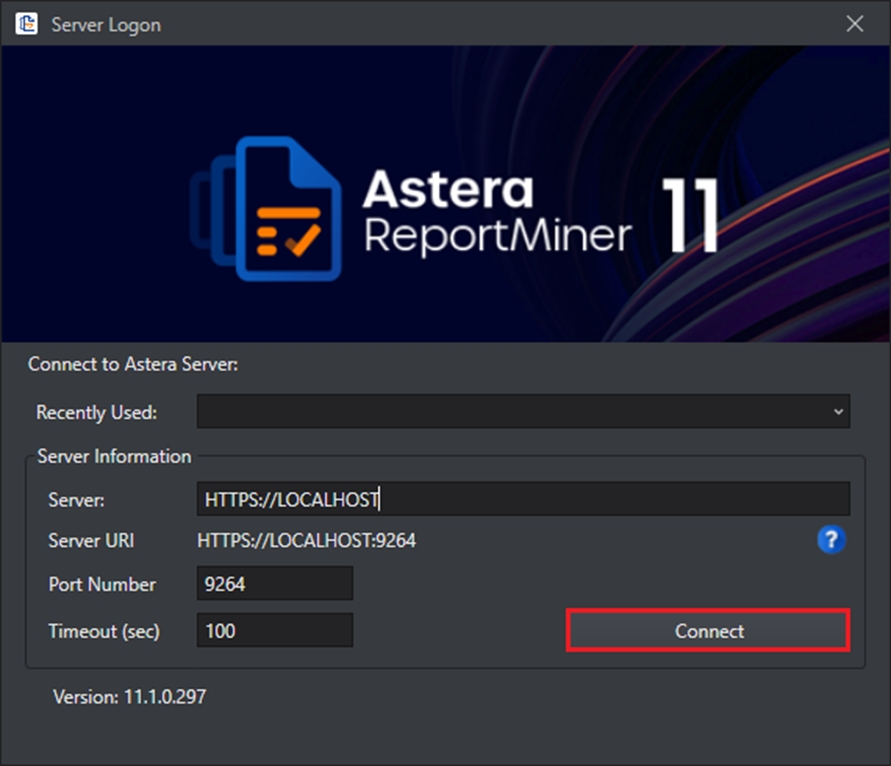


The File Source recipe action in Astera Dataprep allows us to import and use different file sources such as Excel, Delimited, and Cloud files by providing their paths.
You can simply ask the in simple english to load your data by:
Providing it the file path of your source:
Open Astera Dataprep.
Navigate to the Toolbar and select Read > File Source.
Once clicked, the recipe action is added in the Recipe Panel. Configure the following options in the dialog:
File Location: Dropdown options are:
Browse Path: This lets us provide a file path to where our file is located.
Path from Variable: This lets us provide the variable which contains the file path.
File Path (Browse Path ) / Variable (Path from Variable): This provides the path to the file or the variable which contains the path to the file.
Dataset Name: This is the name given to the dataset. You can configure this to be able to use the dataset separately elsewhere. The dataset name is auto filled and defaults to the name of the selected shared source. However, this name can be changed as needed.
To configure a static file path to the file you want to read, use the Browse Path option in File Location. In the File Path field, provide the file path either by typing in the text entry box or by clicking the folder icon to navigate to the desired file.
Once you click Apply, the dataset will now be visible in Astera Dataprep, and further data processing can be applied to it.
To use a variable for the file path, choose Path from variable in the dropdown for the File Location option. Choose the variable from the Variable dropdown. This dropdown will show you the shared variables within the project and any other variables available to you. Variables may either be part of the config file in a project or may be declared as a recipe action in a dataprep. Using the variable declared in the dataprep allows for the parameterization of the file within a dataflow.
Click Apply to apply the changes or Cancel to discard them.
Once you click Apply, the dataset will now be visible in Astera Dataprep, and further data processing can be applied to it.
To add supported files through the Dataprep Grid method, you can follow one of these steps:
From Data Source Browser:
Open the Data Source Browser and navigate to the "Local" accordion.
Drag and drop any supported file onto the Dataprep canvas where a 2x2 grid appears. Drop the source onto the
Click Apply to apply the changes or Cancel to discard them.
Once you click Apply, the dataset will now be visible in Astera Dataprep, and further data processing can be applied to it.
This concludes the document on reading File Sources in Astera Dataprep.
Silent installation refers to the installation of software or applications on a computer system without requiring any user interaction or input. In a silent installation, the installation process occurs in the background, without displaying any user interfaces, prompts, or dialog boxes that would normally require the user to make choices or provide information. This type of installation is particularly useful in scenarios where an administrator or IT professional needs to deploy software across multiple computers or systems efficiently and consistently.
Obtain the installer file you want to install silently. This could be an executable (.exe), Microsoft Installer (MSI), or any other installer format.
For example, in this article we will be using the ReportMiner.exe file to perform the silent installation.
To initiate the silent installation, you'll need to use a command-line interface. Open the Command Prompt as an administrator.
To achieve this, first search for “Command Prompt” in the Windows search bar then right-click the Command Prompt app, and select Run as administrator from the context menu. This will launch the Command Prompt with administrative privileges.
Locate the installation file and open its location in Windows Explorer. Once you have located the file in Windows Explorer, the full path will be displayed in the address bar at the top of the window. The address bar shows the complete path from the drive letter to the file's location.
For example, this file is located at "C:\Users\muhammad.hasham\Desktop\Silent Installation Files" as evident with the full path displayed in the address bar.
Alternatively, you can also right-click the file and select Properties from the context menu. In the Properties Window, you'll find a Location field that displays the full path to the file.
To silent install the file, change your current location to the specific folder containing the installer using the Command Prompt. To do so, enter the following command in the Command Prompt:
For example:
Use the appropriate command to run the installer in silent mode. This command might involve specifying command-line switches that suppress dialogs and prompts.
General File:
Example:
General File:
Example:
To run it in this manner:
The silent installation might take some time. Wait for the installation process to finish. Depending on the software, you might receive an output indicating the progress and success of the installation.
After the installation is complete, verify that the software is installed as expected. You might want to check the installation directory, program shortcuts, or any other relevant indicators.
Use the provided command in the Command Prompt to remove the silently installed file.
General File:
Example:
This concludes our discussion on Silent Installations.
The Email Source object in Astera enables users to retrieve data from emails and process the incoming email attachments.
In this section, we will cover how to get the Email Source object onto the dataflow designer from the Toolbox.
To get an Email Source object from the Toolbox, go to Toolbox > Sources > Email Source. If you are unable to see the Toolbox, go to View > Toolbox or press Ctrl + Alt + X.
Drag-and-drop the Email Source object onto the designer.
You can see some built-in fields and an Attachments node.
Double-click on the header of the Email source object to go to the Properties window
A configuration window for the Email Source object will open. The Email Connection window is where you will specify the connection details.
Url: The address of the mail server on which the connection will be configured.
Login Name: The Hostname
Password: Password of the user.
Port: The port of the mail server on which to configure. Some examples of SMTP provider ports are; 587 for outlook, 25 for Google, etc.
Astera supports 4 types of Connection Logging methods:
Verbose: Captures everything.
Debug: Captures only the content that can be used in debugging.
Info: Captures information and general messages.
Error: Captures only the errors.
If you have configured email settings before, you can access the configured settings from the drop-down list next to the Recent option. Otherwise, provide server settings for the mailing platform that you want to use. In this case, we are using an Outlook server.
Test your connection by clicking on Test Connection, this will give you the option to send a test mail to the login email.
Click Next. This is the Email Source Properties window. There are two important parts in this window:
Download attachment options
Email reading options
Check the Download Attachments option if you want to download the contents of your email. Specify the directory where you want to save the email attachments, in the provided field next to Directory.
The second part of the Email Source Properties window has the email reading options that you can work with to configure various settings.
Read Unread Only – Check this option if you only want to process unread emails.
Mark Email as Read – Check this option if you want to mark processed emails as read.
Folder – From the drop-down list next to Folder, you can select the specific folder to check, for example, Inbox, Outbox, Sent Items etc.
Filters - You can apply various filters to only process specific emails in the folder.
From Filter: Filters out emails based on the sender’s email address.
Subject Filter: Filters out emails based on the text of the subject line.
Click OK.
Right-click on the Email Source object’s header and select Preview Output from the context menu.
A Data Preview window will open and will show you the preview of the extracted data.
Notice that the output only contains emails from the email address specified in the Filter section.



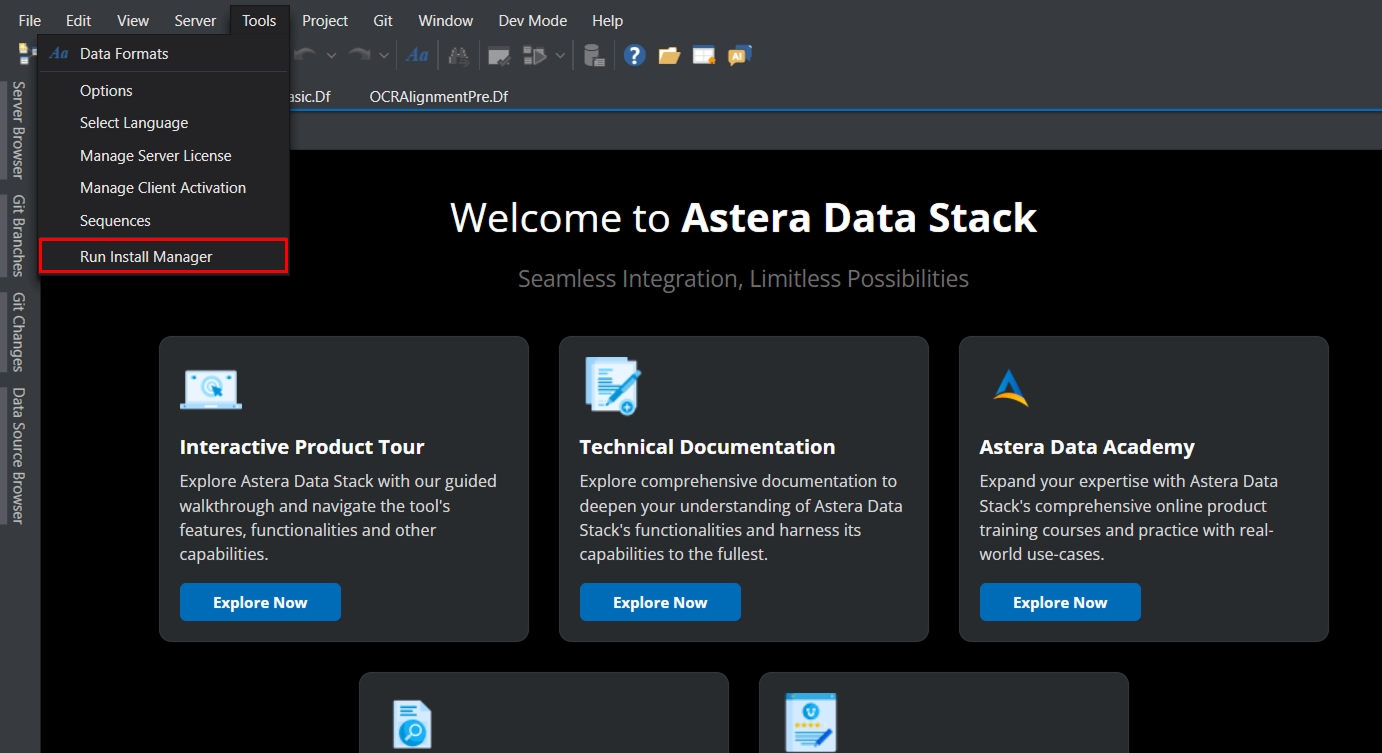
The SQL Query Source object enables you to retrieve data from a database using an SQL query or a stored procedure. You can specify any valid SELECT statement or a stored procedure call as a query. In addition, you can parameterize your queries dynamically, thereby allowing you to change their values at runtime.
In this article, we will be looking at how you can configure the SQL Query Source object and use it to retrieve data in Astera Data Stack.
This document explains how to export data from Astera Dataprep using different output formats. You can choose between Excel, Delimited File, and Log File.
Each method can be done through the toolbar or by simply asking in Chat.
Suppose you have a Dataprep Recipe containing cleansed data that you want to save as an Excel file for reporting purposes.
Open your Dataprep Recipe.
Template-less data extraction enables the processing of unstructured documents without relying on predefined templates. This approach is highly flexible and adaptable, allowing for the extraction of structured data from various document formats, even when layouts differ.
In this document, we will outline a use case where template-less extraction is applied to invoices using AI-powered techniques.
Windows authentication is a security feature that allows users to log into a system using their Windows credentials.
Astera Data Stack leverages this authentication method and provides the option to register new users using Windows authentication through its Server Browser interface.
Before a new user can be registered through the security section of the Server Browser, the LDAP path needs to be configured.
The Variable object in Dataprep allows you to parameterize values such as file paths, dataset names, or filter conditions, that can be reused throughout your recipe without reconfiguration. By using variables, you can make your recipes dynamic, flexible, and easier to manage when integrated into dataflows or workflows.
Imagine you receive monthly sales files that all need the same cleansing and transformation. Without variables, you’d have to create a separate recipe for each file, which is time-consuming and hard to maintain.
This is where variables help. Instead of hardcoding the file path in your recipe, you can define a variable and use it as the input source. When the recipe is run in a dataflow, the variable can be mapped to different files or even an entire directory.













































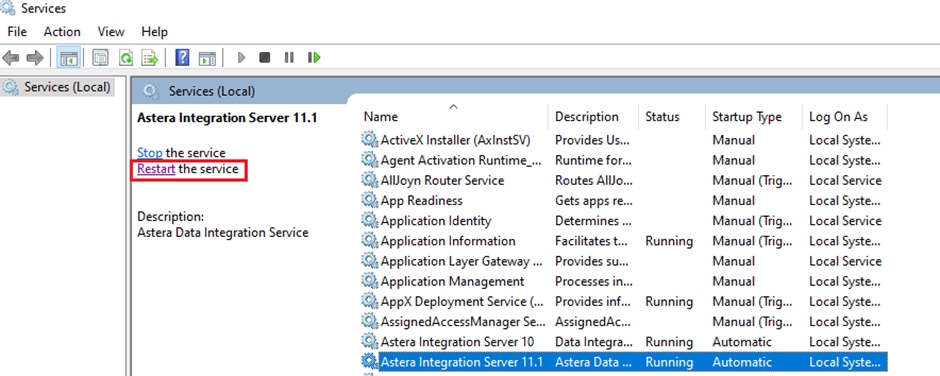
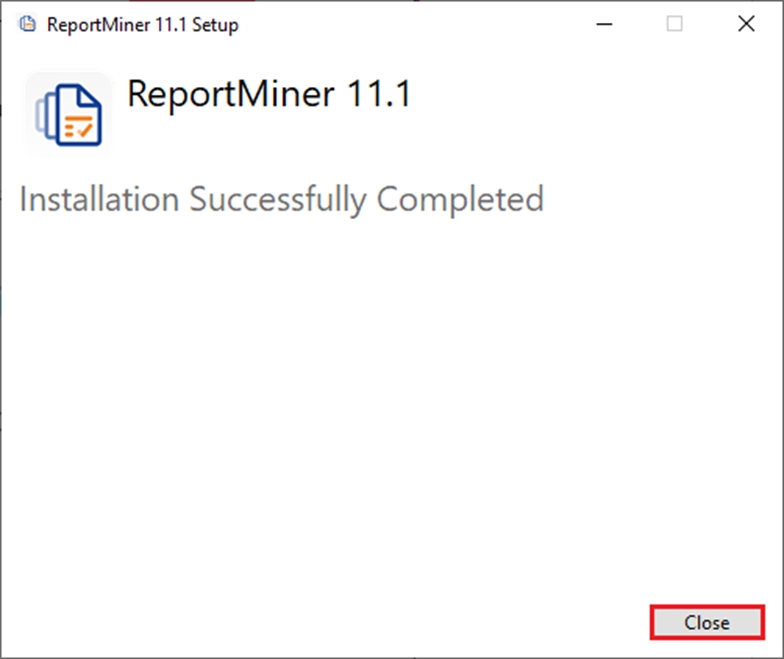
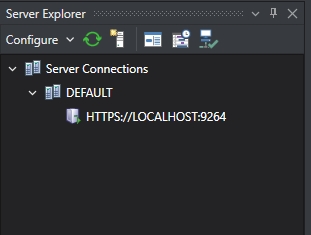

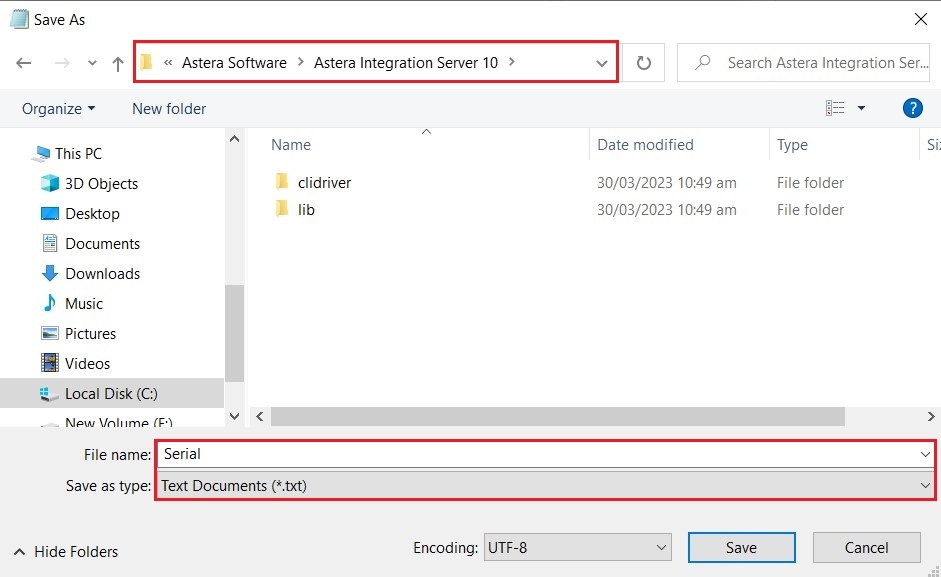
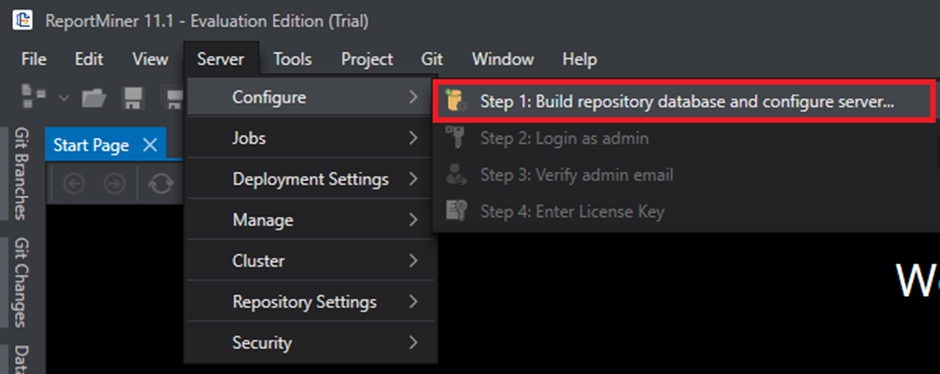

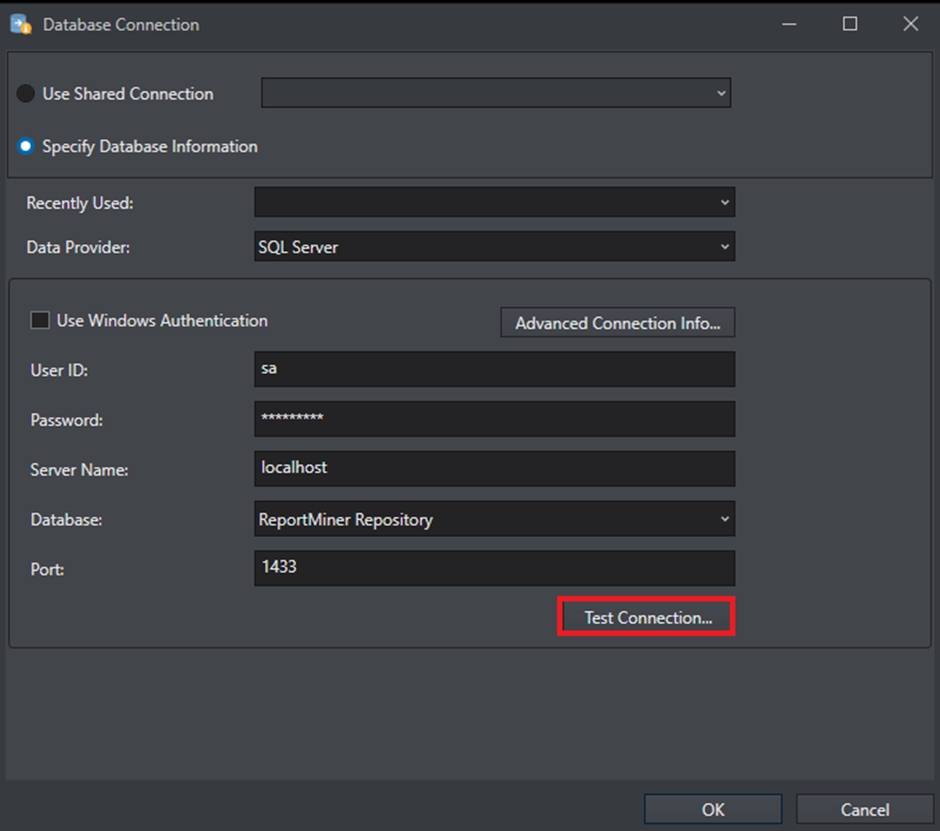
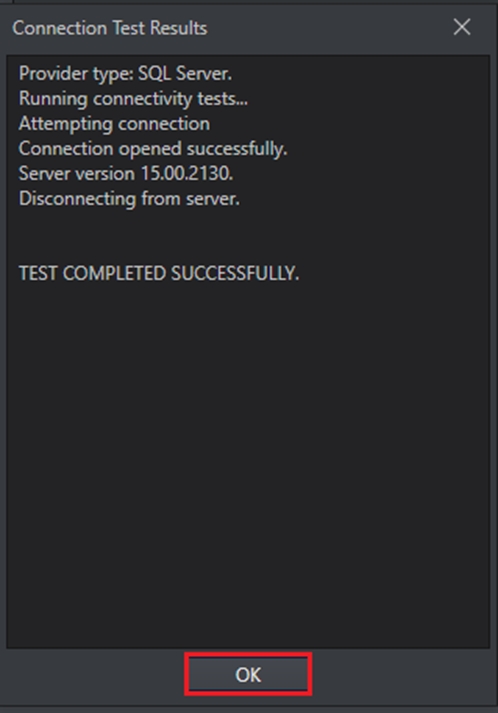
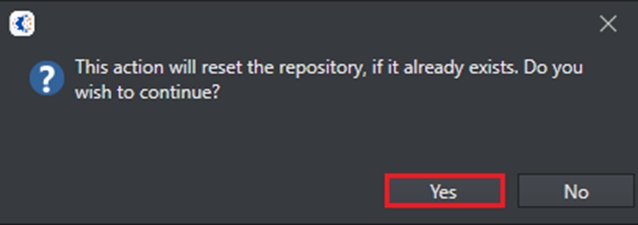
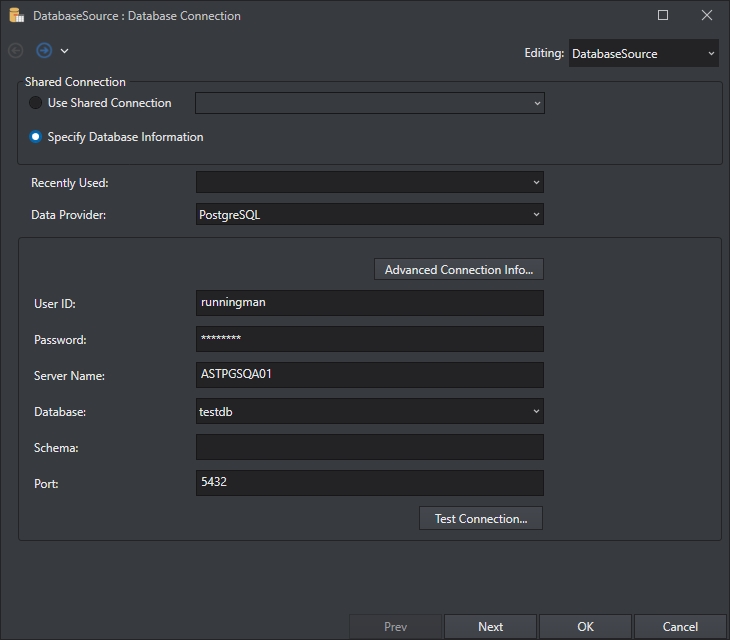
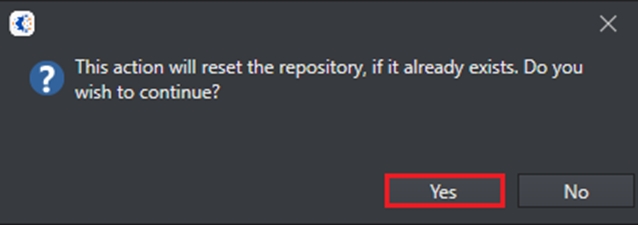
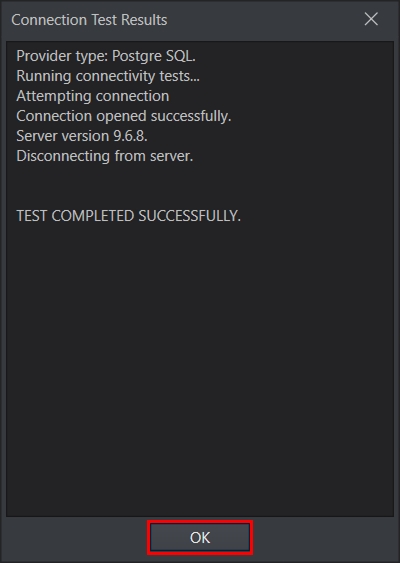
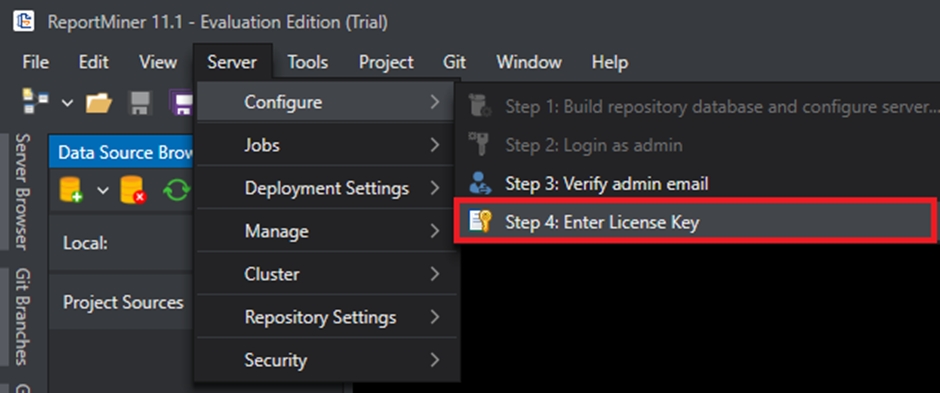
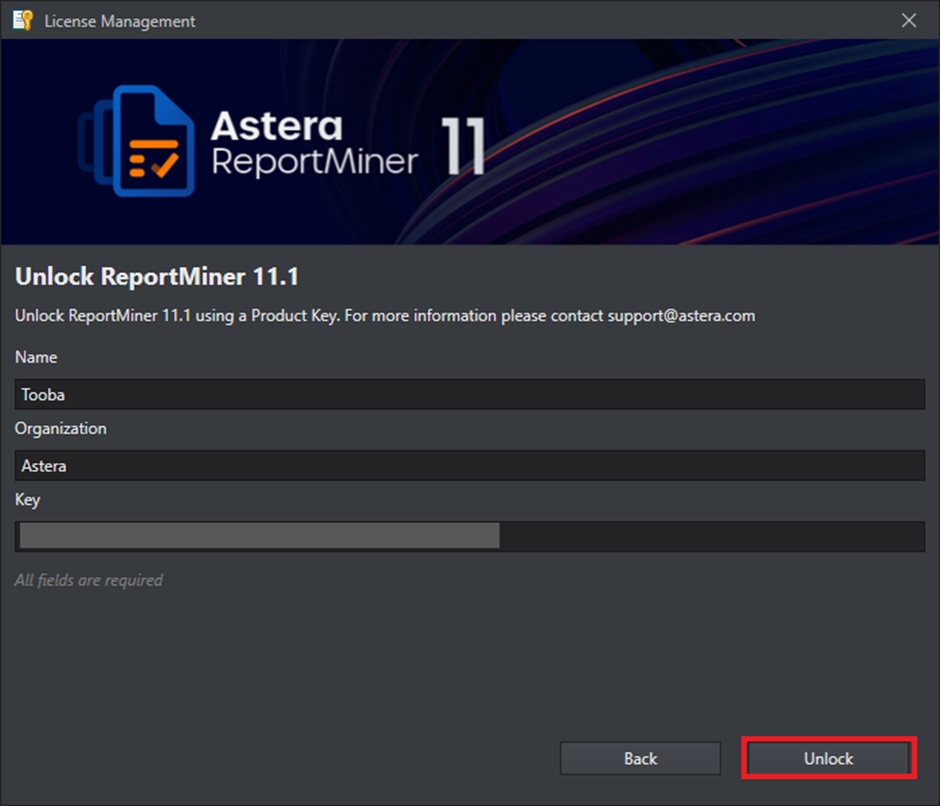
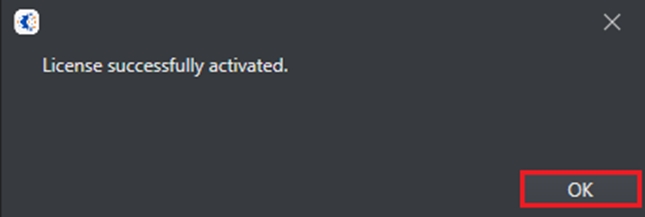
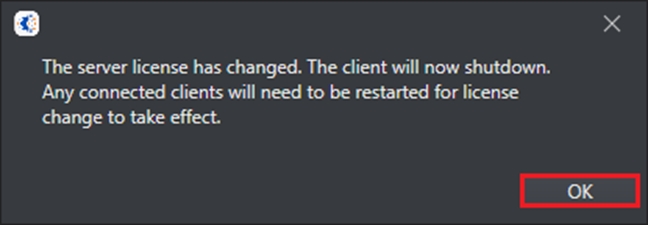
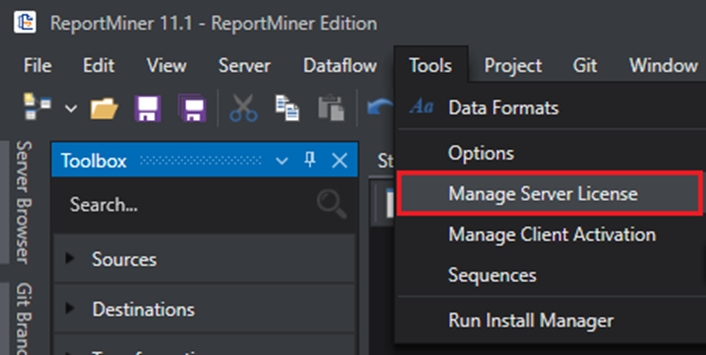
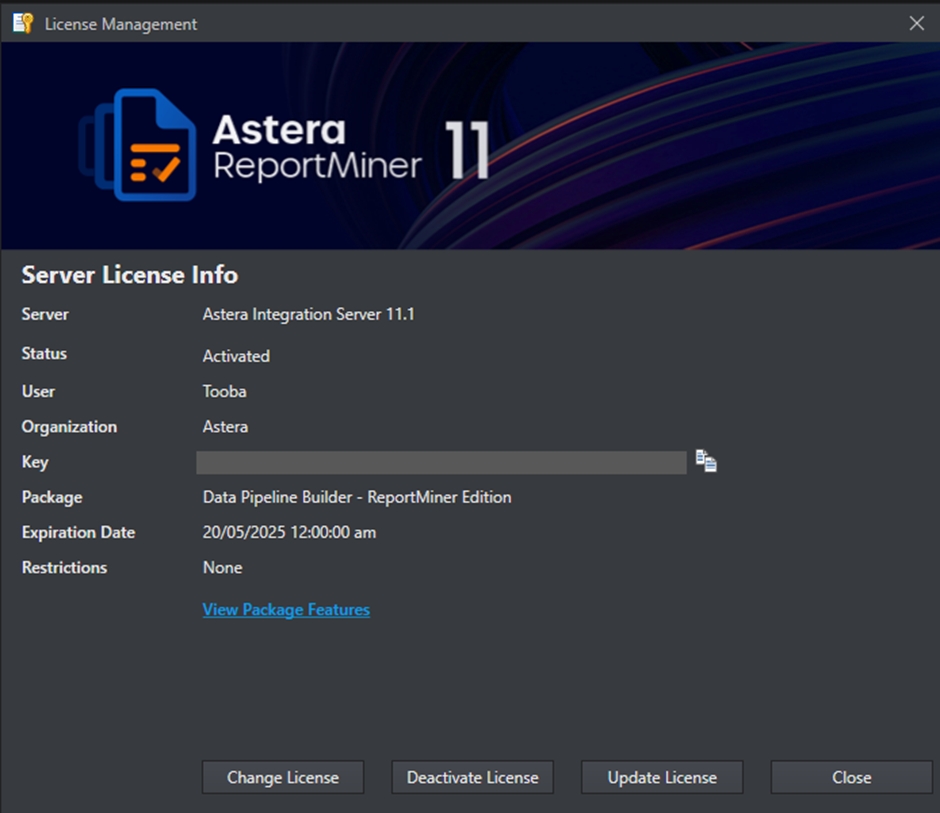
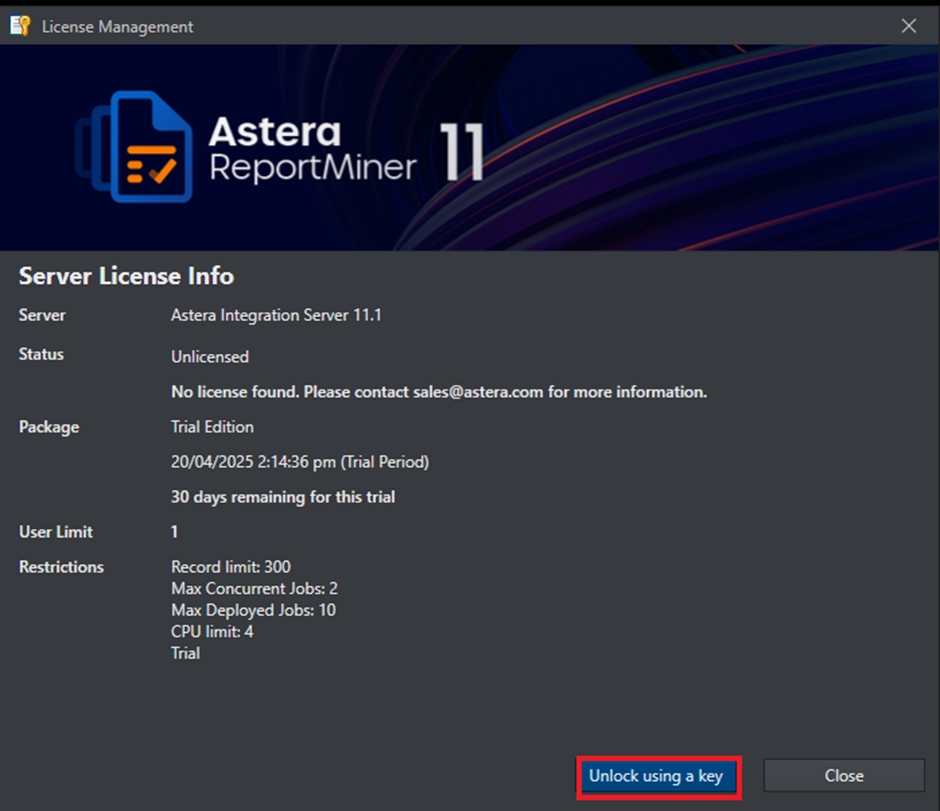
Connection Logging: Connection logging is used to log different types of messages or events between the client and the server. In case of error or debugging purposes, the user can see them.
Drag-and-drop the SQL Query Source object onto the designer.
The source object is currently empty as we have not configured it yet.
To configure the SQL Query Source object, right-click on its header and select Properties from the context menu. Alternatively, you can double-click the header of the source object.
A new window will pop up when you click on Properties in the context menu.
In this window, we will configure properties for the SQL Query Source object.
On this Database Connection window, enter information for the database you wish to connect to.
Use the Data Provider drop-down list to specify which database provider you want to connect to. The required credentials will vary according to your chosen provider.
Provide the required credentials. Alternatively, use the Recently Used drop-down list to connect to a recently connected database.
Test Connection to ensure that you have successfully connected to the database. A separate window will appear, showing whether your test was successful. Close this window by clicking OK, and then, click Next.
The next window will present a blank page for you to enter your required SQL query. Here, you can enter any valid SELECT statement or stored procedure to read data from the database you connected to in the previous step.
The curly brackets located on the right side of the window indicate that the use of parameters is supported, which implies that you can replace a regular value with one that is parameterized and can be changed during runtime.
In this example, we will be reading the Orders table from the Northwind database.
Once you have entered the SQL query, click Next.
The following window will allow you to check or uncheck certain options that may be utilized while processing the dataset, if needed.
When checked, The Trim Trailing Spaces option will refine the dataset by removing extra whitespaces present after the last character in a line, up until the end of that line. This option is checked by default.
The Dynamic Layout option is unchecked by default. When checked, it will automatically enable two other sub-options.
o Delete Field In Subsequent Objects: When checked, this option will delete all fields that are present in subsequent objects.
o Add Fields In Subsequent Objects: When checked, this option will add fields that are present in the source object to subsequent objects.
Choose your desired options and click Next.
The next window is the Layout Builder. Here, you can modify the layout of the table that is being read from the database. However, these modifications will only persist within Astera and will not apply to the actual database table.
To delete a certain field, right-click on its serial column and select Delete from the context menu. In this example, we have deleted the OrderDate field.
To change the position of a field, click its serial column and use the Move up/Move down icons located in the toolbar of the window. In this example, we have moved up the EmployeeID field using the Move up icon, thus shifting the CustomerID field to the third row. You can move other fields up or down in a similar manner, allowing you to modify the entire order of the fields present in the table.
Once you are done customizing your layout, click Next.
In the Config Parameters window, you can define certain parameters for the SQL Query Source object.
These parameters facilitate an easier deployment of flows by excluding hardcoded values and providing a more convenient method of configuration. If left blank, they will assume the default values that were initially assigned to them.
Enter your desired values for these parameters, if any, and click Next.
Finally, aGeneral Options window will appear. Here, you are provided with:
A text box to add Comments.
A set of General Options that have been disabled.
To conclude the configuration, click OK.
You have successfully configured the SQL Query Source object. The fields are now visible and can be mapped to other objects in the dataflow.
In the toolbar, click Write and select Excel from the drop-down.
This opens Recipe Configuration – Write Excel panel.
In this panel, you can configure the following options:
File Path: Specify the file path (and name) for the output file. You can type the path directly or click the folder icon to browse.
Worksheet: Specify the name of your worksheet. This can be used to either overwrite data in an existing worksheet or to add a new worksheet.
Start Address: Indicate the cell value from where you want Astera Dataprep to start writing the data.
Click Apply to save settings or Cancel to discard.
Click Execute Dataprep Recipe to generate the Excel file.
Alternatively, you can ask in Chat to write to an Excel file and then later instruct it to execute the recipe.
Suppose you have a Dataprep Recipe containing cleansed data that you want to save as a CSV file for sharing.
Open your Dataprep Recipe.
In the toolbar, click Write and select Delimited File from the drop-down.
This opens the Recipe Configuration – Write Delimited panel.
In this panel, you can configure the following options:
Append To File (If Exists): Choose whether to append new entries or overwrite the file.
File Path: Specify the file path (and name) for the output file. You can type the path directly or click the folder icon to browse.
Field Delimiter:
Alternatively, you can ask in Chat to write to a delimited file and then later instruct it to execute the recipe.
Suppose you have a Dataprep Recipe processing customer transaction and you want to log specific records for tracking or debugging.
Open your Dataprep Recipe.
In the toolbar, click Write and select Log File from the drop-down.
This opens the Recipe Configuration – Log panel.
In this panel, you can configure the following options:
File Path: Specify the file path (and name) for the output file. You can type the path directly or click the folder icon to browse.
Create a new file on each run: Check this box if you want a separate log file generated every time the recipe runs.
Alternatively, you can ask in Chat to write to a log file and then later instruct it to execute the recipe.

For our use case, we will use multiple PDF invoices as our source files. These invoices will have diverse and unpredictable layouts. This AI-powered technique will help us extract key information from the invoices and convert it into a structured JSON format.
Following are some layouts of the invoices:
Start by creating a new Dataflow where we will design our invoice extraction pipeline for a single invoice.
To read unstructured data from the invoice in our pipeline we will be using the Text Converter object. Drag and drop the Text Converter object from the Sources section in the toolbox.
Configure it by specifying the file path to one of the source invoice files.
The output of this object will contain the entire content of the PDF file as a single text string.
Next, drag and drop the LLM Generate object from the AI section of the toolbox into the dataflow designer, to extract structured information from the unstructured text dynamically.
Double-click on the objects header to configure its properties.
Select the Input node to create the required input fields. For our use case, let’s define a single input field named Invoice, which will contain the invoice content as a string.
Click OK to save the configuration. The invoice field will now appear in the input node.
Map the output of the Text Converter object to the input field of the LLM Generate object.
Next, let’s define a prompt which acts as a set of instructions which guides the AI model in extracting and structuring data from the invoice.
Open the properties of the LLM Generate object, by double-clicking on the header.
Right-click on the Prompts node and select Add Prompt (or use the Add Prompt button at the top of the layout window).
A Prompt node will appear with Properties and Text fields.
Let’s select the Text field and enter a prompt which instructs the LLM to extract data from the provided invoice and generate an output in the required JSON structure.
Click Next to proceed to the LLM Generate Properties screen.
Here, let’s select the Ai provider, for our use case we will be using the OpenAI GPT-4 model, with its default settings.
Click OK to complete the configuration.
Next, let’s drag-and-drop a JSON Parser object onto the designer. This will convert the extracted data which is returned as a text string into a structured JSON format.
Map the output field of the LLM Generate object to the input field of the JSON Parser object.
Open the JSON Parser properties.
In the layout screen, we can either create a preferred layout manually or use the Generate Layout by Providing Sample Text option to generate the layout automatically.
Once the JSON Parser is configured, let’s drag and drop a JSON File Destination object.
Configure the JSON File Destination object and map all fields onto it from the JSON Parser output.
Let's preview the extracted data by right-clicking on the object's header, to verify our output.
Run the dataflow to generate the JSON file containing the extracted invoice data.
To automate the extraction process for multiple invoices, let’s create a workflow and parameterize the source and destination file paths by configuring a Variables object in the dataflow.
The workflow will consist of three key objects:
File System Items Source: Fetches all invoices from the specified folder path where all invoices are stored.
Expression: Used to create an output JSON file path for each invoice using the source file name.
Run Dataflow: Used to run the previously configured dataflow for the specific invoice file path.
Once the workflow is configured, running it will extract and store data in JSON format for all invoices in the specified folder.
We have now successfully configured a Template Less Data Extraction solution in Astera.
To start, right-click on the server’s name node and select Cluster Settings from the context menu.
This will open a new window.
Click on the LDAP path and provide the LDAP path.
The LDAP path is the IP address provided by the user from where authentication is being done.
Once done, save and close the Cluster Settings window.
To register a user using Windows Authentication, open the security filter of the Server Browser.
Right Click on Users and Select Register User
This will open a new window.
Select Windows Authentication from the Registration drop-down menu.
After selecting Windows Authentication, a new screen will appear in which the server is retrieving a list of users.
Here, you can see a search bar and a grid with a column of User Email Id
There are two ways to specify the user we want to register.
Here, we can specify a user by selecting from the dropdown given in the textbox of the search bar.
We can also fetch a user by using the search textbox to look for a specific user.
Clicking on the user will select them.
After the user has been selected, the email id will be displayed in the grid of User Email Id.
Click Register and we can see that the selected users have been added.
The users can now be activated or assigned roles, as is the current way in Astera.
Once users have been registered with Windows authentication, they can login with the same authentication credentials.
To log in, select the Log In option from the top right of the client window.
Selecting this will open a new window.
In the authentication Dropdown, there are three options:
Centerprise: For Users that are created by using a simple/existing registration method.
Windows Authentication: For users that are created by using the Windows authentication method.
Azure Authentication: For users that are created using the Azure authentication method
By Selecting Windows Authentication, It will autofill the username and lock both text boxes.
This concludes the working of Windows Authentication in Astera Data Stack.
To get an XML/JSON File Source from from the Toolbox, go to Toolbox > Sources > XML/JSON File Source. If you are unable to see the Toolbox, go to View > Toolbox or press Ctrl + Alt + X.
Drag-and-drop the XML/JSON File Source object onto the designer.
You can see that the dragged source object is empty right now. This is because we have not configured the object yet.
To configure the XML/JSON File Source object, right-click on the header and select Properties from the context menu.
When you select the Properties option from the context menu, a dialog box will open.
This is where you can configure properties for the XML/JSON File Source object.
The first step is to provide the File Path and Schema Location for the XML/JSON Source object. By providing the file path and schema, you are building the connectivity to the source dataset.
Check the JSON Format checkbox if your source file is a JSON.
Check the Provide Inner XML checkbox to get the XML markup representing only the child nodes of the parent node.
Note: In this case we are going to be using an XML/JSON file with Orders sample data in the parent node and Order Details sample data in the child node.
Once you have specified the data reading options in this window, click Next.
On the XML Layout window, you can view the layout of your XML/JSON source file.
After you are done viewing the layout, click Next. You will be taken to a new window, Config Parameters. Here, you can define the parameters for the XML/JSON File Source.
Parameters can provide easier deployment of flows by eliminating hardcoded values and provide an easier way of changing multiple configurations with a simple value change.
After you have configured the source object, click OK.
You have successfully configured your XML/JSON File Source object. The fields from the source object can now be mapped to other objects in a dataflow.
Open your recipe in Dataprep.
Navigate to Define > Variable in the toolbar.
In the Recipe Configuration – Variable window:
Name: Give the variable a descriptive name.
Type: Choose a data type (e.g., String, Integer, Boolean).
Value: Enter the value of this variable. For this use case, we can paste the file path of one of the sources here.
Click Apply to save the variable.
Add a File Source object.
Set File Location to Path from Variable.
Select the variable you defined.
Provide a dataset name and click Apply.
Perform the required cleansing and transformation steps on this dataset. This recipe will later be reused for other files through the variable.
Once the Dataprep recipe has been configured, create a dataflow to process all datasets using this recipe. To do this:
Add a Dataflow to your project.
Drag-and-drop a Dataprep Source object onto the designer, right-click on the header and select Properties from the context menu.
Provide the file path to the Dataprep recipe and click OK.
Right-click on the Dataprep source object and select Transformation. This will allow you to map any inputs to the source object.
Drag-and-drop a File System Items source object from the toolbox onto the designer and configure it to the directory where the datasets are stored.
Map the Full Path to the File Path in the Dataprep Source object’s input node.
Your Dataprep Source has now been configured successfully, and you can now write the output to a destination.
Now, your dataflow dynamically processes all datasets in the folder using the same recipe.

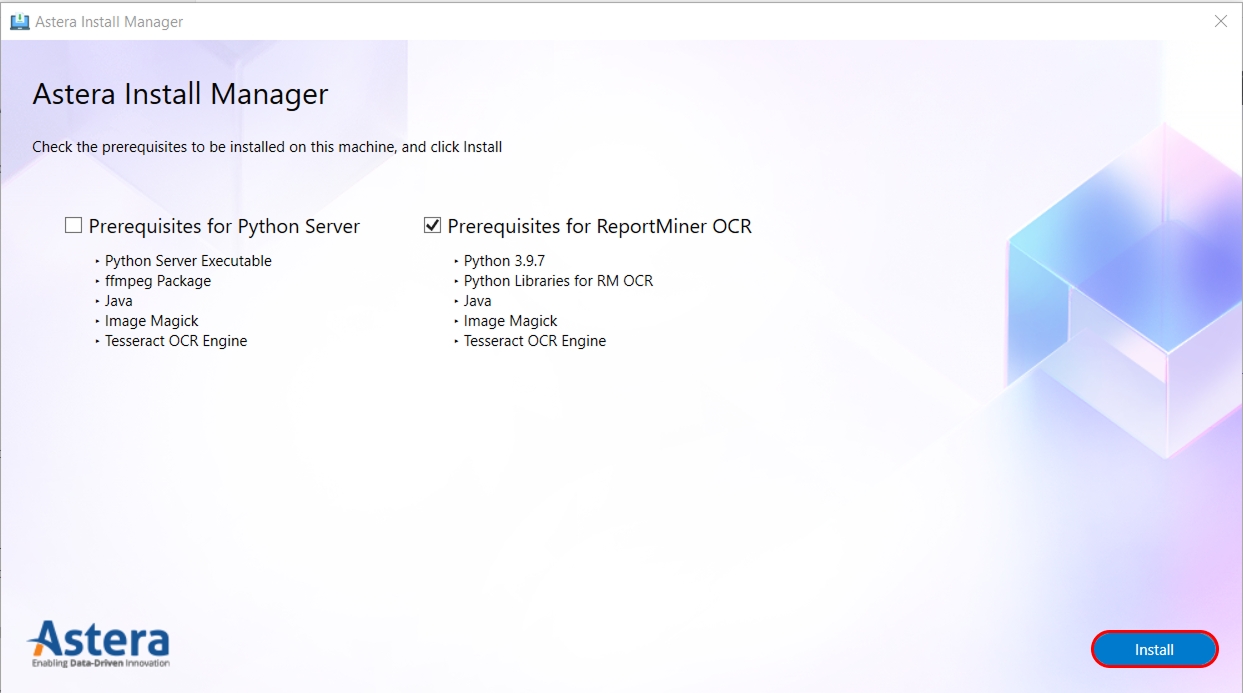







Astera Data Stack can read data from a wide range of file sources and database providers. In this article, we have compiled a list of file formats, data providers, and web-applications that are supported for use in Astera Data Stack.
Amazon Aurora
Azure SQL Server
MySQL
Amazon Aurora Postgres
Amazon RDS
Amazon Redshift
DB2
Google BigQuery
Google Cloud SQL
MariaDB
Microsoft Azure
Microsoft Dynamics CRM
MongoDB (as a Source)
MS Access
MySQL
Netezza
Oracle
Oracle ODP .Net
Oracle ODP .Net Managed
PostgreSQL
PowerBI
Salesforce (Legacy)
Salesforce Rest
SAP SQL Anywhere
SAP Hana
Snowflake
SQL Server
SQLite
Sybase
Tableau
Teradata
Vertica
In addition, Astera features an ODBC connector that uses the Open Database Connectivity (ODBC) interface by Microsoft to access data in database management systems using SQL as a standard.
COBOL
Delimited files
Fixed length files
XML/JSON
Microsoft Dynamics CRM
Microsoft Azure Blob Storage
Microsoft SharePoint
Amazon S3 Bucket Storage
AS2
FTP (File Transfer Protocol)
HDFS (Hadoop Distributed File System) n/a
SOAP (Simple Object Access Protocol)
REST (REpresentational State Transfer)
Using the SOAP and REST web services connector, you can easily connect to any data source that uses SOAP protocol or can be exposed via REST API.
Here are some applications that you can connect to using the API Client object in Astera Data Stack:
FinancialForce
Force.com Applications
Google Analytics
Google Cloud
The list is non-exhaustive.
You can also build a custom transformation or connector from the ground up quickly and easily using the Microsoft .NET APIs, and retrieve data from various other sources.
The COBOL File Source object holds the ability to fetch data from a COBOL source file if the user has the workbook file available. The data present in this file can then be processed further in the dataflow and then written to a destination of your choice.
Expand the Sources section of the Toolbox and select the COBOL Source object.
Drag-and-drop the COBOL Source object onto the dataflow. It will appear like this:
By default, the COBOL Source object is empty.
To configure it according to your requirements, right-click on the object and select Properties from the context menu.
Alternatively, you can open the properties window by double-clicking on the COBOL Source object header.
The following is the properties tab of the COBOL Source object.
File Path: Clicking on this option allows you to define a path to the data file of a COBOL File.
For our use case, we will be using a sample file with an .EBC extension.
Encoding: This drop-down option allows us to select the encoding from multiple options.
In this case, we will be using the IBM EBCDIC (US-Canada) encoding.
Record Delimiter: This allows you to select the kind of delimiter from the drop-down menu.
(Carriage Return): Moves the cursor to the beginning of the line without advancing to the next line.
(Line Feed): Moves the cursor down to the next line without returning to the beginning of the line.
<CR><LF>: Does both.
For our use case, we have selected the following.
Copybook: This option allows us to define a path to the schema file of a COBOL File.
For our use case, we are using a file with the .cpy extension.
Next, three checkboxes can be configured according to the user application. There is also a Record Filter Expression field given under these checkboxes.
Ignore Line Numbers at Start of Lines: This option is checked when the data file has incremental values. It is going to ignore line numbers at the start of lines.
Zone Decimal Sign Explicit: Controls whether there is an extra character for the minus sign of a negative integer.
Fields with COMP Usage Store Data in a Nibble: Checking this box will ignore the COMP encryption formats where the data is stored.
COMP formats range from 1-6 in COBOL Files.
Record Filter Expression: Here, we can add a filter expression that we wish to apply to the records in the COBOL File.
On previewing output, the result will be filtered according to the expression.
Once done with this configuration, click Next, and you will be taken to the next part of the properties tab.
The COBOL Source Layout window lets the user check values which have been read as an input.
Expand the Source node, and you will be able to check each of the values and records that have been selected as an input.
This gives the user data definition and field details on further expanding the nodes.
Once these values have been checked, click Next.
The Config Parameters window will now open. Here, you can further configure and define parameters for the COBOL Source Object.
Parameters can provide easier deployment of flows by eliminating hardcoded values and provide an easier way of changing multiple configurations with a simple value change.
Click Next.
Now, a new window, General Options, will appear.
Here, you can add any Comments that you wish to add. The rest of the options in this window have been disabled for this object.
Once done, click OK.
The COBOL Source object has now been configured. The extracted data can now be transformed and written to various destinations.
This concludes our discussion on the COBOL Source Object and its configuration in Astera Data Stack.
LLM Generate is a core component of Astera’s AI offerings, enabling users to retrieve responses from an LLM based on input prompts. It supports various providers like OpenAI, Llama, and custom models, and can be combined with other objects to build AI-powered solutions. The object can be used in any ETL/ELT pipeline, by sending incoming data in the prompt and using LLM responses for transformation, validation, and loading steps
This unlocks the ability to incorporate AI-driven functions into your data pipelines, such as:
The Text Convertor object enables users to extract text from various file formats, including documents, images, and audio files. It supports Optical Character Recognition (OCR) for enhanced performance in text extraction.
The Text Convertor object provides conversion for:
Document to Text: Extract text from PDFs, Doc/Docx and TXT files.
Image to Text: Use Optical Character Recognition (OCR) to extract text from images in JPG, PNG, and JPEG formats.
cd {Path to installer}cd C:\Users\muhammad.hasham\Desktop\Silent Installation Files“Application.exe” /s /v"INSTALLDIR=“path\toInstall\files”/qn""ReportMiner.exe" /s /v" INSTALLDIR=“C:\Users\muhammad.hasham\Desktop\Silent Installation Files”/qn"msiexec /i Product.msi /qn INSTALLDIR=“path\toInstall\files”msiexec /i "ReportMiner 7 64-bit.msi" /qn INSTALLDIR=“C:\Users\userName\Desktop\Silent Installation Files”"ReportMiner.exe" /s /v" /qn"msiexec /x "Product.msi" /qnmsiexec /x "ReportMiner 7 64-bit.msi" /qnExcel workbooks
PDFs
Report sources
Text files
Microsoft Message Queue
EDI formats (including X12, EDIFACT, HL7)
Amazon Aurora MySQL
Azure Data Lake Gen 2
PowerBI
Salesforce
SAP
Tableau
SCP (Secure Copy Protocol)
SFTP (Secure File Transfer Protocol)
Google Drive
Hubspot
IBM DB2 Warehouse
Microsoft Azure
OneDrive
Oracle Cloud
Oracle Eloqua
Oracle Sales Cloud
Oracle Service Cloud
Salesforce Lightning
ServiceMAX
SugarCRM
Veeva CRM
















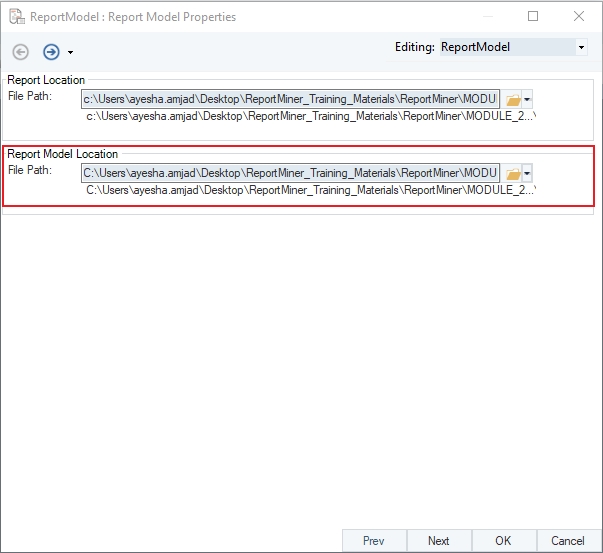
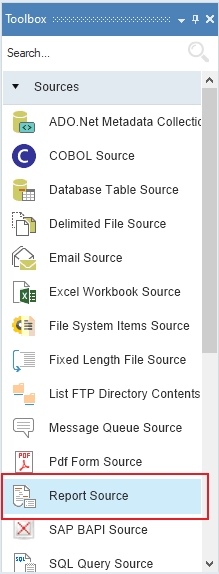
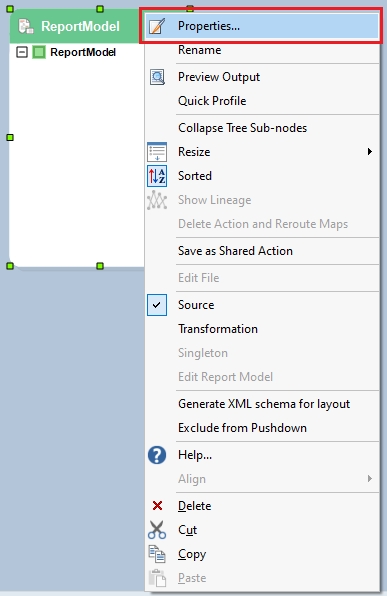


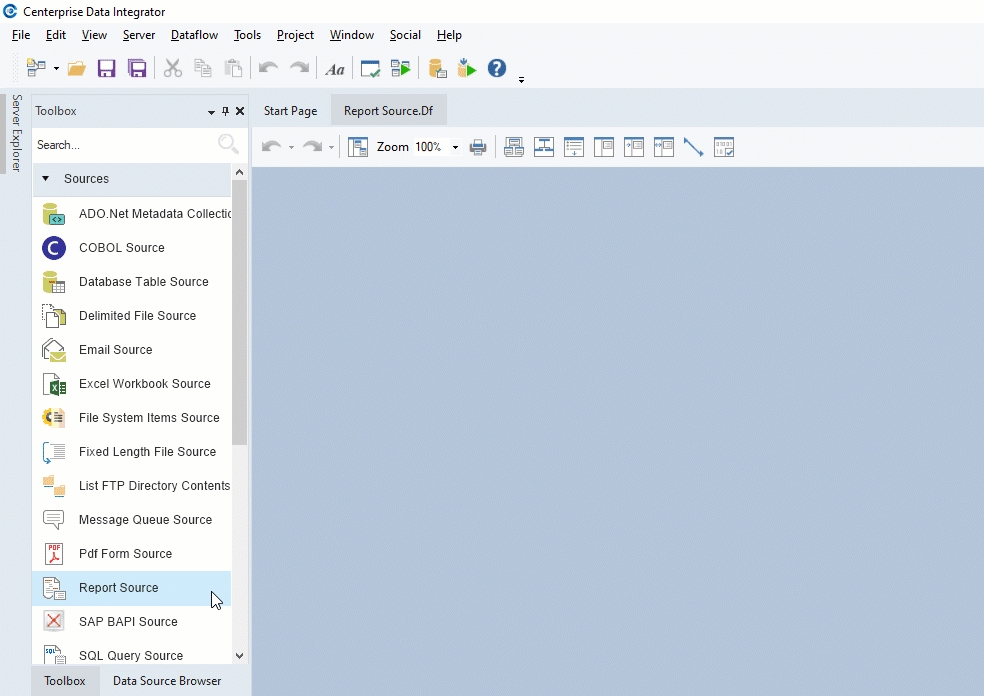



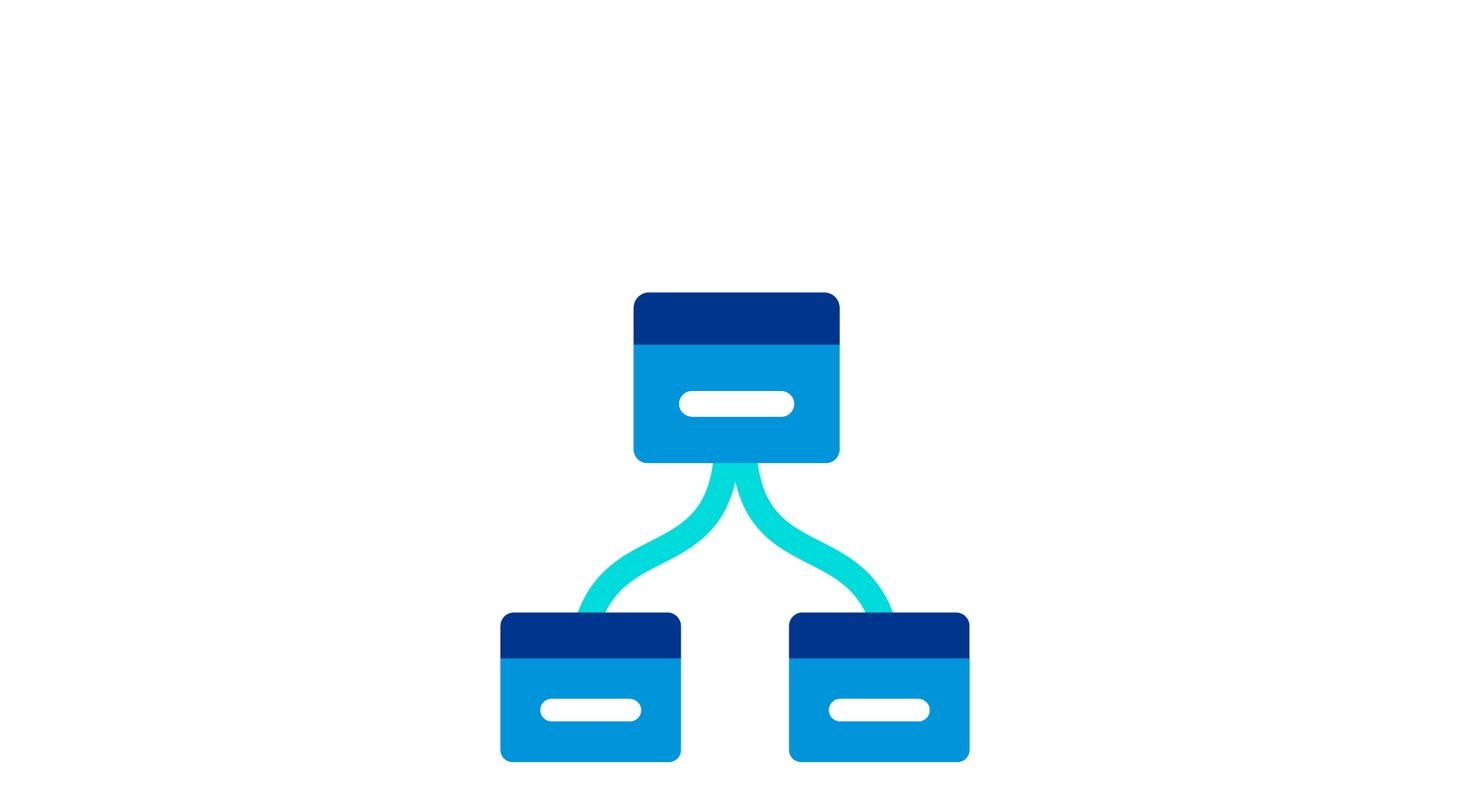

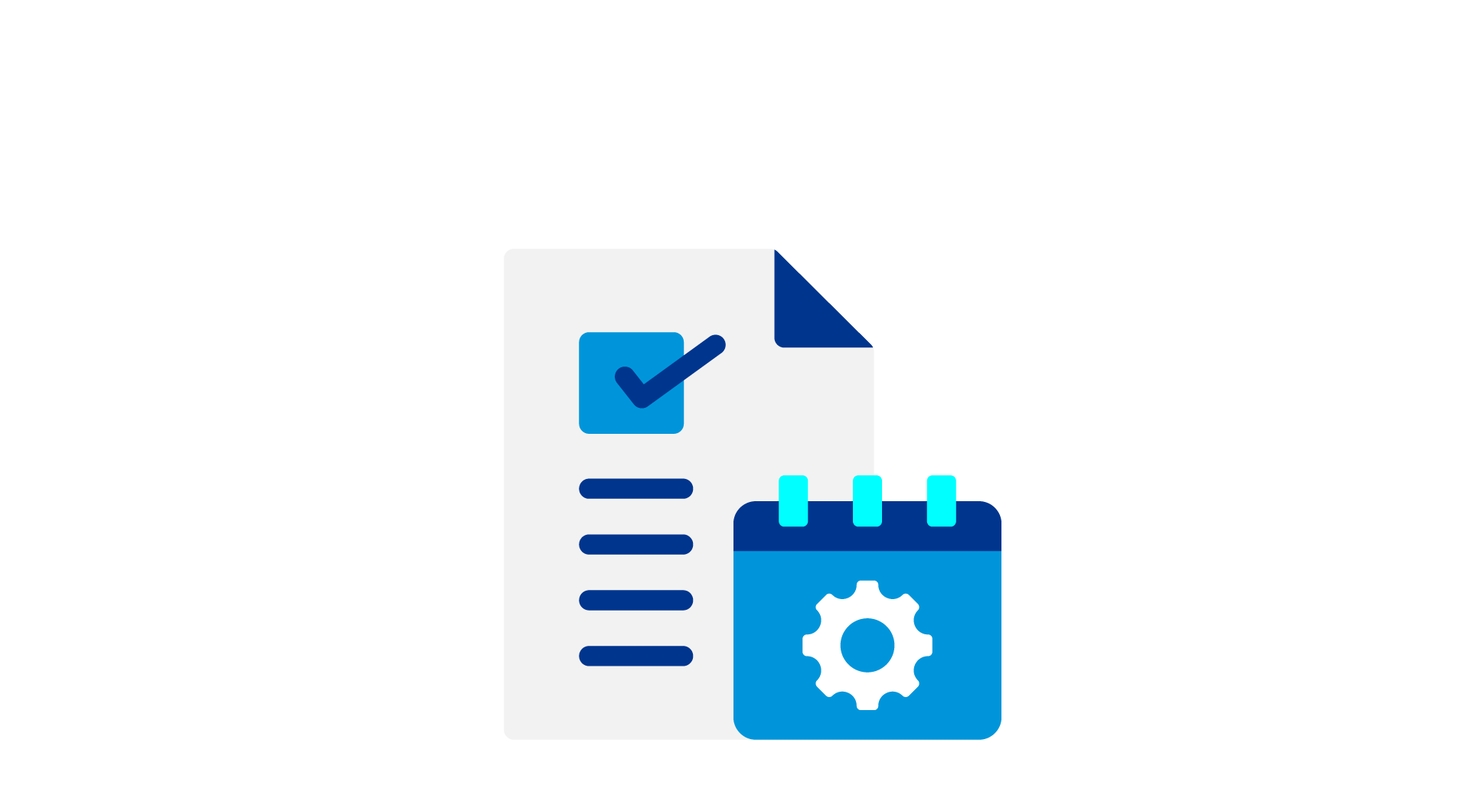

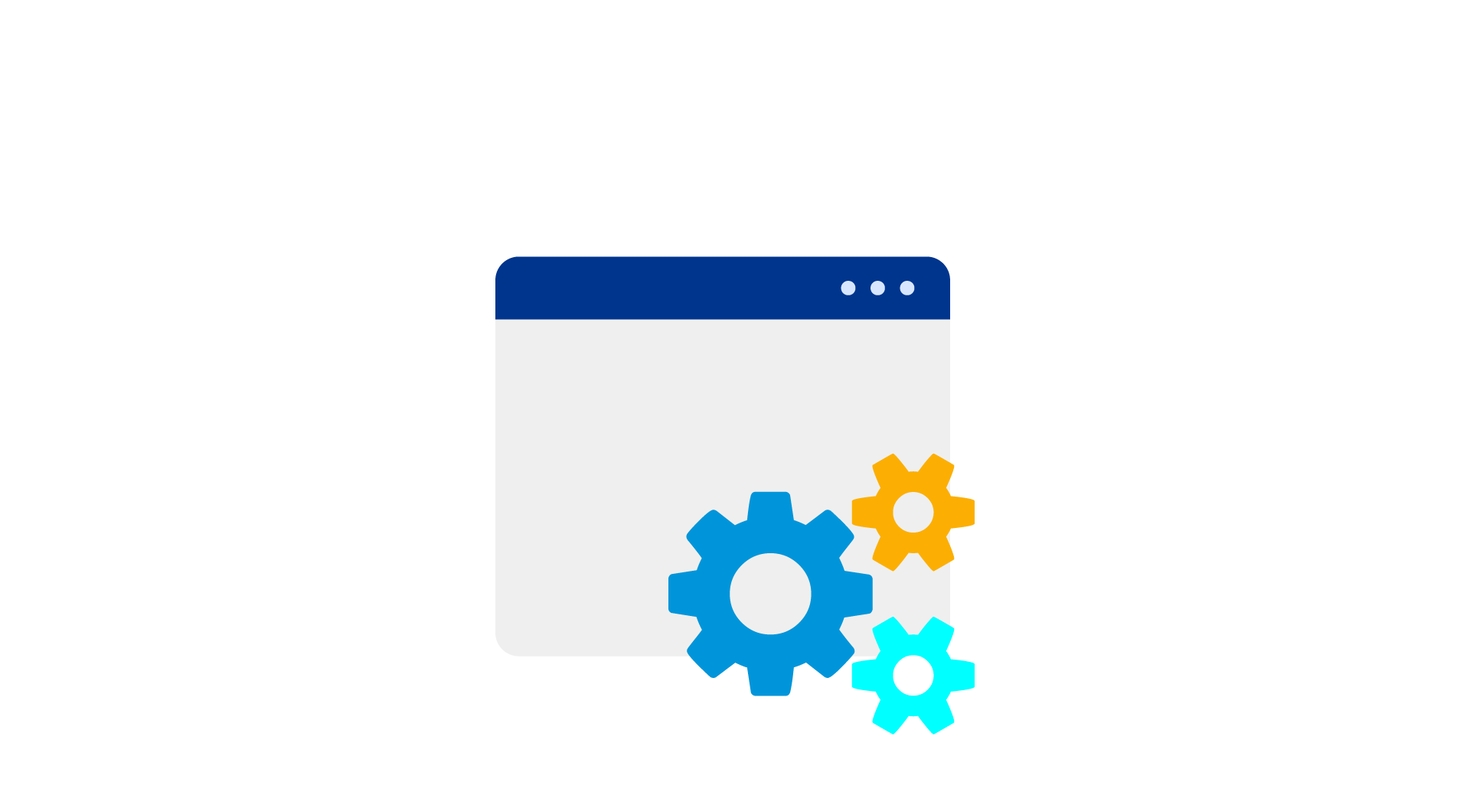
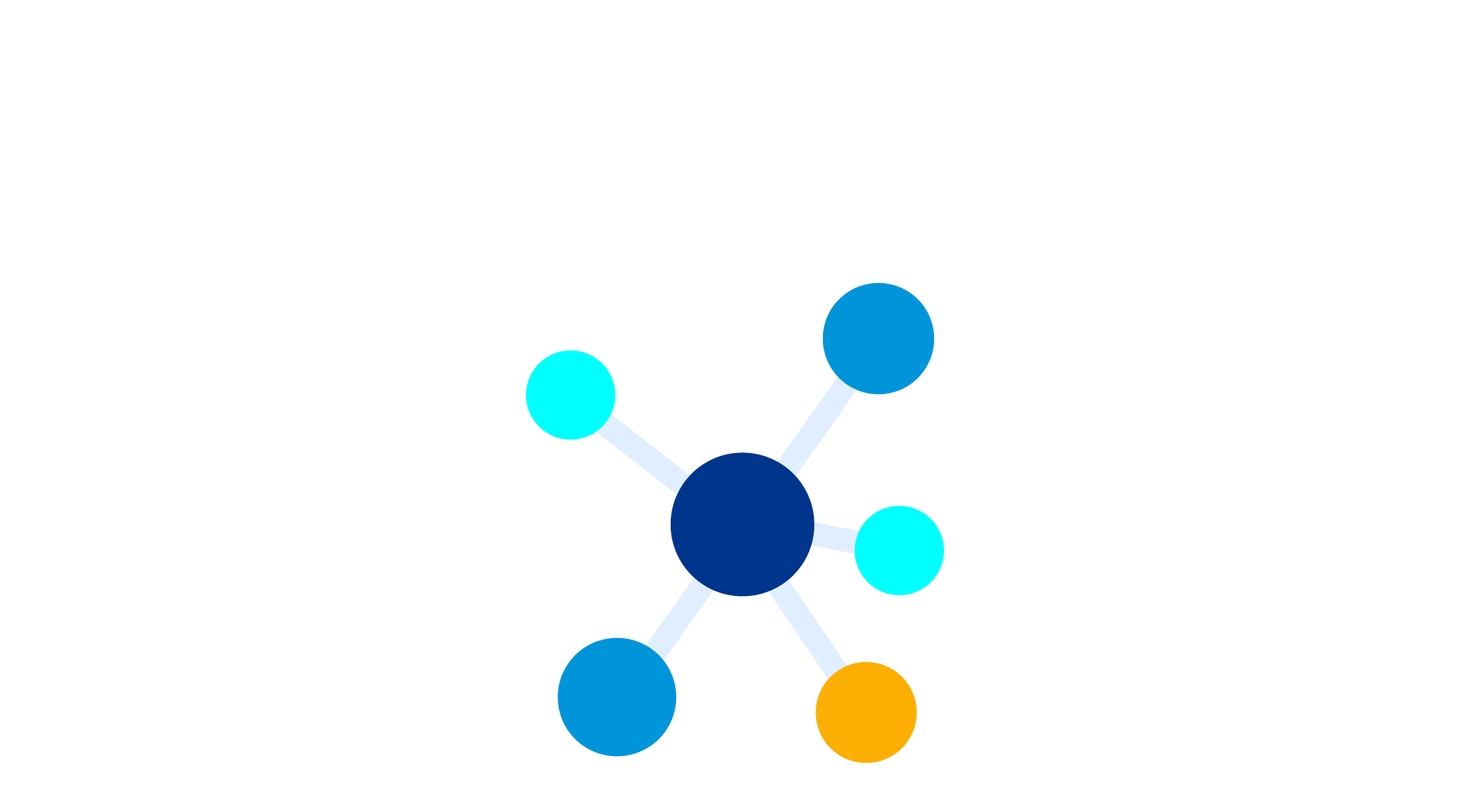


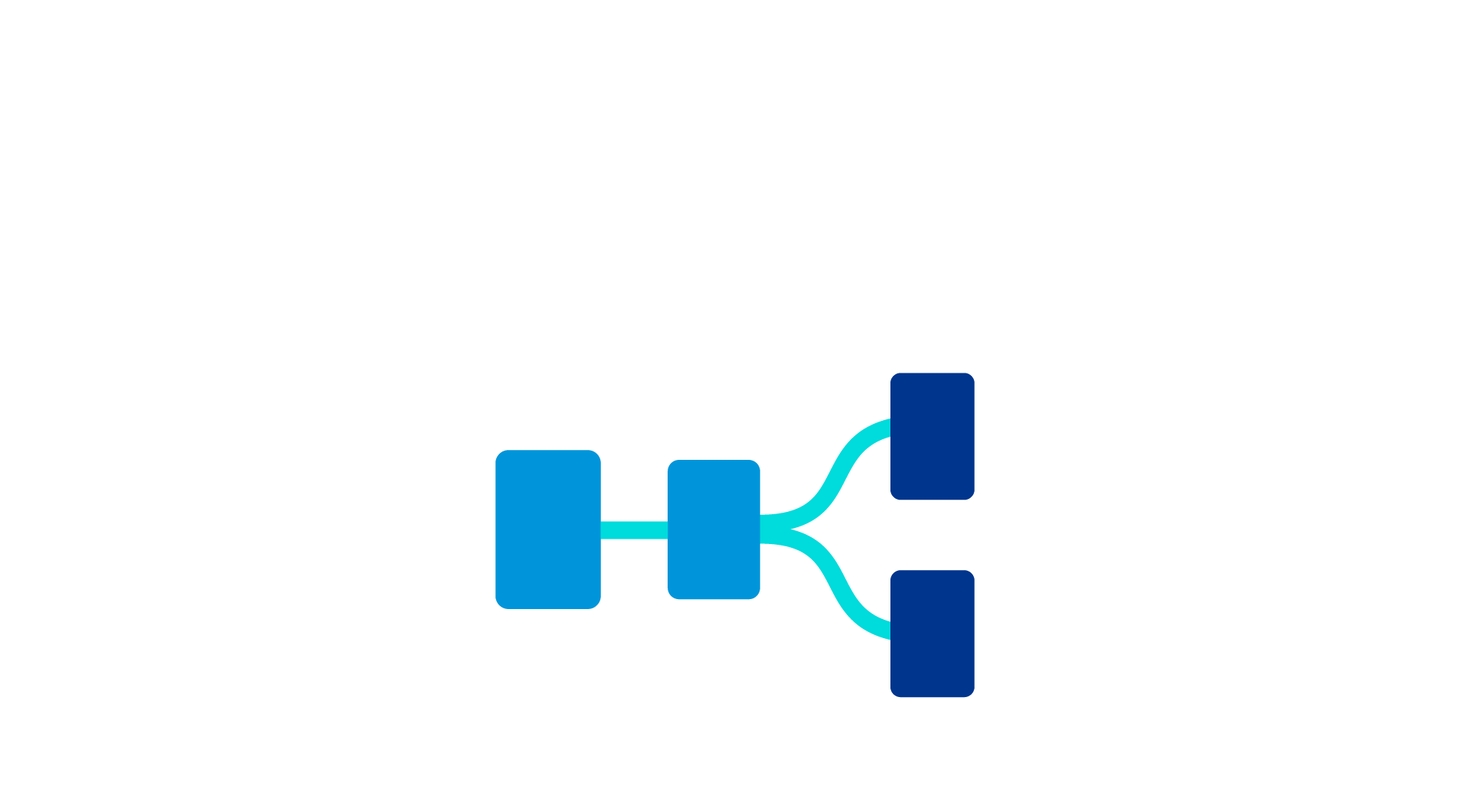

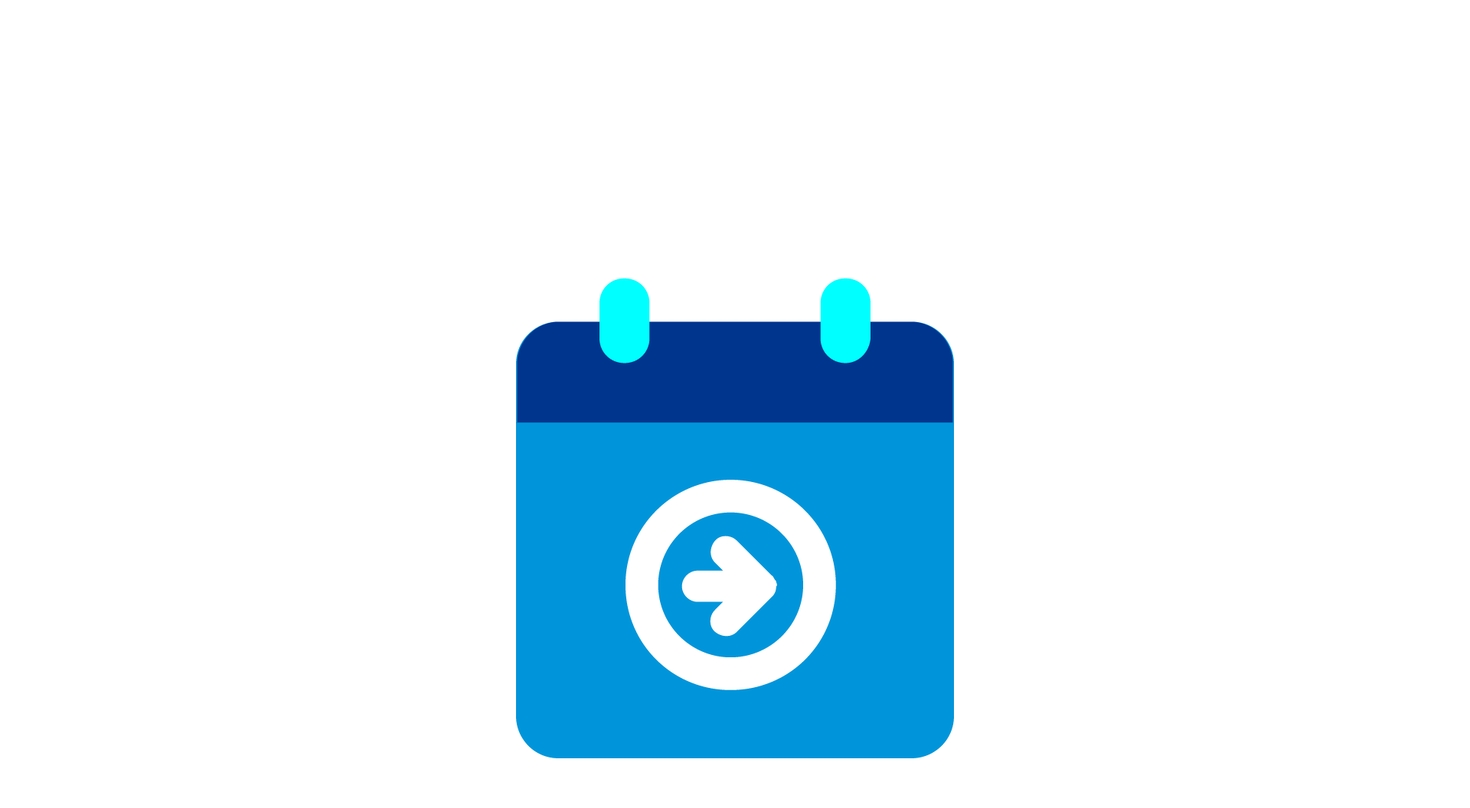

Record Delimiter: Allows you to select the delimiter for the records in the fields. The choices available are carriage-return and line-feed combination, carriage-return and line-feed. You can also type the record delimiter of your choice instead of choosing the available options.
Click Apply to save settings or Cancel to discard.
Click Execute Dataprep Recipe to generate the file.
All: Logs all messages.
Errors: Logs only error messages.
Warnings: Logs only warnings.
Error and Warnings: Logs both errors and warnings.
Stop Logging After: Specify the number of records after which logging should stop.
Click Apply to save settings or Cancel to discard.
Click Execute Dataprep Recipe to generate the file.















Template-less data extraction
Natural language to SQL Generation
Data Summarization
Data Augmentation
LLM Generate can be used in countless use cases to generate unique applications. Here, we will cover a simple use case, where LLM Generate will be used to classify support tickets.
The source is an Excel spreadsheet with customer support ticket data.
We want to add an additional category field to the data, which will contain one of the following tags based on the content of the customer_message field:
Billing
Technical Issue
Account Management
Delivery
Product Inquiry
This use case requires natural language understanding of the customer message to assign it a relevant category, making it an ideal use case for LLM Generate.
Drag-and-drop an Excel Workbook Source object from the toolbox to the dataflow as our source data is stored in an Excel file.
Now we can use the customer_message field from the Excel Source and provide it to the LLM Generate object as input, along with a prompt containing instructions that will populate the category field with a category. To do this, let's drag-and-drop the LLM Generate object from the AI Section of the toolbox to the dataflow designer.
To use an LLM Generate object, we need to map input field(s) and define a prompt. In the Output node we get the response of the LLM model, which we can map to further objects in our data pipeline.
Other configurations of the LLM Generate are set as default but may be adjusted if required by the use case.
As the first step, we will auto-map our input fields to the LLM Generate object’s input node. We can map any number of input fields as required by our use case. These input fields may or may not be used inside the prompt. Any fields not used in the prompt will still pass through the object and can be used unchanged later in the flow.
The next step is to write ta prompt that serves as instructions for the LLM to generate the desired output. Right-click on the LLM Generate object and select Properties, then click the Add Prompt button at the top of the LLM Template window to add a prompt.
A Prompt node will appear containing the Properties and Text fields.
Prompt properties are set by default. We can click the Properties field to view or change these settings. The default configuration is as shown in the image below:
Let’s quickly go over what each of these options means:
Run Strategy Type: Defines the execution of the object based on the input.
Once Per Item means the object runs once for each input record. Use this when the input has multiple records and LLM Generate is required to execute for each one.
Chain means the object uses the output of one prompt as input for the next within the LLM Generate object. Use {LLM.LastPrompt.Result} to use the previous prompt's output, and {LLM.LastPrompt.Text} to use the previous prompts text itself.
Conditional Expression: Specify the condition under which this prompt should be used. Useful when you want to select one prompt from several based on some criteria.
For our use case, we will be using default settings of the Prompt Properties.
Prompt text allows us to write a prompt consisting of instructions, which is sent to the LLM model to get the response in the output.
In the prompt, we can include the contents of the input fields using the syntax:
{Input.field}
In the above syntax, we can provide the input field name in place of field.
We can also use functions to customize our prompt by clicking the functions icon.
For instance, the following syntax will resolve to the first 1000 characters of the input field value in the prompt:
{Left(Input.field,1000)}
For our use case, we will write a prompt that instructs the LLM to classify the customer message into one of the categories we have provided in the prompt.
Click Next to move to the next screen. This is the LLM Generate: Properties screen.
Let's see the options provided here:
AI provider: Select your desired AI provider here (e.g. OpenAI, Anthropic, Llama)
Shared Connection: Select the Shared API Connection you have configured with API key of the provider.
Model Type/Model: Select the model type (if applicable) and choose the specific model you want to use.
Ai SDK Options allows us to fine-tune the output or behavior of the model. We will discuss these options in detail in the next article.
For our primary use case, of support ticket classification, we are using OpenAI as our provider, gpt-4o as our model and default configurations for other options on the Properties screen to generate the result.
Now, we’ll click OK to complete the configuration of the LLM Generate object.
We can right-click on the LLM Generate object and click Preview Output to preview the LLM response and confirm that we are getting the desired result. We can see that the LLM response gives the category of the support ticket based on the customer message.
We can now use the LLM’s result in other objects to transform, validate or just write it. Let’s say we want to write the enriched support ticket data to a CSV destination.
To do this, let's drag-and-drop a Delimited Destination from the toolbox.
Next, let's map the original fields to the Delimited Destination object and create a new field called Category. The LLM’s Result field can be mapped to this Category field.
Our dataflow is now configured; we can preview the output of our Delimited Destination to see what the final support ticket data will look like.
We can also run this dataflow to create the delimited file containing our enriched support ticket data.
The flexibility of LLM Generate to provide an input and give natural language commands on how to manipulate the input to generate the output makes it a dynamic universal transformation object in a data pipeline. There can be countless use cases for LLM Generate. We will cover some of these in the next articles.
Markdown to Text: Extract text from MD, MARKDOWN, MKD, MKDN, MDWN, and MDOWN files.
Excel to Text: Extract text from XLS, XLSX, and CSV files.
In this guide, we will cover how to:
To get a Text Converter object, go to Toolbox > Sources > Text Converter. If you are unable to see the Toolbox, go to View > Toolbox or press Ctrl + Alt + X.
Drag-and-drop the Text Convertor object onto the designer.
Configure the object, by right-clicking on its header and select Properties from the context menu.
A dialog box will open.
This is where you can configure the properties for the Text Converter object.
Specify the File Path to the scanned PDF/Image file that needs to be converted.
Next, define an Output Directory where the converted text will be stored in another file. (optional)
Configure the PDF Converter Options.
Pdf Password: Provide the password if the pdf file is password protected.
Pages To Read: Specify which pages need to be read. Leaving this empty means read all pages.
Text Converter Model: Select from the available models:
Google OCR
TesseractOCR (Beta)
PaddleOCR (Beta)
TextractOCR (Beta)
Resolution: There are three types of resolutions to choose from: Auto, High, Low, and Medium. To learn more on which resolution would suit your needs best, click here.
Force OCR: This option applies OCR to both digital and scanned files, regardless of their format. When unchecked (the default setting), the system first determines whether an incoming file is scanned or an image. OCR is applied only if the file is detected as scanned or image based.
Split Output: Check this box to split the text for each page into a separate output record.
Once you have configured the Text Convertor object, click OK.
Right-click on the Text Convertor object’s header and select Preview Output from the context menu.
A Data Preview window will open and will show you the preview of the extracted text.
Specify the File Path to the Excel file that needs to be converted.
Next, configure the Excel Converter Options
Work Sheet Name: Specify the name of your worksheet that you want to read data from.
Space Between Excel Columns: Specify the space between the Excel Columns.
Blank Lines Before End of File: Specify the number of blank lines at which the file ends.
Tab Size: Specify the tab spacing to be used in the extracted text.
Once you have configured the Text Convertor object, click OK.
Right-click on the Text Convertor object’s header and select Preview Output from the context menu.
A Data Preview window will open, displaying the extracted text from the Excel file.
We can also use the Text Converter object as a transformation. To do so, right click on the header of the object and select Transformation.
You’ll see the color of the header changing from green to purple. Depicting its transition from a source to transformation. You can also notice an input node being added along with the output node.
You can now provide the input from any source object to the Text Converter object in your dataflow directly.
This concludes working with the Text Converter object in Astera Data Stack.
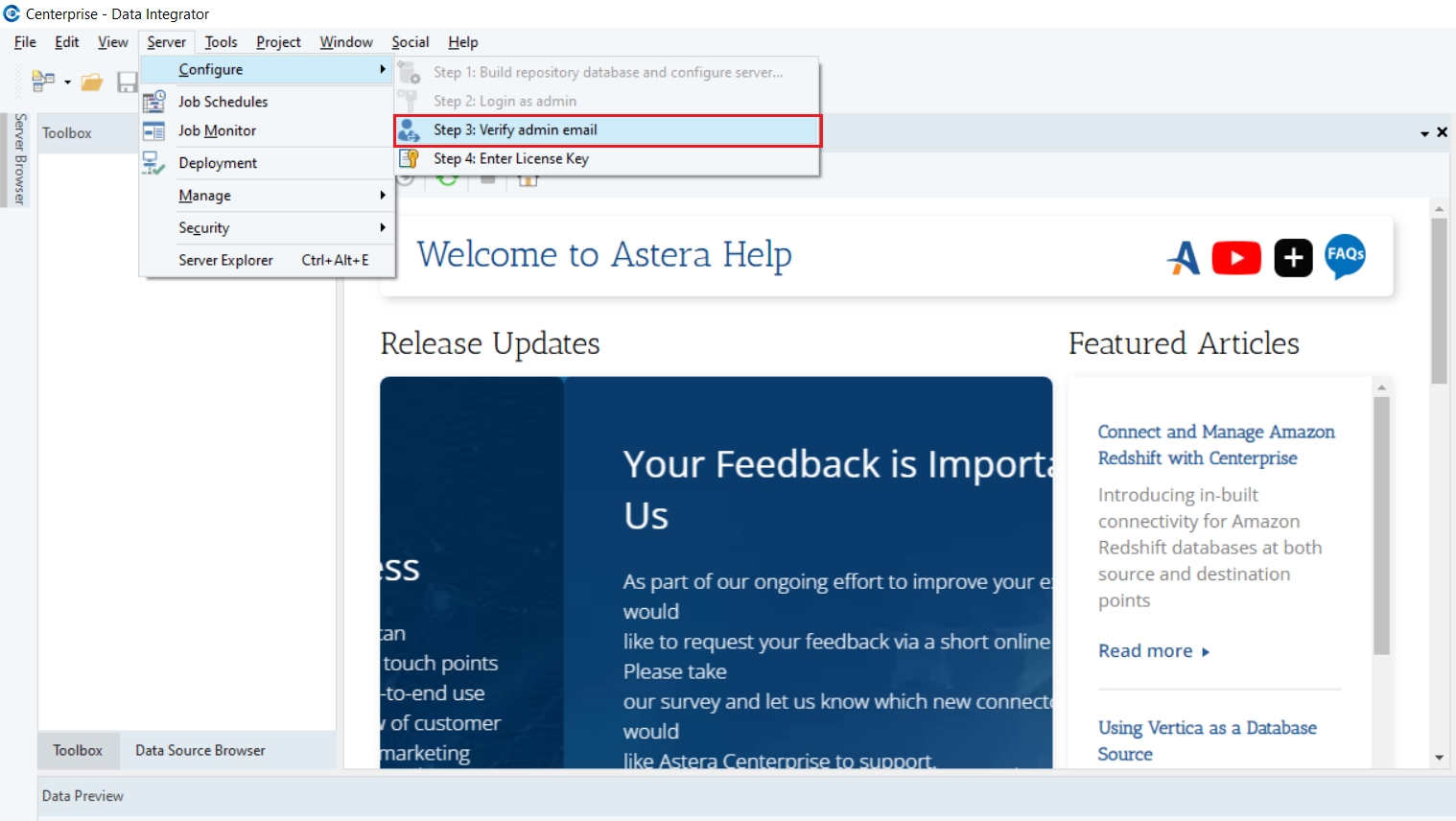

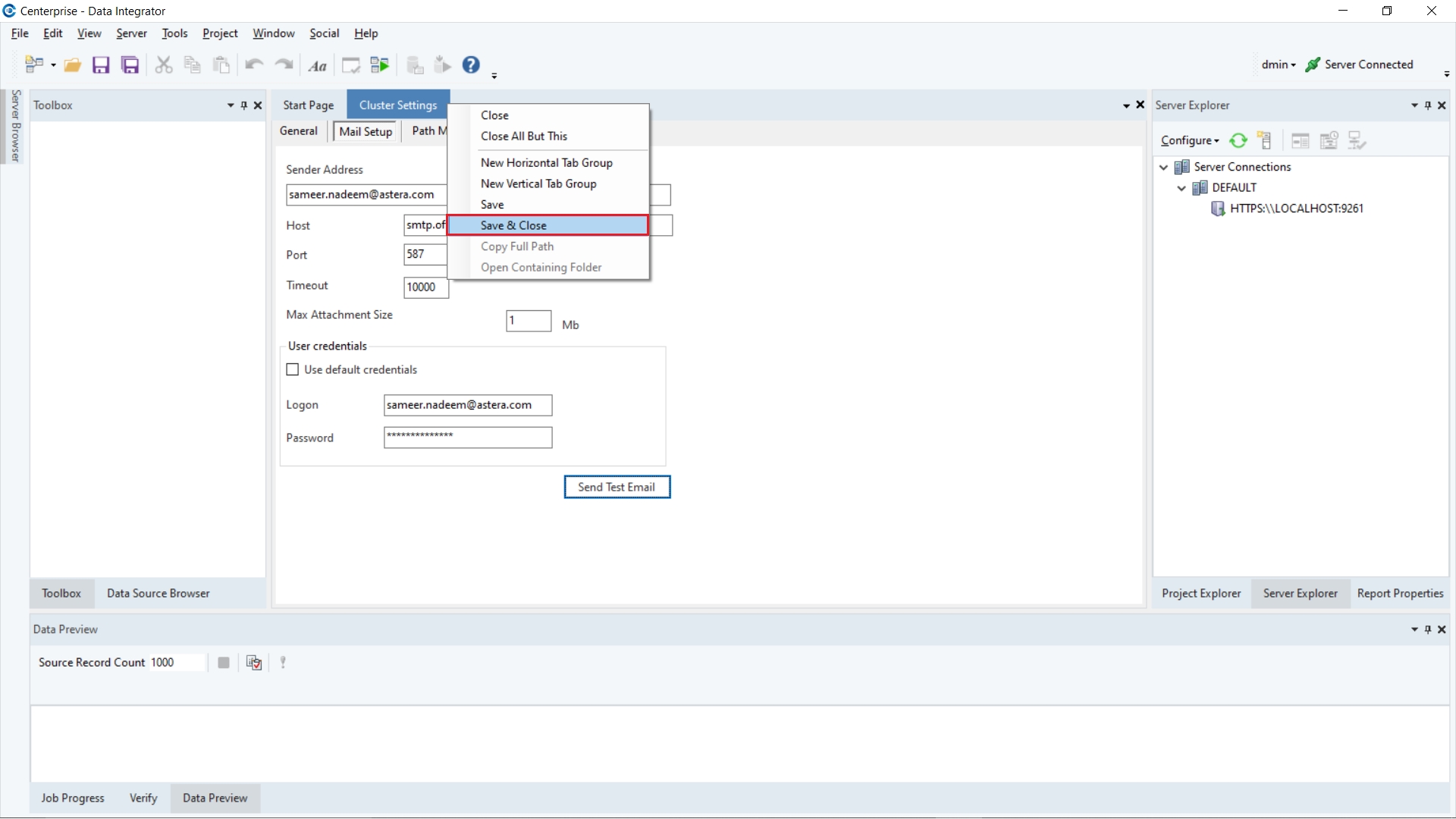
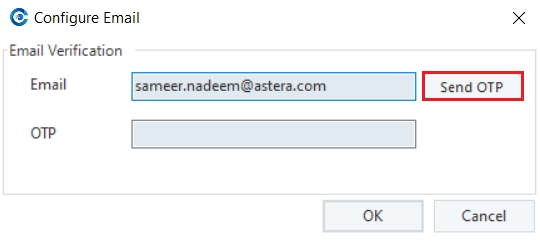


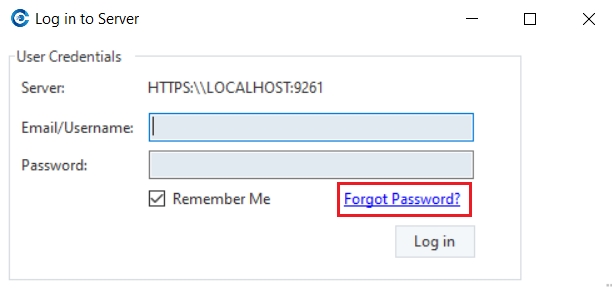
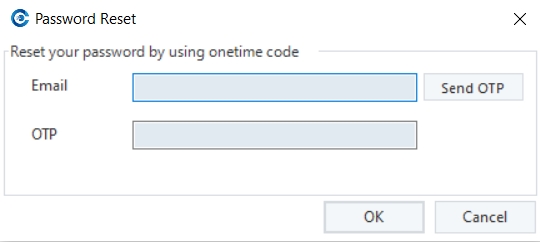

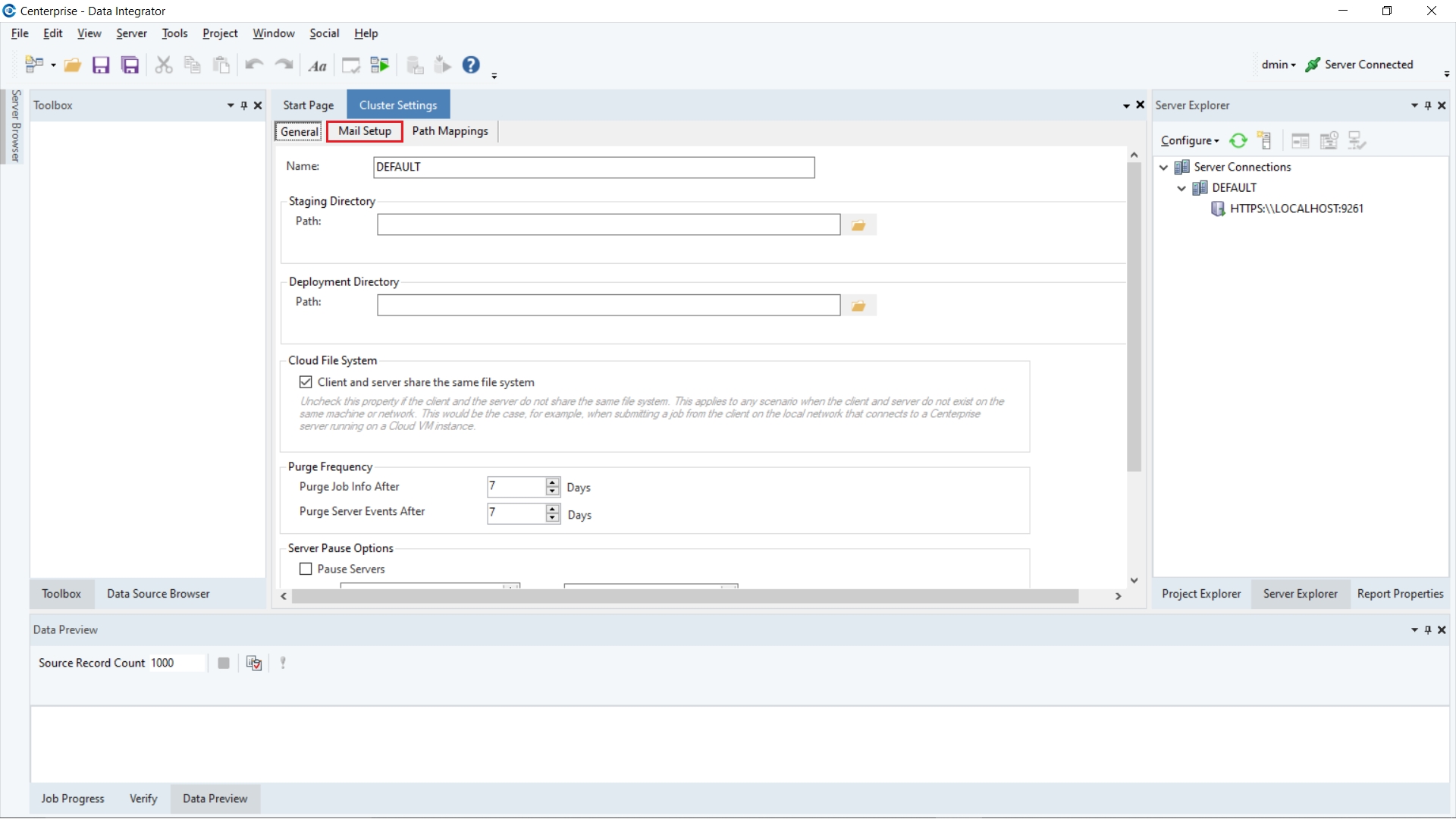
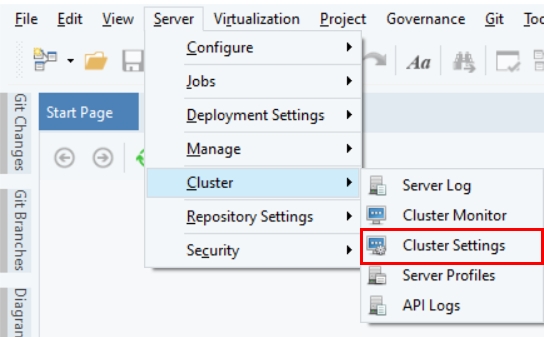
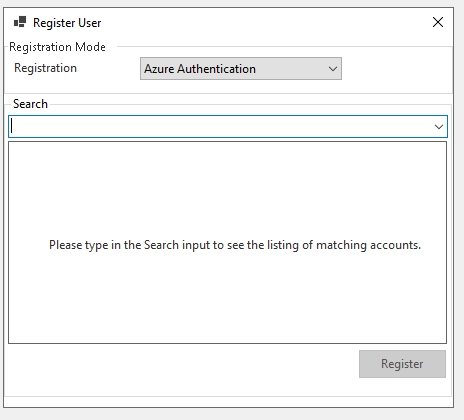
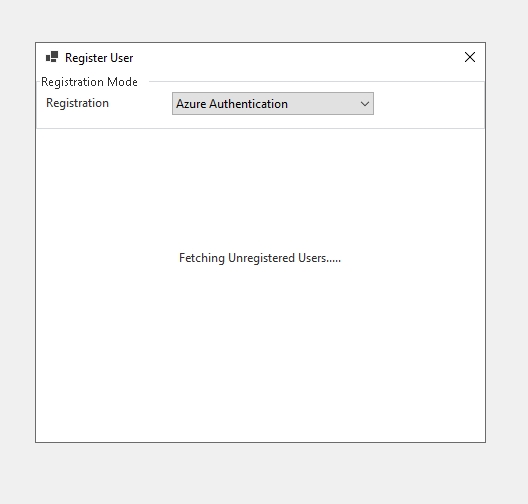
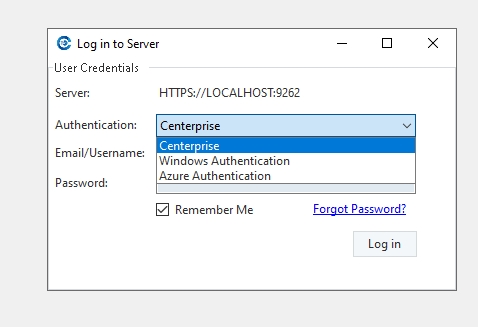


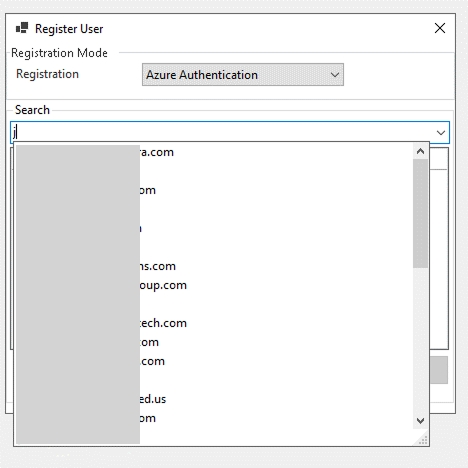

The File System Items Source in Astera Data Stack is used to provide metadata information to a task in a dataflow or workflow. In a dataflow, it can be used in conjunction with a source object, especially in cases where you want to process multiple files through the transformation and loading process.
In a workflow, the File System Items Source object can be used to provide input paths to a subsequent object such as a RunDataflow task.
Let’s see how it works in a dataflow.



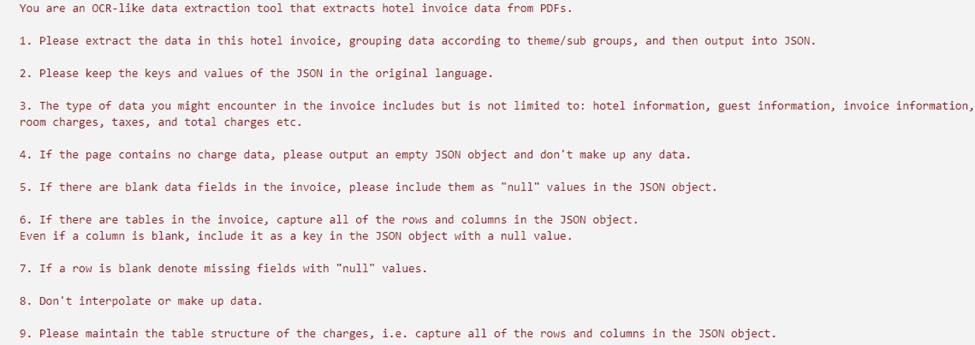
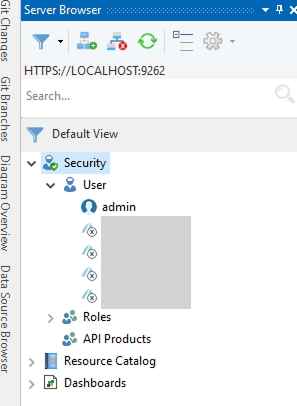
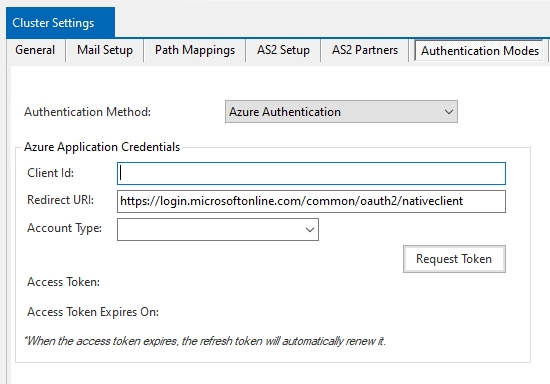
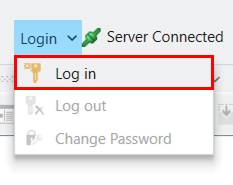
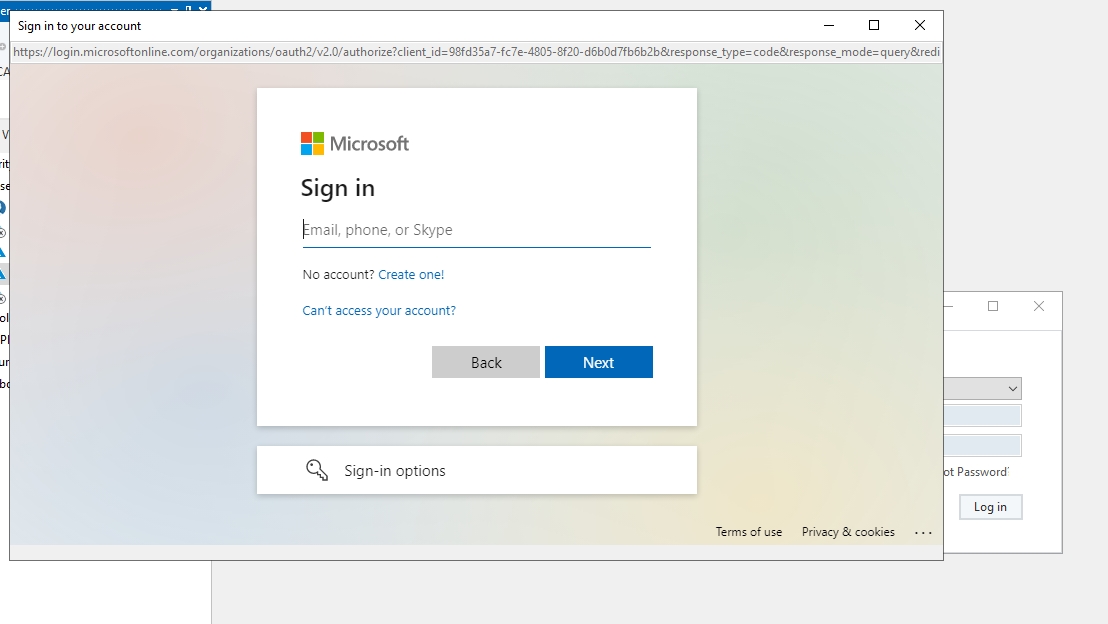
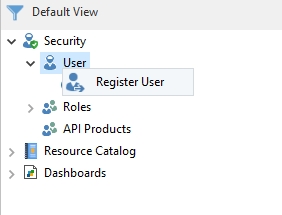
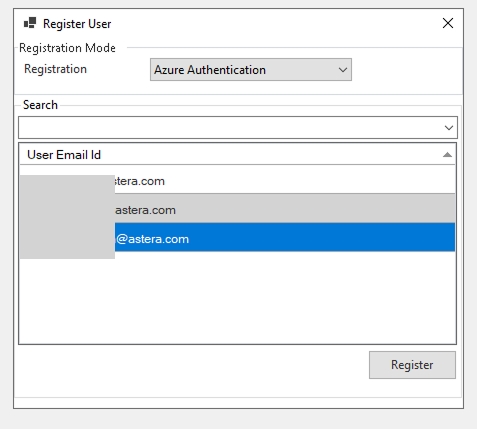
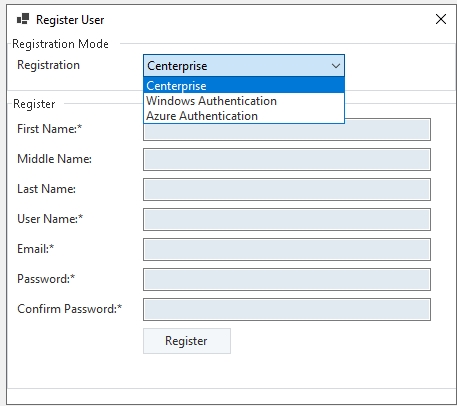


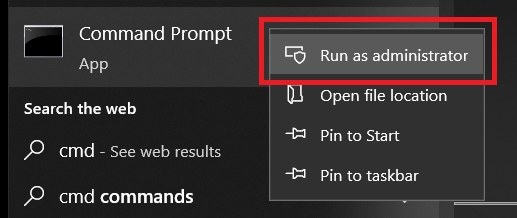



Here we have a dataflow that we want to run on multiple source files that contain Customer_Data from a fictitious organization. We are going to use the source object as a transformation and provide the location of the source files using a File System Items Source object. The File System Items Source will provide the path to the location where our source files reside and the source will object pick the source files from that location, one by one, and pass it on for further processing in the dataflow.
Here, we want to sort the data, filter out records of customers from Germany and write the filtered records into a database table. The source data is stored in delimited (.csv) files.
First, change the source object into a Transformation object. This is because the data is stored in multiple delimited files and we want to process all of them in the dataflow. For this, right-click on the source object’s header and click Transformation in the context menu.
You can see that the color of the source object has changed from green to purple which indicates that the source object has been changed into a transformation object.
Notice that the source object now has two nodes: Input and Output. The Input node has an input mapping port which means that it can take the path to the source file from another object.
Now we will use a File System Items Source object to provide a path to Customer_Data Transformation object. Go to the Sources section in the Toolbox and drag-and-drop the File System Items Source object onto the designer.
If you look at the File System Items Source object, you can see that the layout is pre-populated with fields such as FileName, FileNameWithoutExtension, Extension, FullPAth, Directory, ReadOnly, Size, and other attributes of the files.
To configure the properties of the File System Items Source object, right-click on the File System Items Source object’s header and go to Properties.
This will open the File System Properties window.
The first thing you need to do is point the Path to the directory or folder where your source files reside.
You can see a couple of other options on this screen:
Filter: If your specified source location contains multiple files in different formats, you can use this option to filter and read files in the specified format. For instance, our source folder contains multiple PDF, .txt. doc, .xls, and .csv files, so we will write “*.csv” in the Filter field to filter and read delimited files only.
Include items in subdirectories: Check this option if you want to process files present in the sub-directories
Include Entries for Directories: Check this option if you want to include all items in the specified directory
Once you have specified the Path and other options, click OK.
Now right-click on the File System Items Source object’s header and select Preview Output.
You can see that the File System Items Source object has filtered out delimited files from the specified location and has returned the metadata in the output. You can see the FileName, FileNameWithoutExtension, Extension, FullPath, Directory, and other attributes such as whether the file is ReadOnly, FileSize, LastAccessed, and other details in the output.
Now let’s start mapping. Map the FullPath field from the File System Items Source object to the FullPath field under the Input node in the Customer_Data Transformation object.
Once mapped, when we run the dataflow, the File System Items Source will pass the path to the source files, one by one, to the Customer_Data Transformation object. The Customer_Data Transformation object will read the data from the source file and pass it to the subsequent transformation object to be processed further in the dataflow.
In a workflow, the File System Items Source object can be used to provide input paths to a subsequent task such as a RunDataflow task. Let’s see how this works.
We want to design a workflow to orchestrate the process of extracting customer data stored in delimited files, sorting that data, filtering out records of customers from Germany and loading the filtered records in a database table.
We have already designed a dataflow for the process and have called this dataflow in our workflow using the RunDataflow task object.
We have multiple source files that we want to process in this dataflow. So, we will use a File System Items Source object to provide the path to our source files to the RunDataFlow task. For this, go to the Sources section in the Toolbox and drag-and-drop the File System Items Source onto the designer.
If you look at the File System Items Source, you can see that the layout is pre-populated with fields such as FileName, FileNameWithoutExtension, Extension, FullPAth, Directory, ReadOnly, Size, and other attributes of the files. Also, there is this small blue icon with the letter ‘s’, this indicates that the object is set to run in Singleton mode.
By default, all objects in a workflow are set to execute in Singleton mode. However, since we have multiple files to process in the dataflow, we will set the File System Items Source object to run in loop. For this, right-click on the File System Items Source and click Loop in the context menu.
You can see that the color of the object has changed to purple, and it now has this purple icon over the header which denotes the loop function.
It also has these two mapping ports on the header to map the File System Items Source object to the subsequent action in the workflow. Let’s map it to the RunDataflowTask.
To configure the properties of the File System Items Source, right-click on the File System Item Source object’s header and go to Properties.
This will open the File System Items Source Properties window.
The first thing you need to do is point the Path to the directory or folder where your source files reside.
You can see a couple of other options on this window:
Filter: If your specified source location contains multiple files in different formats, you can use this option to filter and read files in the specified format. For instance, our source folder contains multiple PDF, .txt. doc, .xls, and .csv files, so we will write “*.csv” in the Filter field to filter and read delimited files only.
Include items in subdirectories: Check this option if you want to process files present in the sub-directories.
Include Entries for Directories: Check this option if you want to include all items in the specified directory.
Once you have specified the Path and other options, click OK.
Now right-click on the File System Items Source object’s header and click Preview Output.
You can see that the File System Items Source object has filtered out delimited files from the specified location and has returned the metadata in the output. You can see the FileName, FileNameWithoutExtension, Extension, FullPath, Directory, and other attributes such as whether the file is ReadOnly, FileSize, LastAccessed, and other details in the output.
Now let’s start mapping. Map the FullPath field from the File System Items Source object to the FilePath variable in the RunDataflow task.
Once mapped, upon running the dataflow, the File System Items Source object will pass the path to the source files, one by one, to the RunDataflow task. In other words, the File System Items Source acts as a driver to provide source files to the RunDataflow tasks, which will then process them in the dataflow.
When the File System Items Source is set to run in a loop, the dataflow will run for ‘n’ number of times; where ‘n’ = the number of files passed by the File System Items Source to the RunDataflow task. For instance, you can see that we have six source files in the specified folder. The RunDataflow task object will pass these six files one by one to the RunDataflow task to be processed in the dataflow.
This concludes using the File System Items Source object in Astera Data Stack.
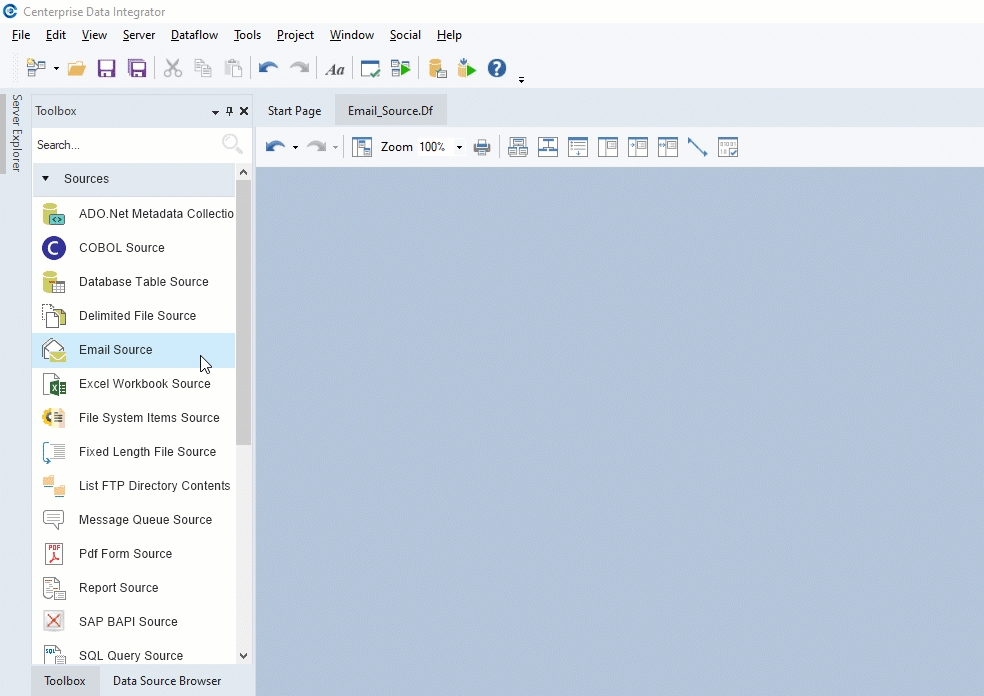
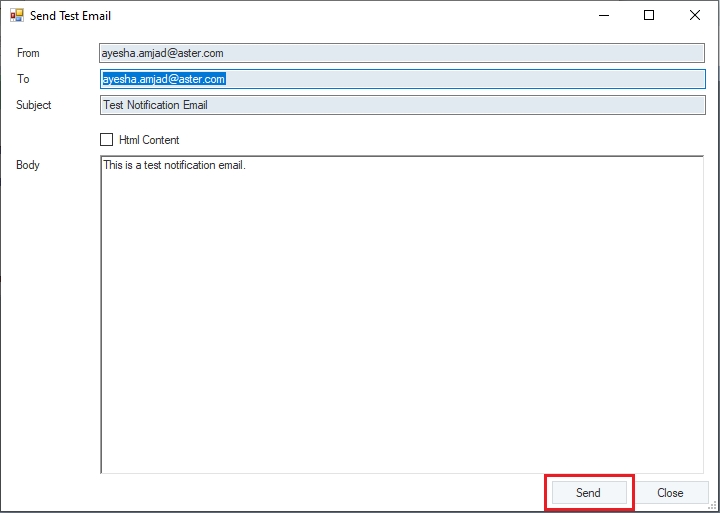

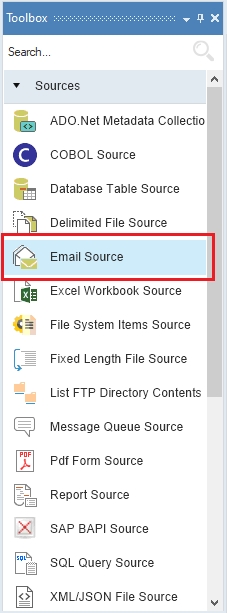
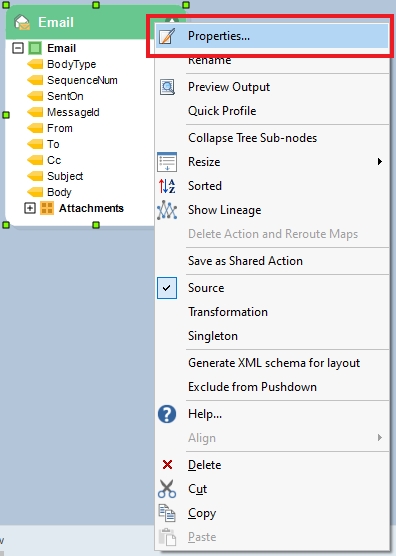
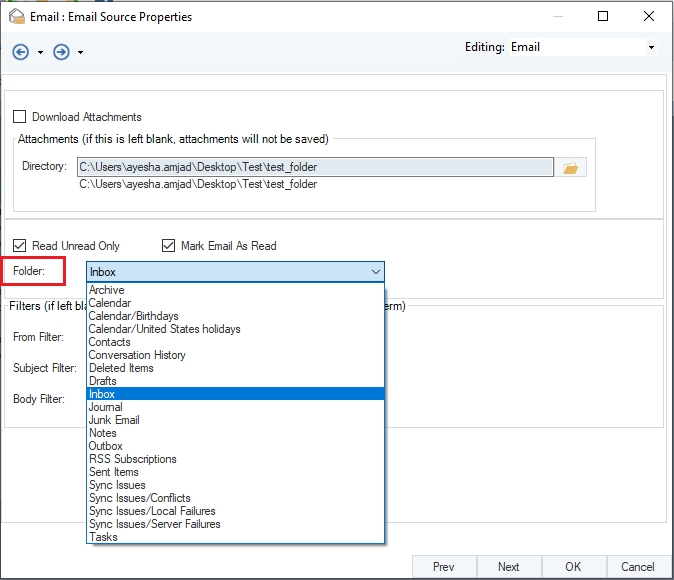
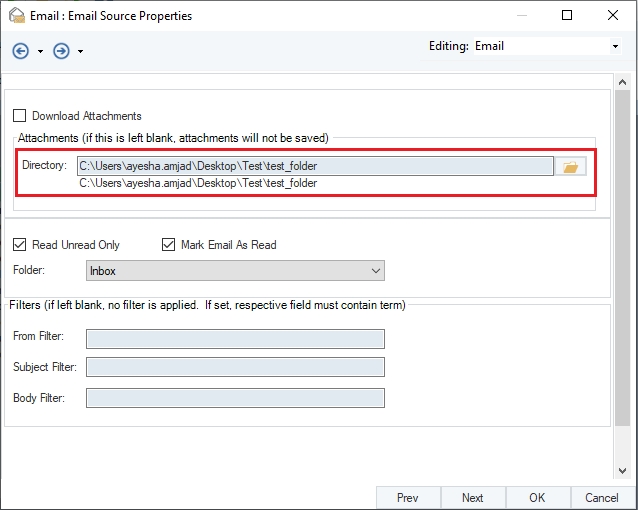
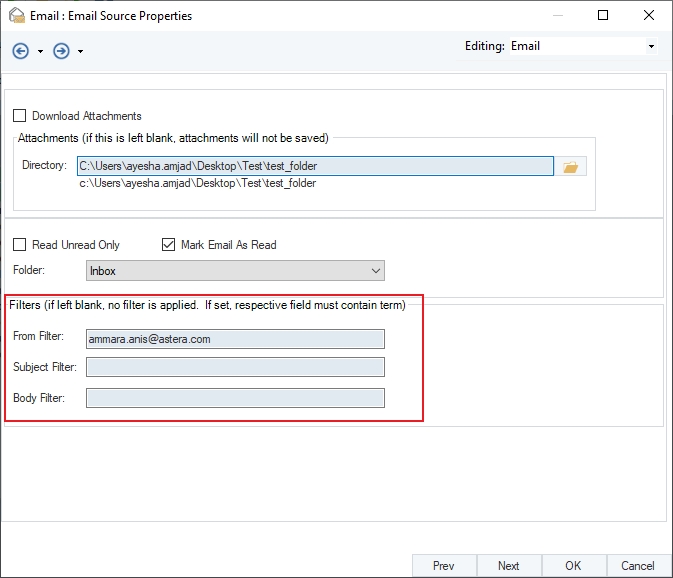

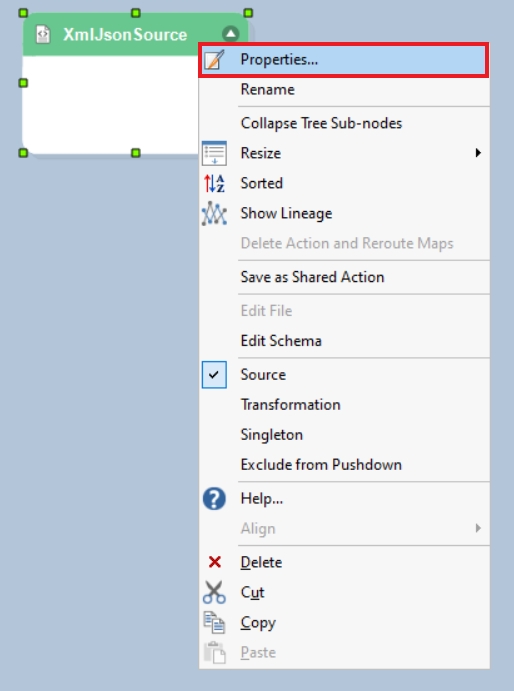
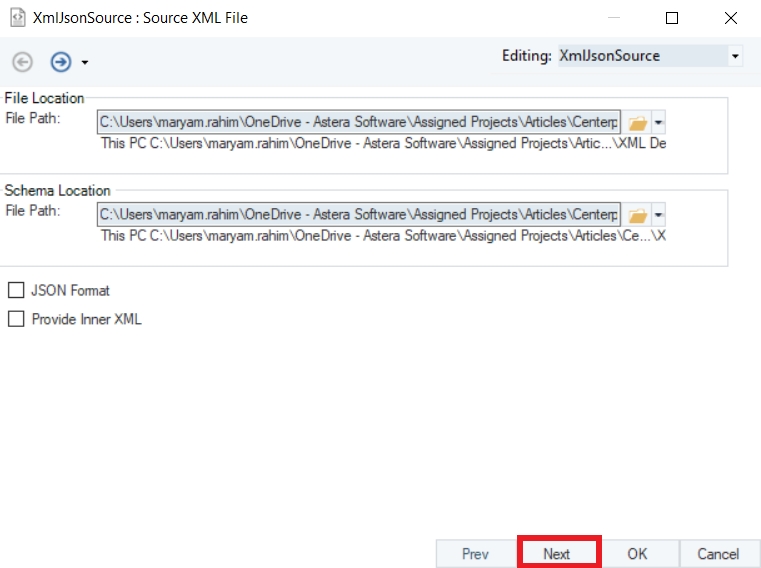
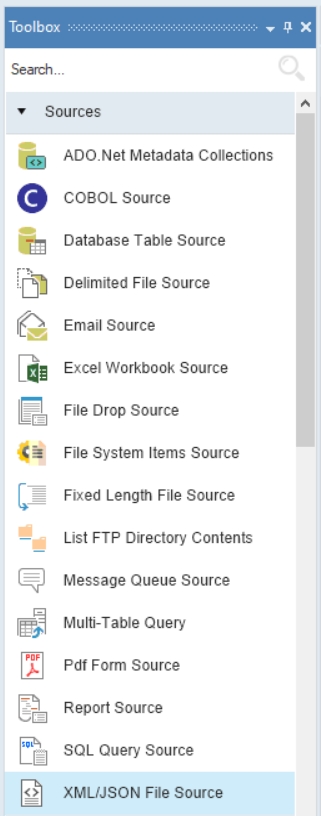
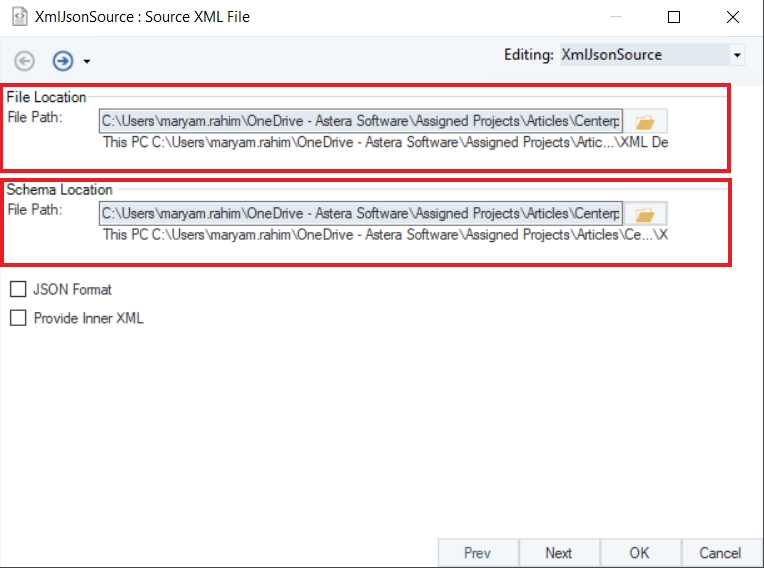
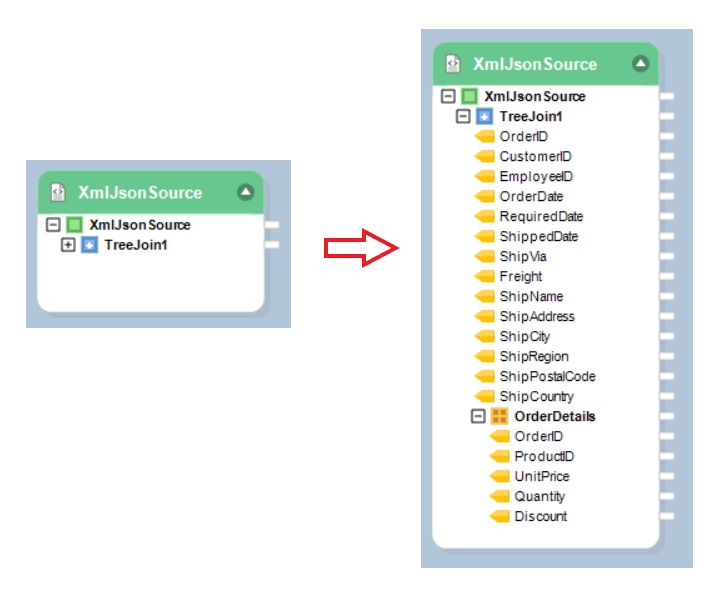
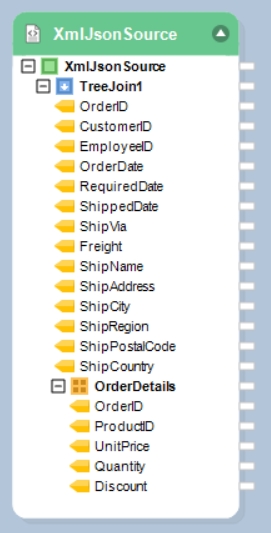
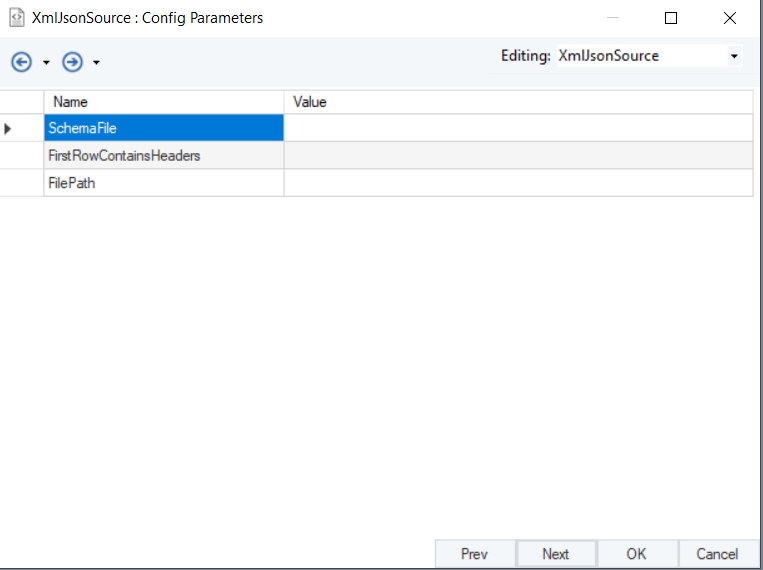
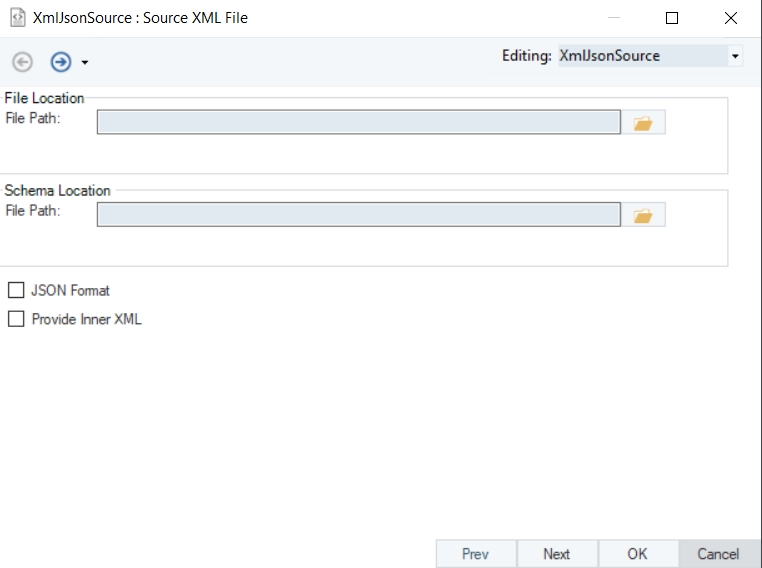
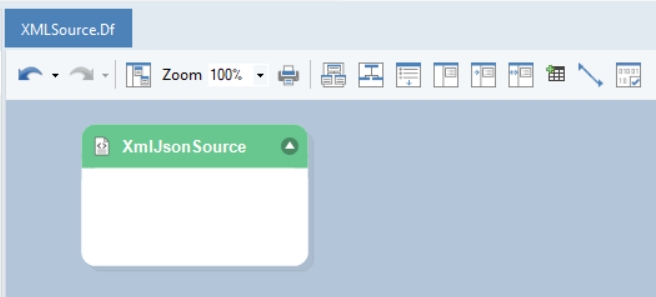
Delimited files are one of the most commonly used data sources and are used in a variety of situations. The Delimited File Source object in Astera provides the functionality to read data from a delimited file.
In this article, we will cover how to use a Delimited File Source object.
To get a Delimited File Source object from the Toolbox, go to Toolbox > Sources > Delimited File Source. If you are unable to see the Toolbox, go to View > Toolbox or press Ctrl + Alt + X.
Drag-and-drop the Delimited File Source object onto the designer.
You can see that the dragged source object is empty right now. This is because we have not configured the object yet.
To configure the Delimited File Source object, right-click on its header and select Properties from the context menu.
As soon as you have selected the Properties option from the context menu, a dialog box will open.
This is where you can configure the properties for the Delimited File Source object.
The first step is to provide the File Path for the delimited source file. By providing the file path, you are building the connectivity to the source dataset.
File Contains Headers
Record Delimiter is specified as CR/LF:
The dialog box has some other configuration options:
If the source file contains headers, and you want Astera to read headers from the source file, check the File Contains Header option.
If you want your file to be read in portions, upon selecting the Partition File for Reading option, Astera will read your file according to the specified Partition Count. For instance, if a file with 1000 rows has a Partition Count of 2 specified, the file will be read in two partitions of 500 each. This is a back-end process that makes data reading more efficient and helps in processing data faster. This will not have any effect on your output.
The Record Delimiter field allows you to select the delimiter for the records in the fields. The choices available are carriage-return line-feed combination
Checking the Dynamic Layout option enables the two following options, Delete Fields in Subsequent Objects, and Add Fields in Subsequent Objects. These options can also be unchecked by users.
Add Fields in Subsequent Objects: Checking this option ensures that a field is definitely added in subsequent objects in a flow in case additional fields are manually added in the source database by the user or need to be added into the source database.
Delete Fields in Subsequent Objects: Checking this option ensures that a field is definitely deleted from subsequent objects in a flow in case of deletion from the source database.
In the Header spans over field, specify the number of rows that your header takes. Refer to this option when your header spans over multiple rows.
Check the Enforce exact header match option if you want the header to be read as it is.
Check the Column order in file may be different from the layout option, if the field order in your source layout is different from the field order in Astera’s layout.
Raw text filter
If you do not want to apply any filter and process all records, check No filter. Process all records.
If there is a specific value which you want to filter out, you can check the Process if begins with option and give the value that you want Astera to read from the data, in the provided field.
If there is a specific expression which you want to filter out, you can check the Process if matches this regular expression option and give the expression that you want Astera to read from the data, in the provided field.
Check the Treat empty string as null value option when you have empty cells in the source file and want those to be treated as null objects in the database destination that you are writing to, otherwise Astera will omit those accordingly in the output.
Check the Trim strings option when you want to omit any extra spaces in the field value.
Once you have specified the data reading options on this window, click Next.
The next window is the Layout Builder. On this window, you can modify the layout of the delimited source file.
If you want to add a new field to your layout, go to the last row of your layout (Name column), which will be blank and double-click on it, and a blinking text cursor will appear. Type in the name of the field you want to add and select subsequent properties for it. A new field will be added to the source layout.
If you want to delete a field from your dataset, click on the serial column of the row that you want to delete. The selected row will be highlighted in blue.
Right-click on the highlighted line, a context menu will appear where you will have the option to Delete.
Selecting this option will delete the entire row.
The field is now deleted from the layout and will not appear in the output.
After you are done customizing the layout, click Next. You will be directed to a new window, Config Parameters. Here, you can define parameters for the Delimited File Source object.
Parameters can provide easier deployment of flows by eliminating hardcoded values and provide an easier way of changing multiple configurations with a simple value change.
Once you have configured the source object, click OK.
The Delimited File Source object is now configured according to the changes made.
The Delimited File Source object has now been modified from its previous configuration. The new object has all the modifications that were made in the builder.
In this case, the modifications that were made are:
Added the CustomerName column.
Deleted the ShipCountry column.
You have successfully configured your Delimited File Source object. The fields from the source object can now be mapped to other objects in the dataflow.
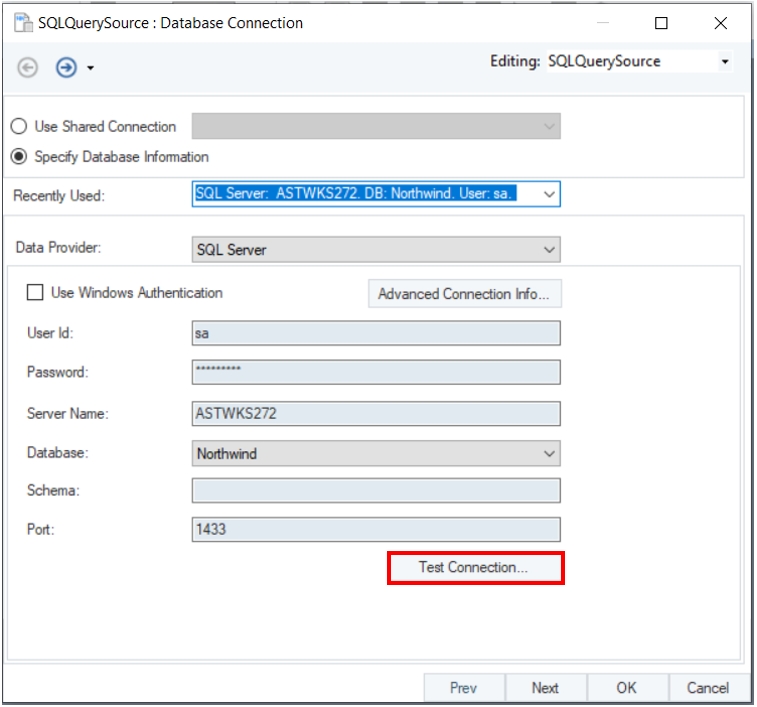
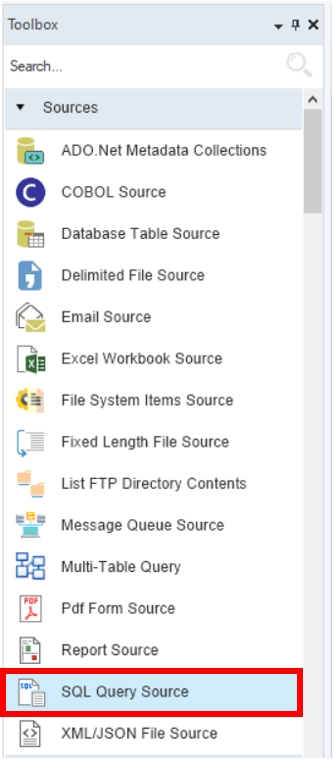
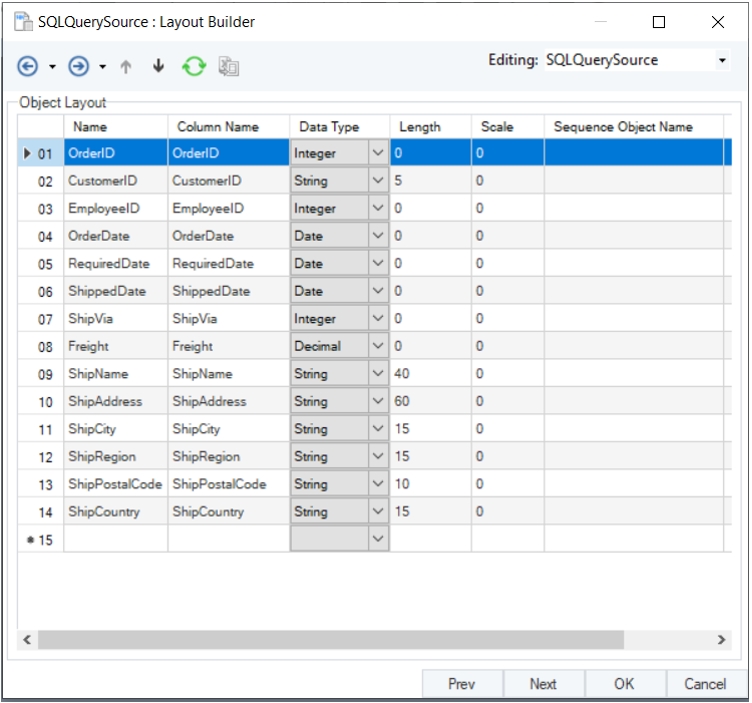
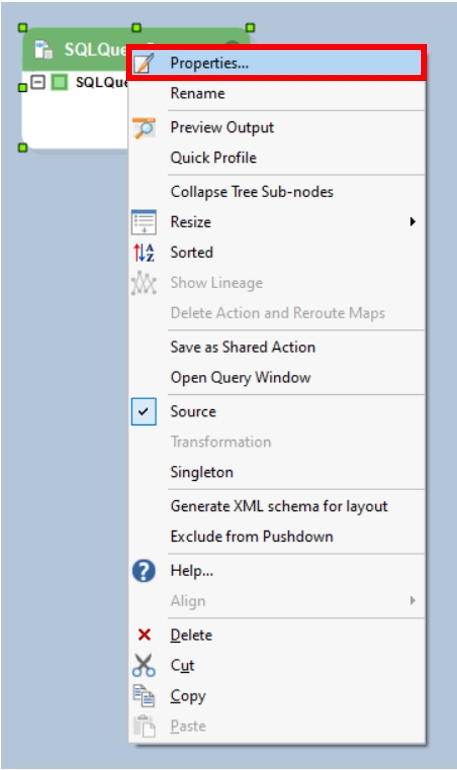
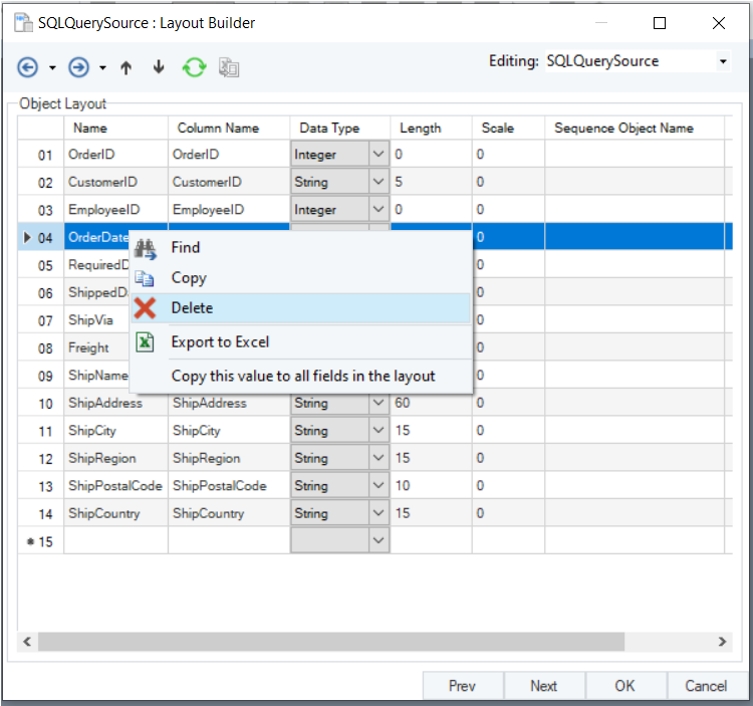
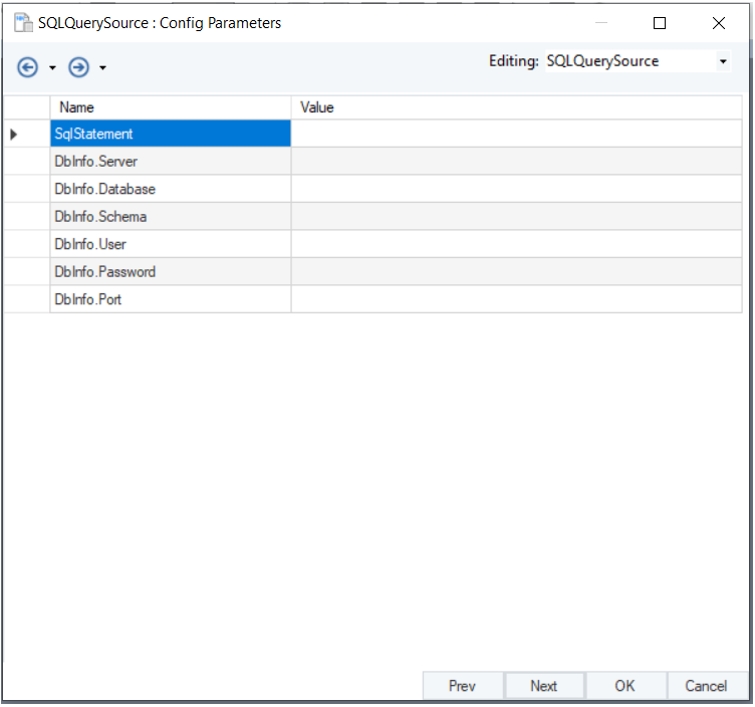
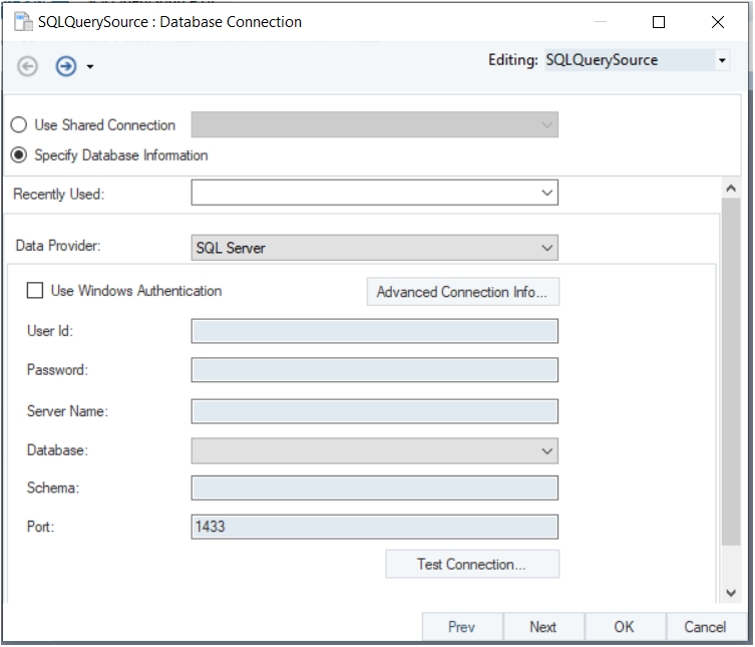
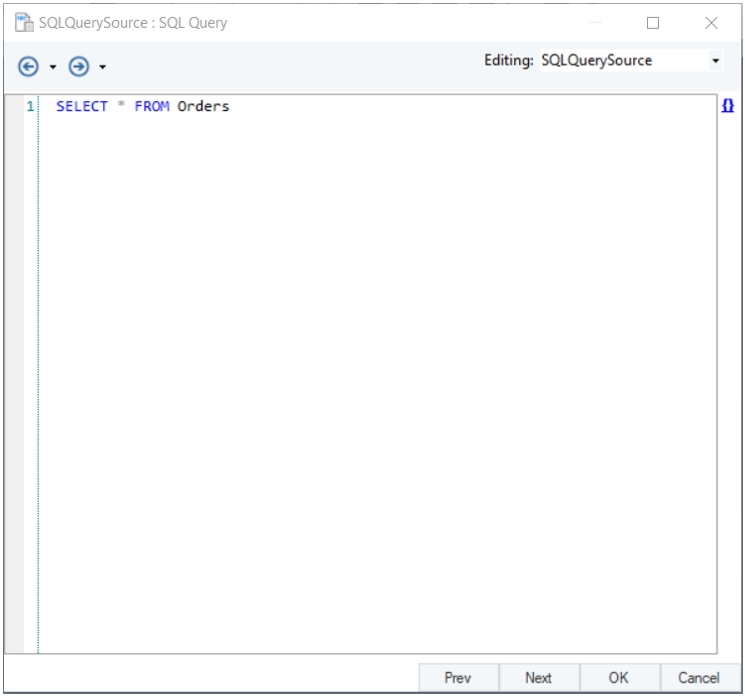
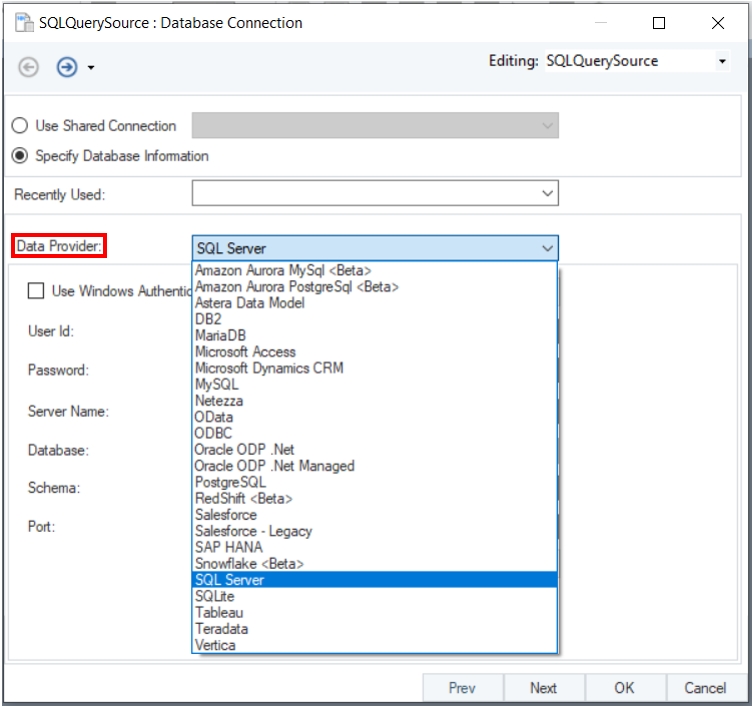
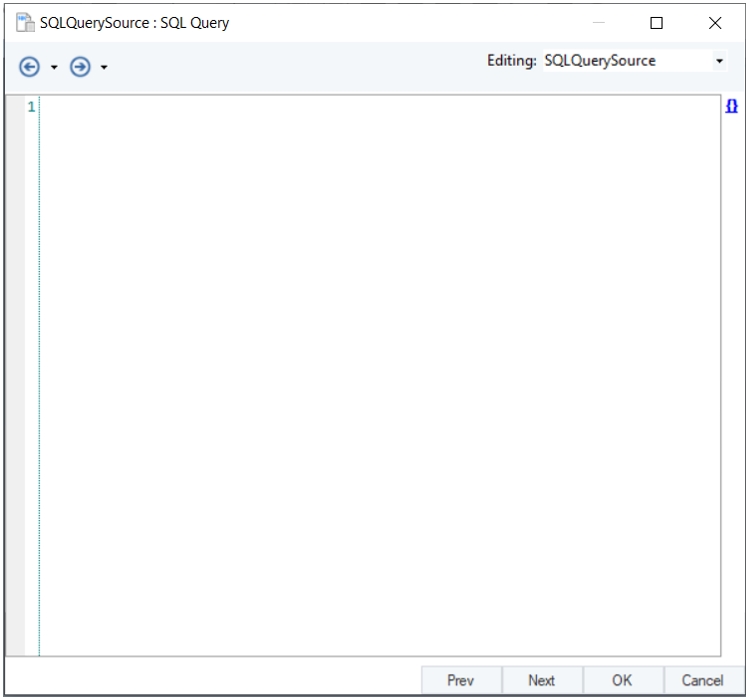
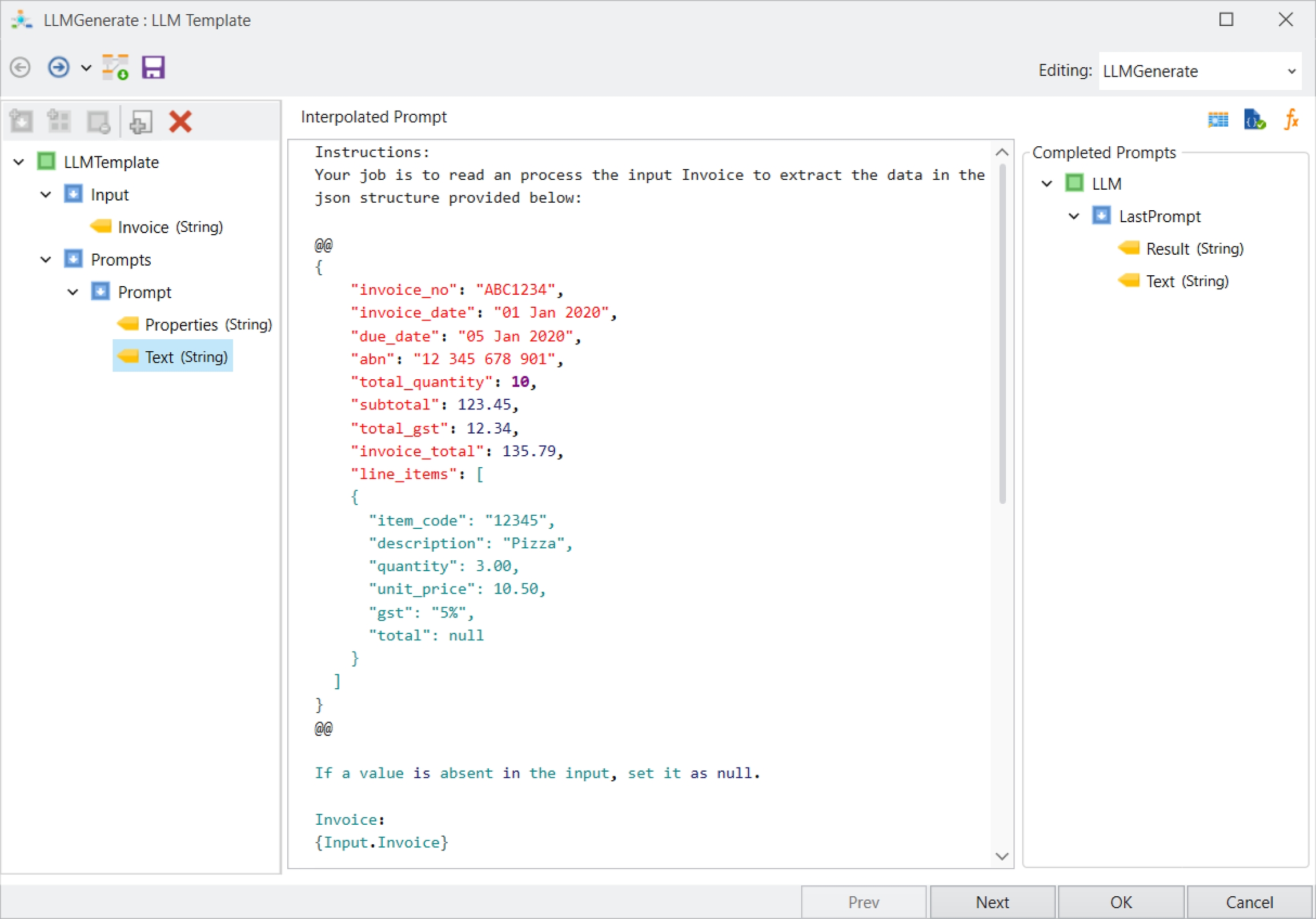
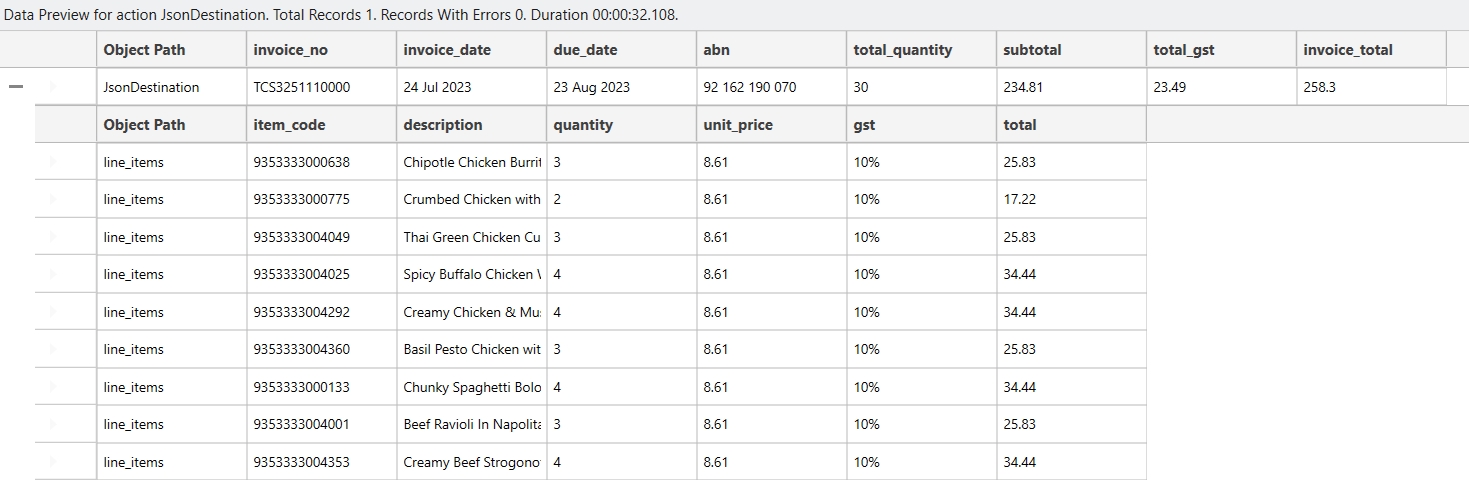
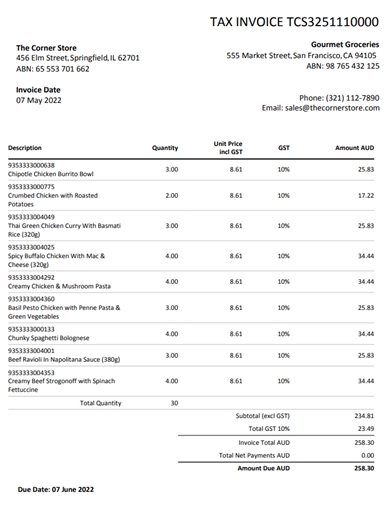

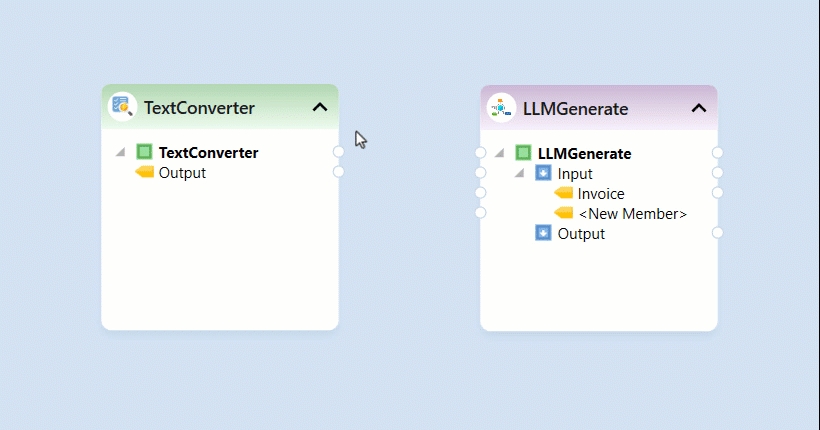
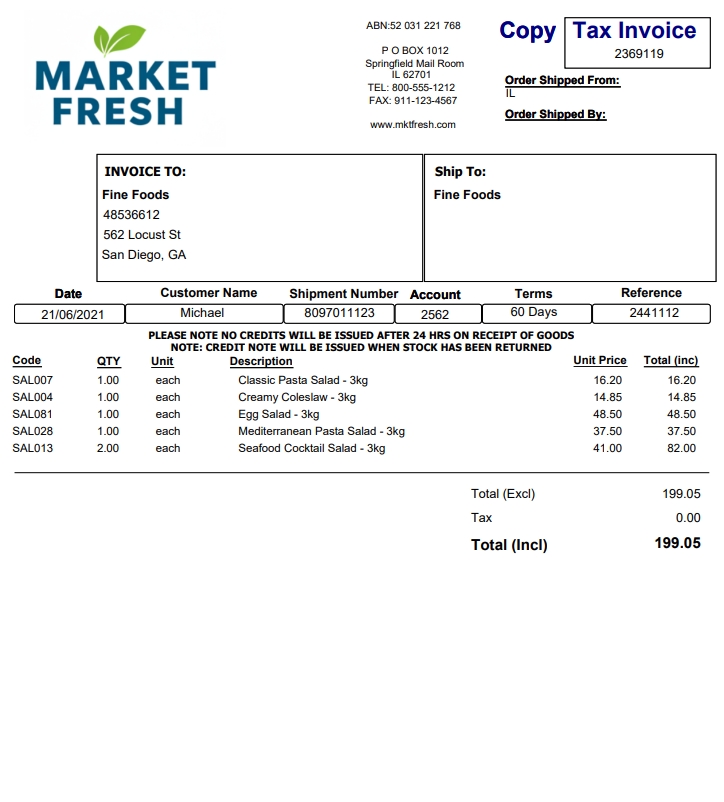
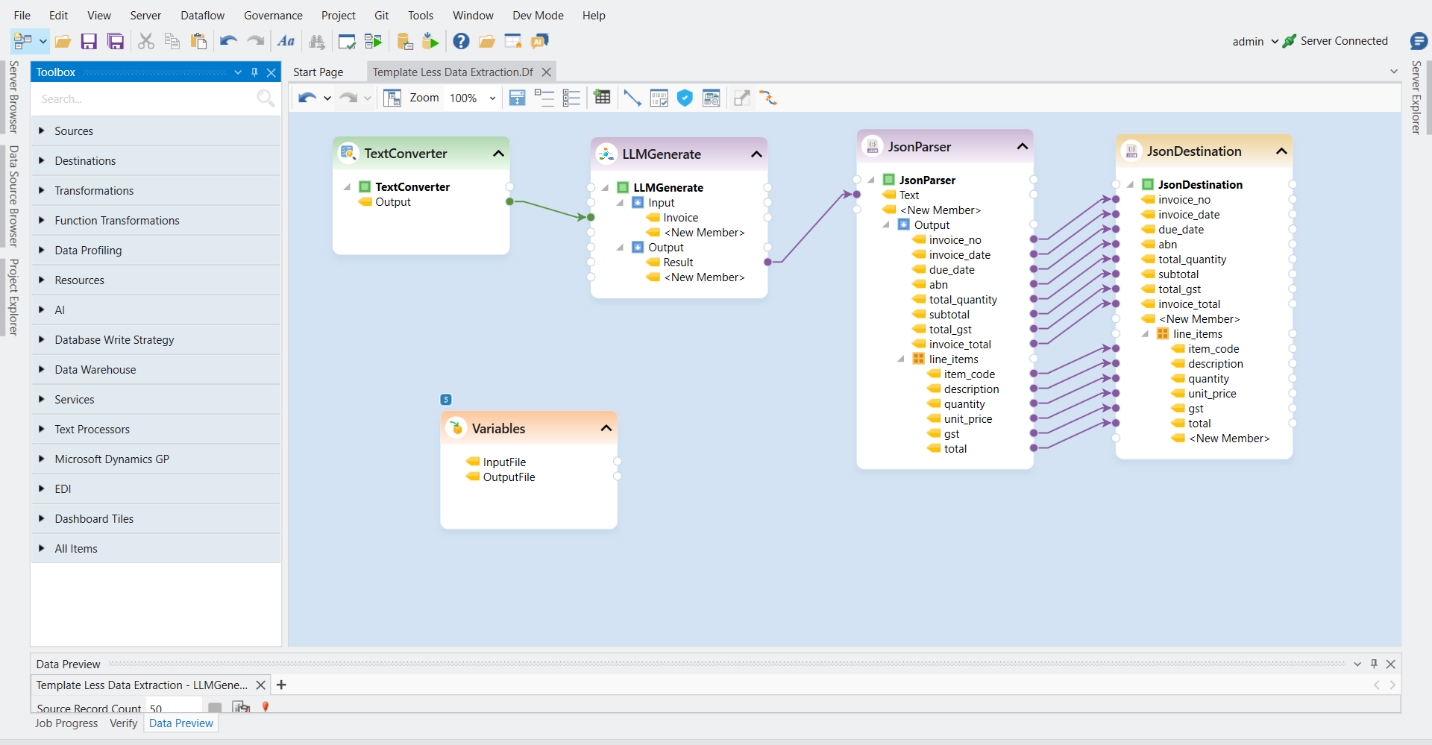

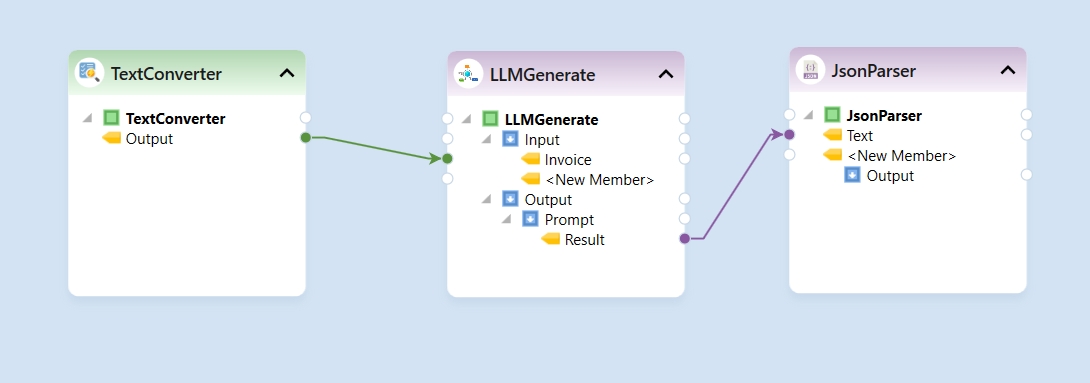
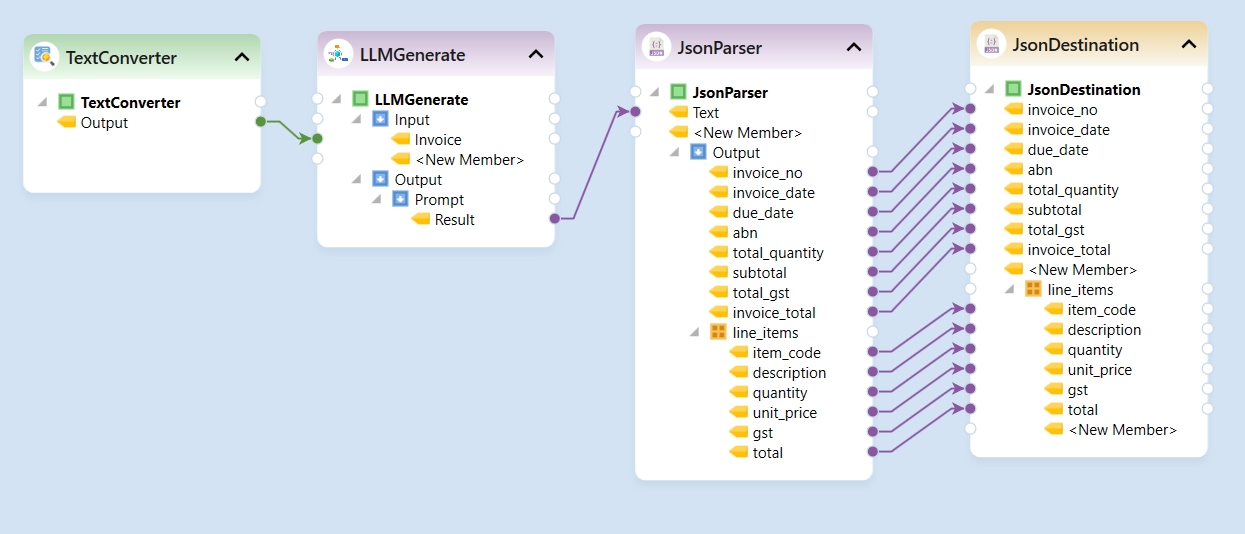
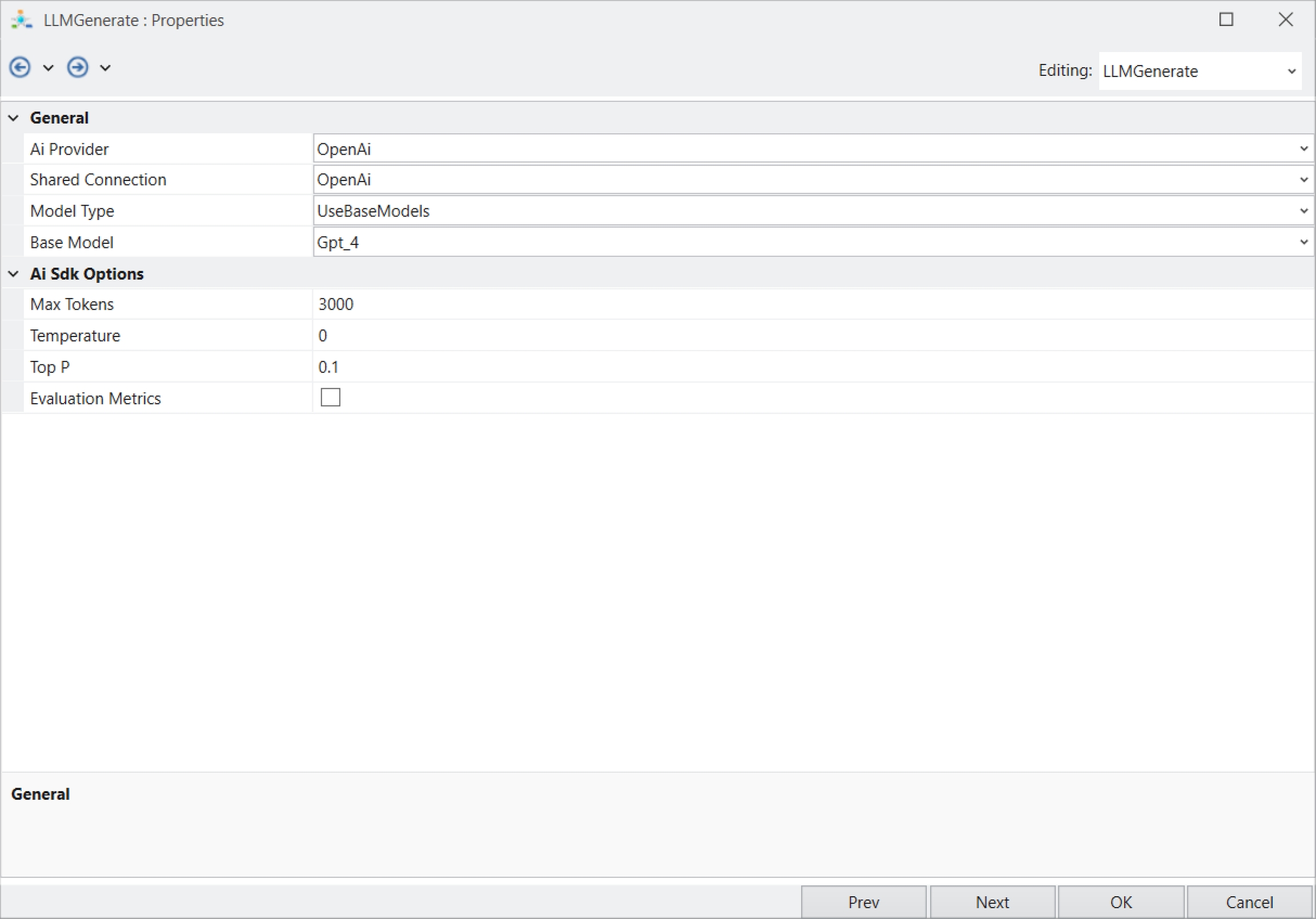
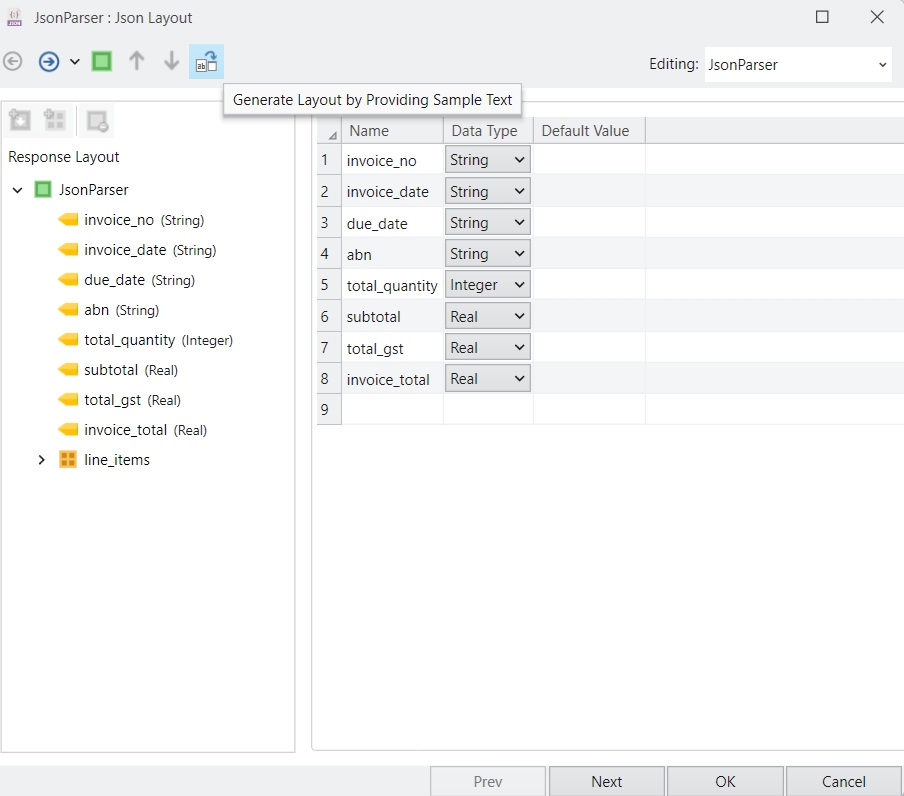
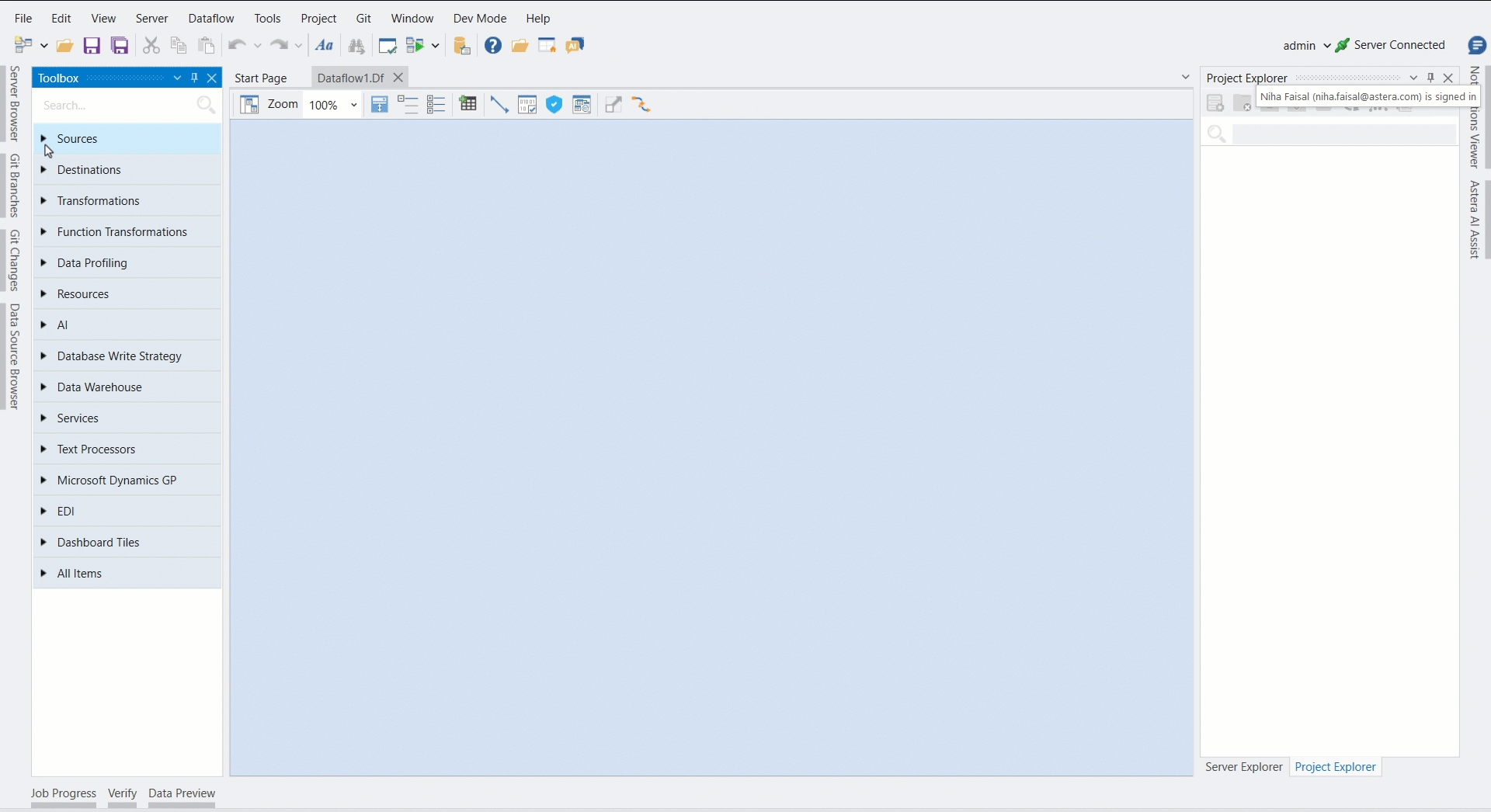
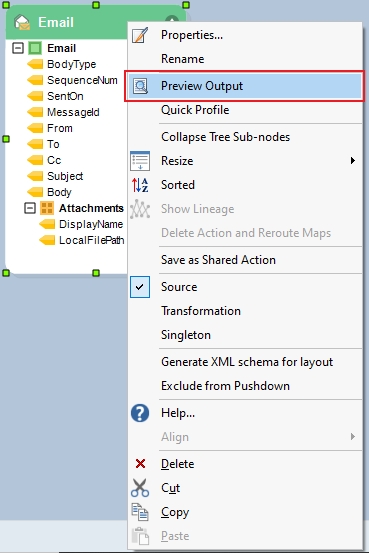
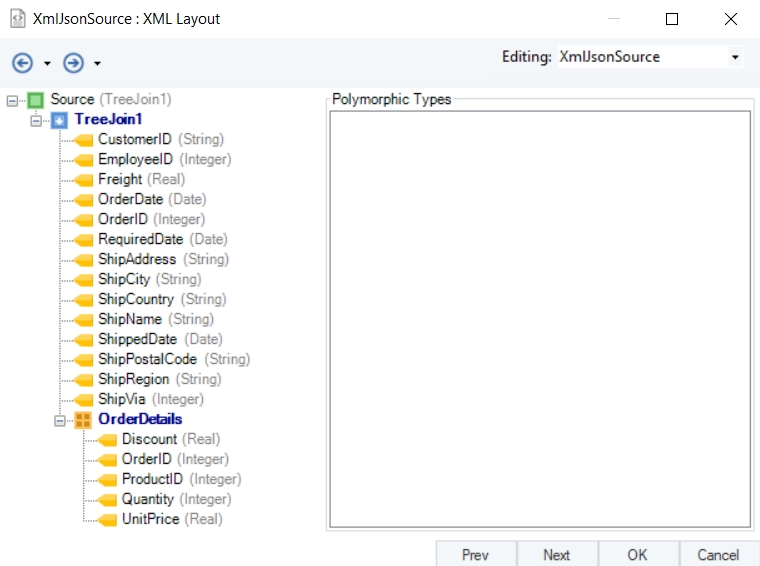
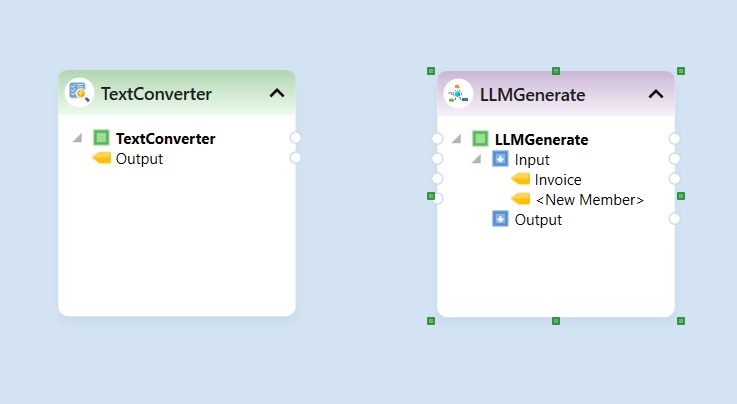
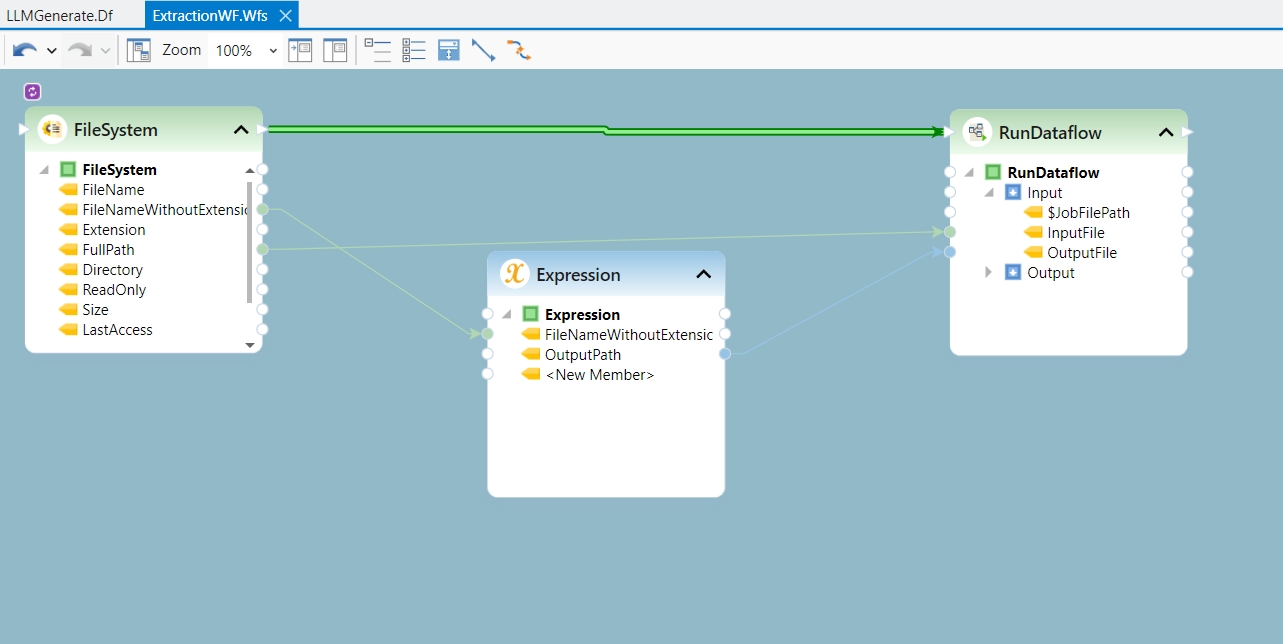

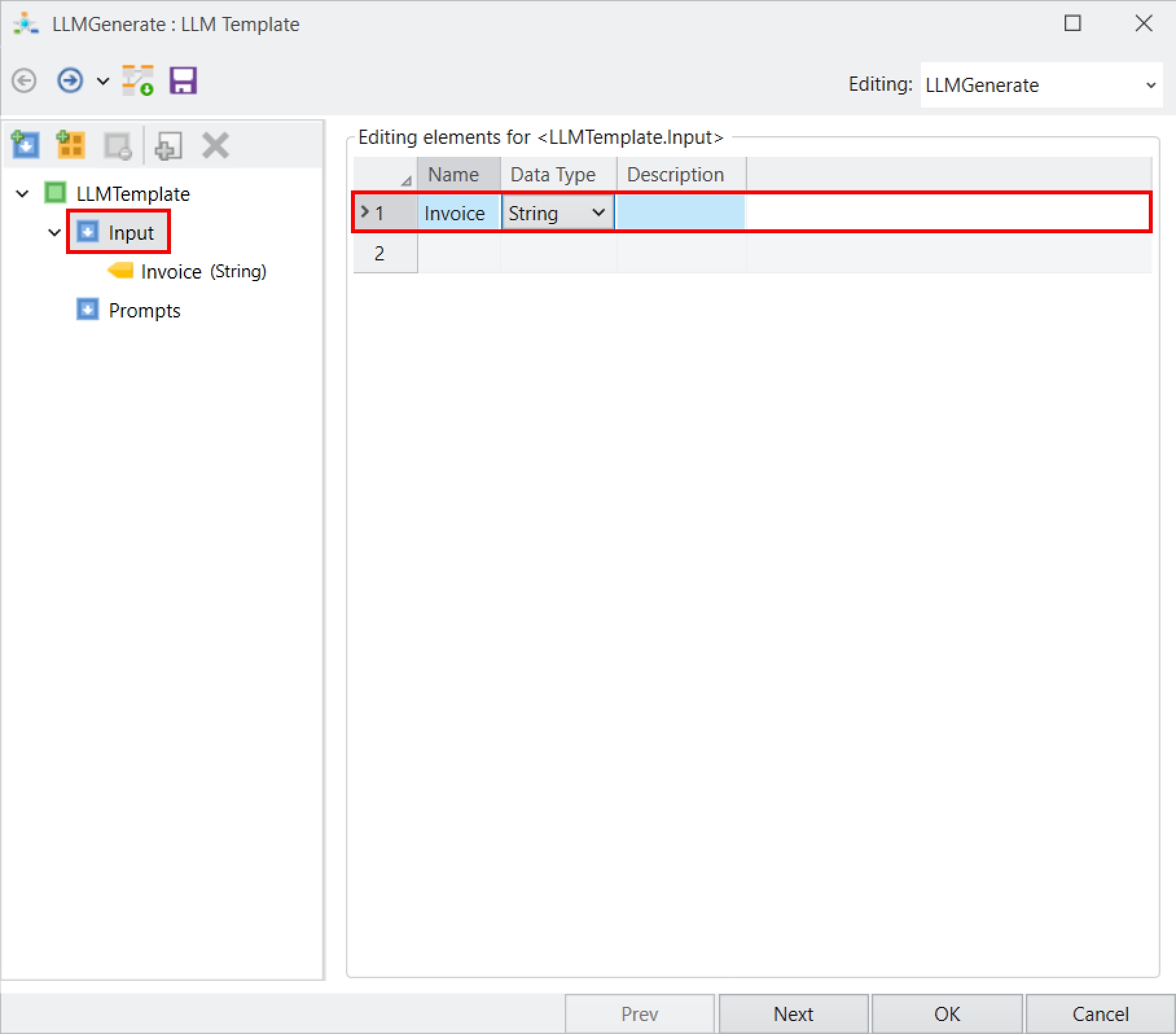
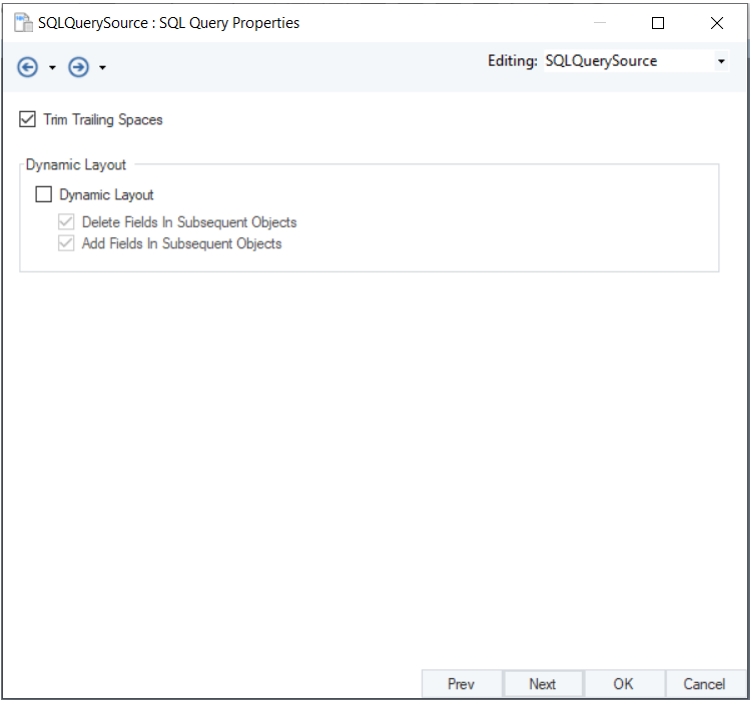
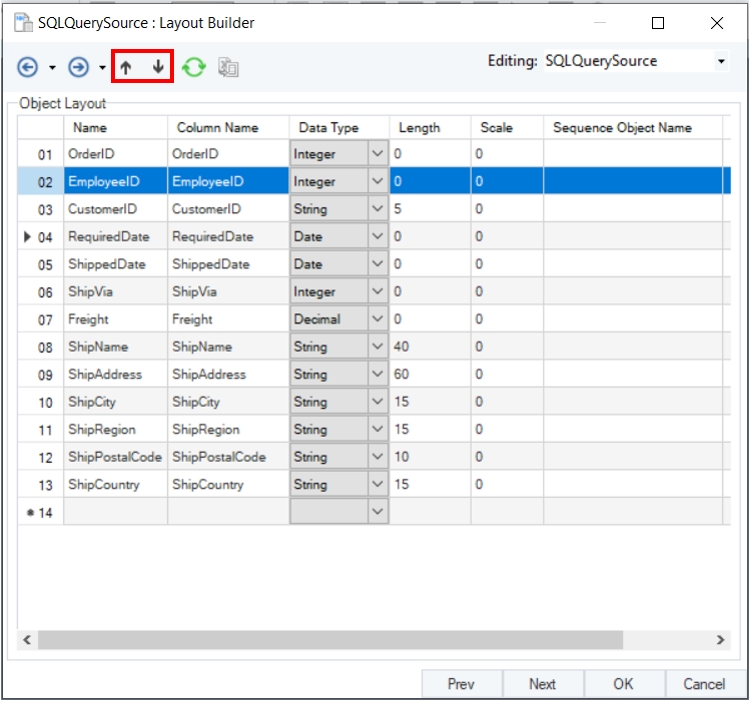
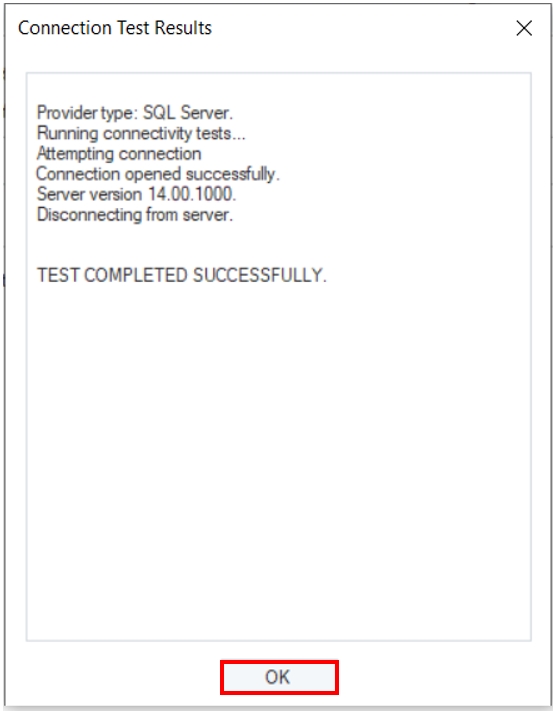
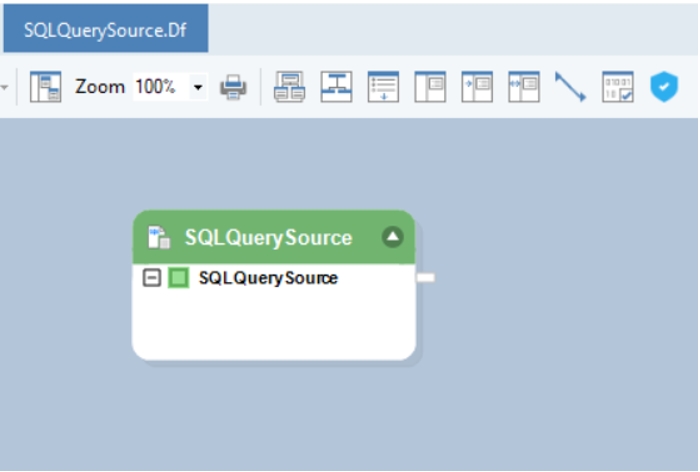
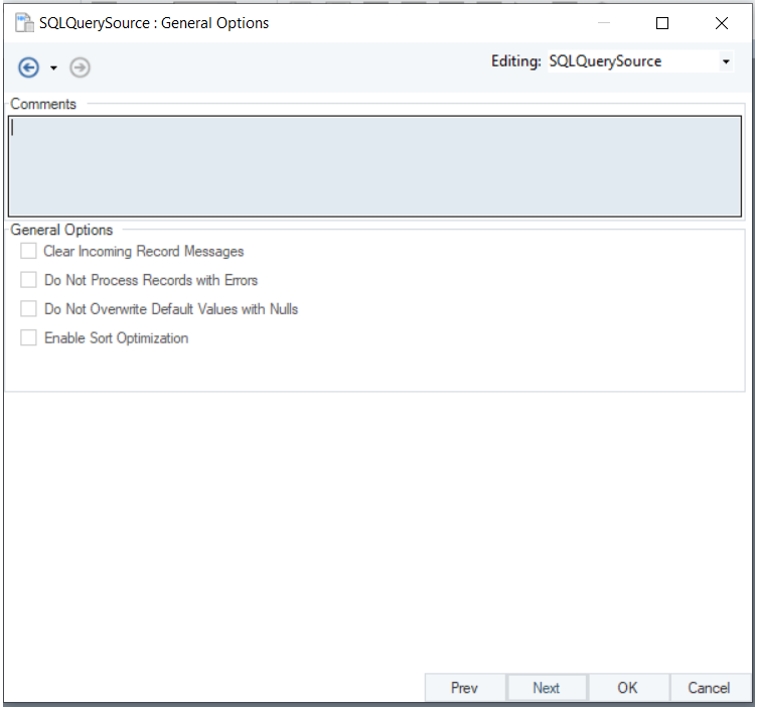
In case the records do not have a delimiter and you rely on knowing the size of a record, the number in the Record Length field can be used to specify the character length for a single record.
The Encoding field allows you to choose the encoding scheme for the delimited file from a list of choices. The default value is Unicode (UTF-8).
A Text Qualifier is a symbol that identifies where text begins and ends. It is used specifically when importing data. For example, if you need to import a text file that is comma delimited (commas separate the different fields that will be placed in adjacent cells).
To define a hierarchical file layout and process the data file as a hierarchical file, check the This is a Hierarchical File option. Astera IDE provides extensive user interface capabilities for processing hierarchical structures.
Use the Null Text option to specify a certain value that you do not want in your data, and instead want it to be replaced by a null value.
Check the Allow Record Delimiter Inside a Field Text option when you have the record delimiter as text inside your data and want that to be read as it is.
Check the Make All Fields As String In Build Layout option when you want to set all the fields in the layout builder as String.
Dynamic Layout
Advanced File Options
Check the Column headers in file may be different from the layout option if you want to use alternate header values for your fields. The Layout Builder lets you specify alternate header values for the fields in the layout.
Check the Use SmartMatch with Synonym Dictionary option when the header values vary in the source layout and Astera’s layout. You can create a Synonym Dictionary file to store values for alternate headers. You can also use the Synonym Dictionary file to facilitate automapping between objects on the flow diagram that use alternate names in field layouts.
To skip any unwanted rows at the beginning of your file, you can specify the number of records that you want to omit through the Skip initial records option.
String Processing
String Processing options come in use when you are reading data from a file system and writing it to a database destination.
Configuring the Excel Workbook Source object according to our required layout and settings.
In this section, we will cover the various ways to get an Excel Workbook Source object on the dataflow designer.
To get an Excel File Source object from the Toolbox, go to Toolbox > Sources > Excel Workbook Source. If you are unable to see the Toolbox, go to View > Toolbox or press Ctrl + Alt + X.
Drag-and-drop the Excel Workbook Source object onto the designer.
You can see that the dragged source object is empty right now. This is because we have not configured the object yet. We will discuss the configuration properties for the Excel Workbook Source object in the next section.
If you already have a project defined and excel source files are a part of that project, you can directly drag-and-drop the excel file sources from the project tree onto the dataflow designer. The Excel File Source objects in this case will already be configured. Astera Data Stack detects the connectivity and layout information from the source file itself.
To get an Excel File Source object from the Project Explorer, go to the Project Explorer window and expand the project tree.
Select the Excel file you want to bring in as the source and drag-and-drop it on the designer. In this case, we are working with Customers -Excel Source.xls file so we will drag-and-drop it onto the designer.
If you expand the dropped object, you will see that the layout for the source file is already built. You can even preview the output at this stage.
To get an Excel Workbook Source directly from the file location, open the folder containing the Excel file.
Drag-and-drop the Excel file from the folder onto the designer in Astera.
If you expand the dropped object, you will see that the layout for the source file is already built. You can even preview the output at this stage.
To configure the Excel Workbook Source object, right-click on its header and select Properties from the context menu.
As soon as you have selected the Properties option from the context menu, a dialog box will open.
This is where you can configure your properties for the Excel Workbook Source object.
The first step is to provide the File Path for the excel source. By providing the file path, you are building the connectivity to the source dataset.
The dialog box has some other configuration options:
If your source file contains headers and you want your Astera source layout to read headers from the source file, check the First Row Contains Header box.
If you have blank rows in your file, you can use the Consecutive Blank Rows to Indicate End of File option to specify the number of blank rows that will indicate the end of the file.
Use the Worksheet option to specify if you want to read data from a specific worksheet in your excel file.
In the Start Address option, you can indicate the cell value from where you want Astera to start reading the data.
Check the Make All Fields As String In Build Layout option when you want to set all the fields in the layout builder as String.
Dynamic Layout
Checking the Dynamic Layout option enables the two following options, Delete Fields in Subsequent Objects, and Add Fields in Subsequent Objects. These options can also be unchecked by users.
Add Fields in Subsequent Objects: Checking this option ensures that a field is definitely added in subsequent objects in a flow in case additional fields are manually added in the source database by the user or need to be added into the source database.
Delete Fields in Subsequent Objects: Checking this option ensures that a field is definitely deleted from subsequent objects in a flow in case of deletion from the source database.
Advanced File Options
In the Header spans over option, give the number of rows that your header takes. Refer to this option when your header spans over multiple rows.
Check the Enforce exact header match option if you want the header to be read as it is.
Check the Column order in file may be different from the layout option if the field order in your source layout is different from the field order in Astera layout.
Check on Column headers in file may be different from the layout if you want to use alternate header values for your fields. The Layout Builder lets you specify alternate header values for the fields in the layout.
Check the Use SmartMatch with Synonym Dictionary option when the header values vary in the source layout and Astera layout. You can create a to store the values for alternate headers. You can also use Synonym Dictionary file to facilitate automapping between objects that use alternate names in field layouts.
String Processing
String processing options come in use when you are reading data from a file system and writing it to a database destination.
Check the Treat empty string as null value option when you have empty cells in the source file and want those to be treated as null objects in the database destination that you are writing to, otherwise Astera will omit those accordingly in the output.
Check the Trim strings option when you want to omit any extra spaces in the field value.
Once you have specified the data reading options on this screen, click Next.
The next window is the Layout Builder. On this window, you can modify the layout of your Excel source file.
If you want to add a new field to your layout, go to the last row of your layout (Name column) and double-click on it. A blinking text cursor will appear. Type in the name of the field you want to add and select subsequent properties for it. A new field will be added to the source layout.
If you want to delete a field from your dataset, click on the serial column of the row that you want to delete. The selected row will be highlighted in blue.
Right-click on the highlighted line and select Delete from the context menu.
This will Delete the entire row from the layout.
If you want to change the position of any field and want to move it below or above another field in the layout, you can do this by selecting the row and using Move up/move down keys.
For example: To move the Country field right below the Region field, we will select the row and use the Move up key to move this field from the 9th row to the 8th.
Other options that the Layout Builder provides:
Column Name
Description
Alternate Header
Assigns an alternate header value to the field.
Data Type
Specifies the data type of a field, such as Integer, Real, String, Date, or Boolean.
Allows Null
Controls whether the field allows blank or NULL values in it.
Output
The output checkbox allows you to choose whether or not you want to enable data from a particular field to flow through further in the dataflow pipeline.
Calculation
Defines functions through expressions for any field in your data.
After you are done customizing the Object Builder, click Next. You will be taken to a new window,Config Parameters. Here, you can further configure and define parameters for the Excel source.
Parameters can provide easier deployment of flows by eliminating hardcoded values and provide an easier way of changing multiple configurations with a simple value change.
Once you have been through all the configuration options, click OK.
The ExcelSource object is now configured according to the changes made.
You have successfully configured your Excel Workbook Source object. The fields from the source object can now be mapped to other objects in the dataflow.
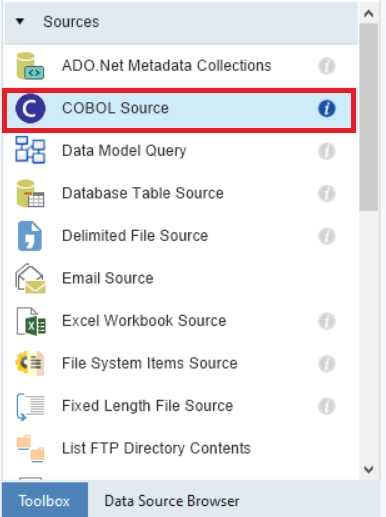

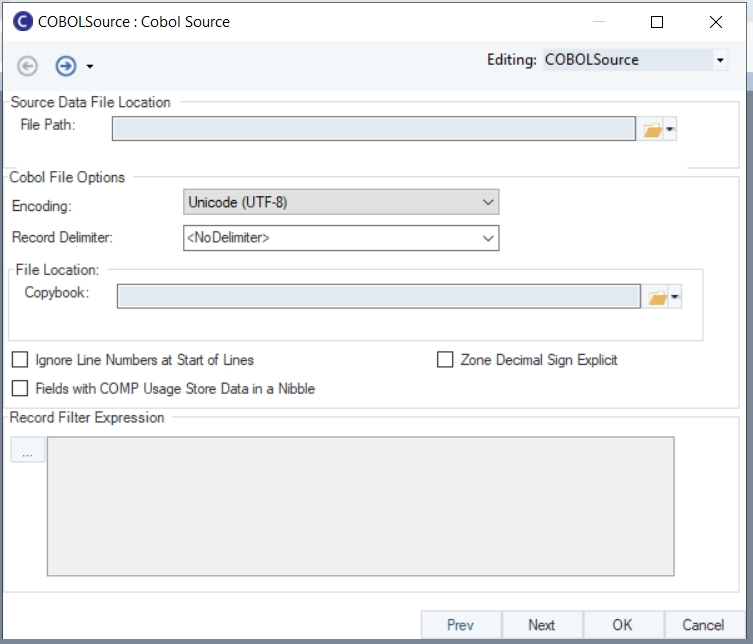
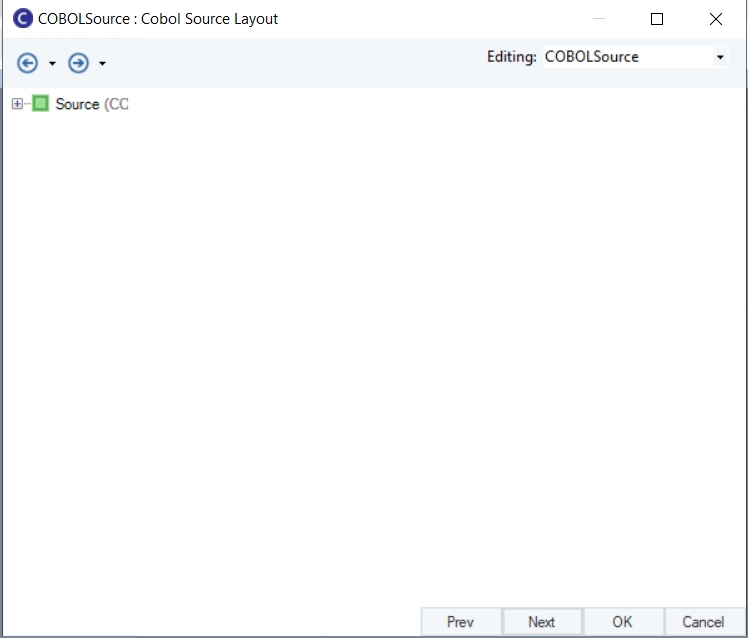
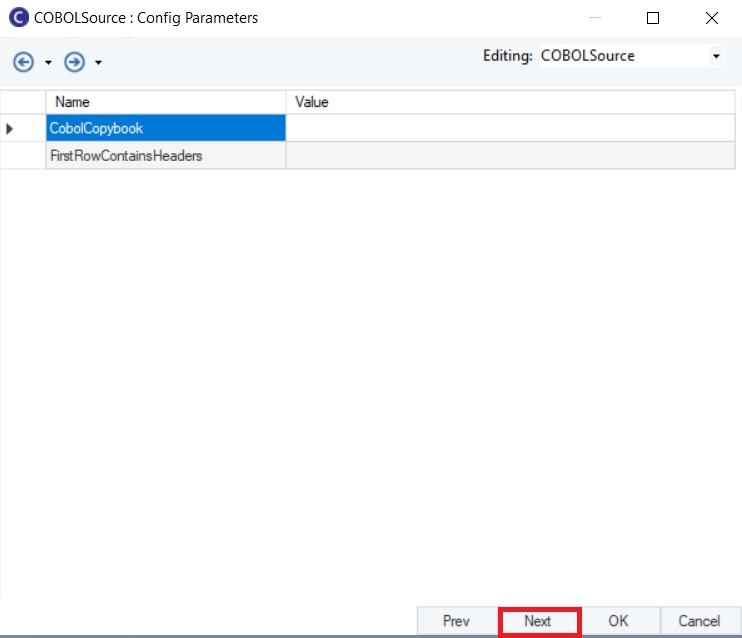
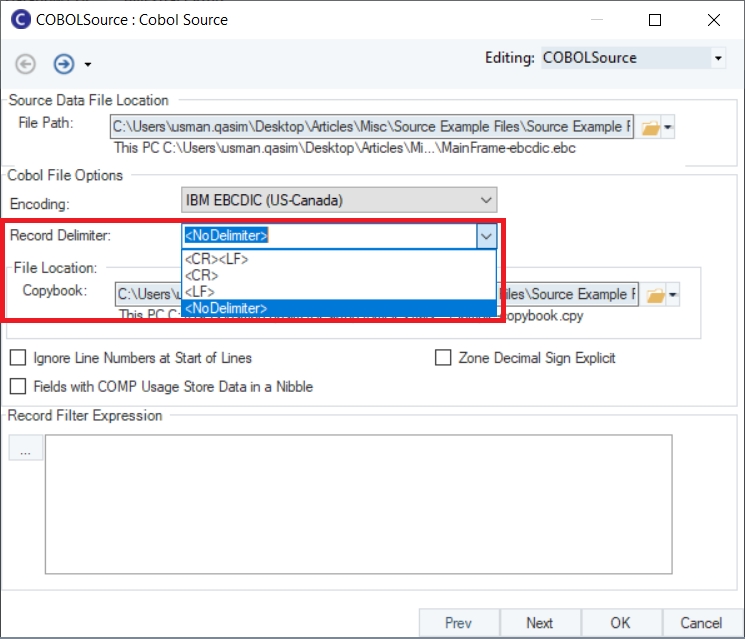

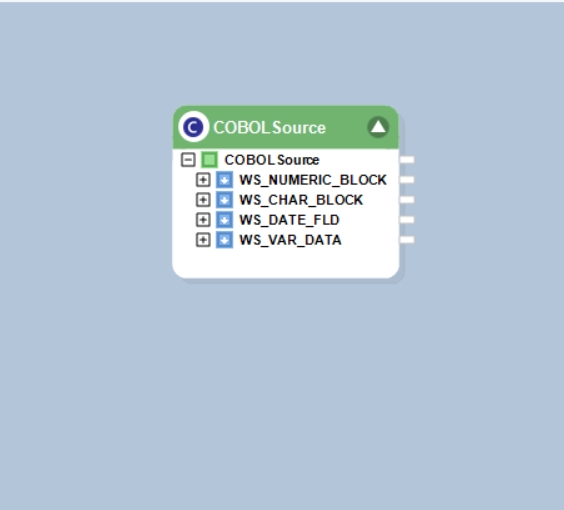
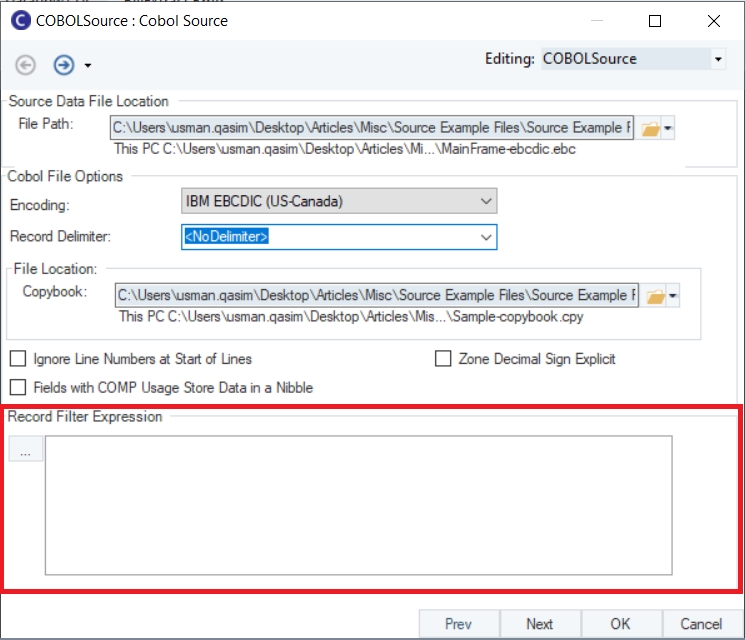


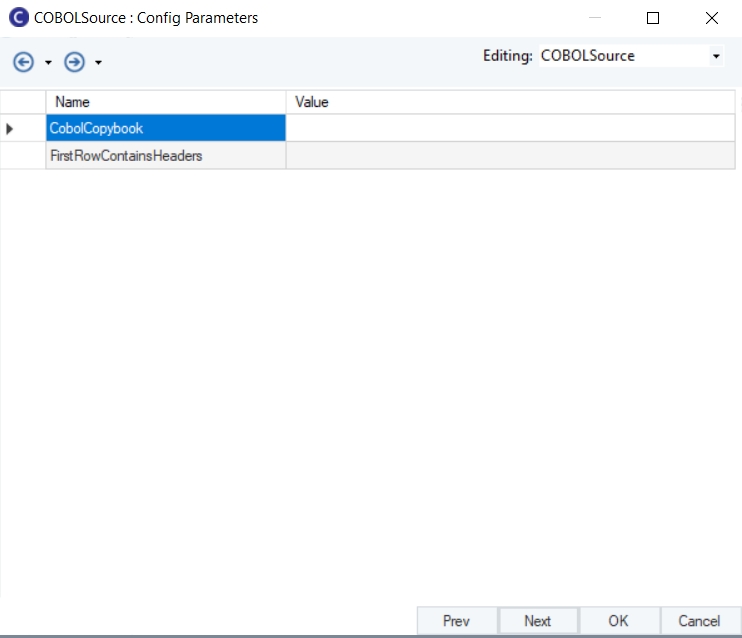
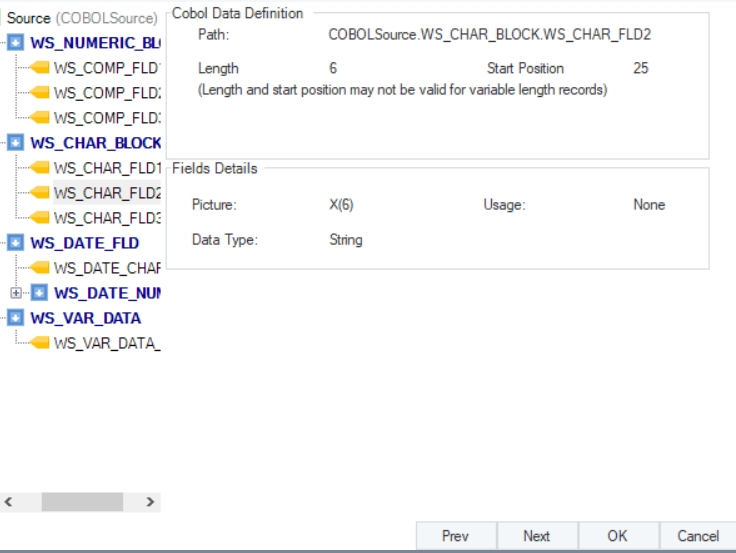
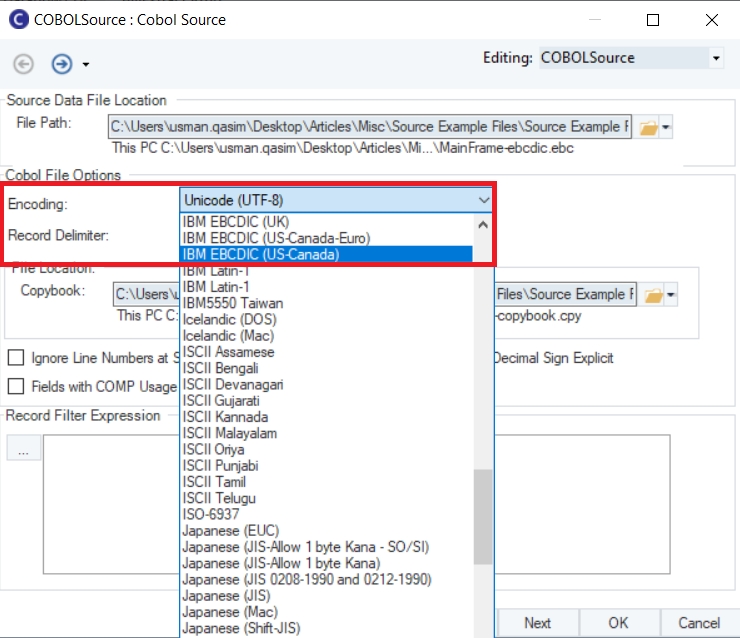
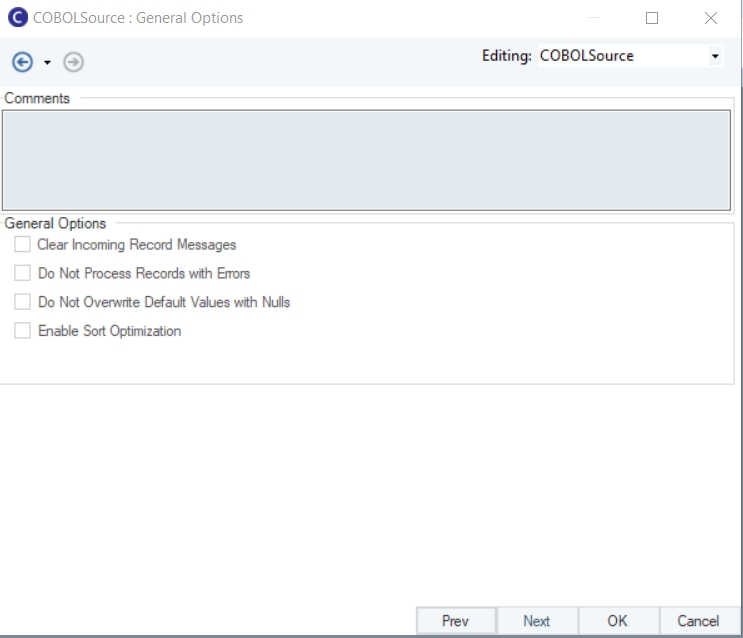
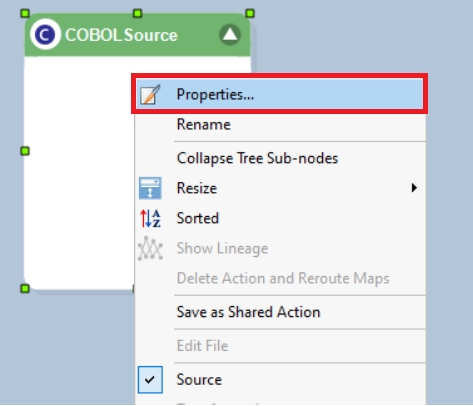

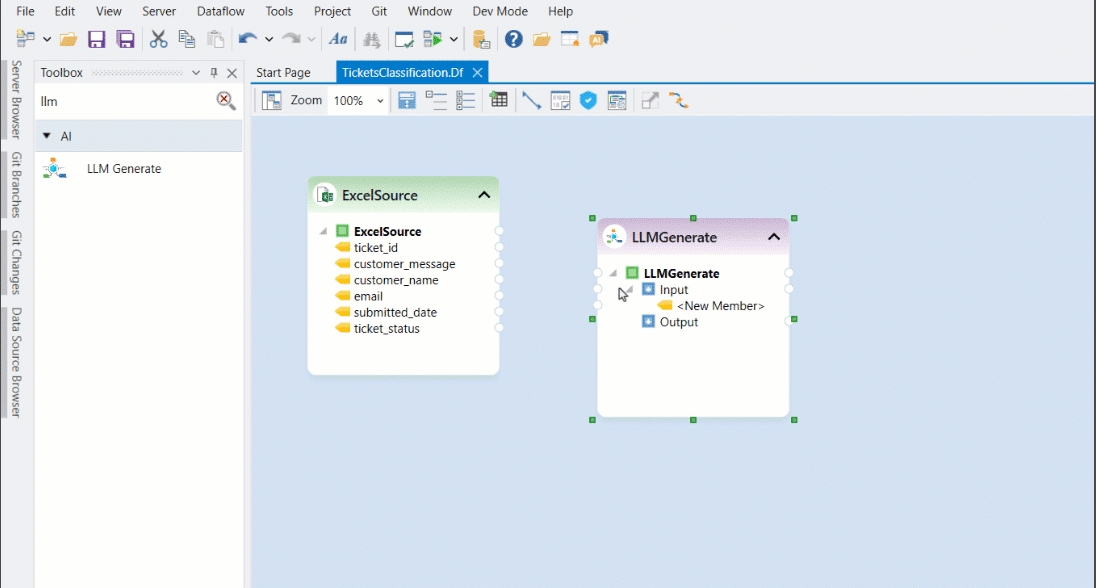
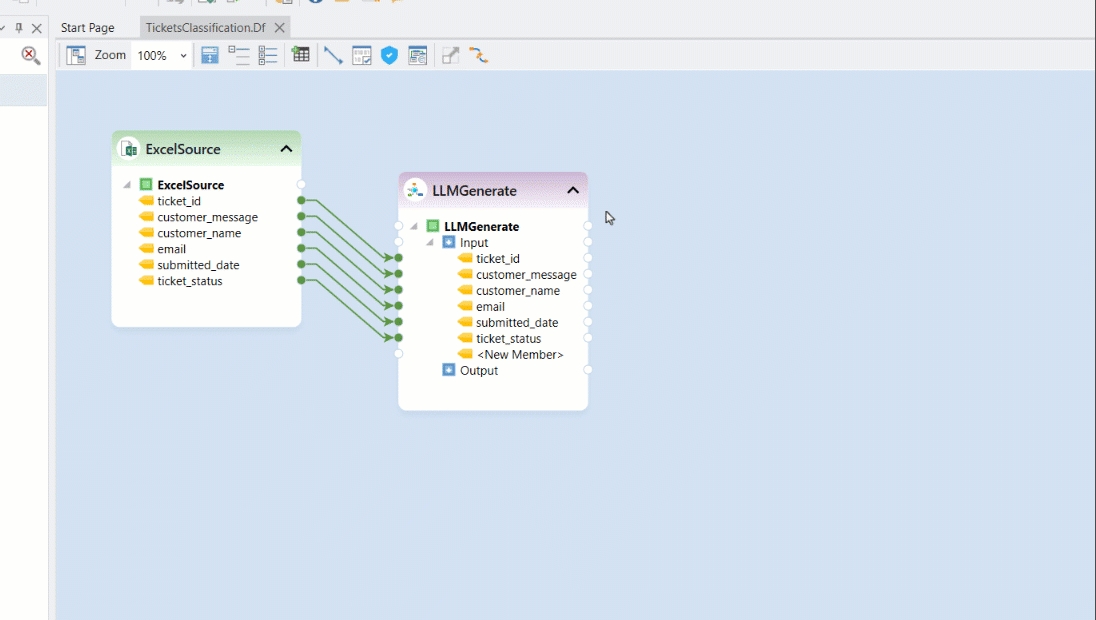
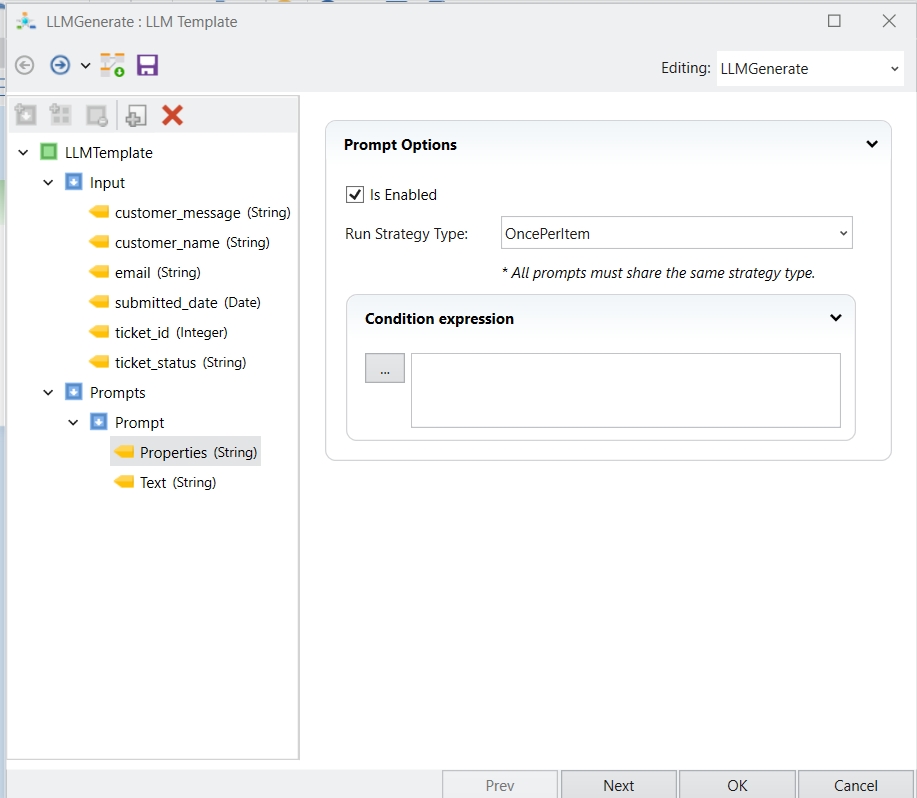
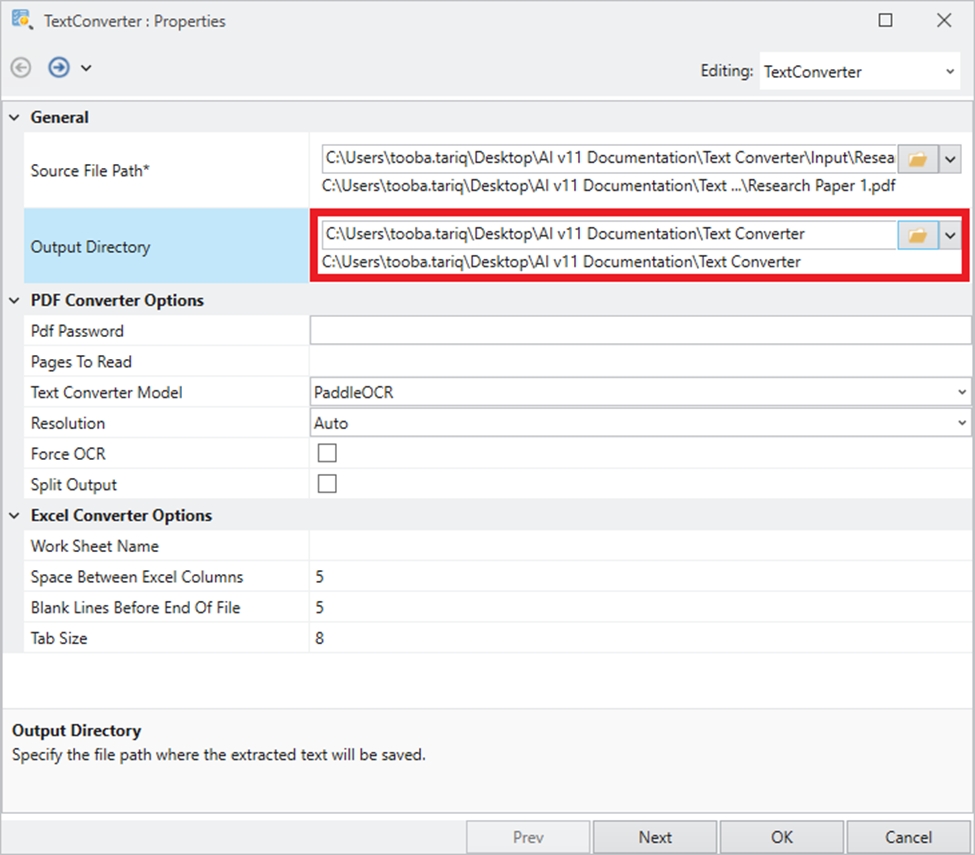
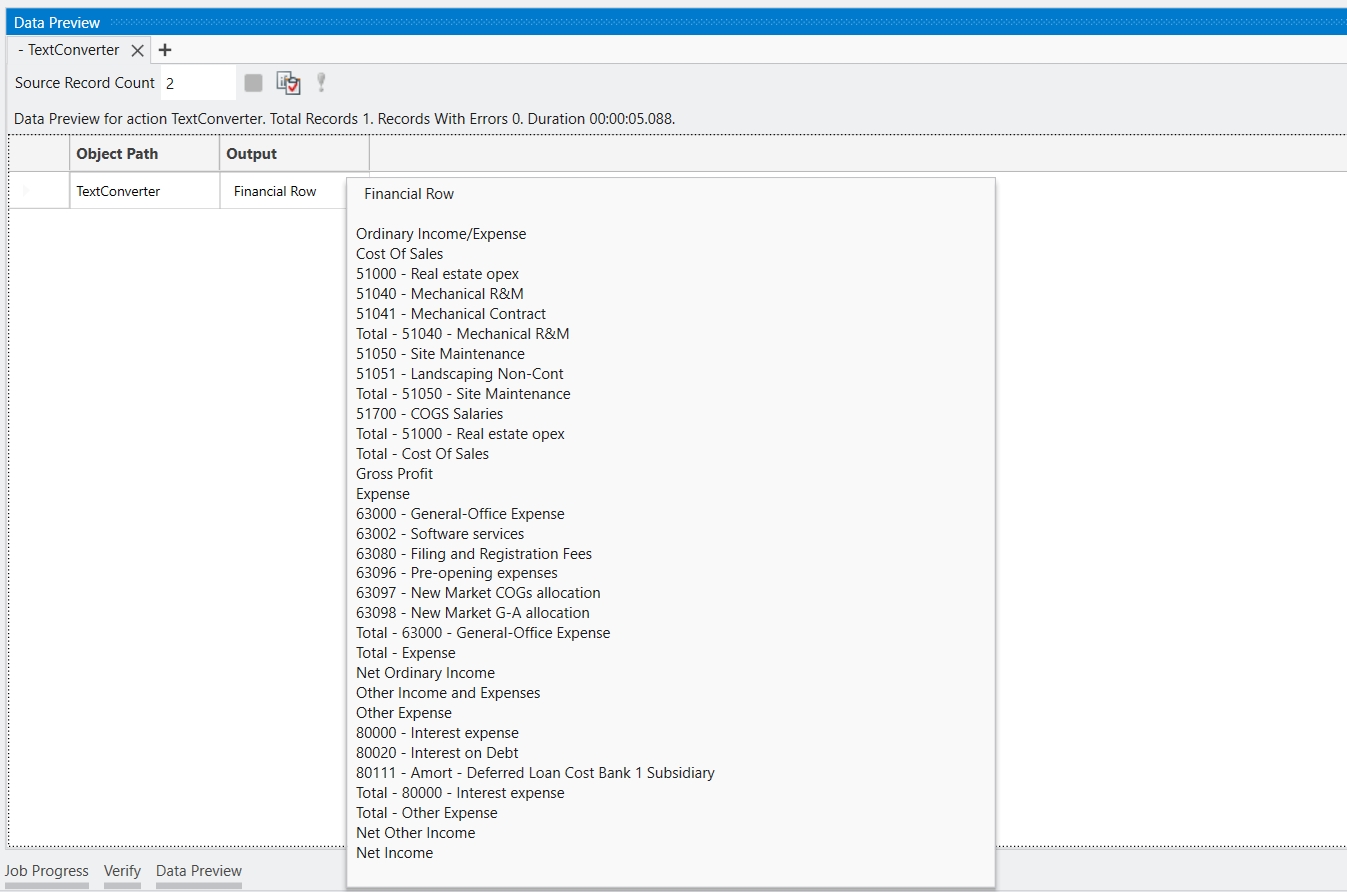
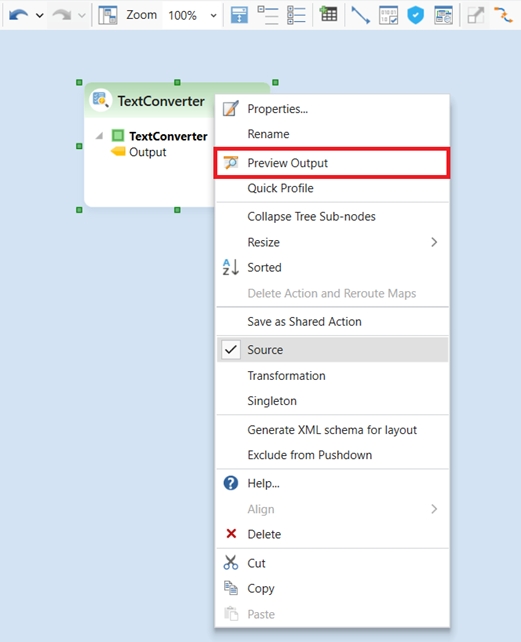
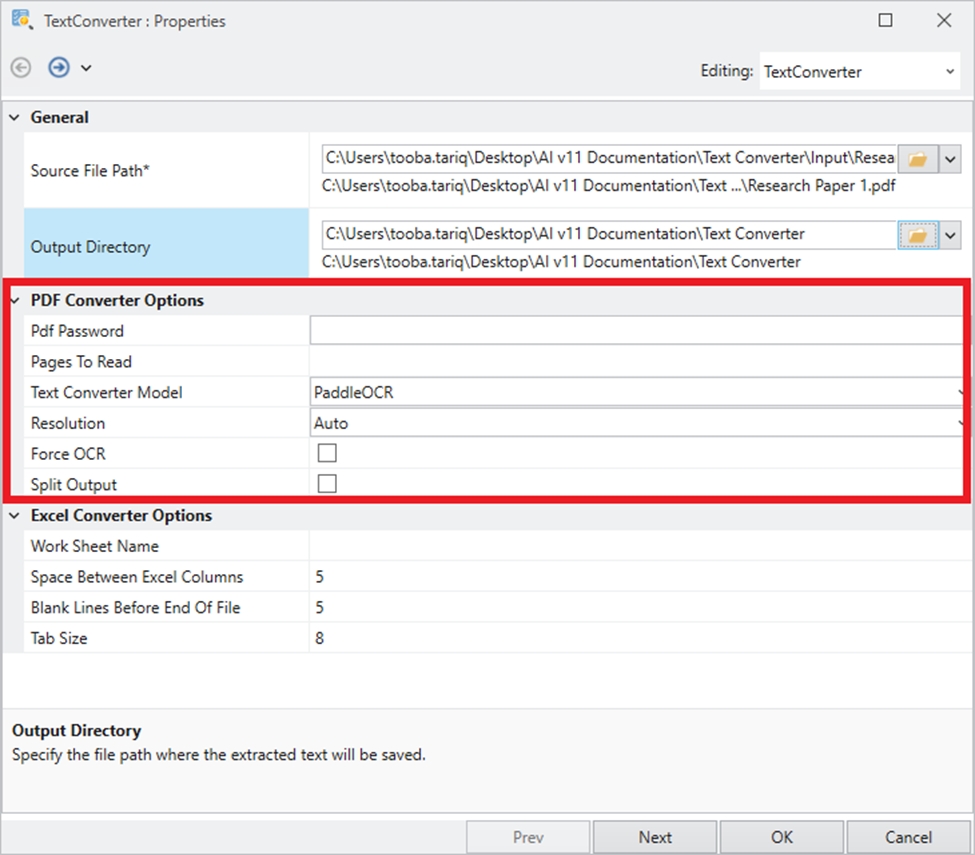
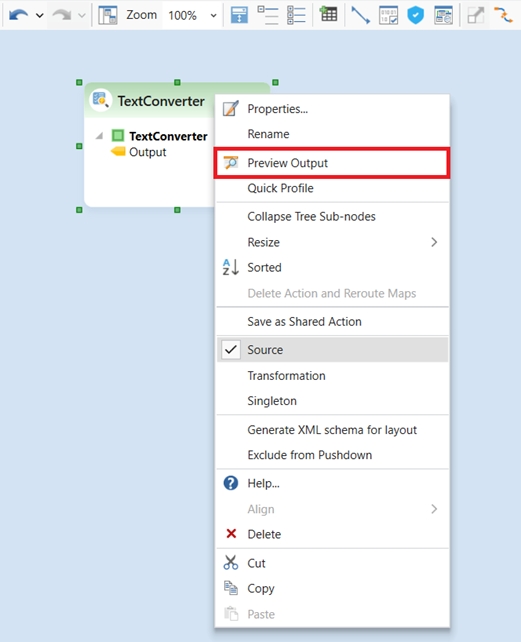
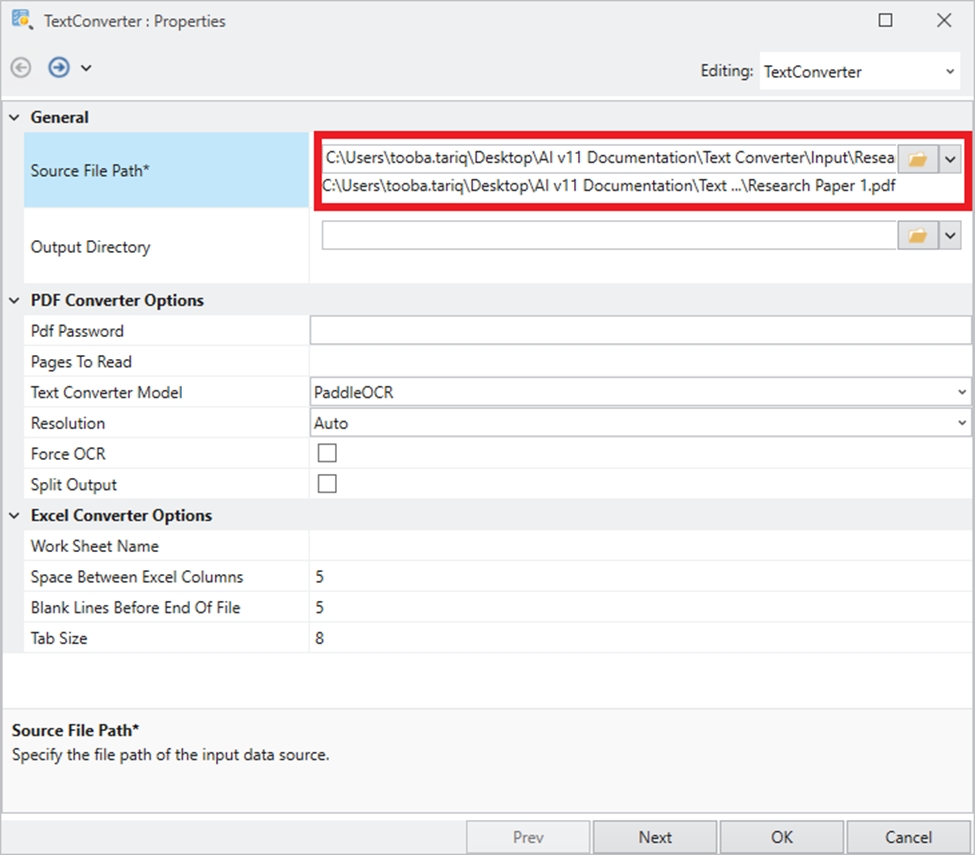
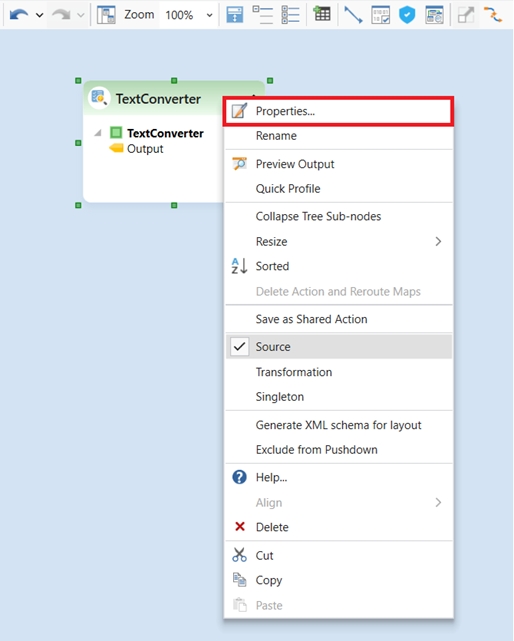

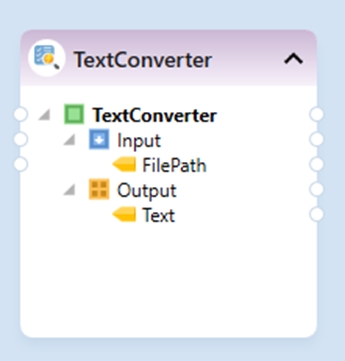

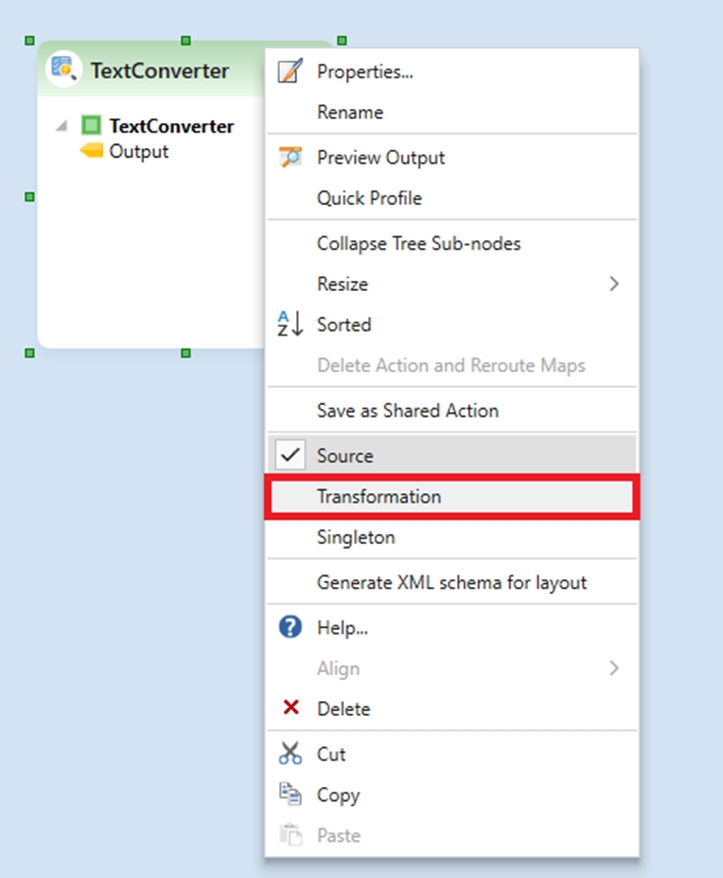
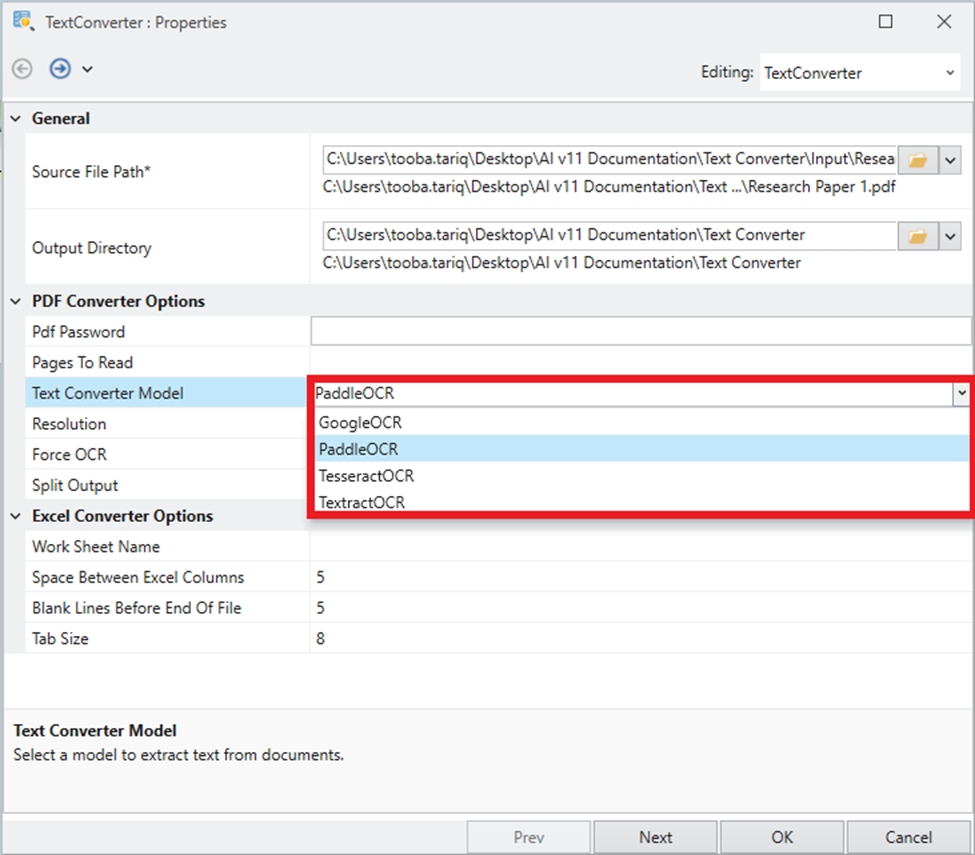
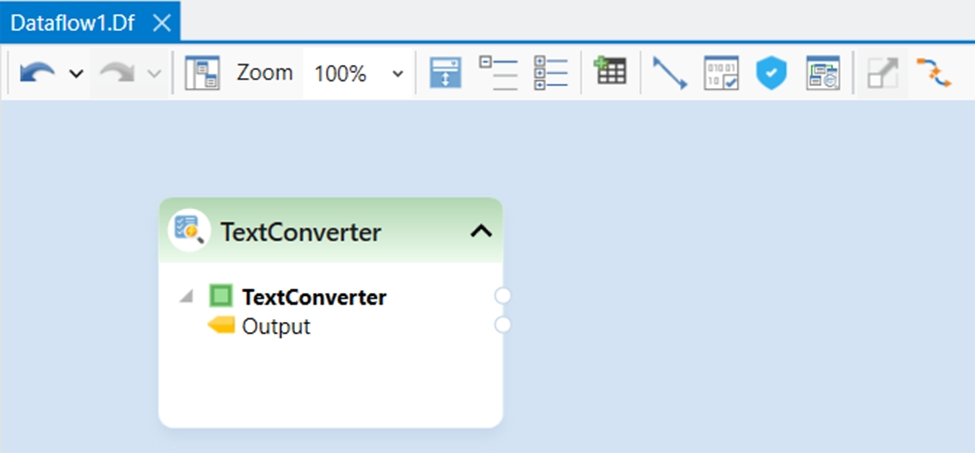
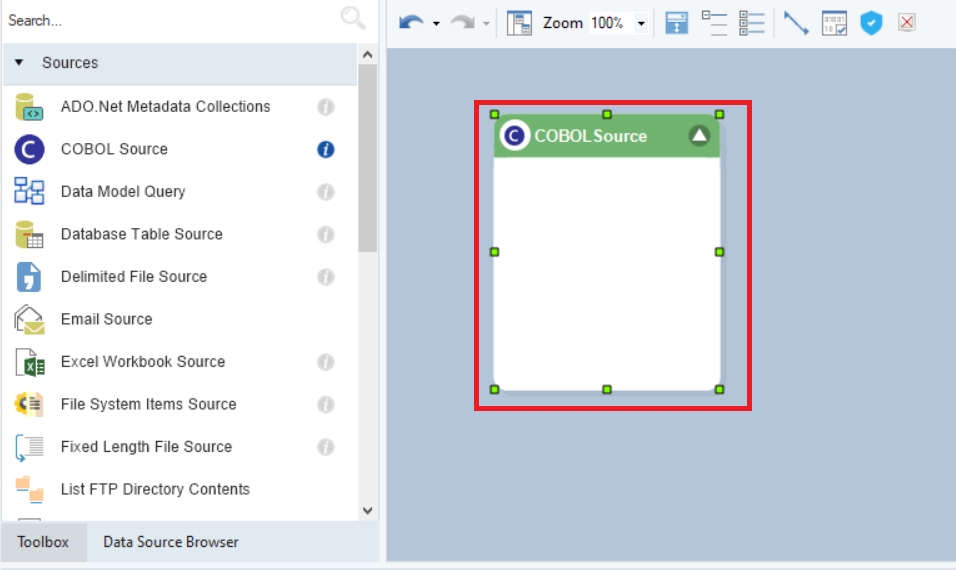

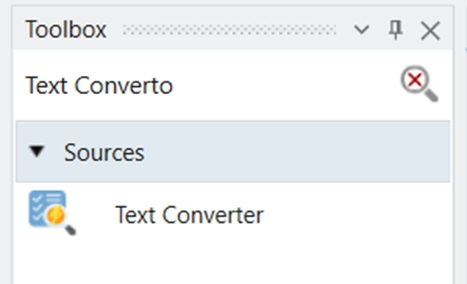

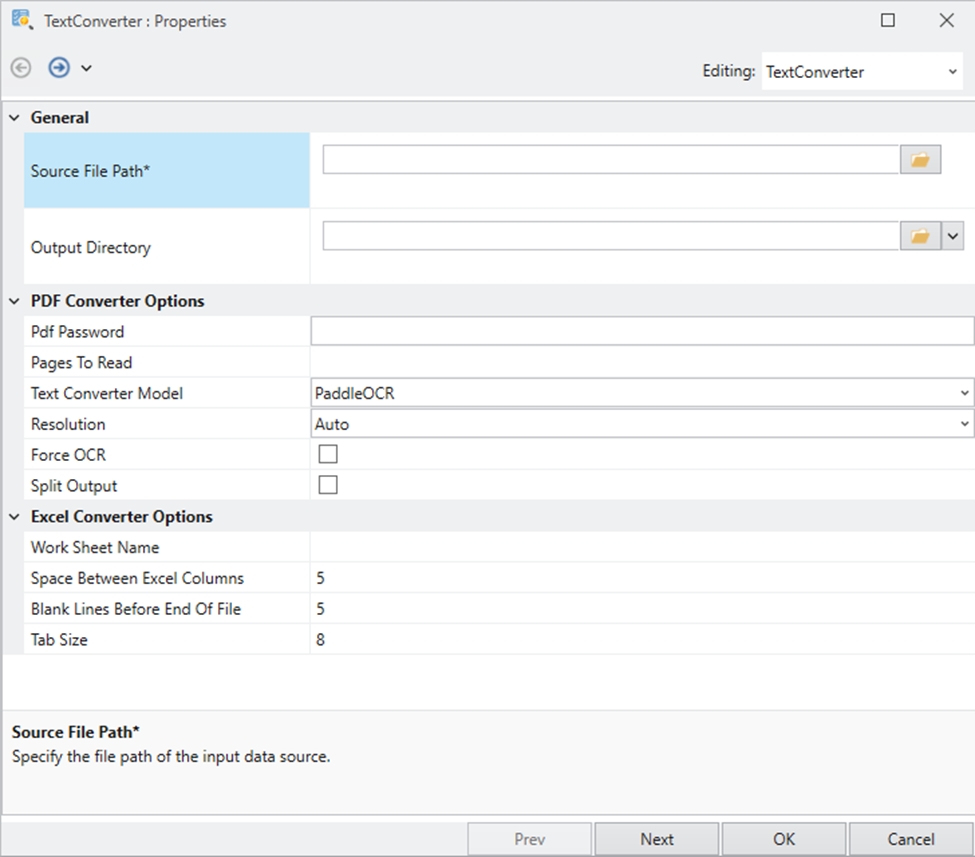
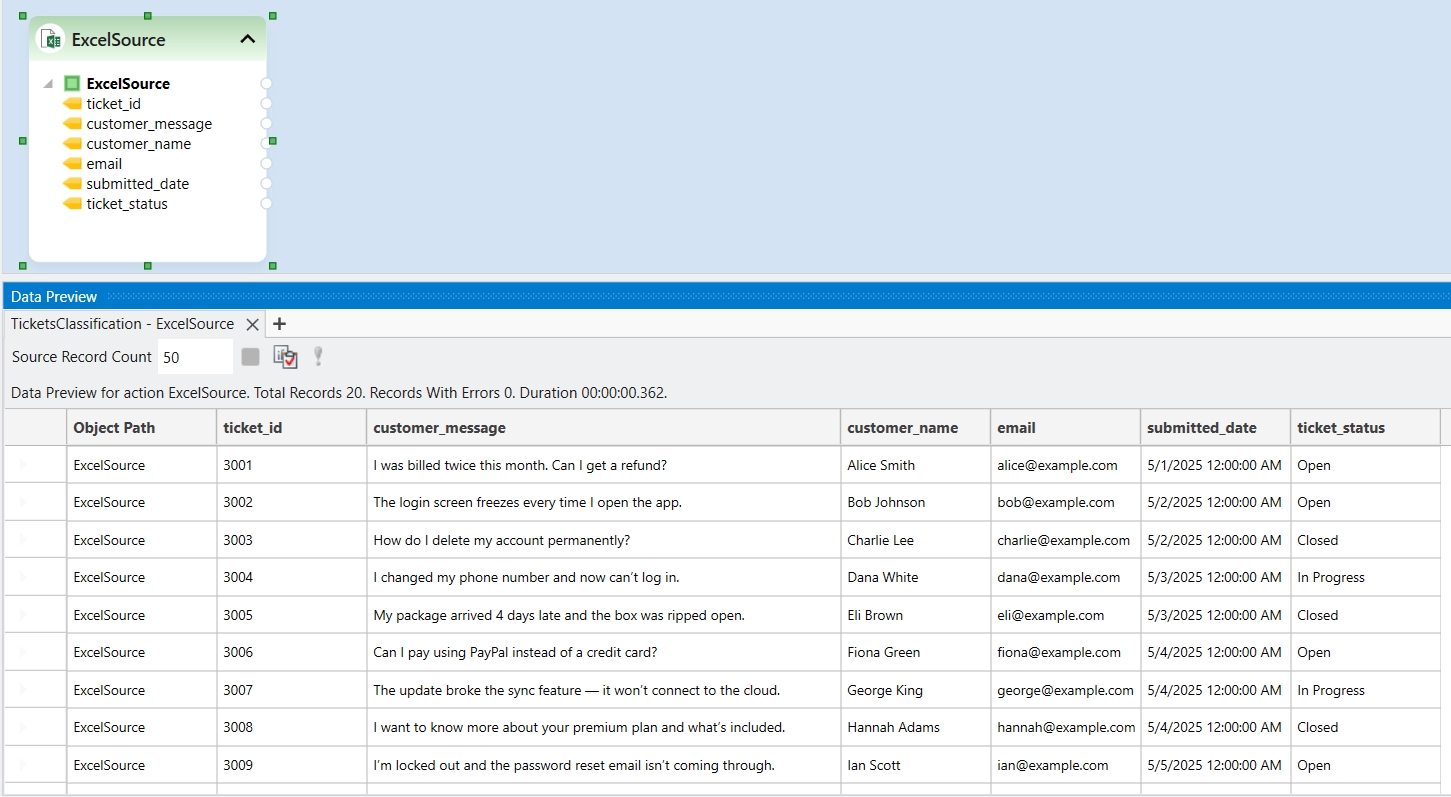
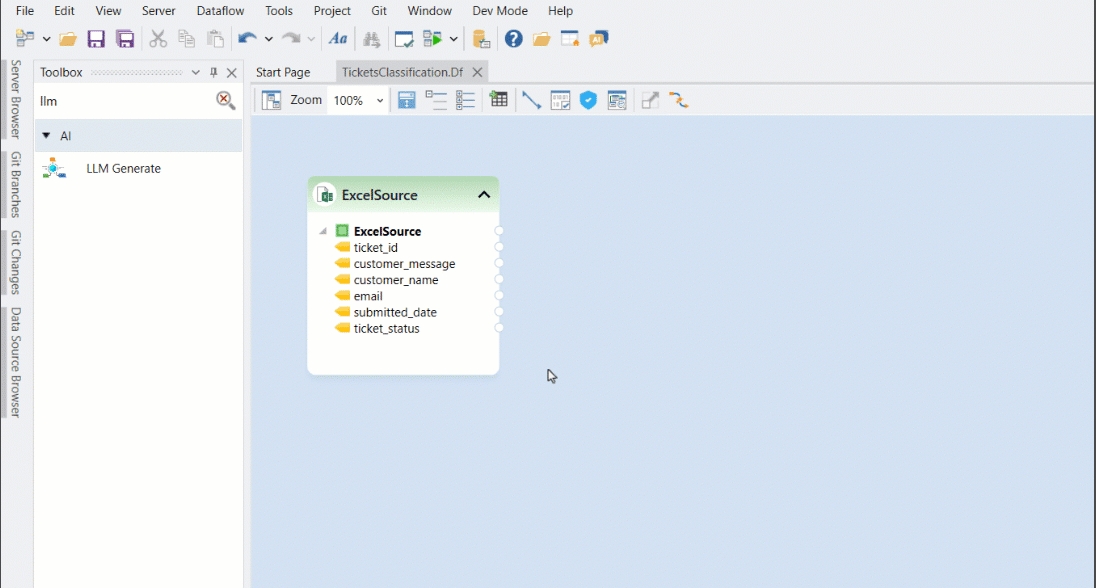
The Database Table Source object provides the functionality to retrieve data from a database table. It also provides change data capture functionality to perform incremental reads, and supports multi-way partitioning, which partitions a database table into multiple chunks and reads these chunks in parallel. This feature brings about major performance benefits for database reads.
The object also enables you to specify a WHERE clause and sort order to control the result set.
In this article, we will be discussing how to:
Get a Database Table Source object on the dataflow designer.
Configure the Database Table Source object according to the required layout and settings.
We will also be discussing some best practices for using a Database Table Source object.
To get a Database Table Source from the Toolbox, go to Toolbox > Sources > Database Table Source. If you are unable to see the Toolbox, go to View > Toolbox or press Ctrl + Alt + X.
Drag-and-drop the Database Table Source object onto the designer.
You can see that the dragged source object is empty right now. This is because we have not configured the object yet.
To configure the Database Table Source object, right-click on its header and select Properties from the context menu.
A dialog box will open.
This is where you can configure the properties for the Database Table Source object.
The first step is to specify the Database Connection for the source object.
Provide the required credentials. You can also use the Recently Used drop-down menu to connect to a recently connected database.
You will find a drop-down list next to the Data Provider.
This is where you select the specific database provider to connect to. The connection credentials will vary according to the provider selected.
Test Connection to make sure that your database connection is successful and click Next.
Next, you will see a Pick Source Table and Reading Options window. On this window, you will select the table from the database that you previously connected to and configure the table from the given options.
From the Pick Table field, choose the table that you want to read the data from.
Once you pick a table, an icon will show up beside the Pick Table field.
View Data: You can view data in a separate window in Astera.
View Schema: You can view the schema of your database table from here.
View in Database Browser: You can see the selected table in the Database Source Browser in Astera.
Table Partition Options
This feature substantially improves the performance of large data movement jobs. Partitioning is done by selecting a field and defining value ranges for each partition. At runtime, Astera generates and runs multiple queries against the source table and processes the result set in parallel.
Check the Partition Table for Reading option if you want your table to be read in partitions.
You can specify the Number of Partitions.
The Pick Key for the Partition drop-down will let you choose the key field for partitioning the table.
The Favor Centerprise Layout option is useful in cases where your source database table layout has changed over time, but the layout built in Astera is static. And you want to continue to use your dataflows even with the updated source database table layout. You check this option and Astera will favor its own layout over the DB layout.
Check the Trim Trailing Spaces option if you want to remove the trailing whitespaces.
Dynamic Layout
Checking the Dynamic Layout option enables the two following options, Add Fields in Subsequent Objects, and Delete Fields in Subsequent Objects. These options can also be unchecked by users.
Add Fields in Subsequent Objects: Checking this option ensures that a field is definitely added in subsequent objects in a flow in case additional fields are manually added in the source database by the user or need to be added into the source database.
Delete Fields in Subsequent Objects: Checking this option ensures that a field is definitely deleted from subsequent objects in a flow in case of deletion from the source database.
Select Full Load if you want to read the entire table.
Select Incremental Load Based on Audit Fields to perform an incremental read. Astera will start reading the records from the last read.
Checking the Perform full load on next run option will override the incremental load function from the next run onwards and will perform a full load on it.
Use Audit Field to compare when the last read was performed on the dataset.
Specify the path to the file in the File Path, that will store incremental transfer information.
The next window is the Layout Builder. In this window you can modify the layout of your database table.
If you want to delete a field from your dataset, click on the serial column of the row that you want to delete. The selected row will be highlighted in blue.
Right-click on the highlighted line, a context menu will appear in which you will have the option to Delete.
Selecting Delete will delete the entire row.
The field is now deleted from the layout and will not appear in the output.
If you want to change the position of any field and want to move it below or above another field in the layout, you can do this by selecting the row and using the Move up/Move down keys.
For example: We want to move the Country field right below the Region field. We will select the row and use the Move up key to move the field from the 9th row to the 8th.
After you are done customizing the Layout Builder, click Next. You will be taken to a new window, Where Clause. Here, you can provide a WHERE clause, which will filter the records from your database table.
For instance, if you add a WHERE clause that selects all the customers from the country “Mexico” in the Customers table.
Your output will be filtered out and only the records that satisfy the WHERE condition will be read by Astera.
Once you have configured the Database Table Source object, click Next.
A new window, Config Parameters will open. Here, you can define parameters for the Database Table Source object.
Parameters can provide easier deployment of flows by eliminating hardcoded values and provide an easier way of changing multiple configurations with a simple value change.
Click OK.
You have successfully configured your Database Table Source object. The fields from the source object can now be mapped to other objects in a dataflow.
To get the Database Table Source object from the Data Source Browser, go to View > Data Source > Data Source Browser or press Ctrl + Alt + U.
A new window will open. You can see that the pane is empty right now. This is because we are not connected to any database source yet.
To connect the browser to a database source, go to the Add Data Source icon located at the top left corner of the pane and click on Add Database Connection.
A Database Connection box will open.
This is where you can connect to your database from the browser.
You can either connect to a Recently Used database or create a new connection.
To create a new connection, select your Data Provider from the drop-down list.
The next step is to fill in the required credentials. Also, to ensure that the connection is successfully made, select Test Connection.
Once you test your connection, a dialog box will indicate whether the test was successful or not.
Click OK.
Once you have connected the browser, your Data Source Browser will now have the databases that you have on your server.
Select the database that you want to work with and then choose the table you want to use.
Drag-and-drop Customers table onto the designer in Astera.
If you expand the dropped object, you will see that the layout for the source file is already built. You can even preview the output at this stage.
Right-clicking on the Database Table Source object will also display options for the database table.
Show in Data Source Browser - Will show where the table resides in the database in the Database Browser.
View Table Data - Builds a query and displays all the data from the table.
View Table Schema - Displays the schema of the database table.
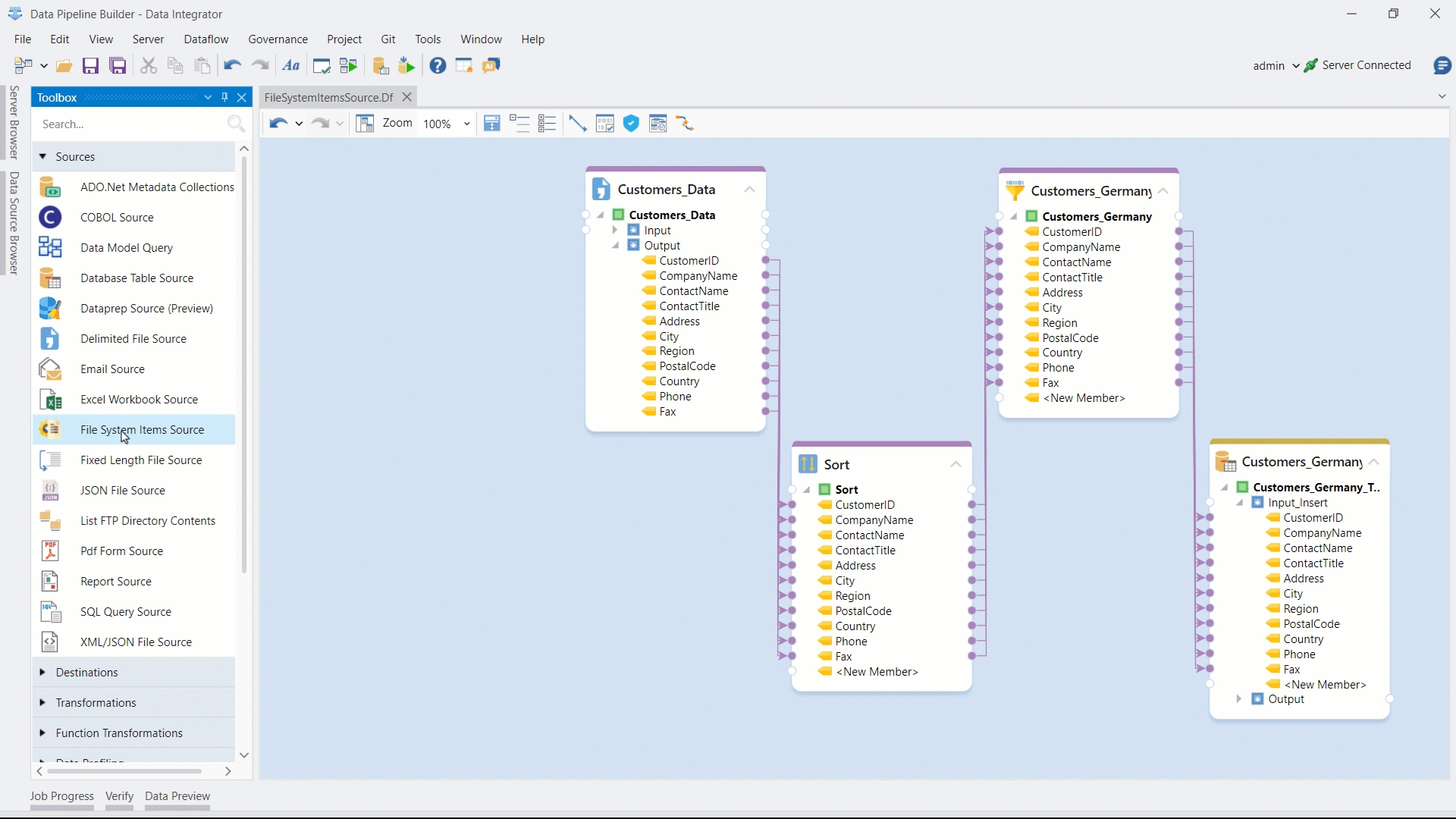
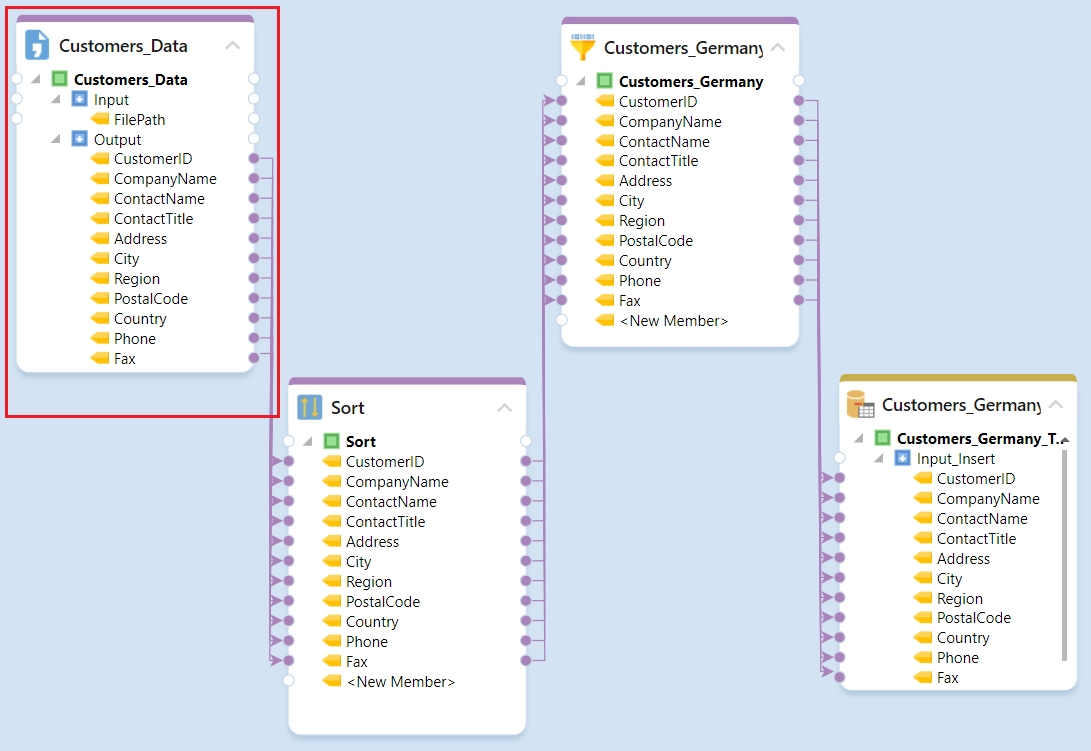

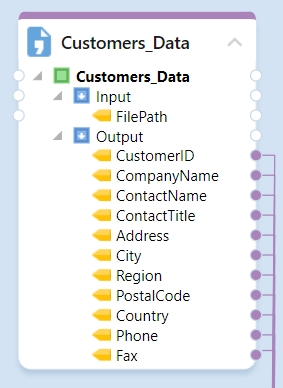


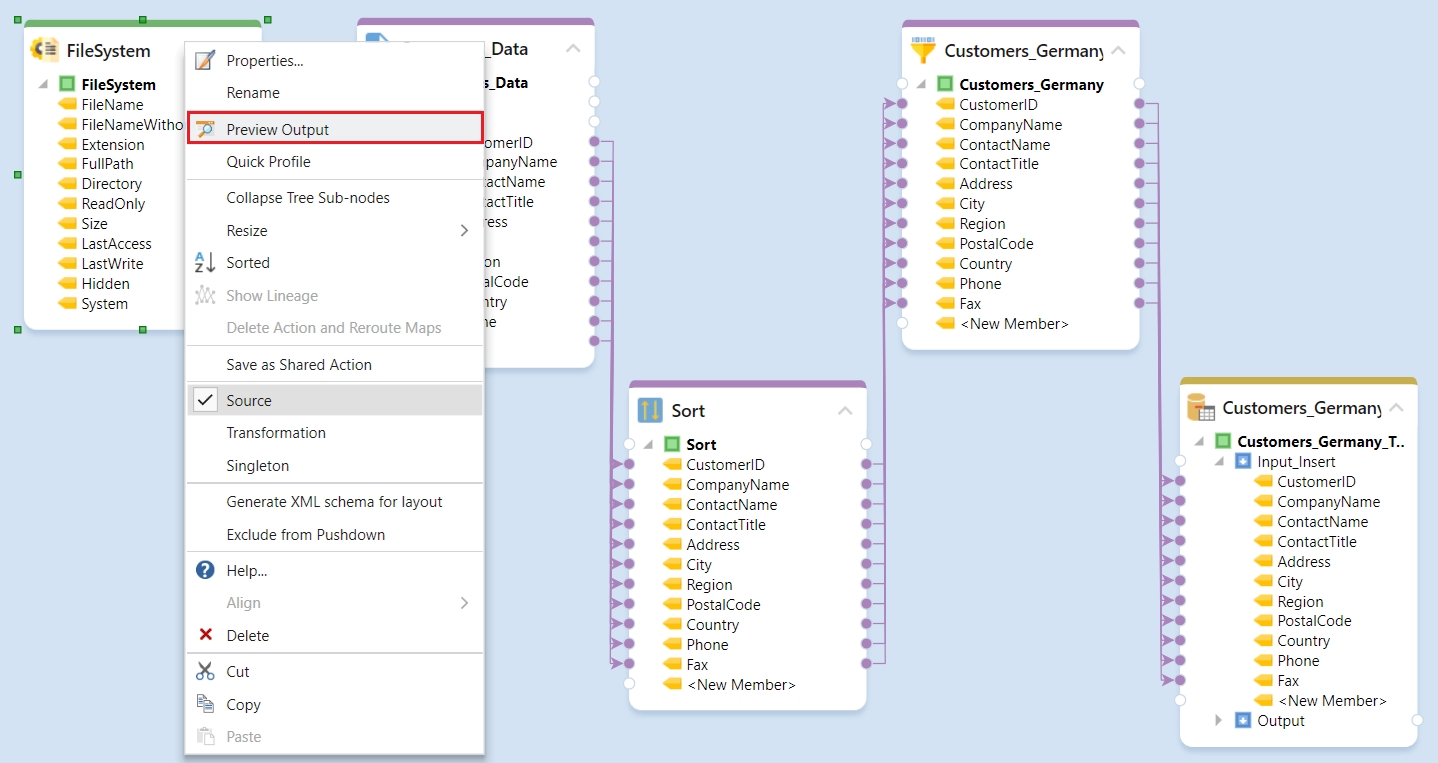

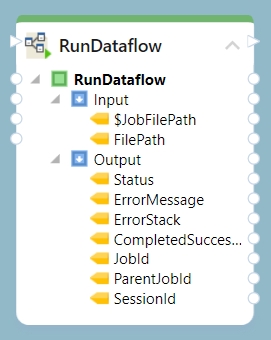
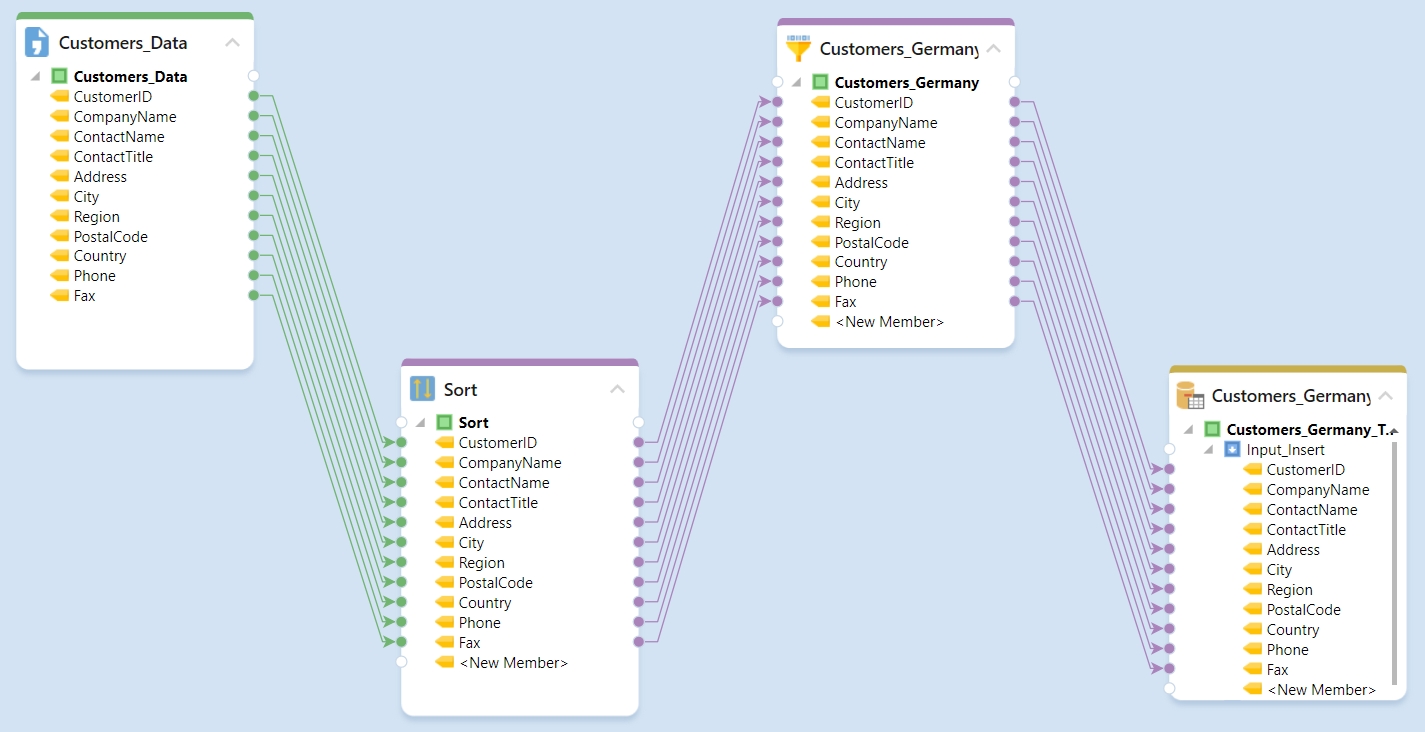

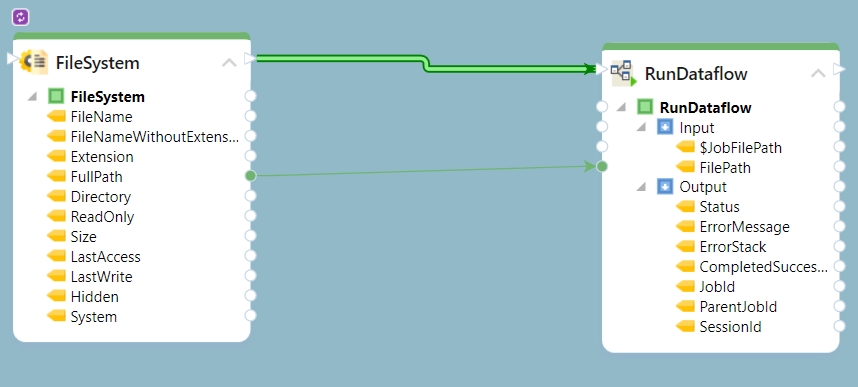
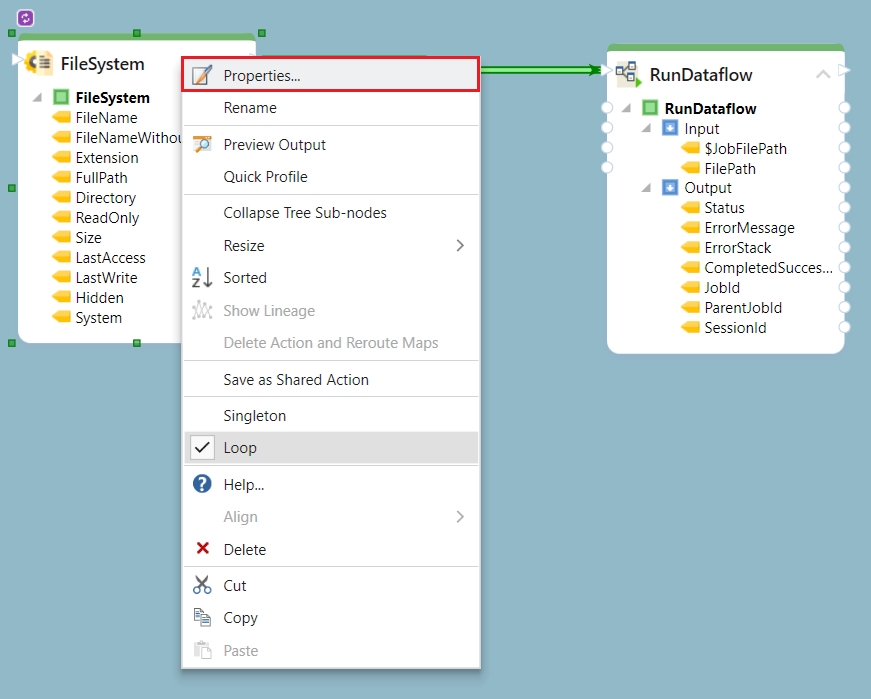
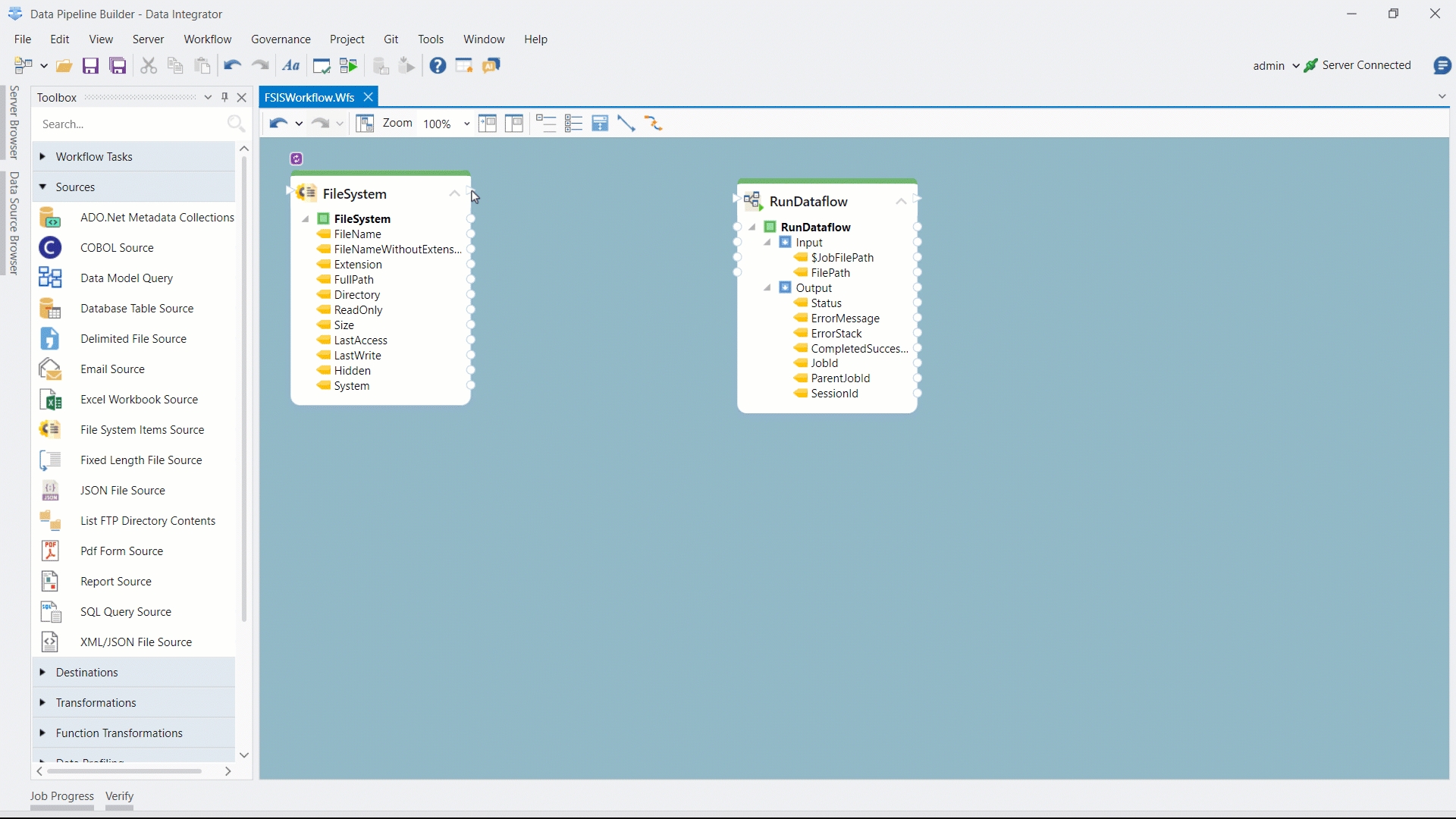
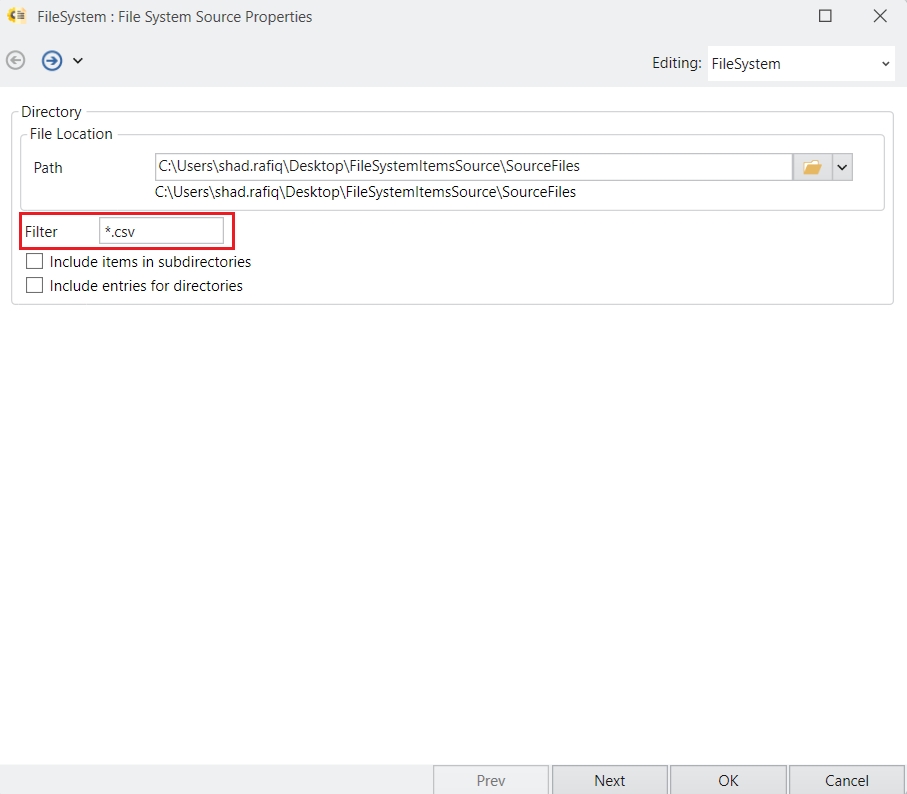

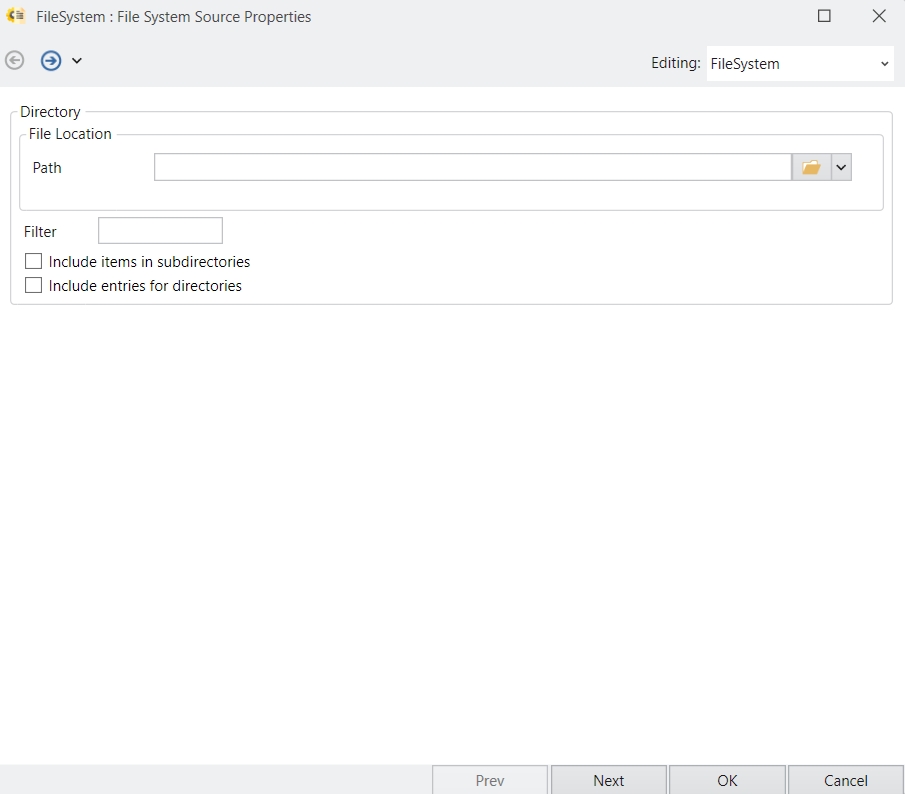

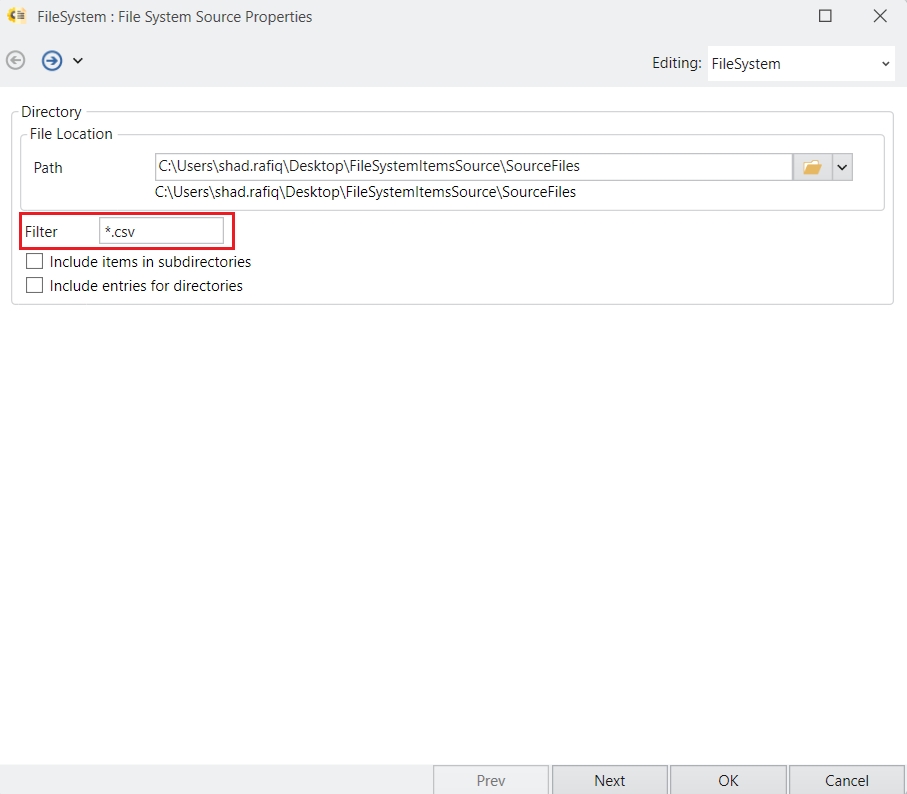
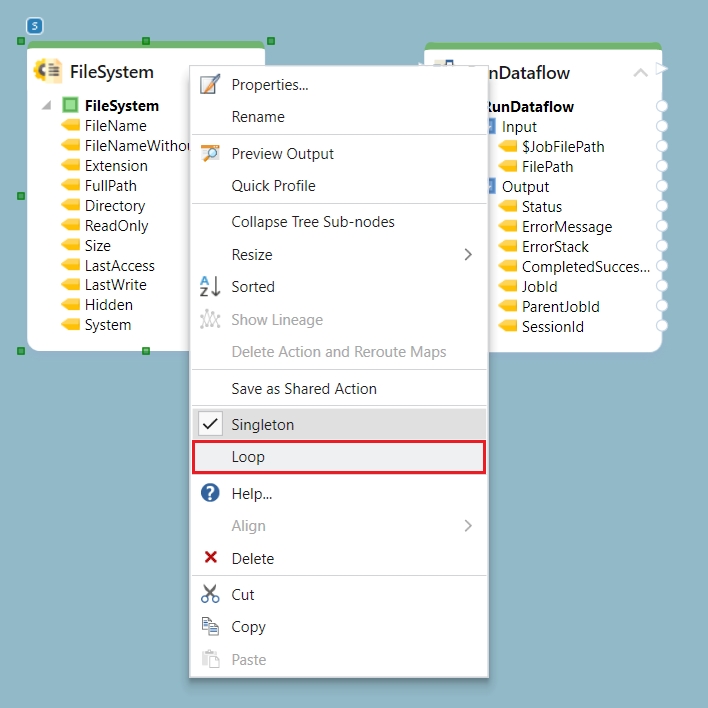

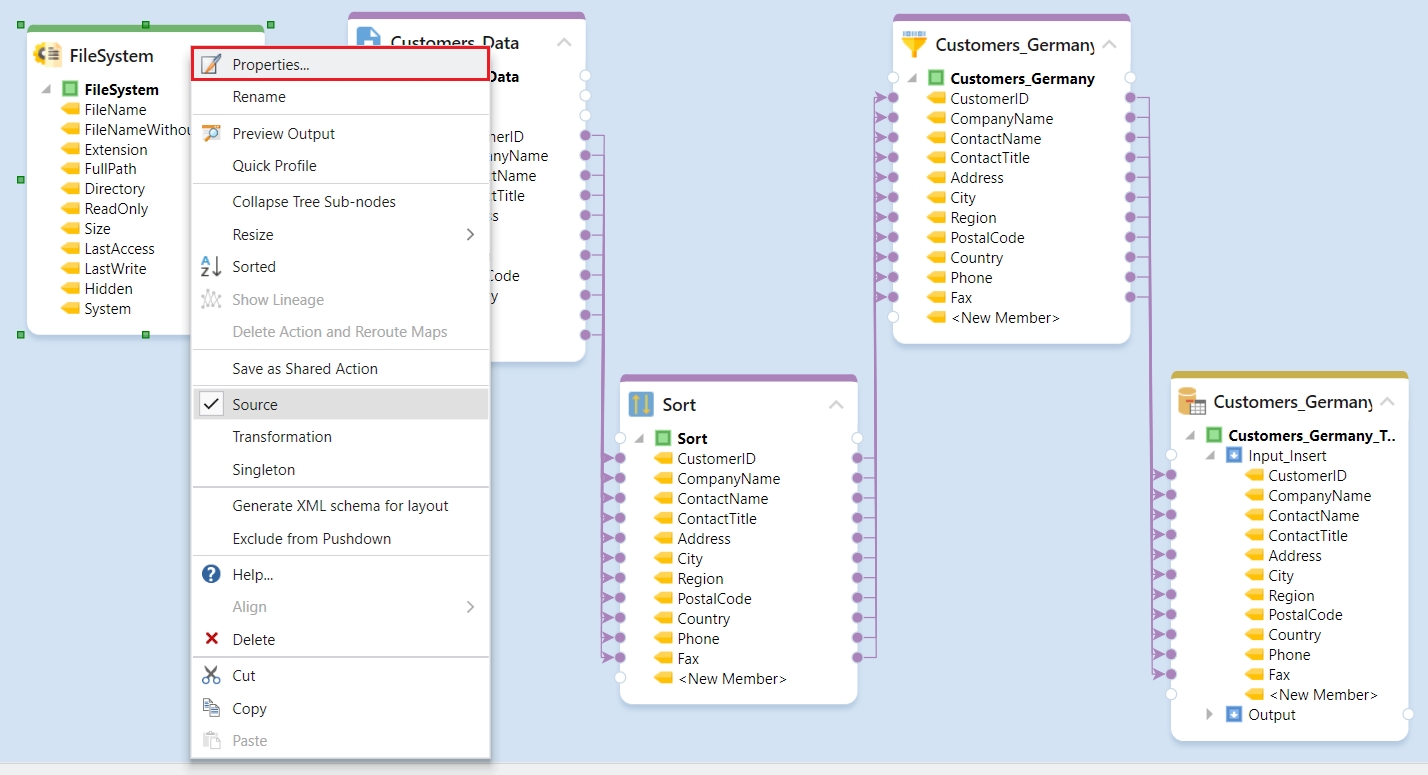

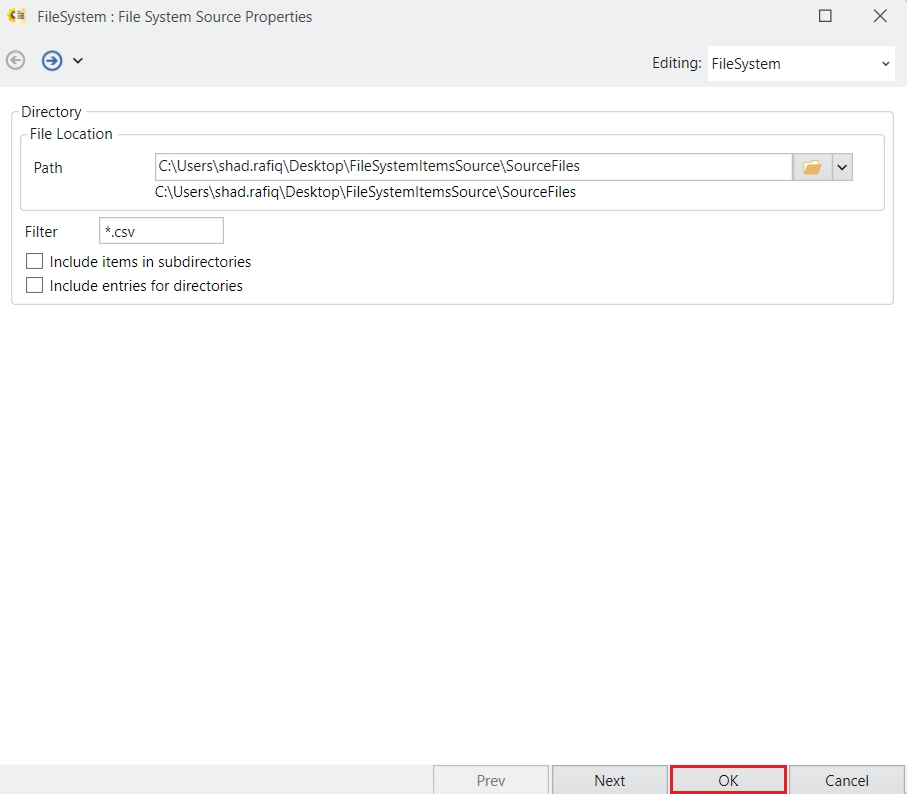
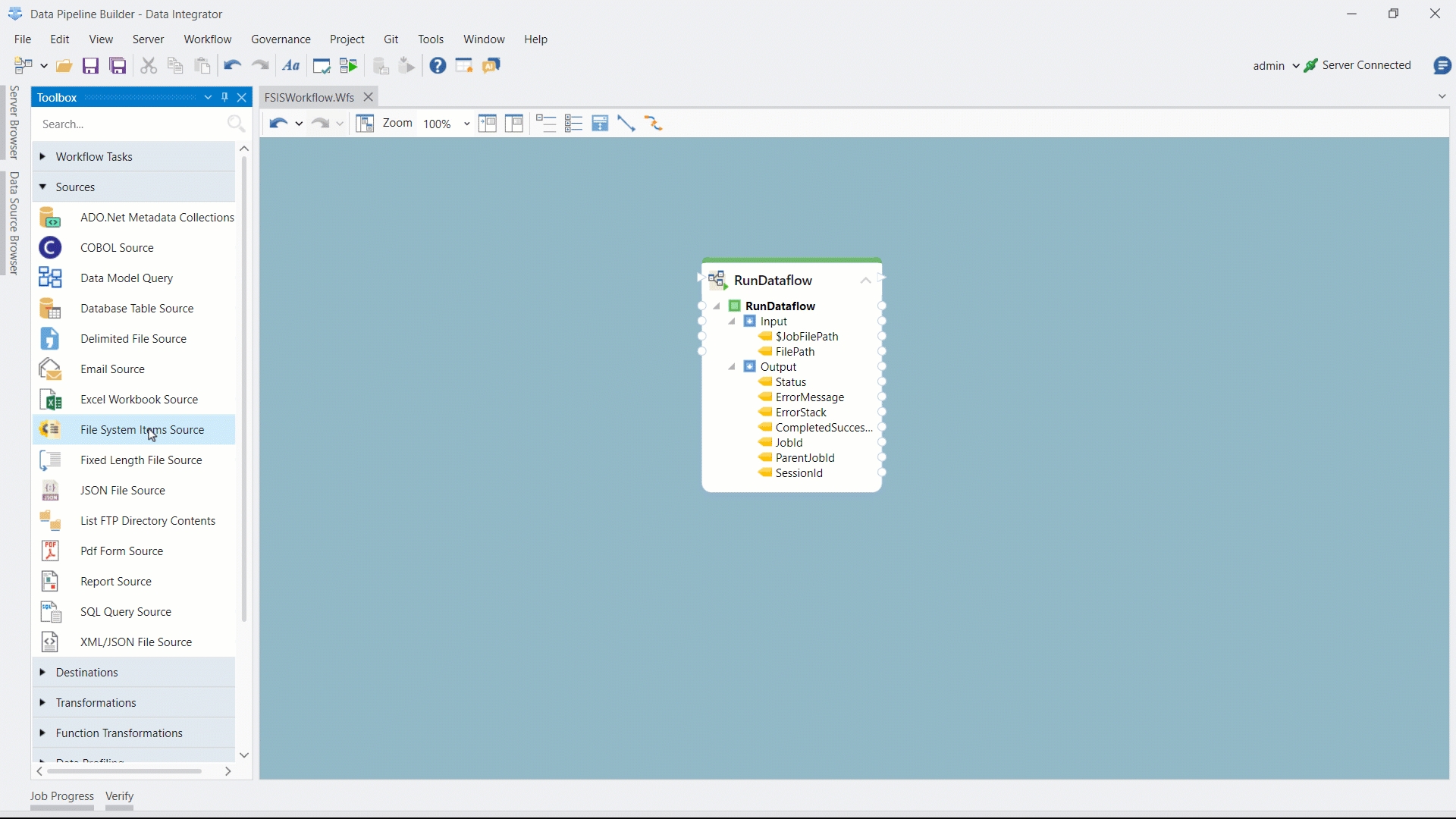
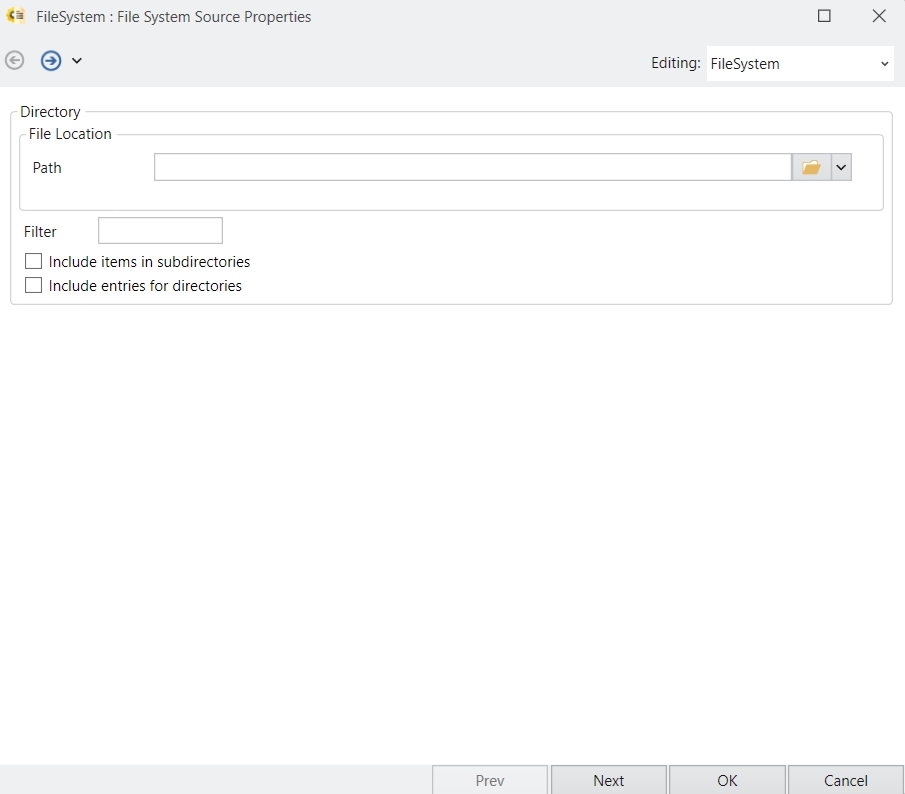
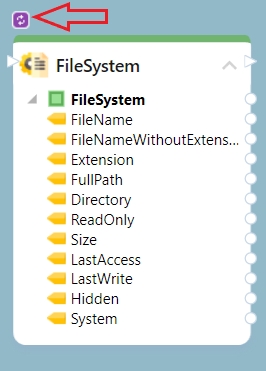
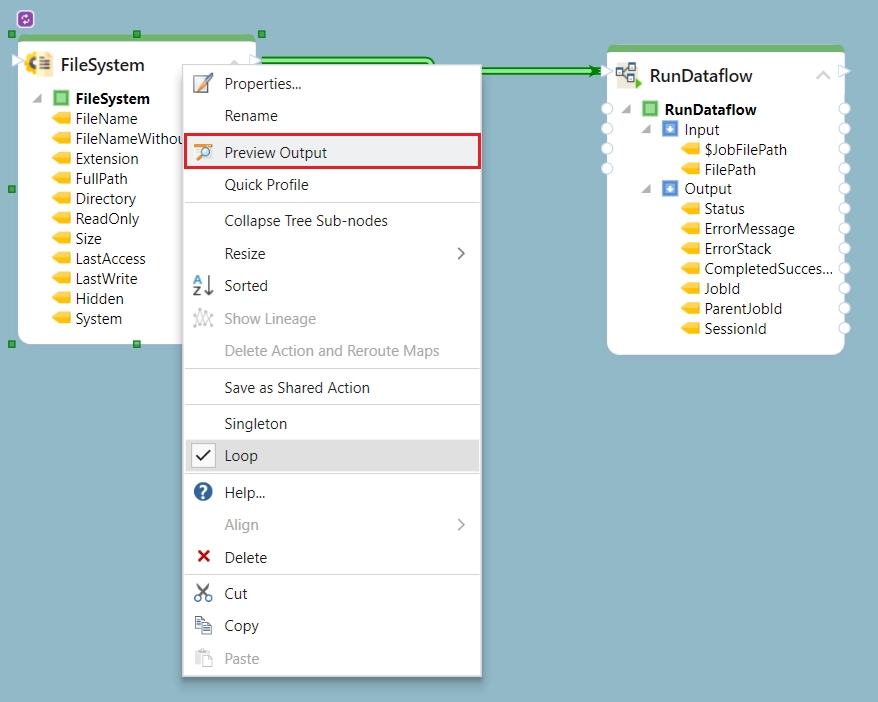


Next, two checkboxes can be configured according to the user application.
Incremental Read Options
The Database Table Source object provides incremental read functionality based on the concept of audit fields. Incremental read is one of the three change data capture approaches supported by Astera. Audit fields are fields that are updated when a record is created or modified. Examples of audit fields include created date time, modified date time, and version number.
Incremental read works by keeping a track of the highest value for the specified audit field. On the next run, only the records with value higher than the saved value are retrieved. This feature is useful in situations where two applications need to be kept in sync and the source table maintains audit field values for rows.
In this section, we will cover how to get Fixed Length File Source object on the dataflow designer from the Toolbox.
To get a Fixed Length File Source object from the Toolbox, go to Toolbox > Sources > Fixed Length File Source. If you are unable to see the Toolbox, go to View > Toolbox or press Ctrl + Alt + X.
Drag-and-drop the Fixed Length File Source object onto the designer.
You can see that the dragged source object is empty right now. This is because we have not configured the object yet.
To configure the Fixed Length File Source object, right-click on its header and select Properties from the context menu.
When you select the Properties option from the context menu, a dialog box will open.
This is where you configure the properties for Fixed Length File Source object.
The first step is to provide the File Path for the Fixed Length File Source object. By providing the File Path you are building the connectivity to the source dataset.
File Contains Headers
Record Delimiter is specified as
The dialog box has some other configuration options:
If the source File Contains Header and you want the Astera source layout to read headers from the source file, check this option.
If you want the file to be read in portions, for instance, your file has data over 1000 rows, upon selecting Partition File for Reading, Astera will read your file according to the specified Partition Count. For example, a file with 1000 rows, with the Partition Count specified as 2, will be read in two partitions of 500 rows each. This is a back-end process that makes data reading more efficient and helps in processing data faster. This will not have any effect on your output.
Record Delimiter field allows you to select the delimiter for the records in the source file. The choices available are carriage-return line-feed combination , carriage-return and line-feed**. You can also type the record delimiter of your choice instead of choosing from the available options.
In case the records do not have a delimiter and you rely on knowing the size of a record, the number in the Record Length field is used to specify the character length for a single record.
The Encoding field allows you to choose the encoding scheme for the delimited file from a list of choices. The default value is Unicode (UTF-8)
Check the This is a COBOL data file option if you are working with COBOL files and do not have COBOL copybooks, you can still import this data by visually marking fields in the layout builder and specifying field data types. For more advanced parsing of COBOL files, you can use Astera’s .
To define a hierarchical file layout and process the data file as a hierarchical file check the This is a Hierarchical File option. Astera IDE provides extensive user interface capabilities for processing hierarchical structures.
Advanced File Options
In the Header spans over field, give the number of rows that your header takes. Refer to this option when your header spans over multiple rows.
Check the Enforce exact header match option if you want the header to be read as it is.
Check the Column order in file may be different from the layout option, if the field order in your source layout is different from the field order in Astera’s layout.
Check the Column headers in file may be different from the layout option if you want to use alternate header values for your fields. The Layout Builder lets you specify alternate header values for the fields in the layout.
Check the Use SmartMatch with Synonym Dictionary option when the header values vary in the source layout and Astera’s layout. You can create a file to store the values for alternate headers. You can also use the Synonym Dictionary file to facilitate automapping between objects on the flow diagram that use alternate names in field layouts.
To skip any unwanted rows at the beginning of your file, you can specify the number of records that you want to omit through the Skip initial records option.
Raw text filter
If you do not want to apply any filter and process all records, check the No filter. Process all records option.
If there is a specific value which you want to filter out, you can check the Process if begins with option and specify the value that you want Astera to read from the data, in the provided field.
If there is a specific expression which you want to filter out, you can check the Process if matches this regular expression option and give the expression that you want Astera to read from the data, in the provided field.
String Processing
String processing options come in use when you are reading data from a file system and writing it to a database destination.
Check the Treat empty string as null value option when you have empty cells in the source file and want those to be treated as null objects in the database destination that you are writing to, otherwise Astera will omit those accordingly in the output.
Check the Trim strings option when you want to omit any extra spaces in the field value.
Once you have specified the data reading options on this window, click Next.
The next window is the Length Markers window. You can put marks and specify the columns in your data.
Using the Length Markers window, you can create the layout of your fixed-length file. To insert a field length marker, you can click in the window at any point. For example, if you want to set the length of a field to contain five characters and the field starts at five, then you need to click at the marker position nine.
If you point your cursor to where the data is starting from, (in this case next to OrderID) and double-click on it, Astera will automatically detect columns and put markers in your data. Blue lines will appear as markers on the columns that will get detected.
You can modify the markers manually. To delete a marker, double-click on the column which has been marked.
In this case we removed the second marker and instead added a marker after CustomerID and EmployeeID.
In this way you can add as many markers as the number of columns/fields there are in the data set.
You can also use the Build from Specs feature to help you build destination fields based on an existing file instead of manually specifying the layout.
After you have built the layout by inserting the field markers, click Next.
The next window is the Layout Builder. On this window, you can modify the layout of your fixed length source file.
If you want to add a new field to your layout, go to the last row of your layout (Name column), which will be blank and double-click on it, and a blinking text cursor will appear. Type in the name of the field you want to add and select subsequent properties for it. A new field will be added to the source layout.
If you want to delete a field from your dataset, click on the serial column of the row that you want to delete. The selected row will be highlighted in blue.
Right-click on the highlighted line, a context menu will open where you will have the option to Delete.
Selecting Delete will delete the entire row.
The field is now deleted from the layout and will not appear in the output.
Other options that the Layout Builder provides are:
Column Name
Description
Data Type
Specifies the data type of a field, such as Integer, Real, String, Date, or Boolean.
Start Position
Specifies the position from where that column/field starts.
Length
Defines the length of a column/field.
Alignment
Specifies the alignment of the values in a column/field. The options provided are right, left, and center.
Allows Null
Controls whether the field allows blank or NULL values in it.
After you are done customizing the layout in the Object Builder window, click Next. You will be taken to a new window, Config Parameters. Here, you can define parameters for the Fixed Length File Source.
Parameters can provide easier deployment of flows by eliminating hardcoded values and provide an easier way of changing multiple configurations with a simple value change.
Once you have been through all configuration options, click OK.
The FixedLengthFileSource object is now configured.
The Fixed Length File Source object has now been modified from its previous configuration. The new object has all the modifications that we specified in the Layout Builder.
In this case, the modifications that we made were:
Separated the EmployeeID column from the OrderDate column.
Added the CustomerName column.
You have successfully configured your Fixed Length File Source object. The fields from the source object can now be mapped to other objects in a dataflow.

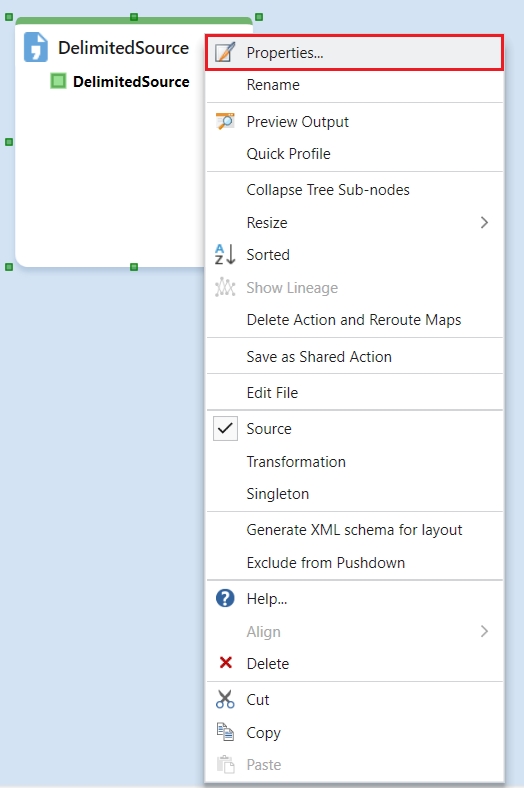
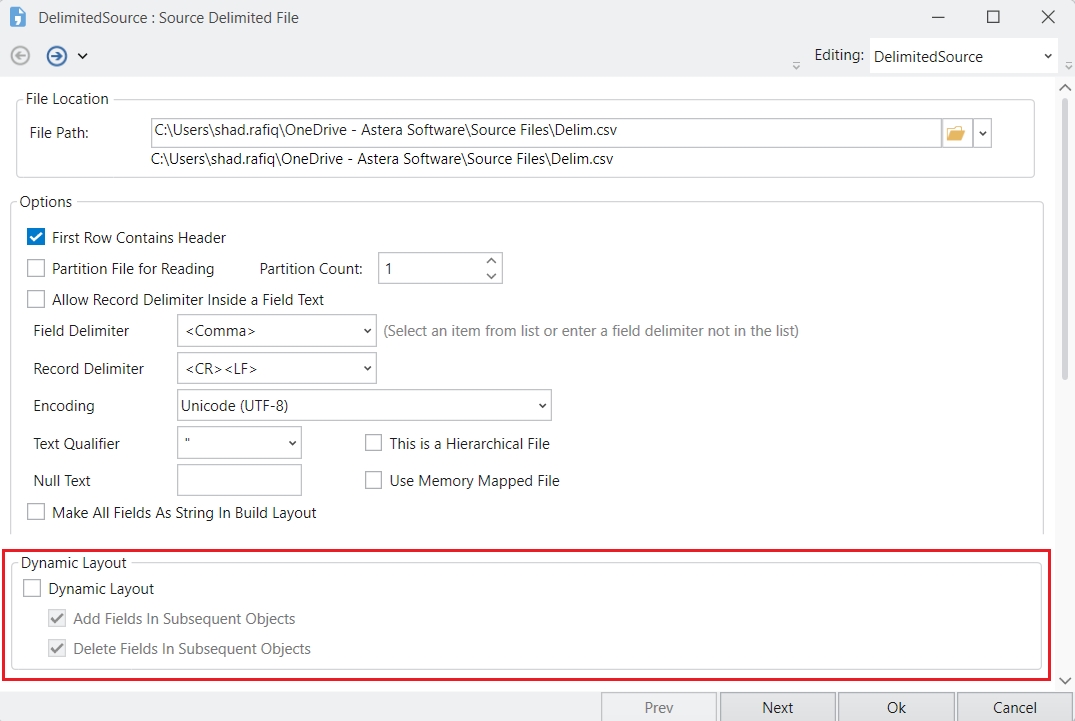
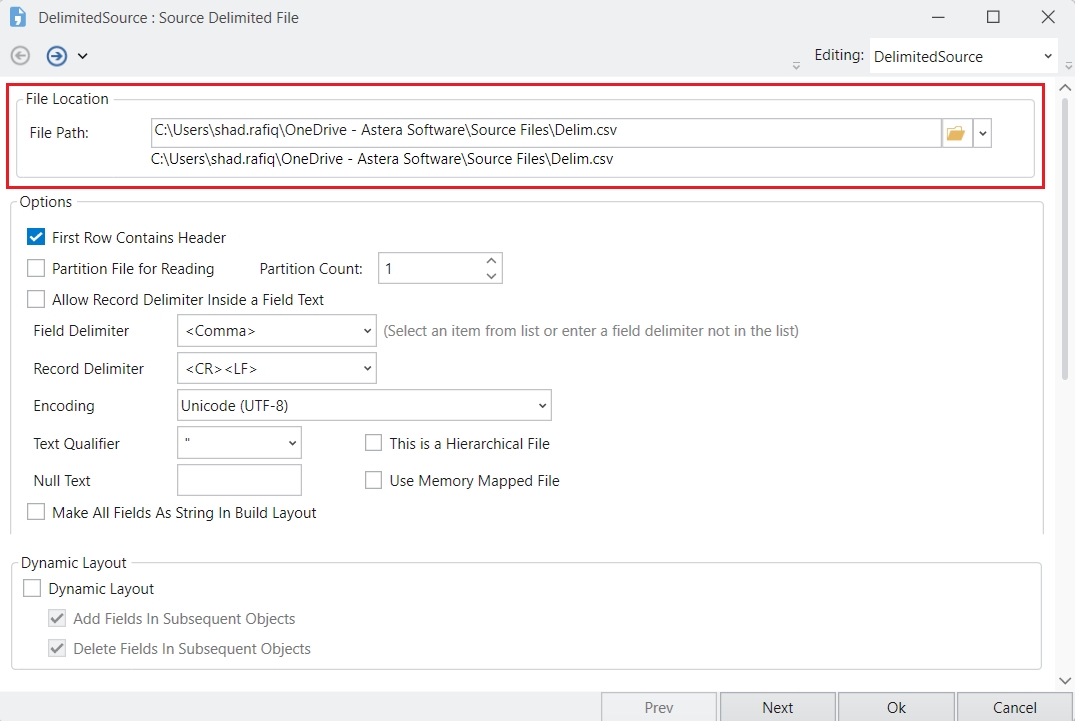
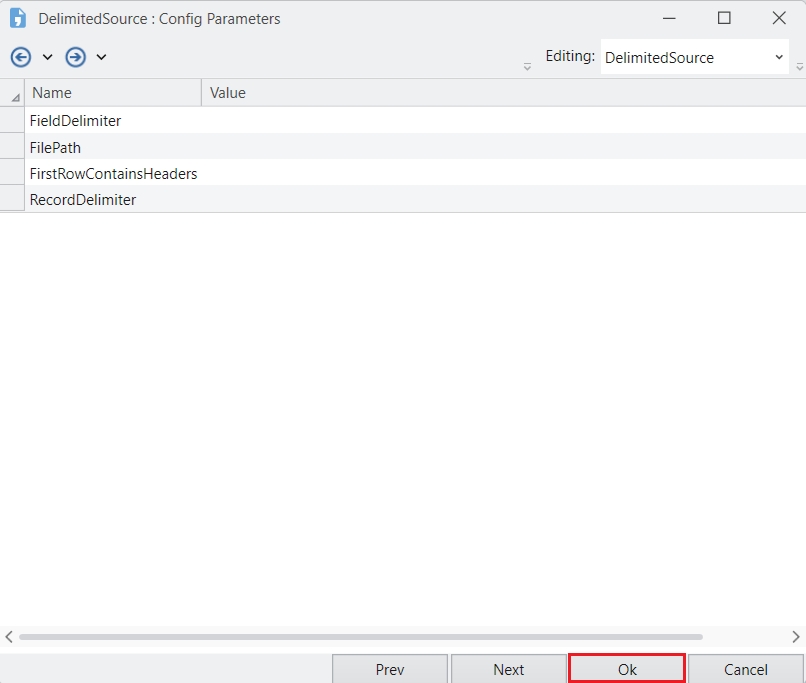
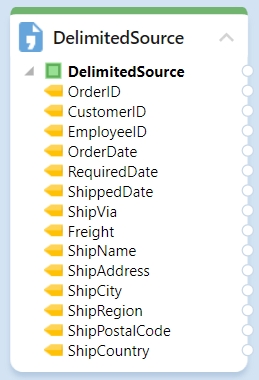
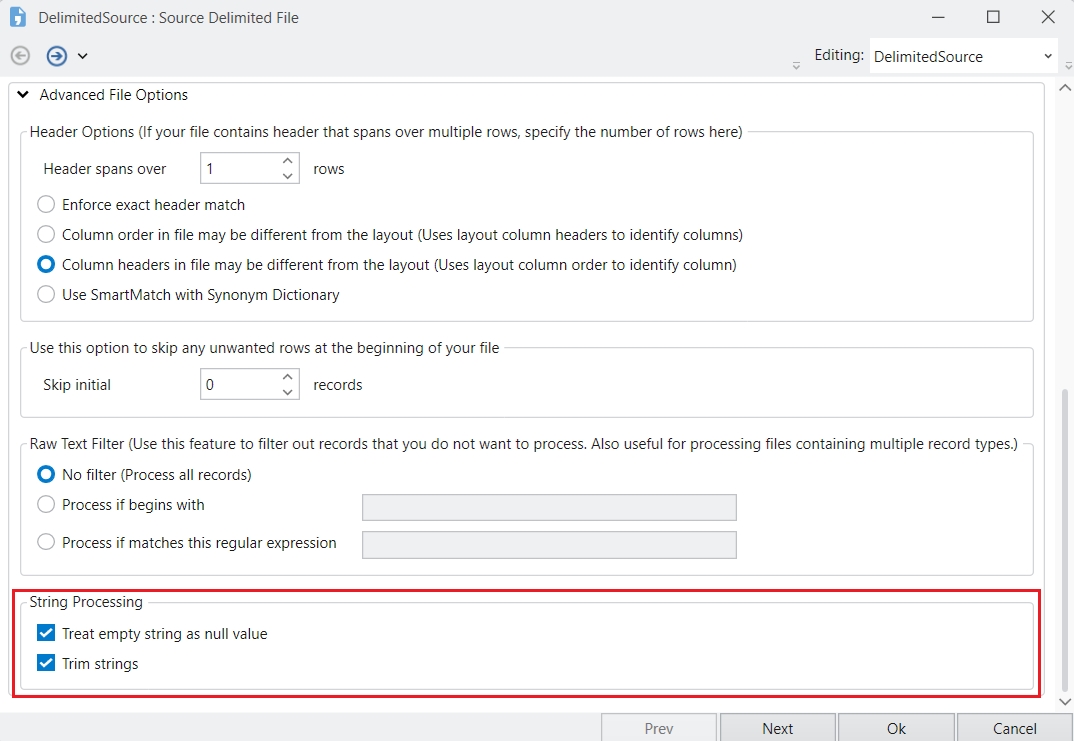

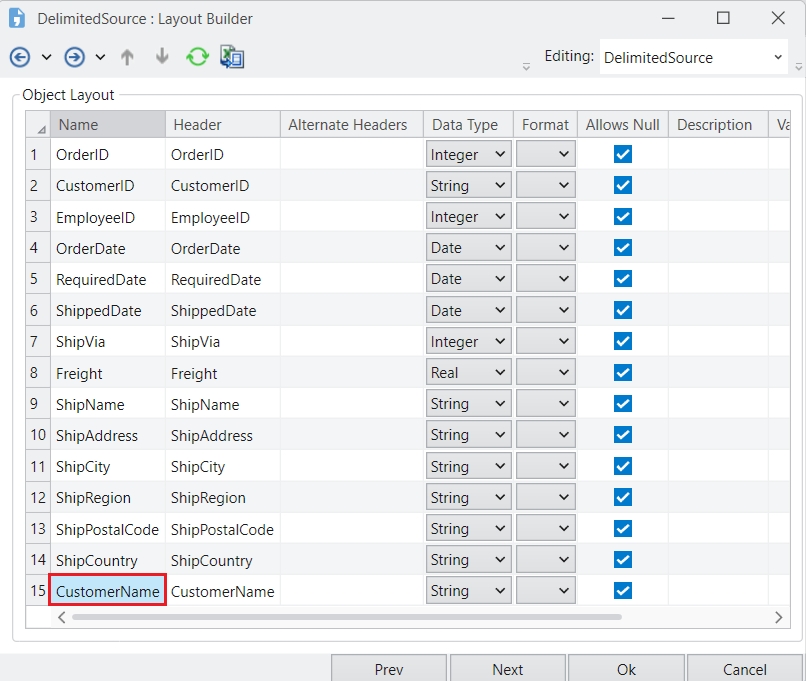
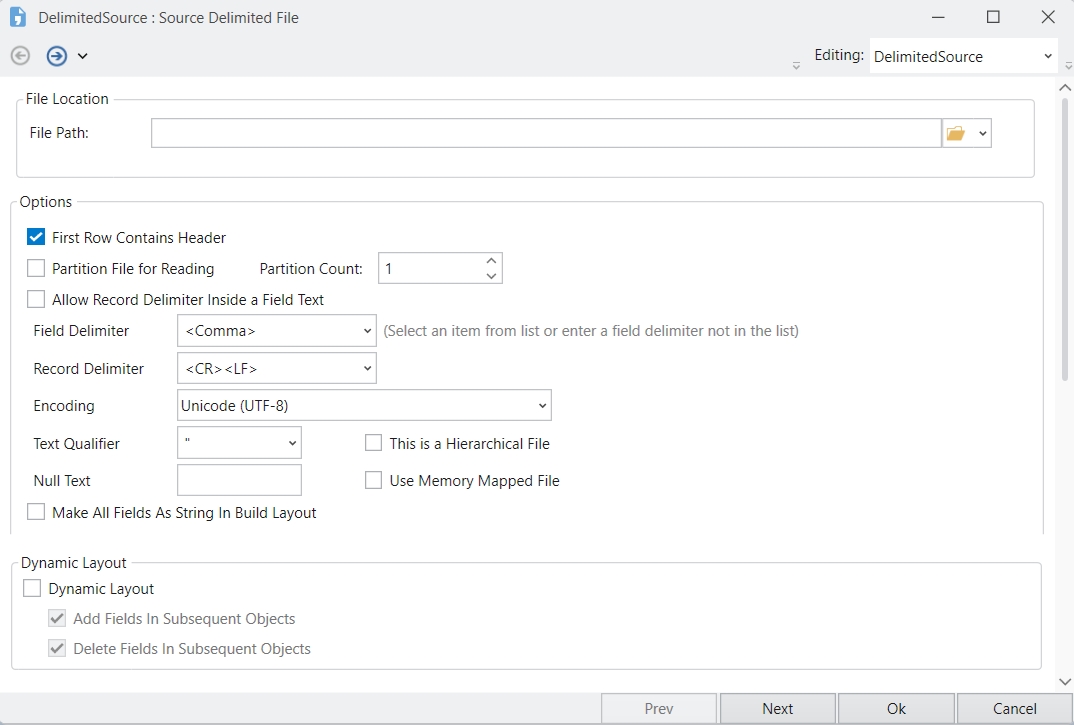
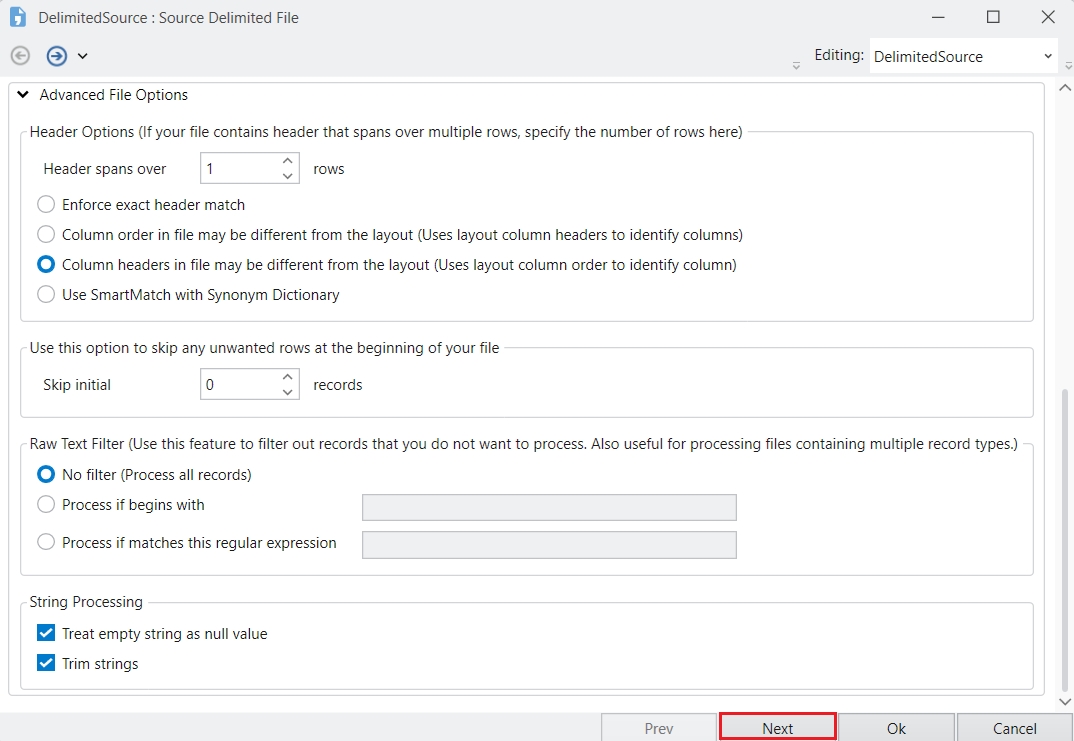
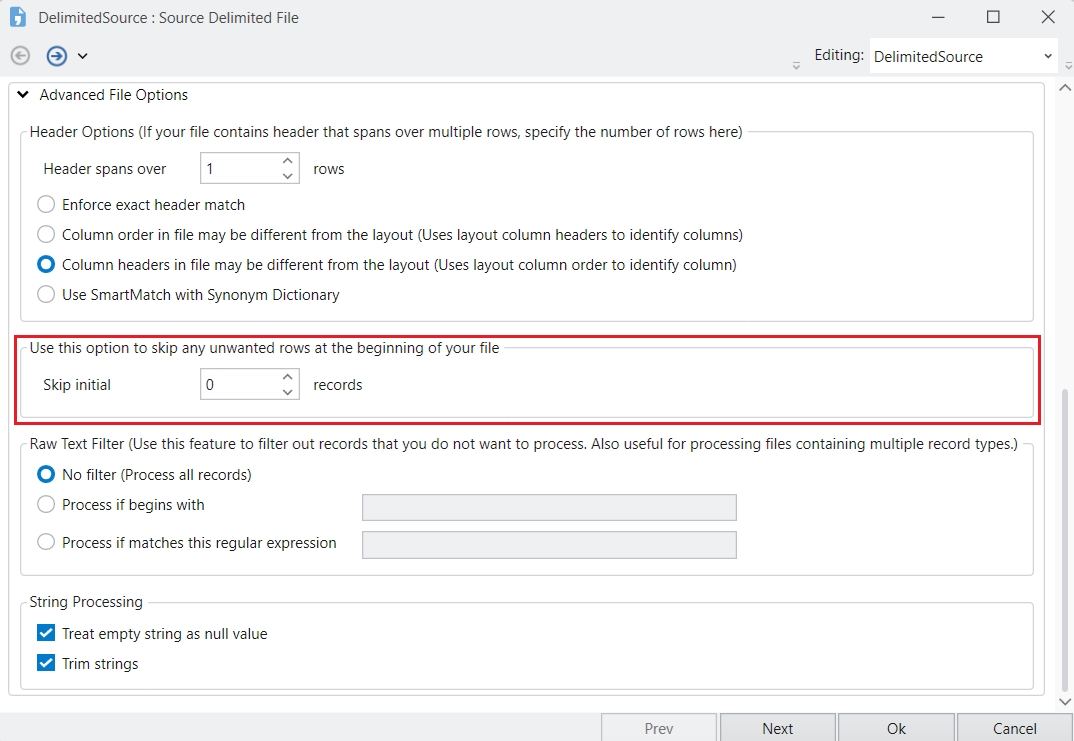
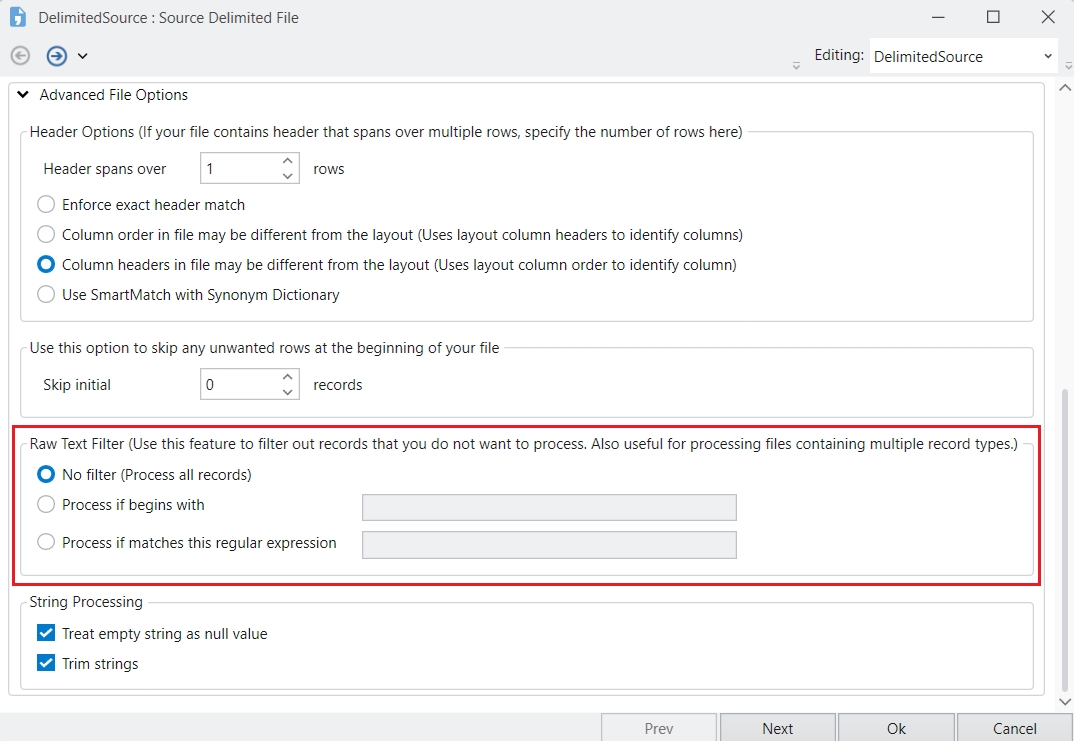
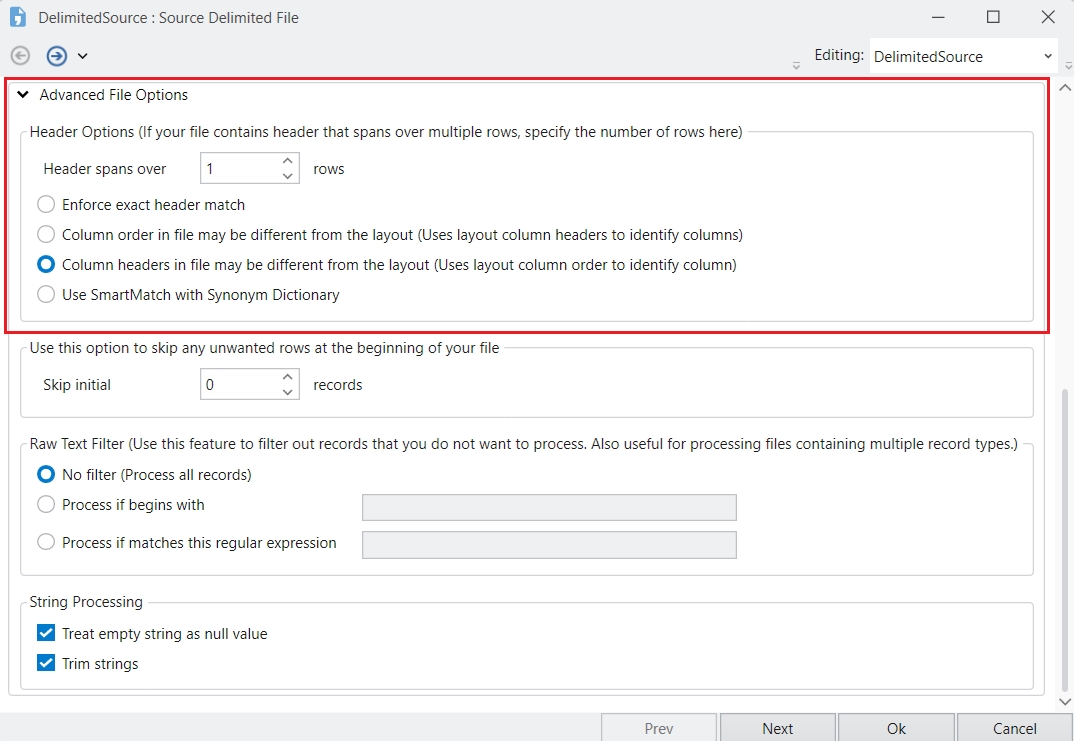
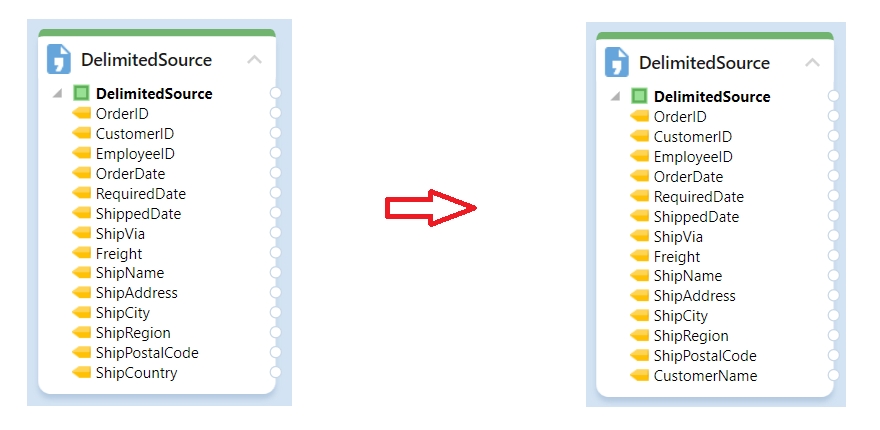
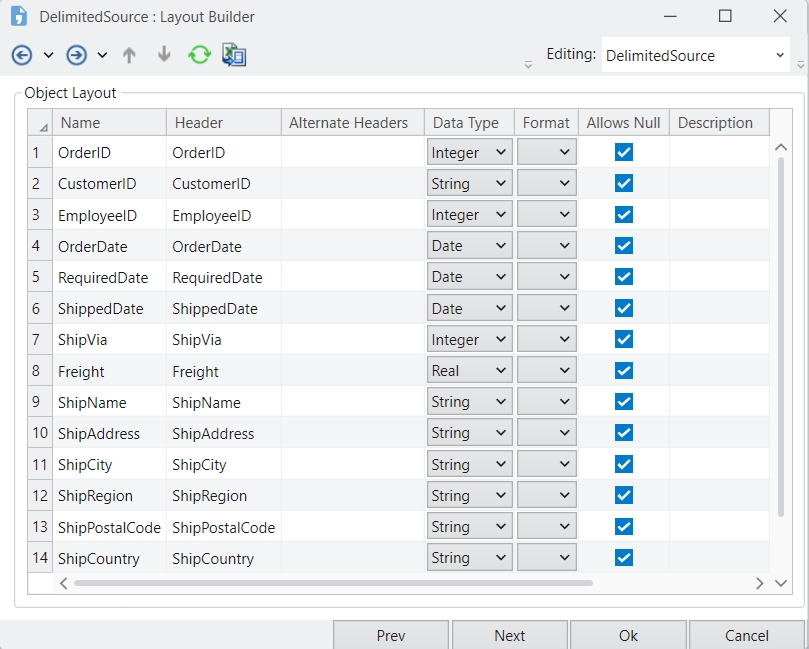
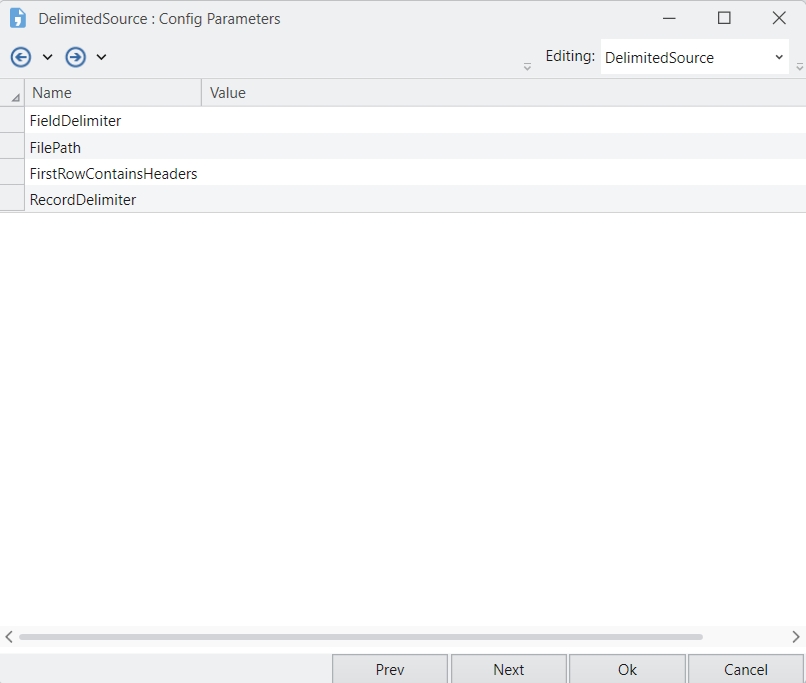
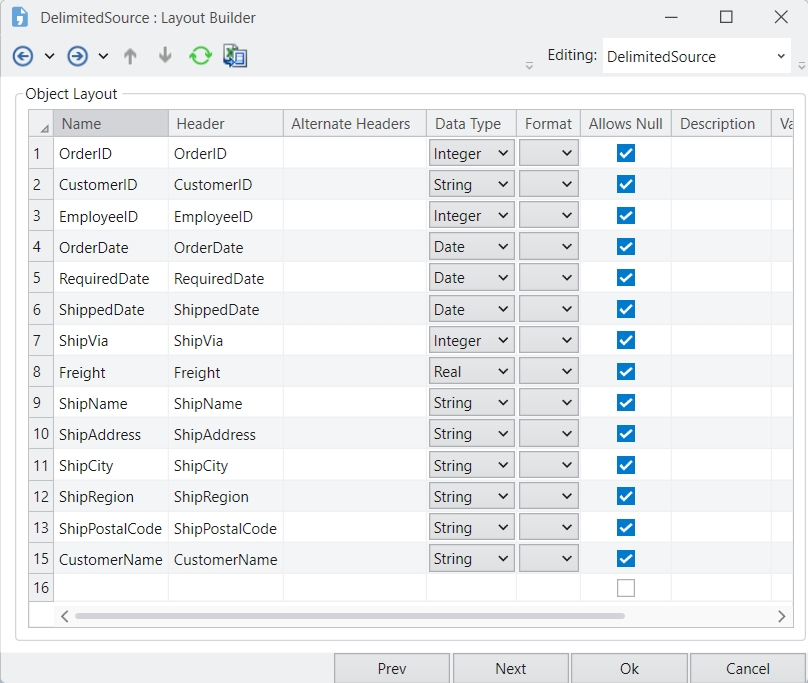
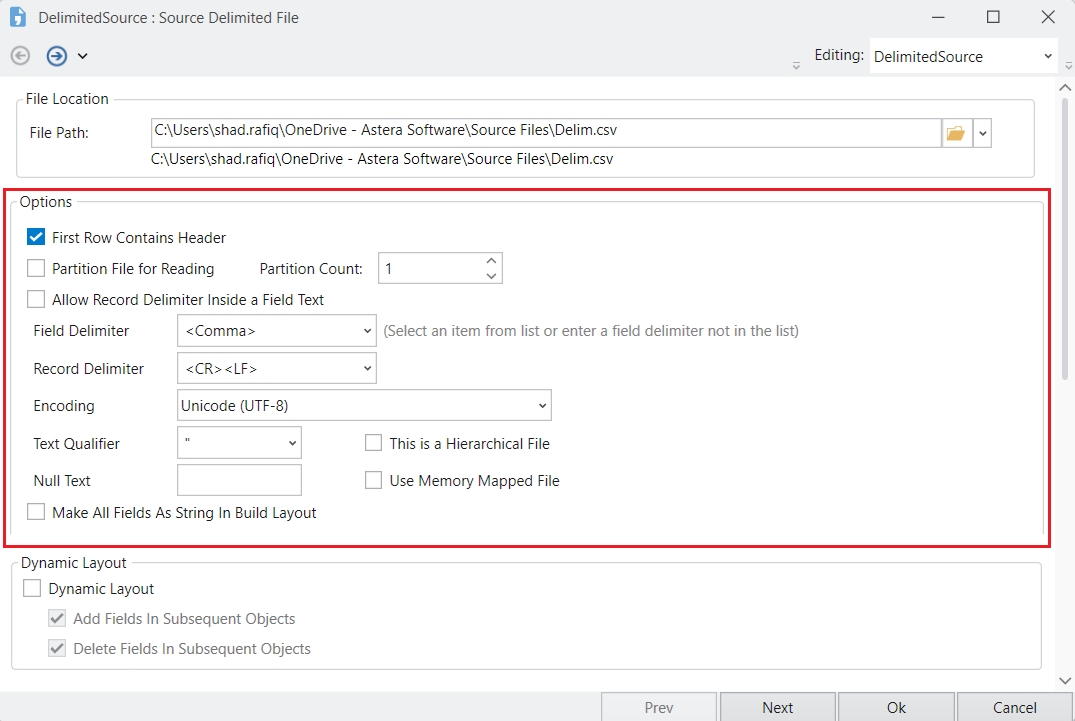

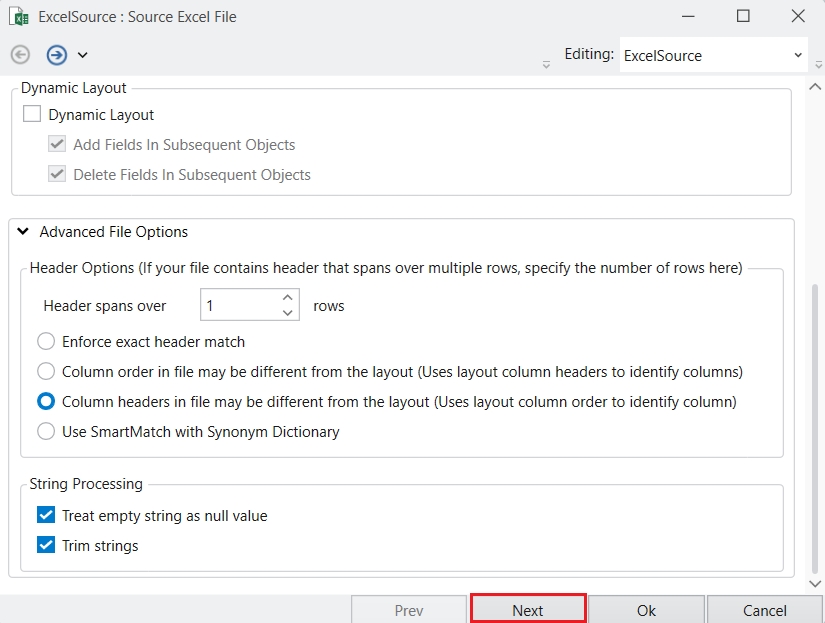
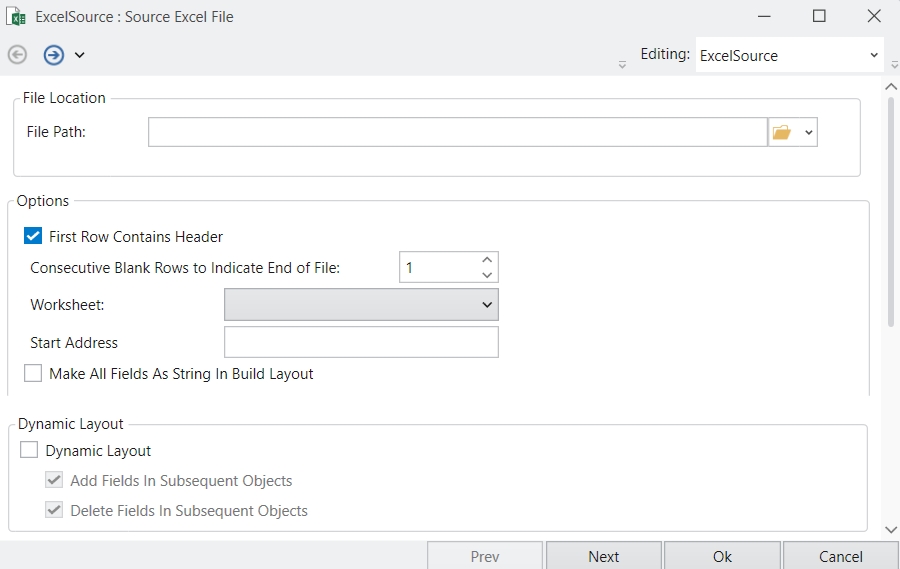
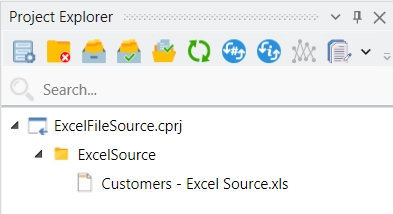
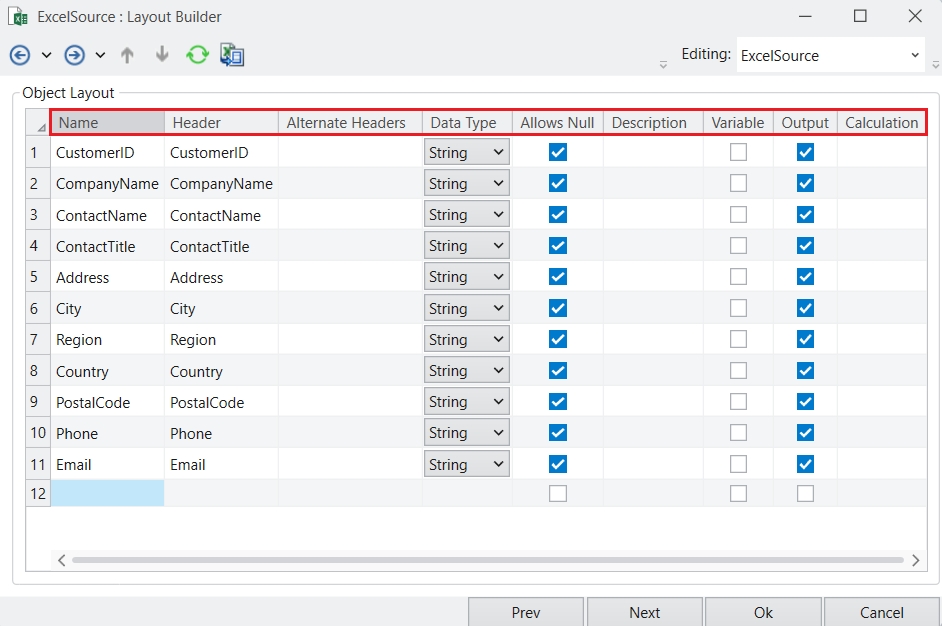
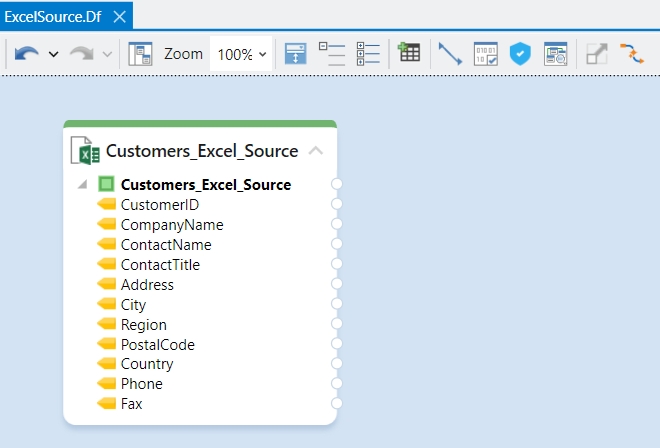
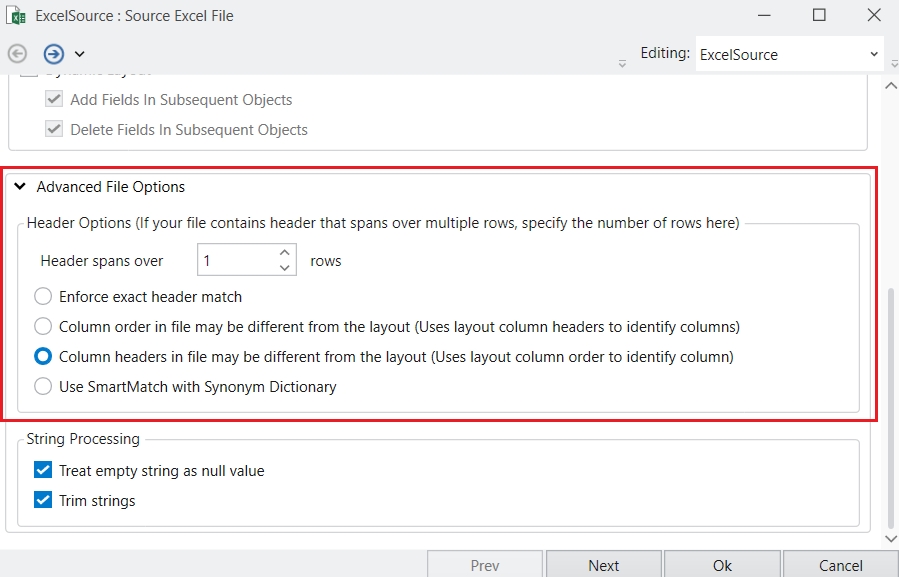
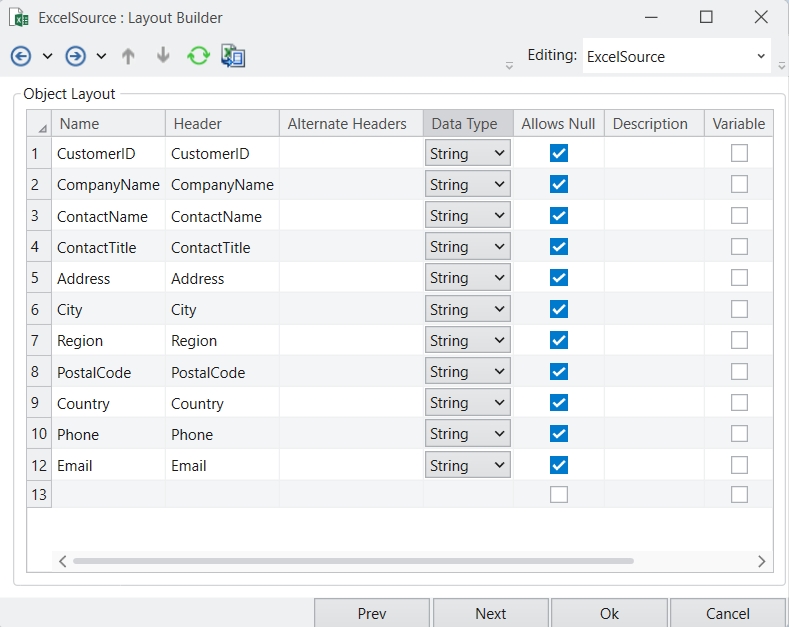
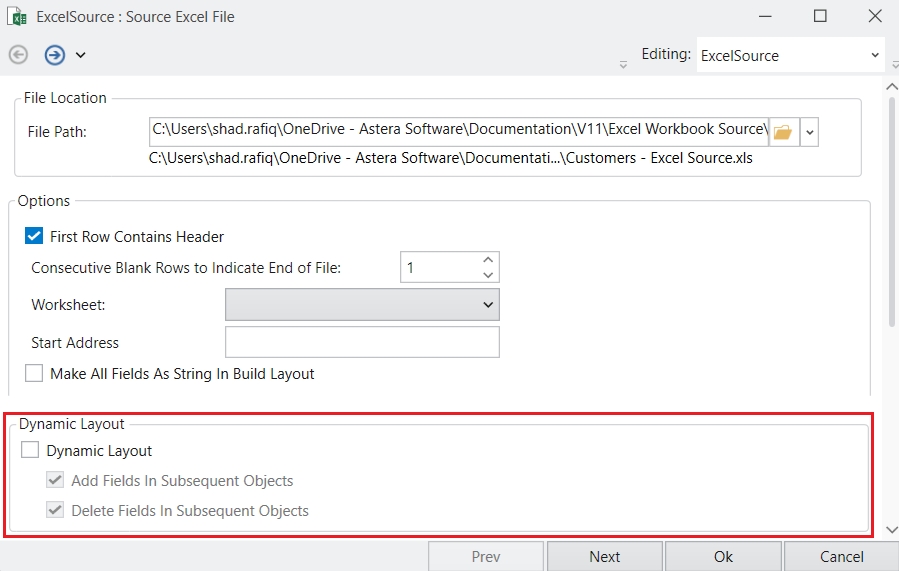
Expressions
Defines functions through expressions for any field in your data.
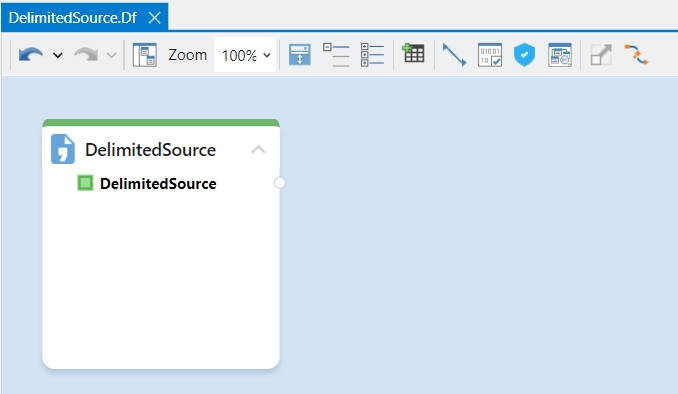
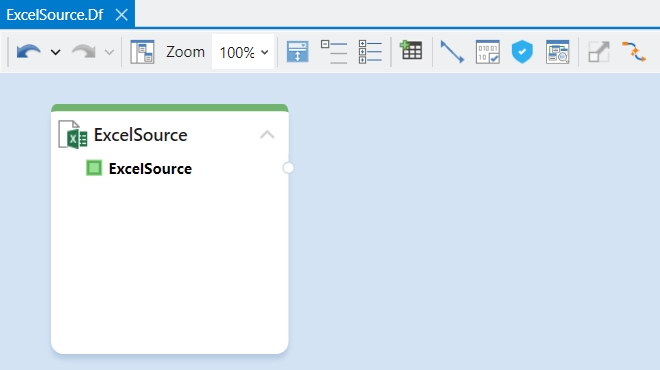

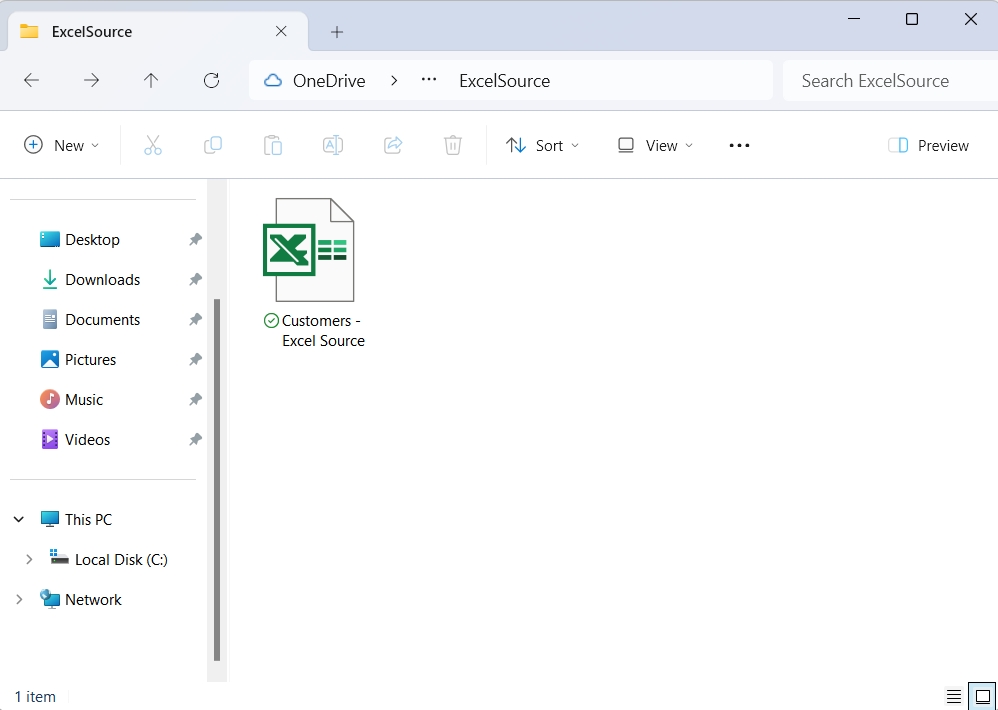
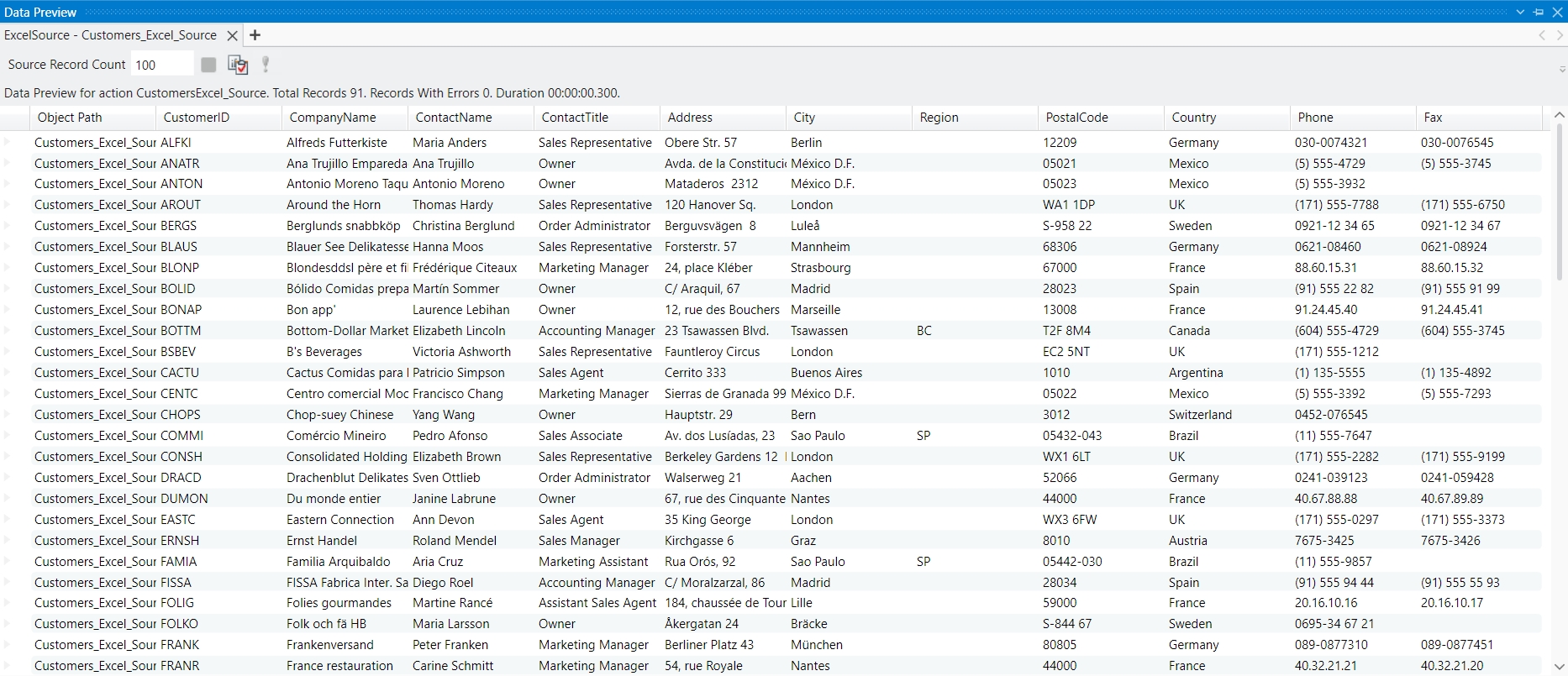
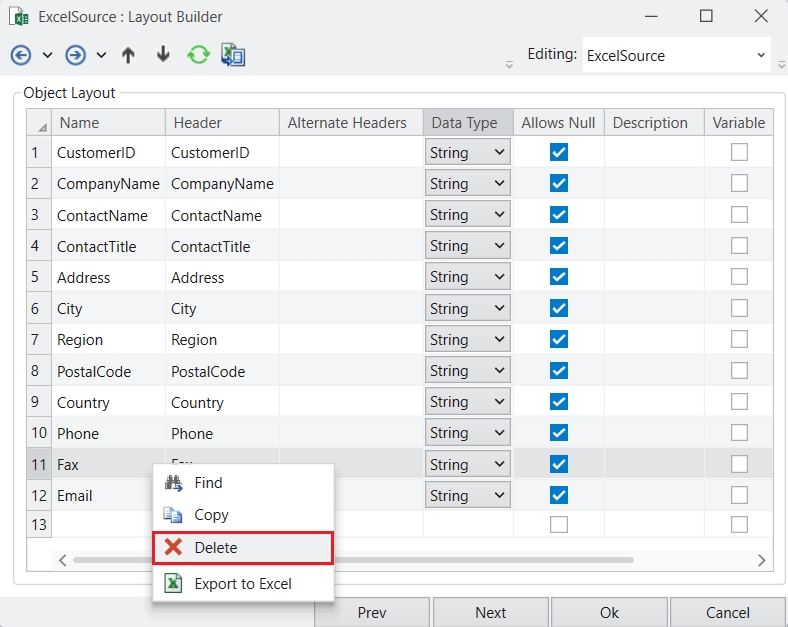
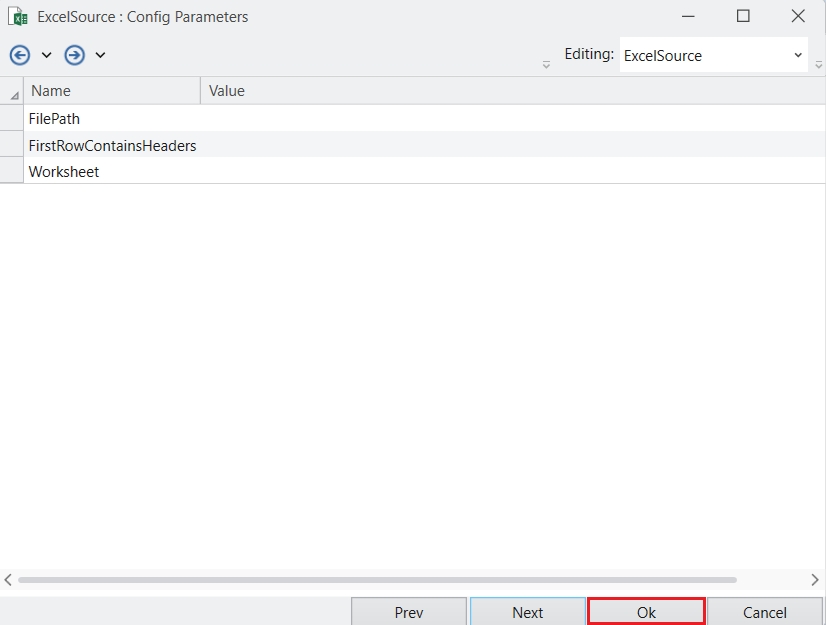
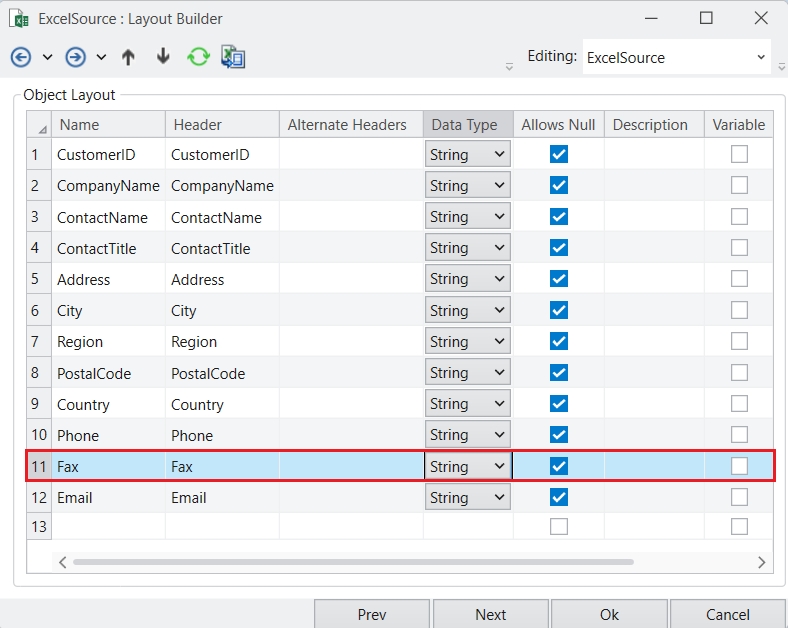
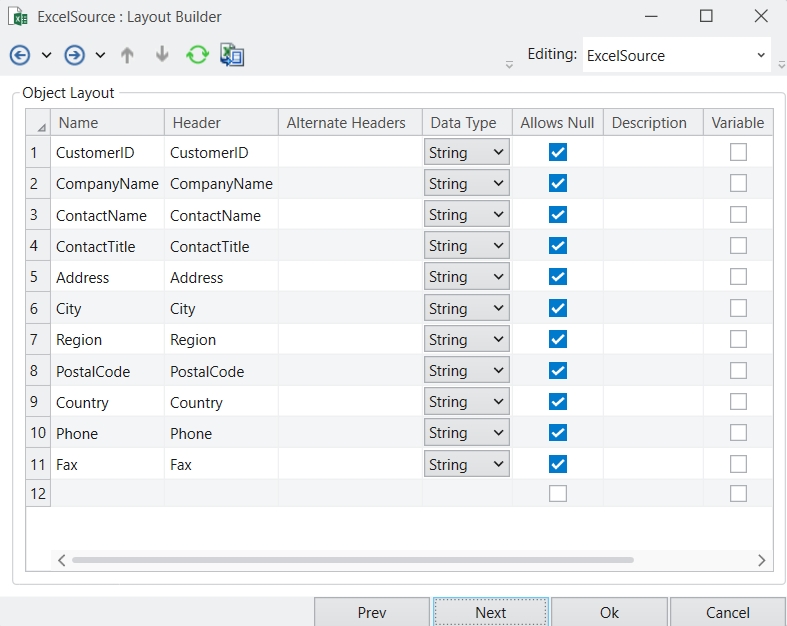
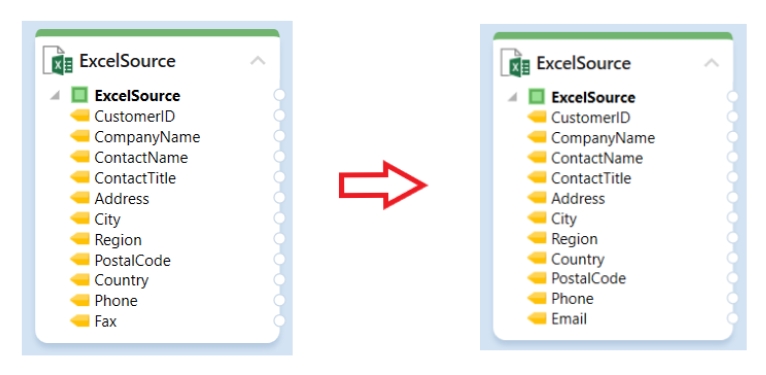
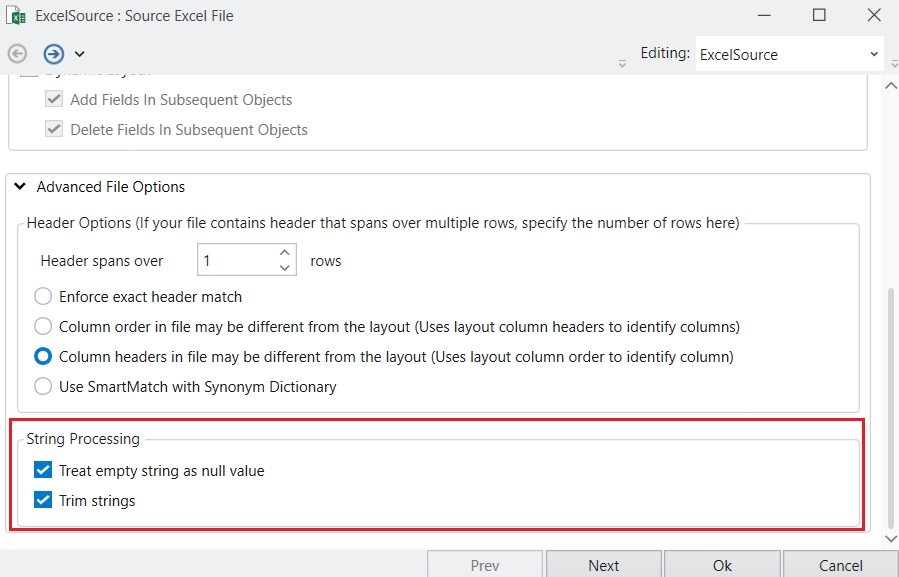
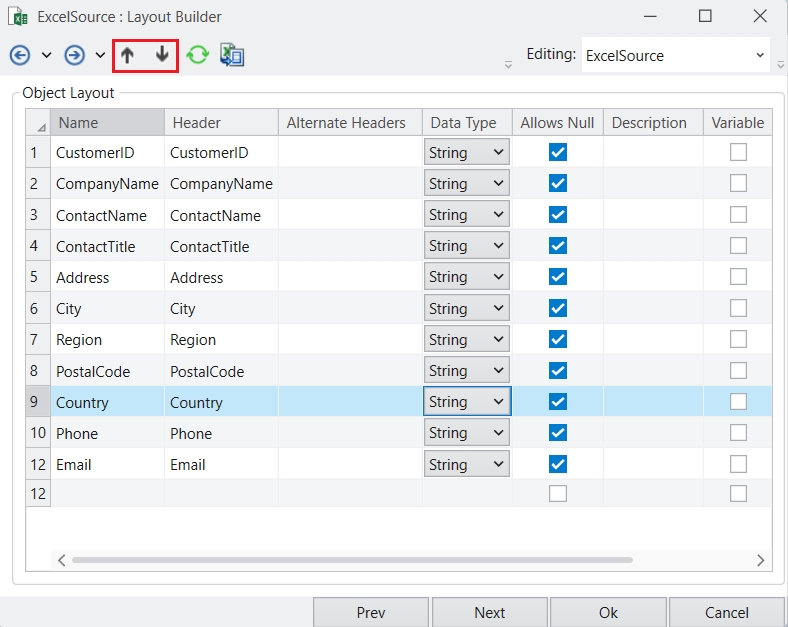
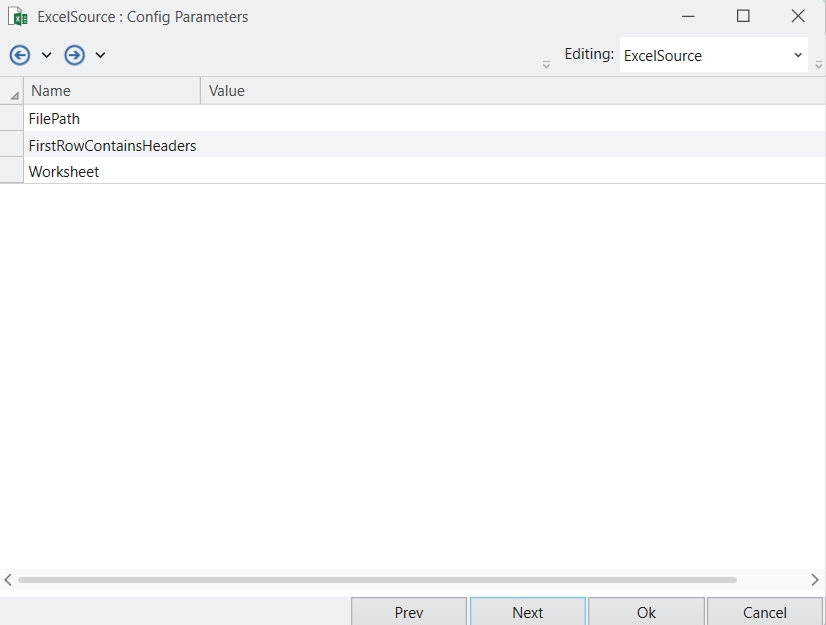
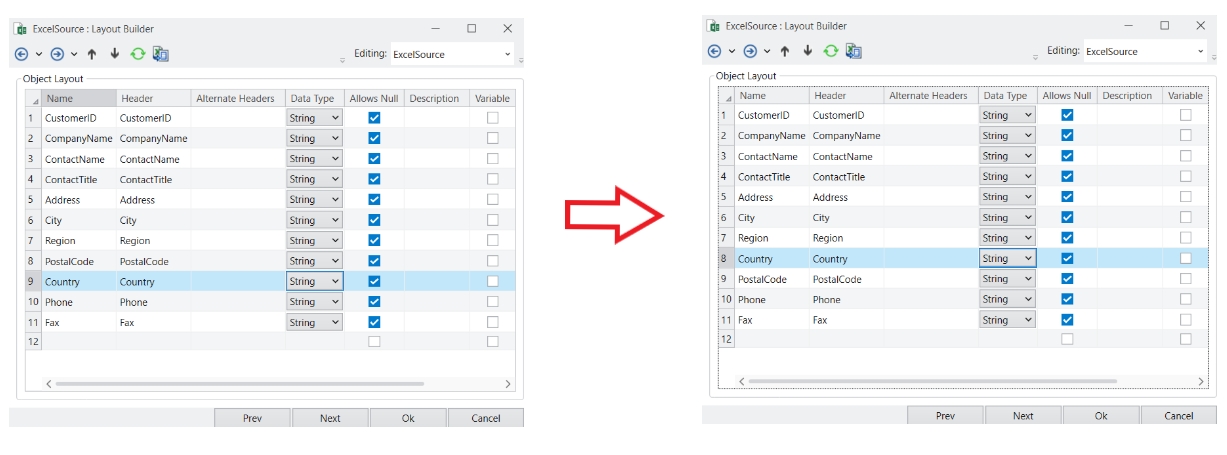
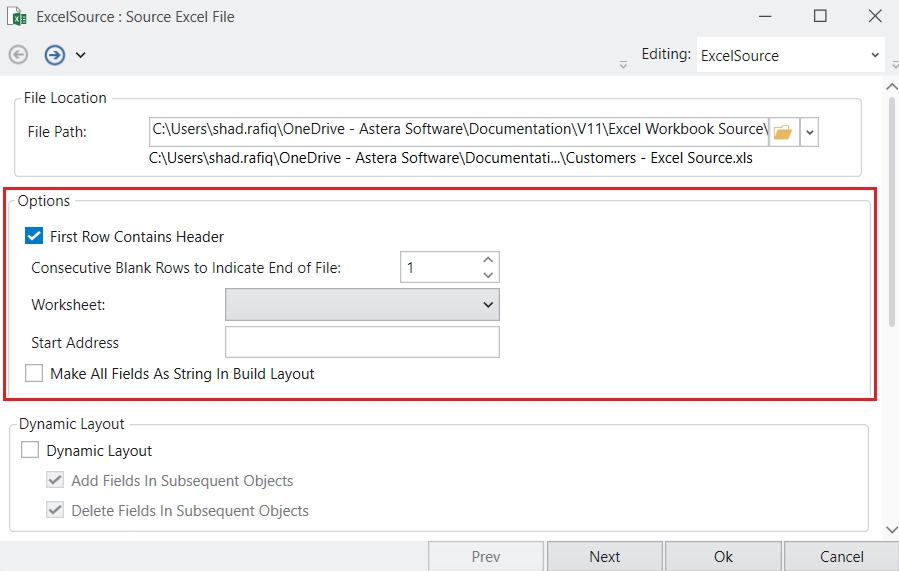
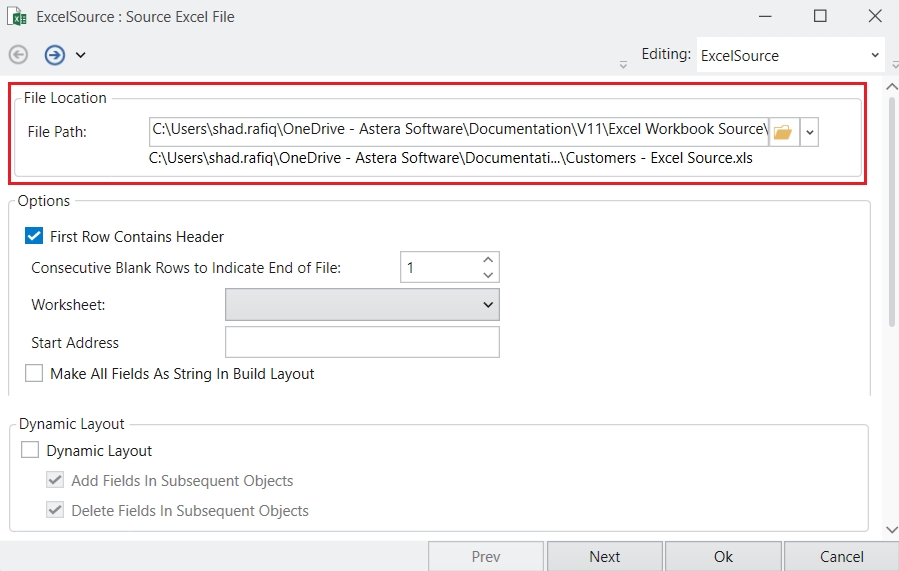
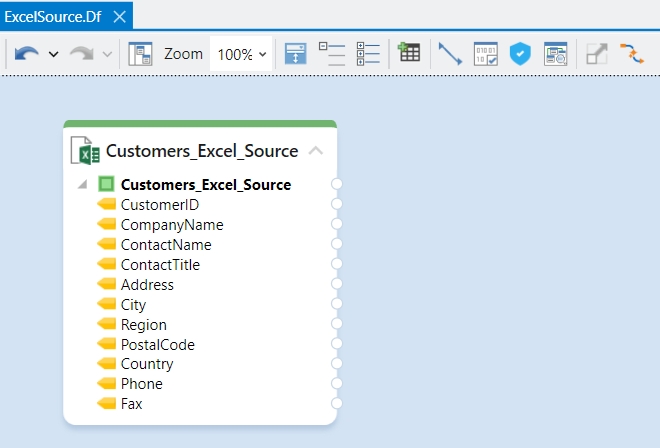
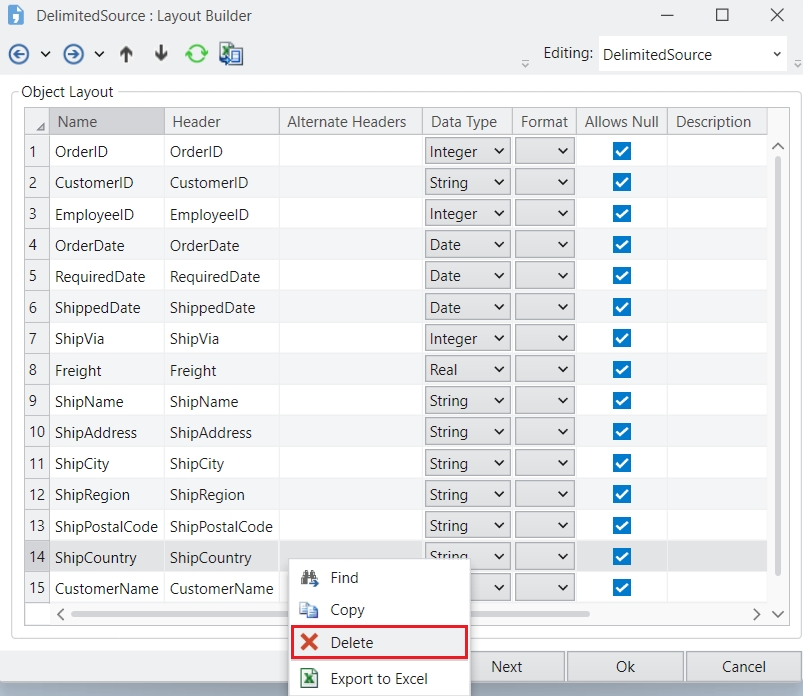
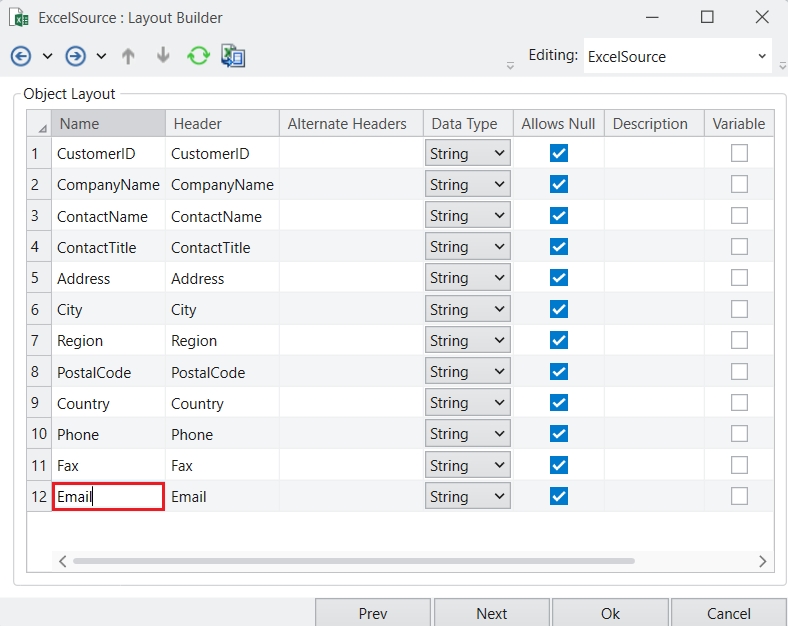
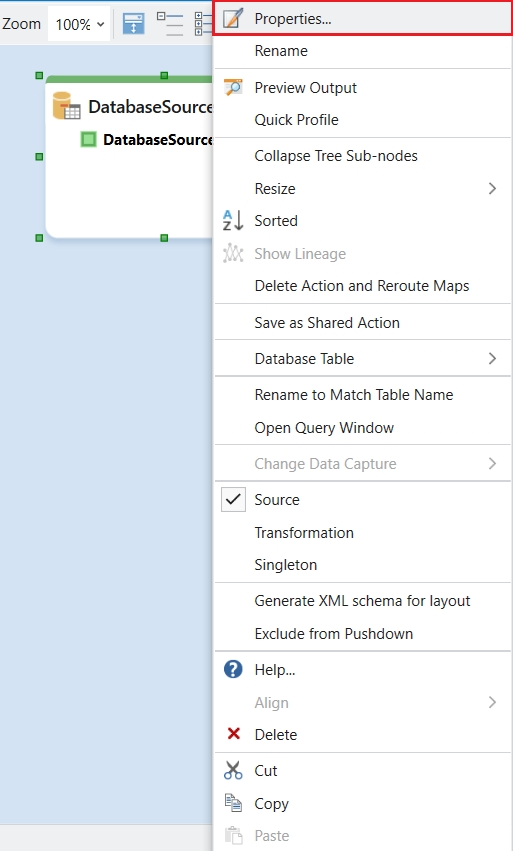
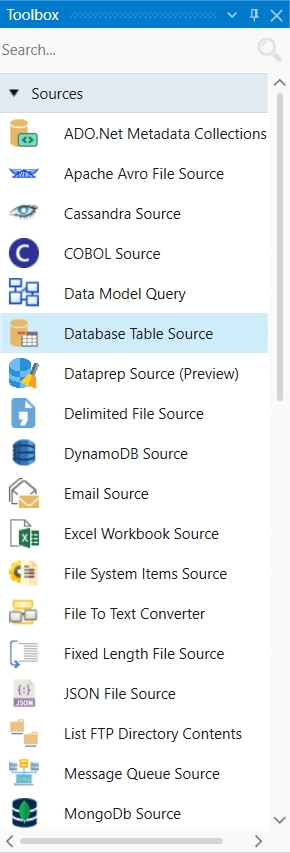

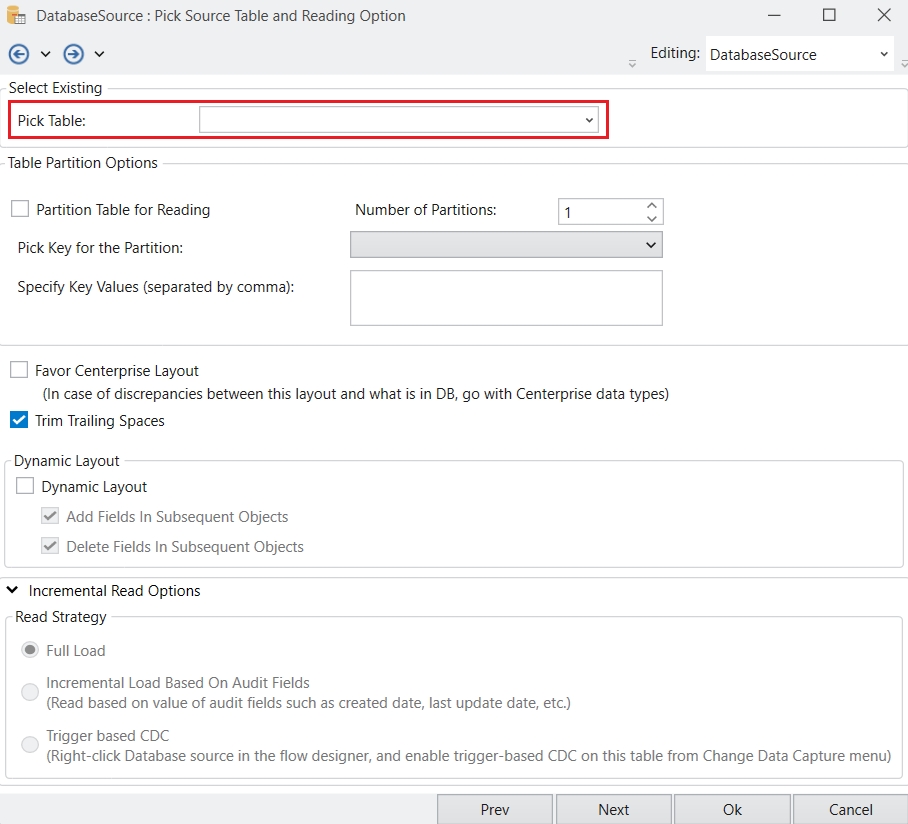
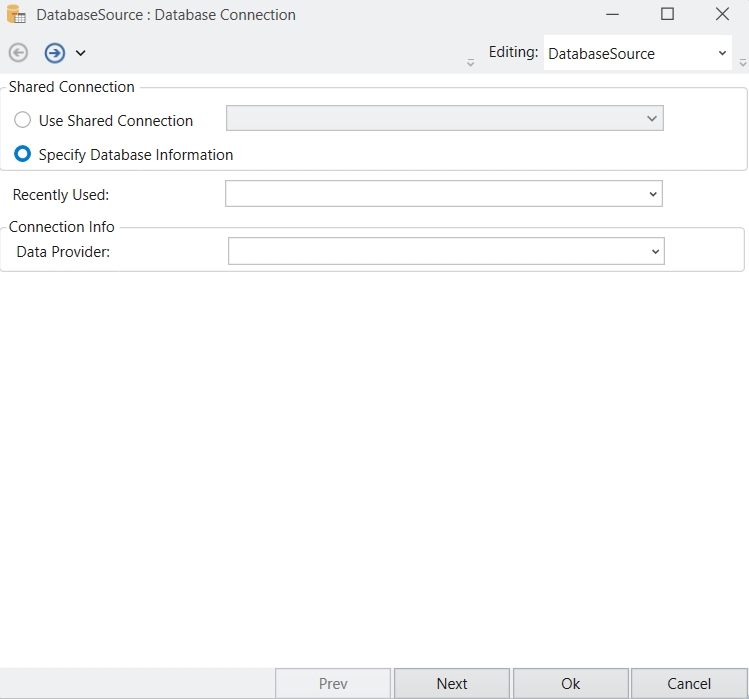

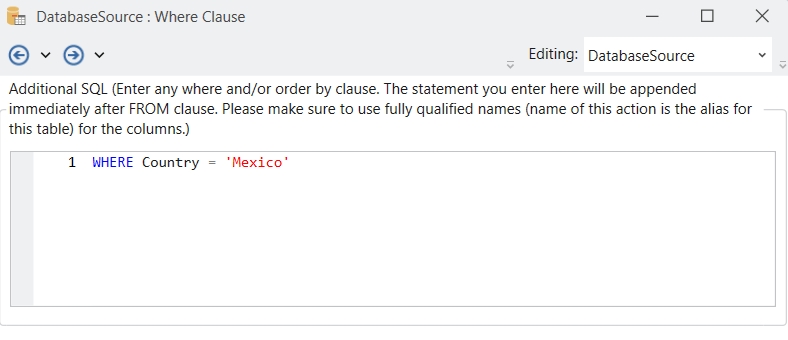
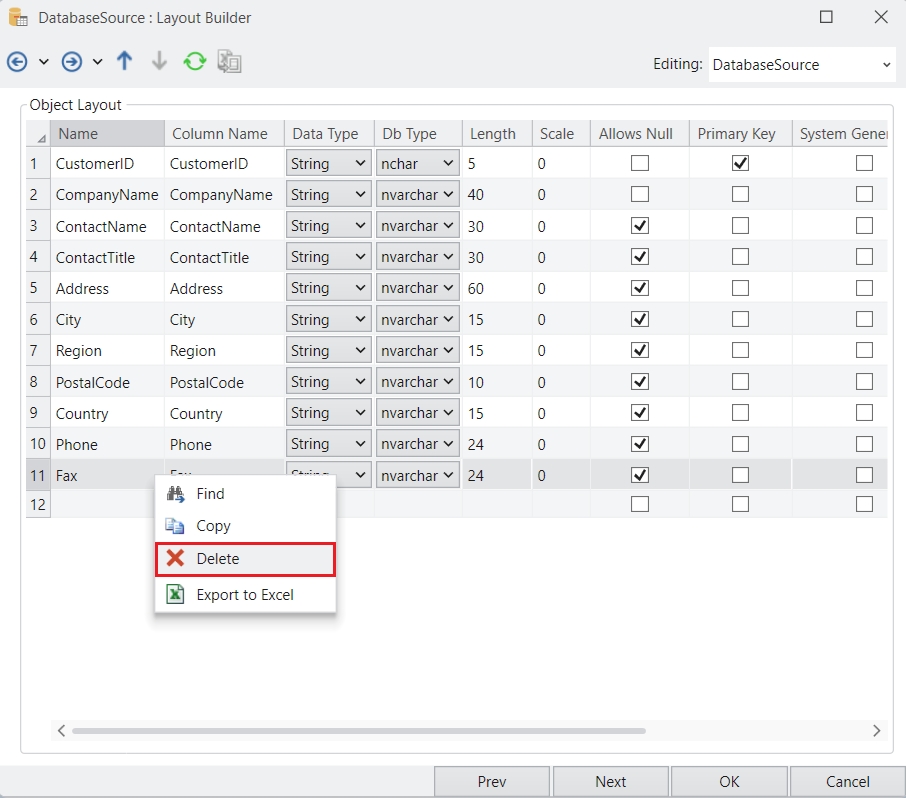
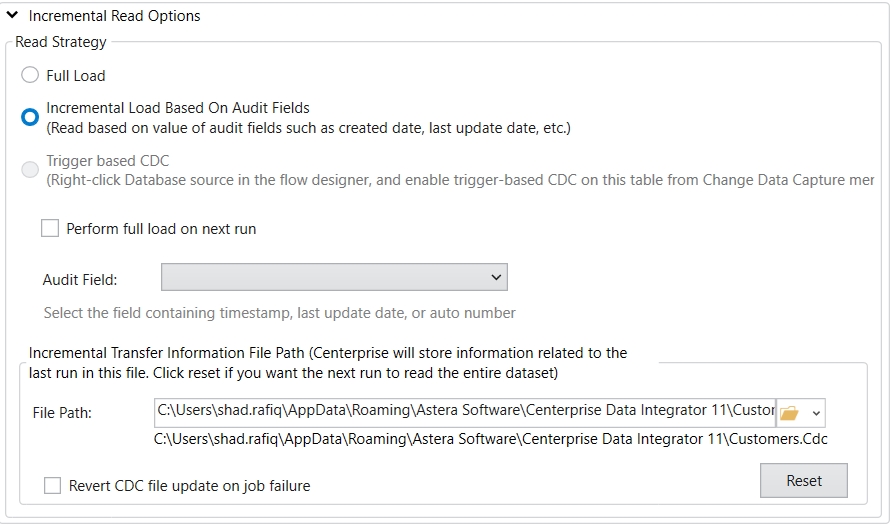

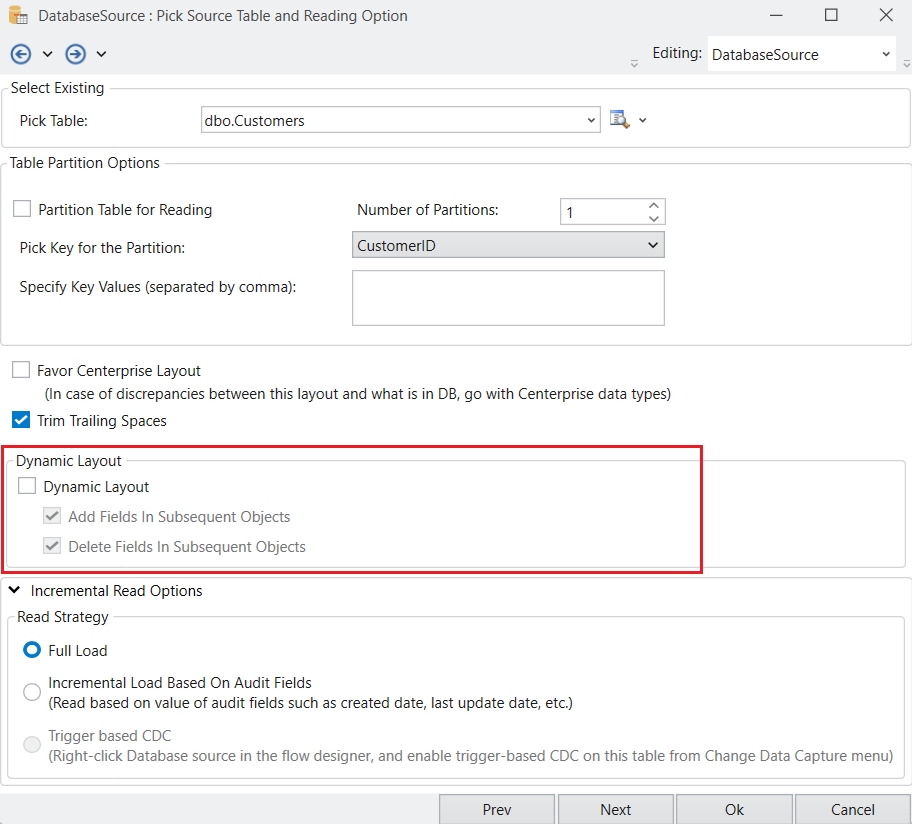
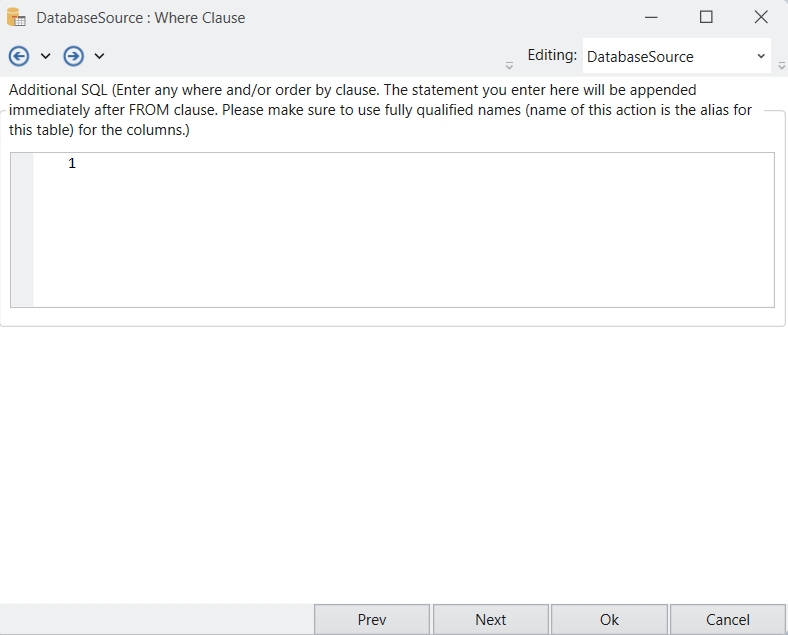
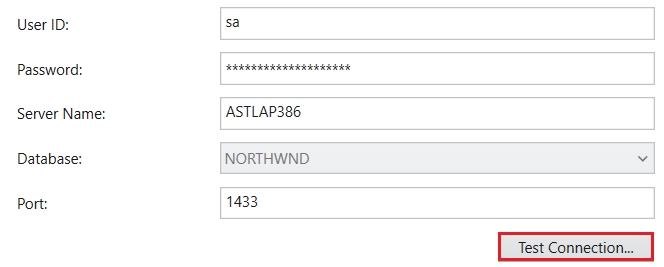
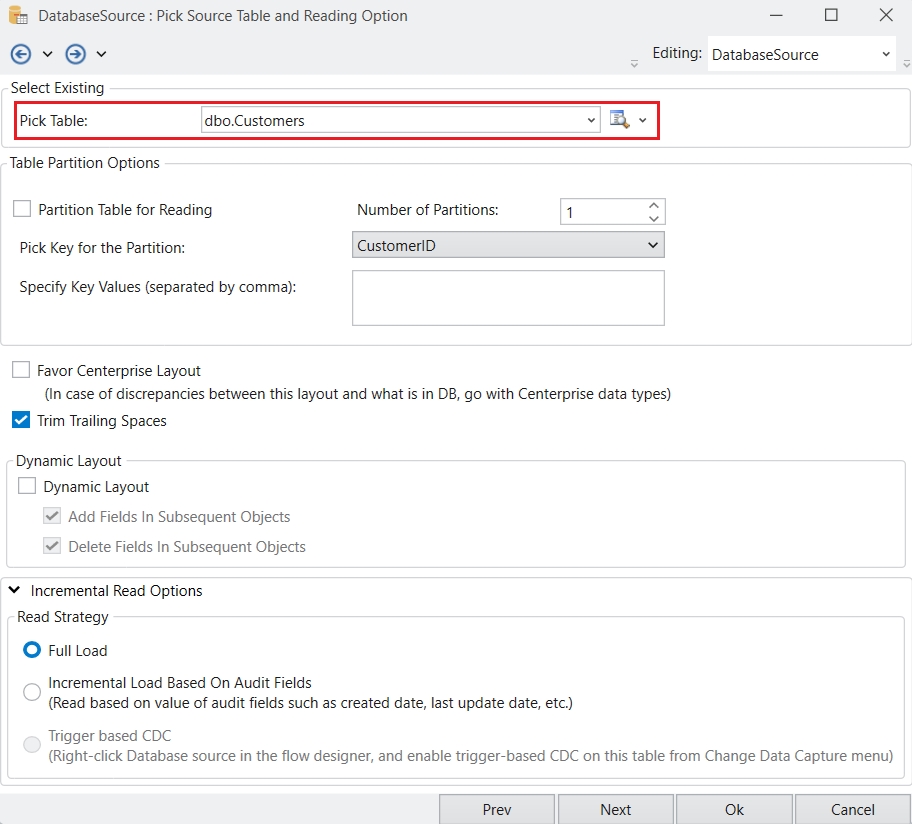
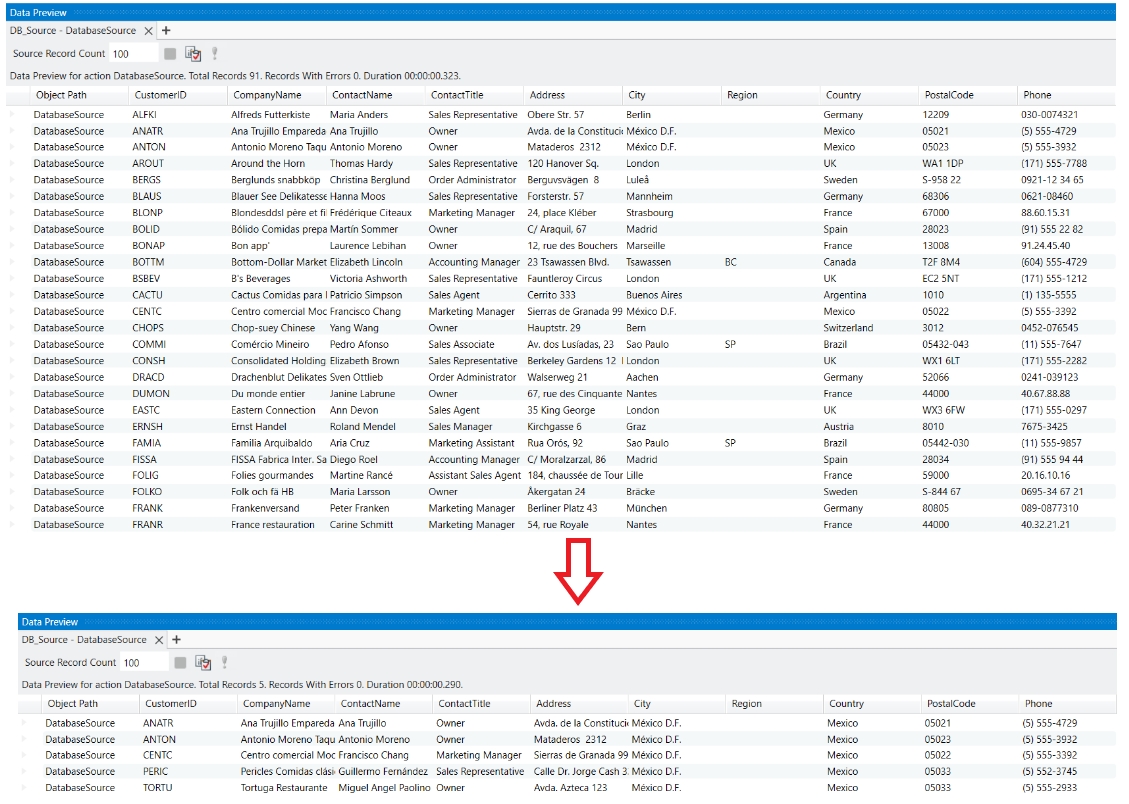
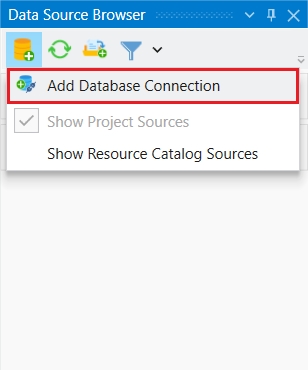


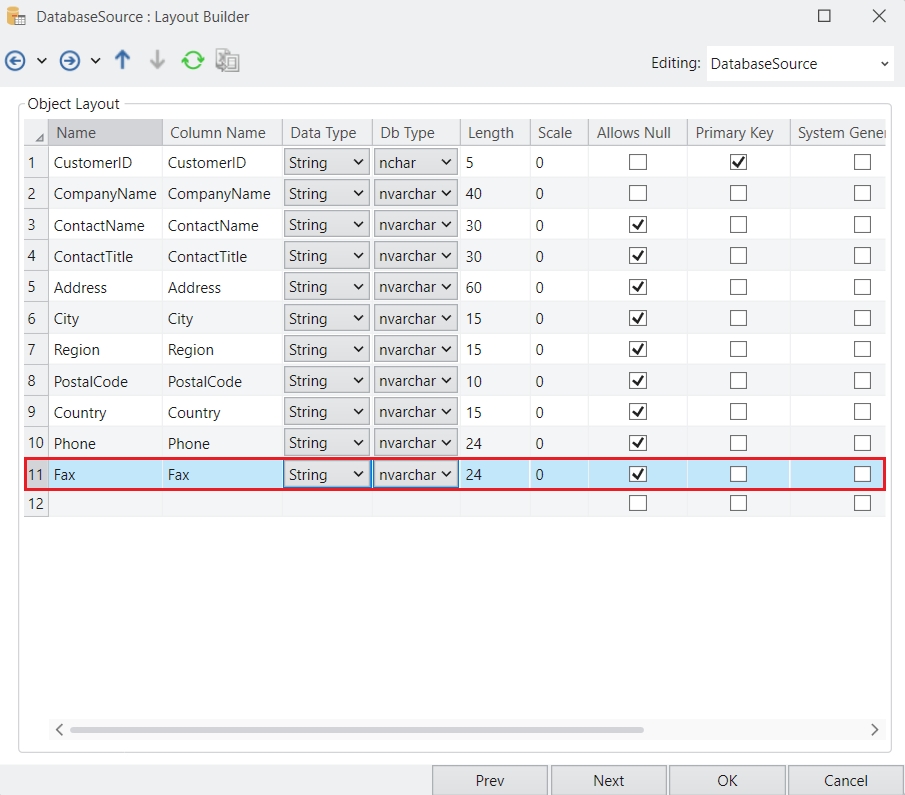
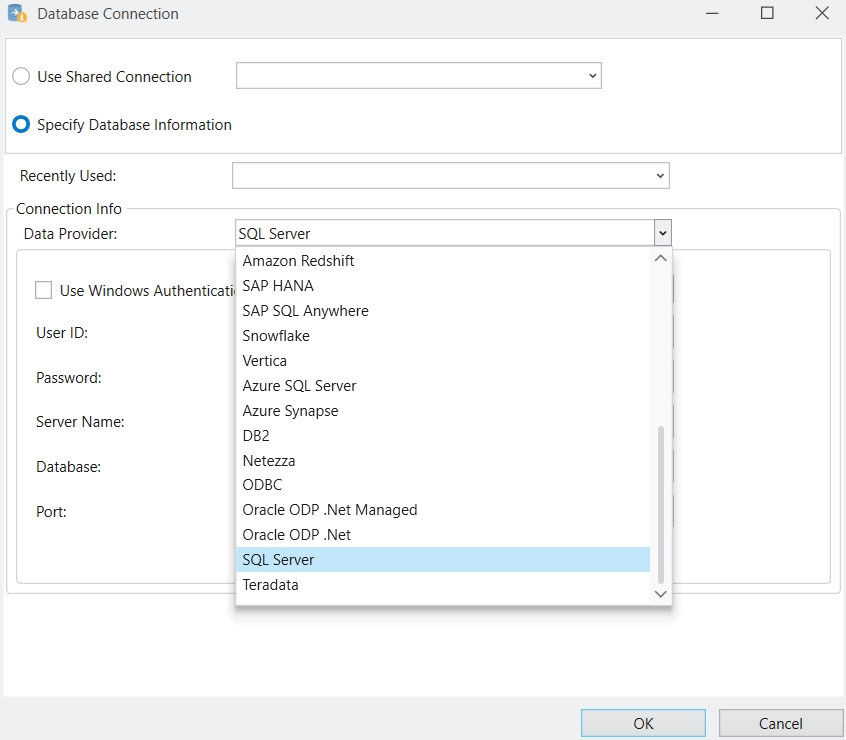

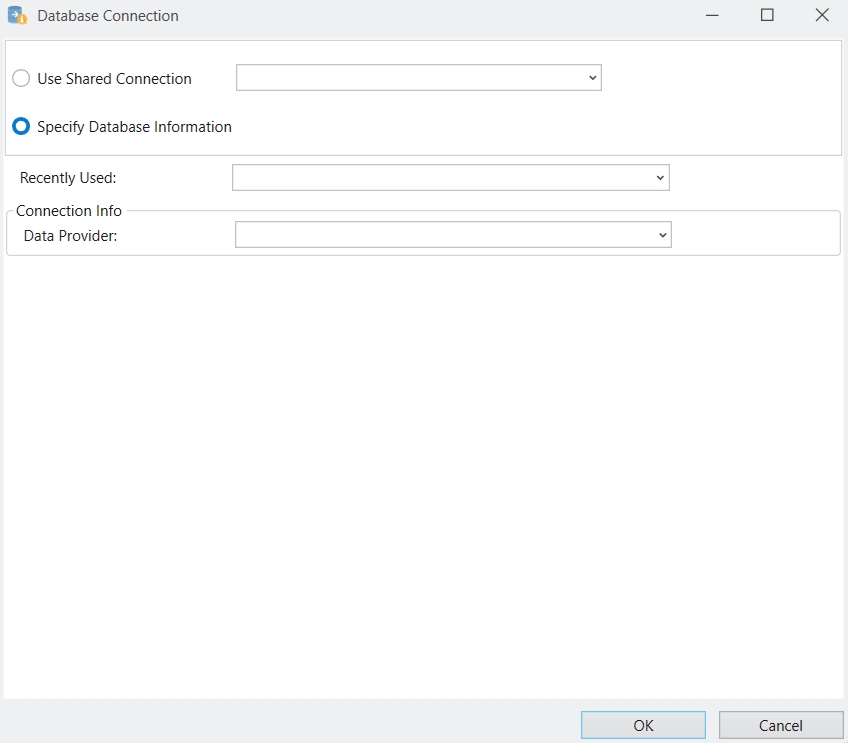
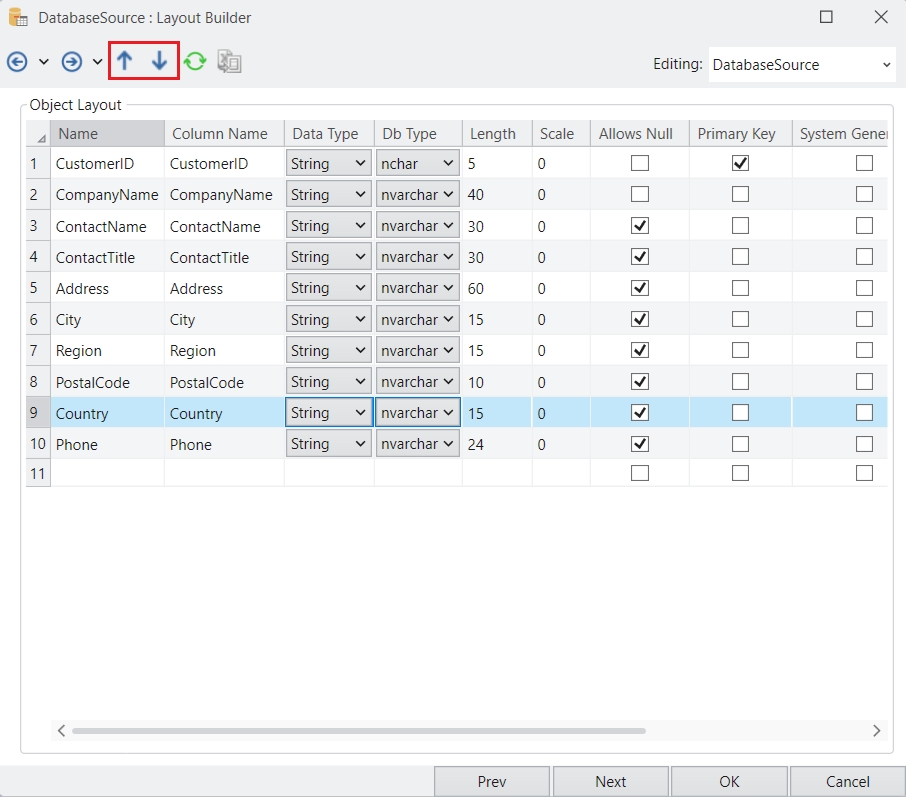
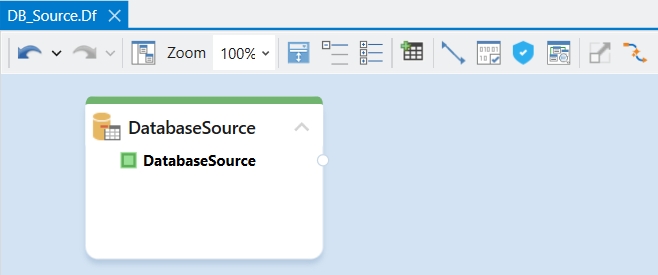
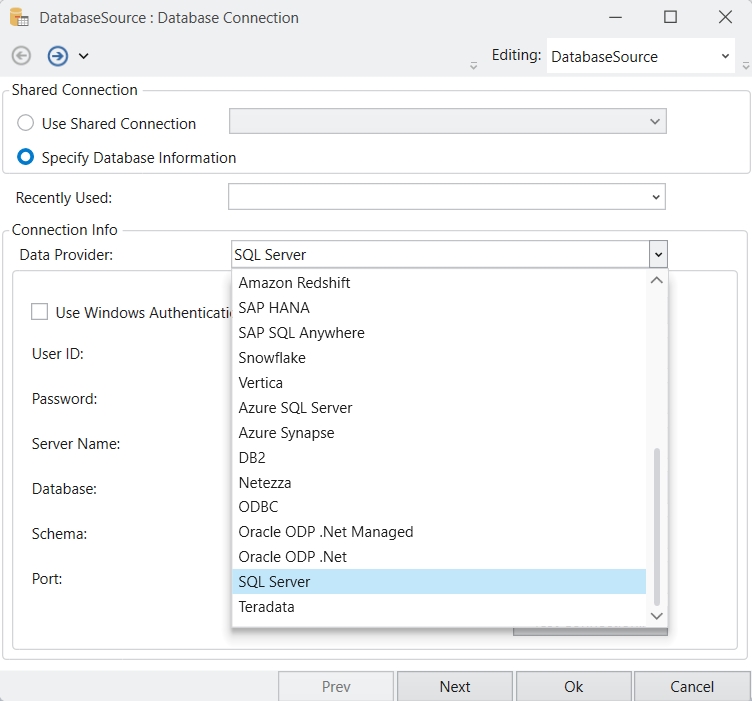
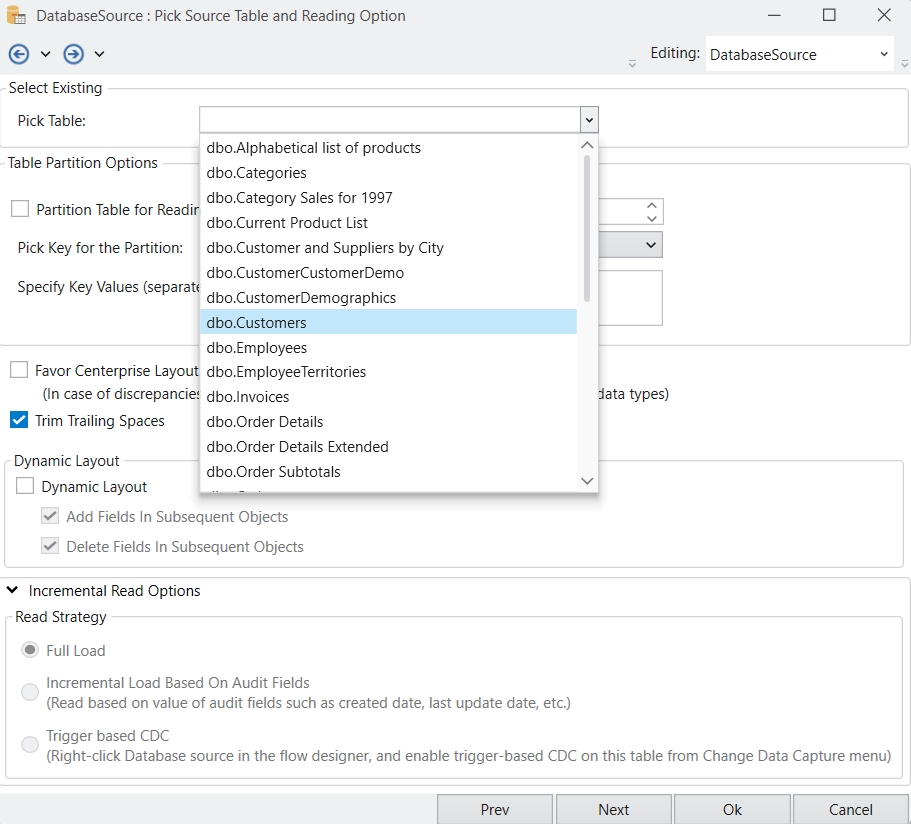
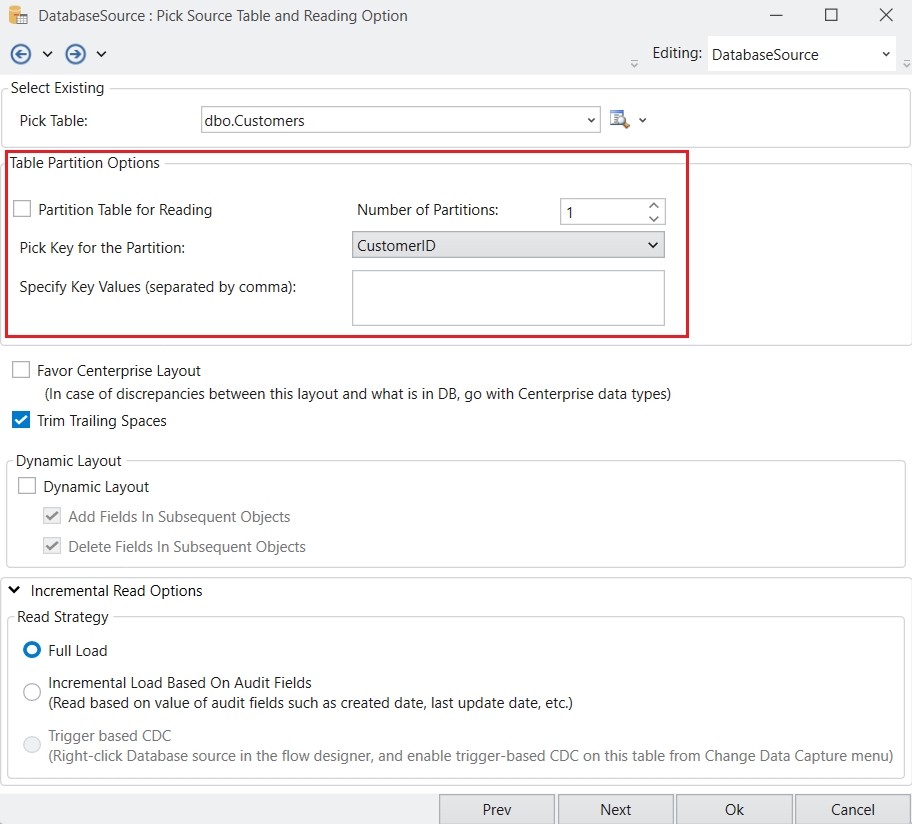
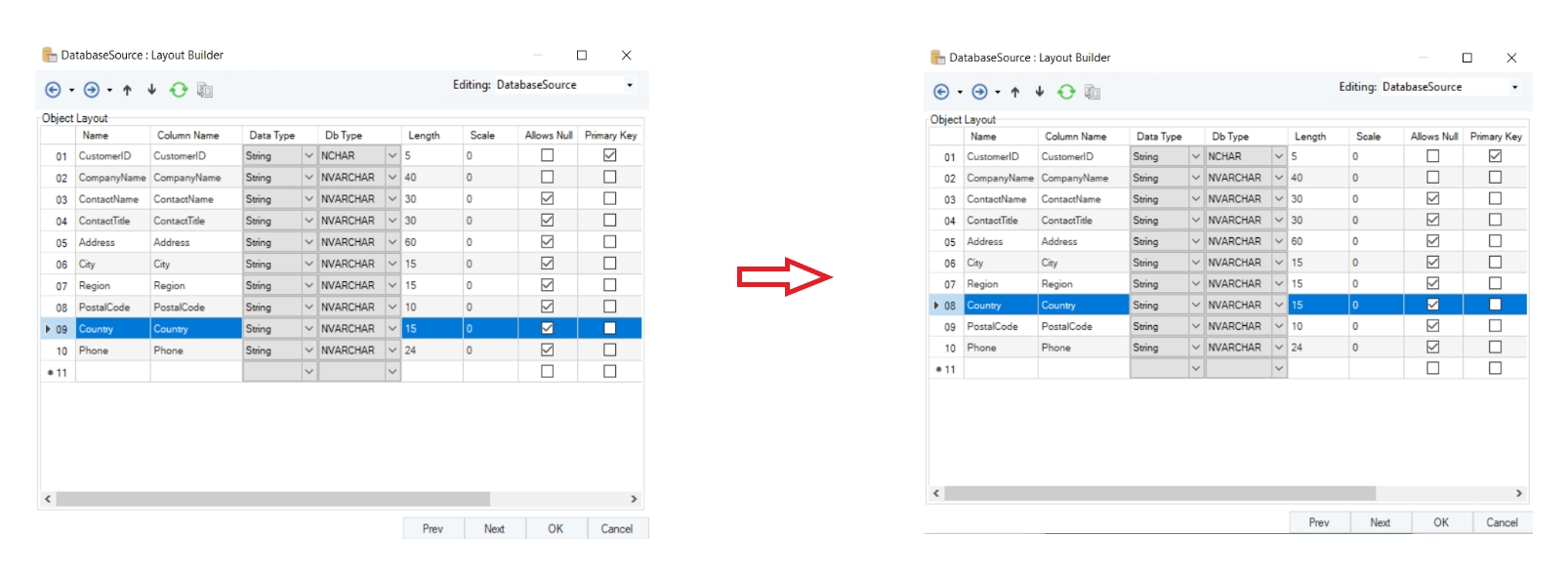
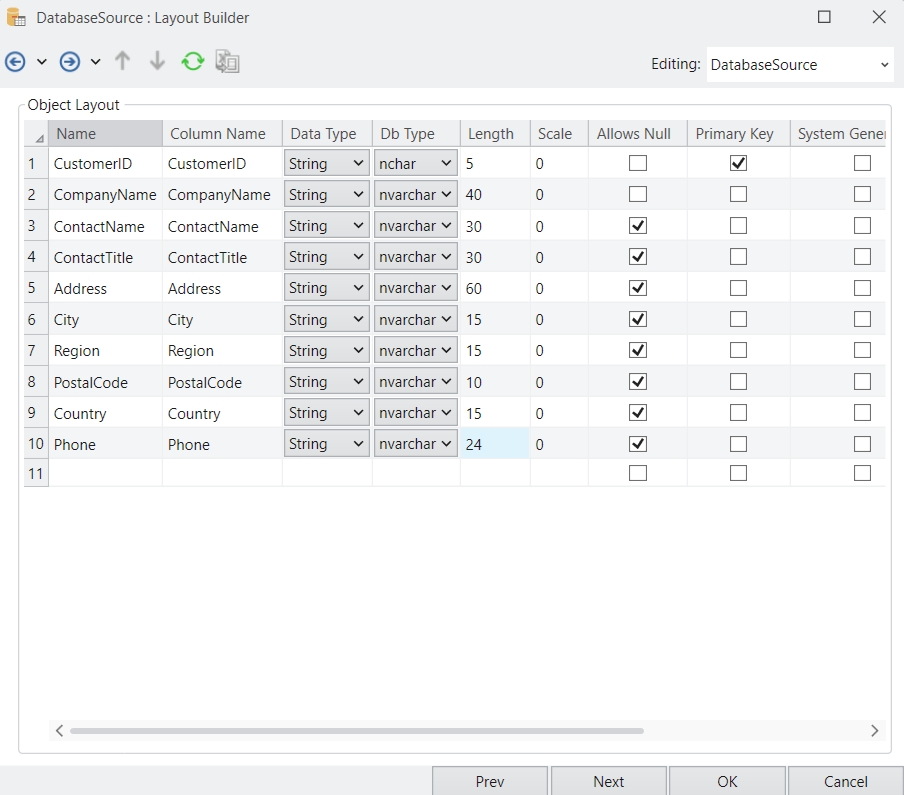
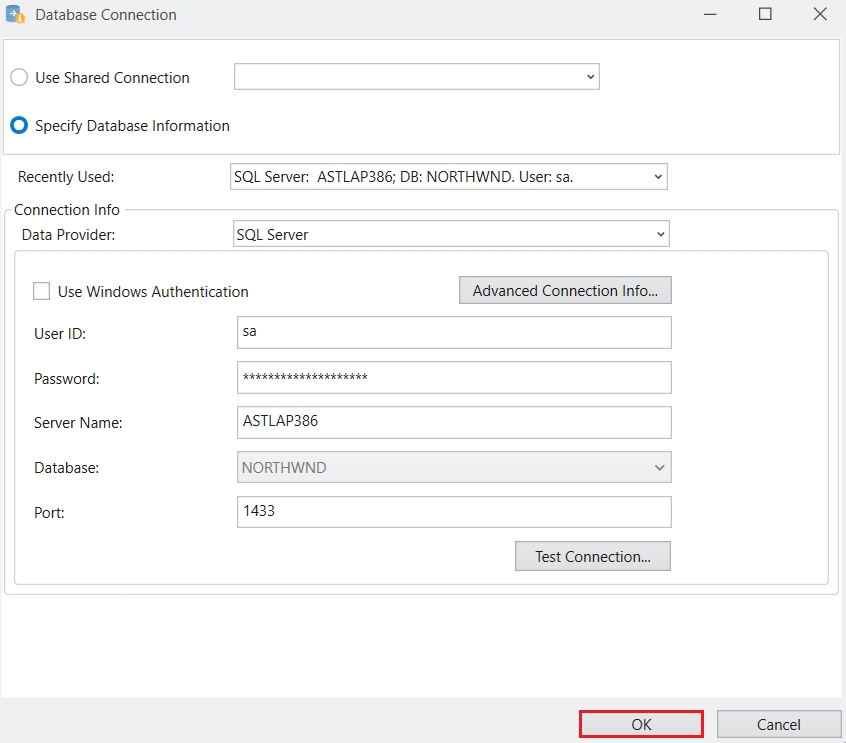
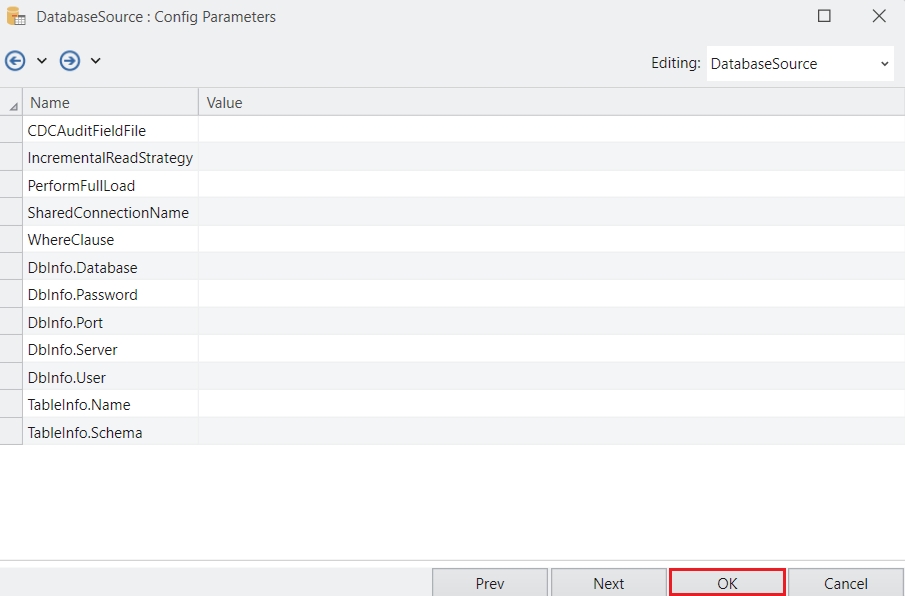
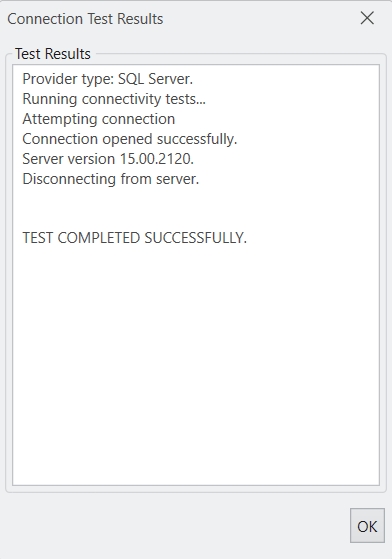
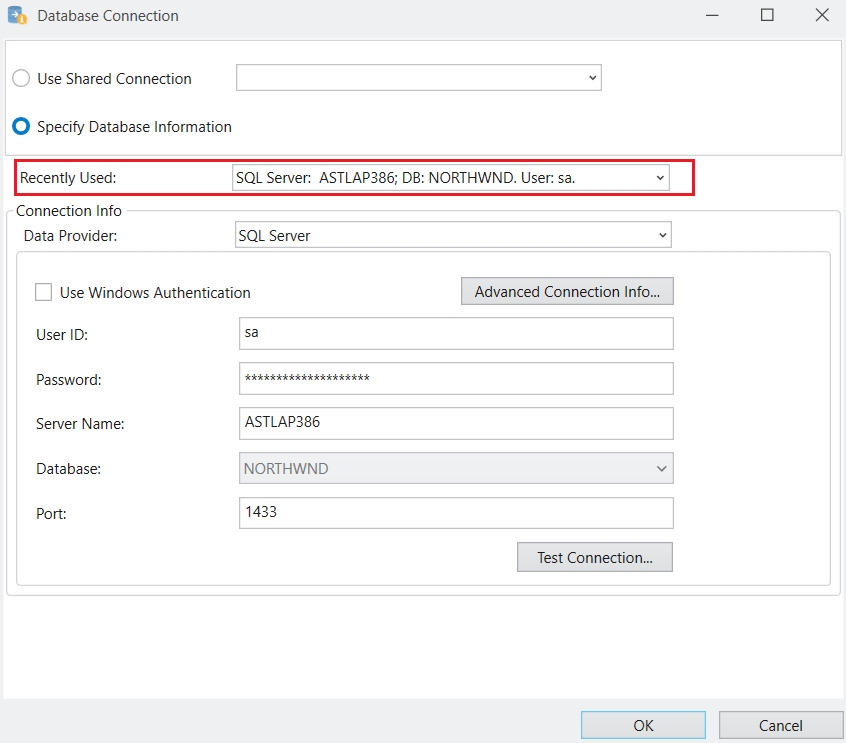
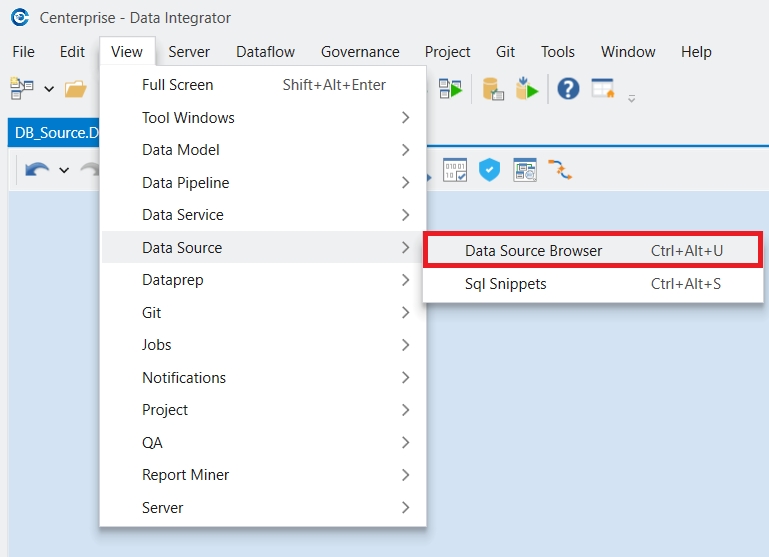
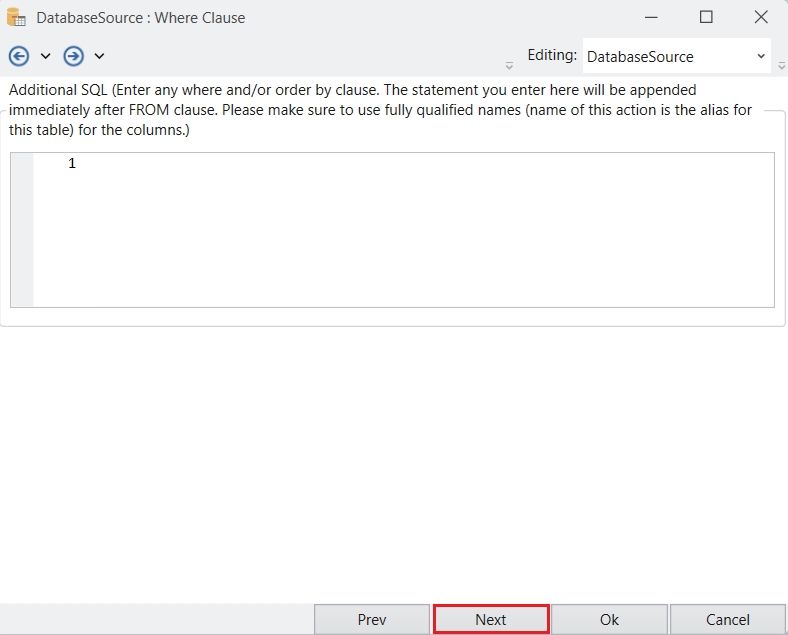
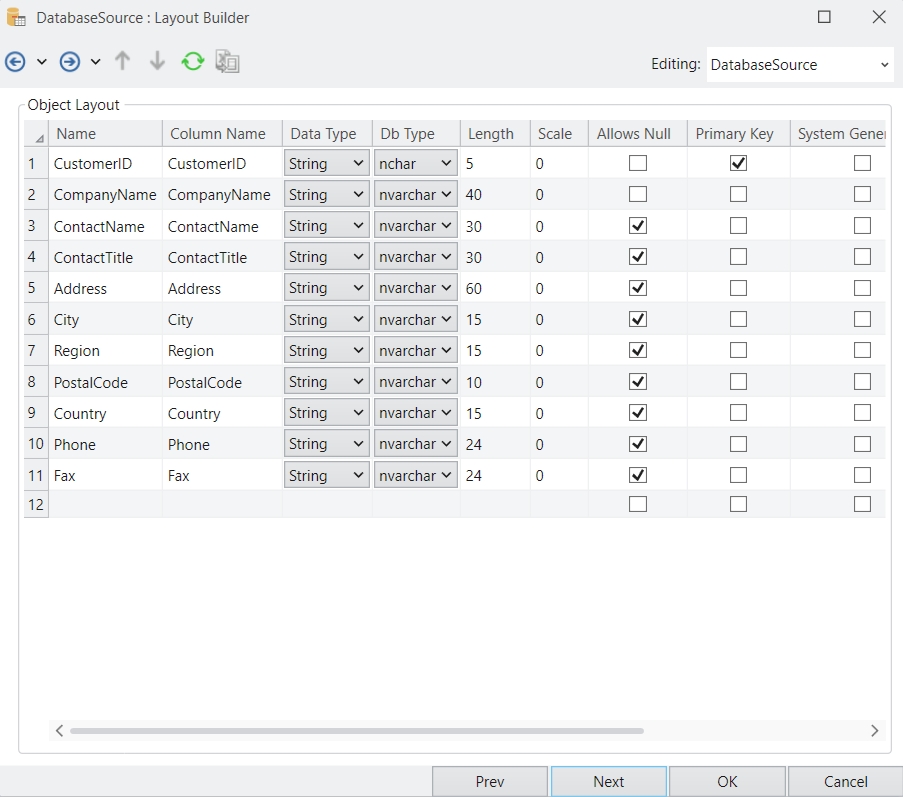

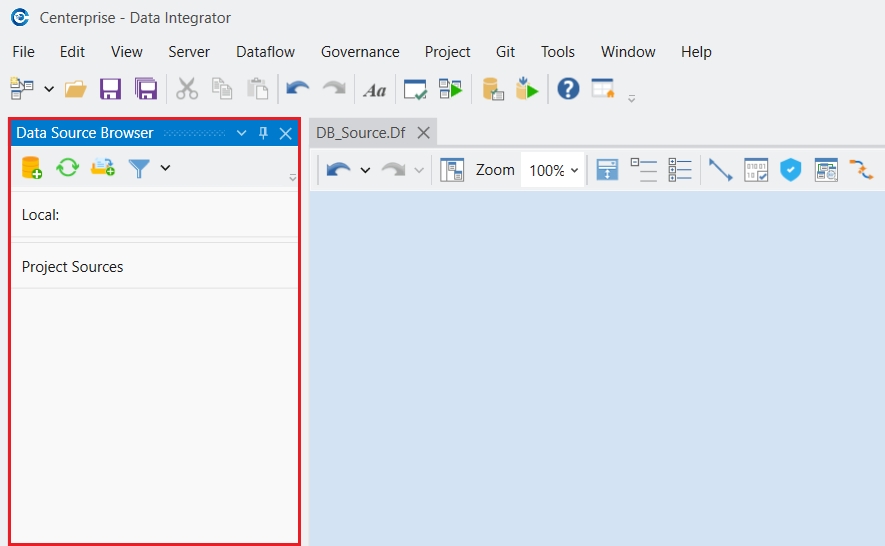

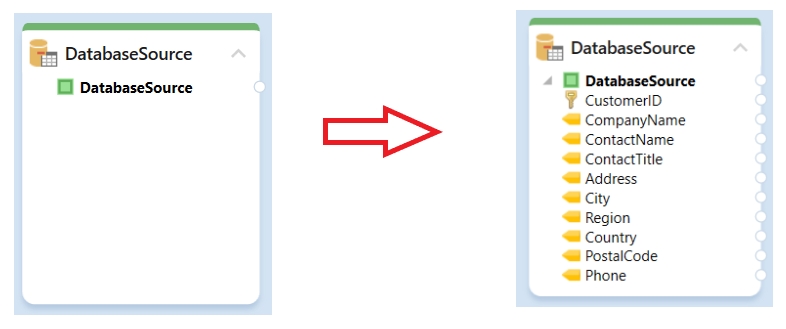
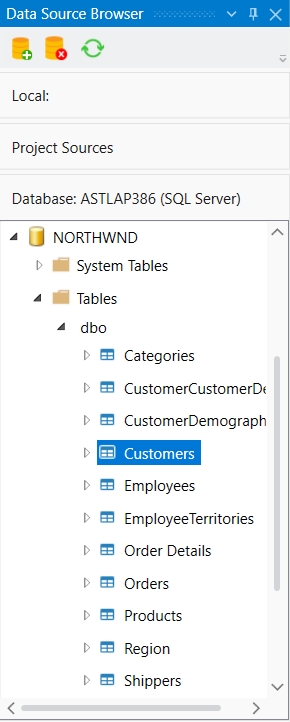
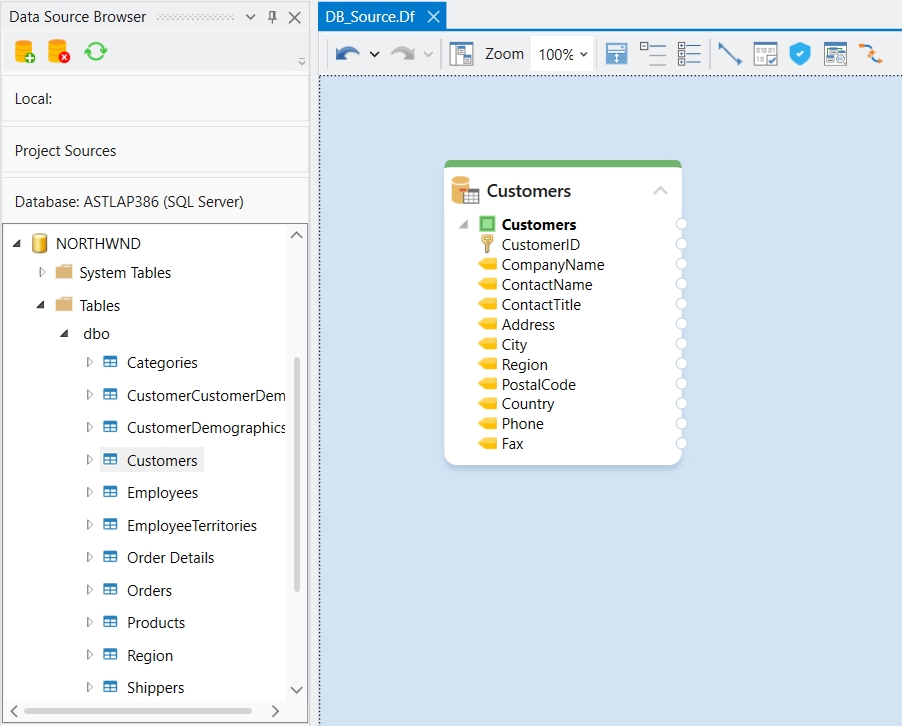
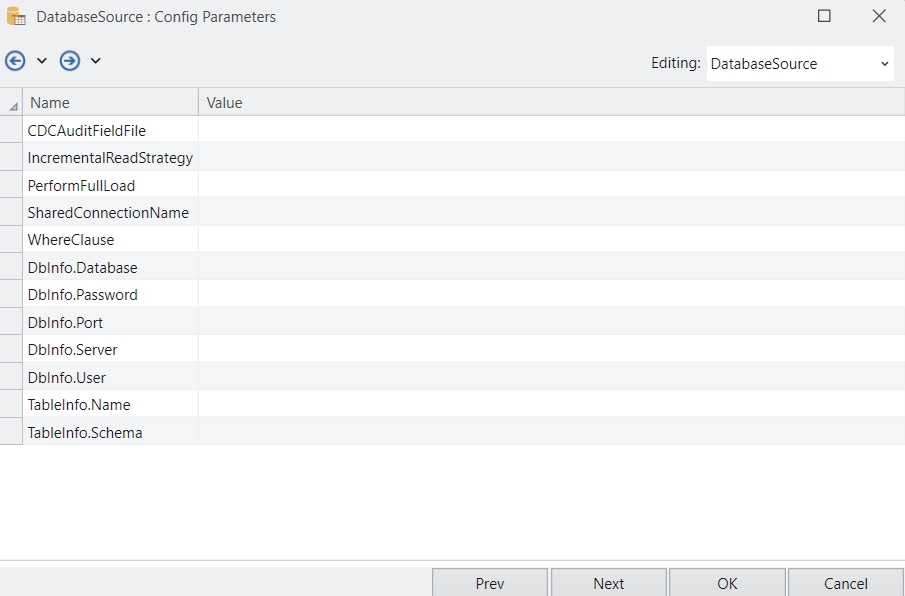

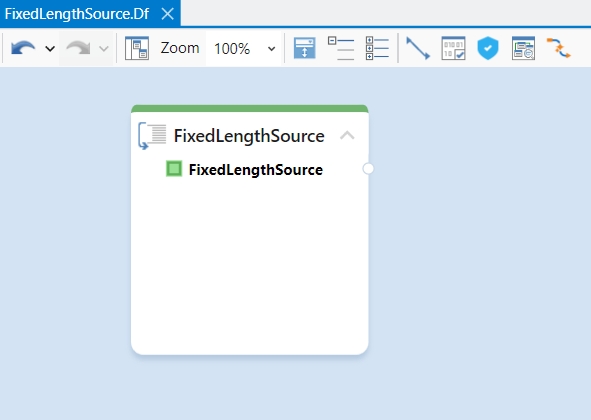
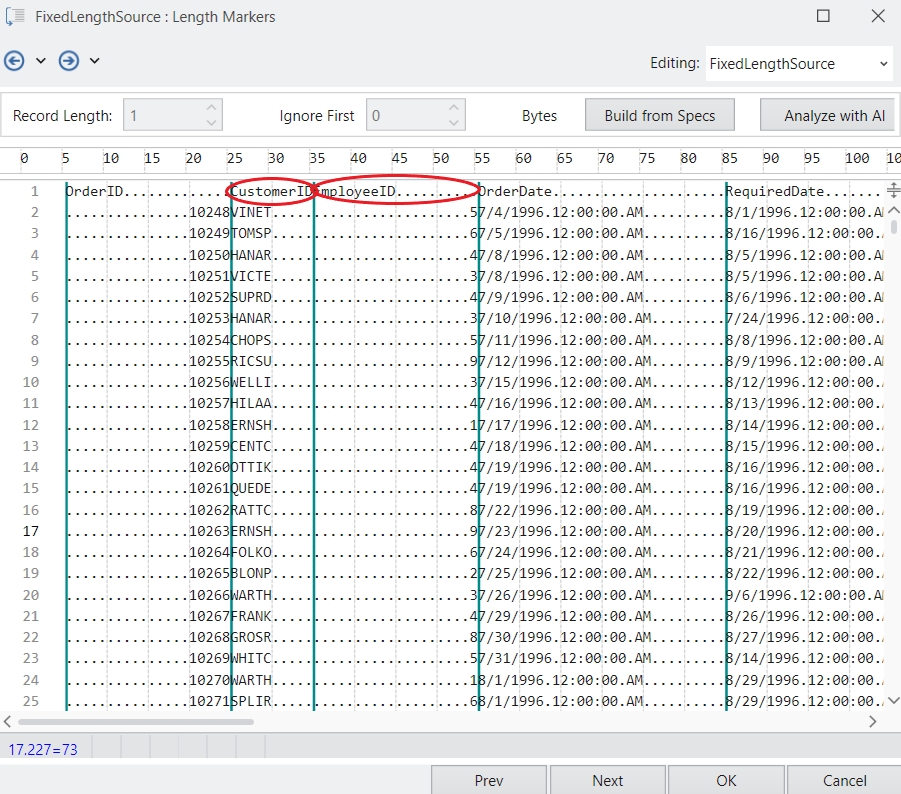
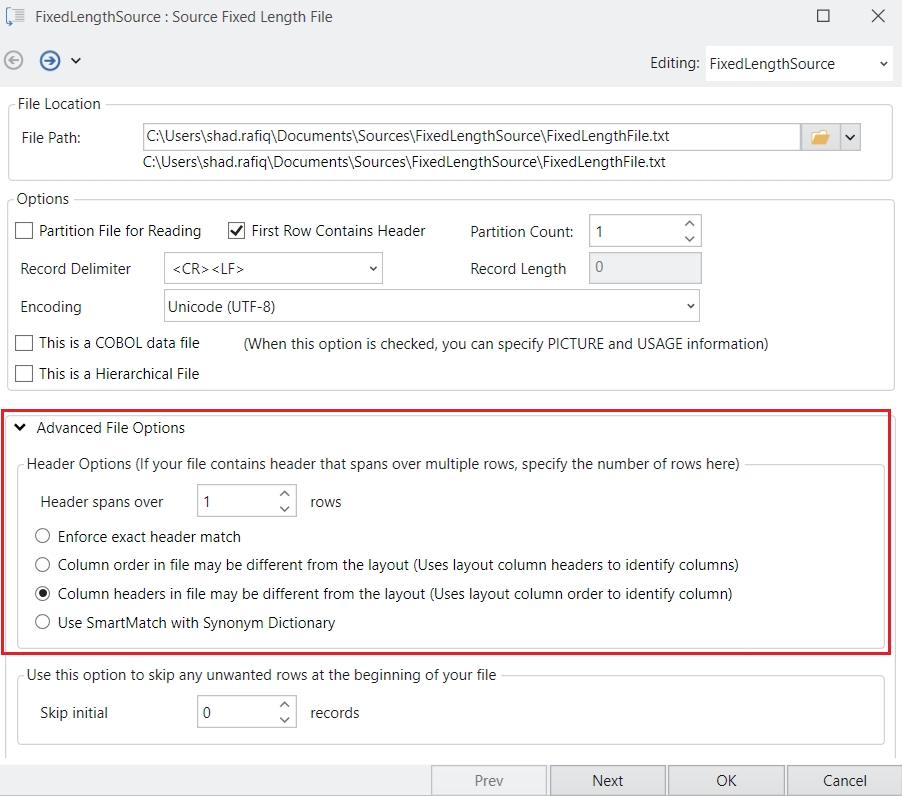
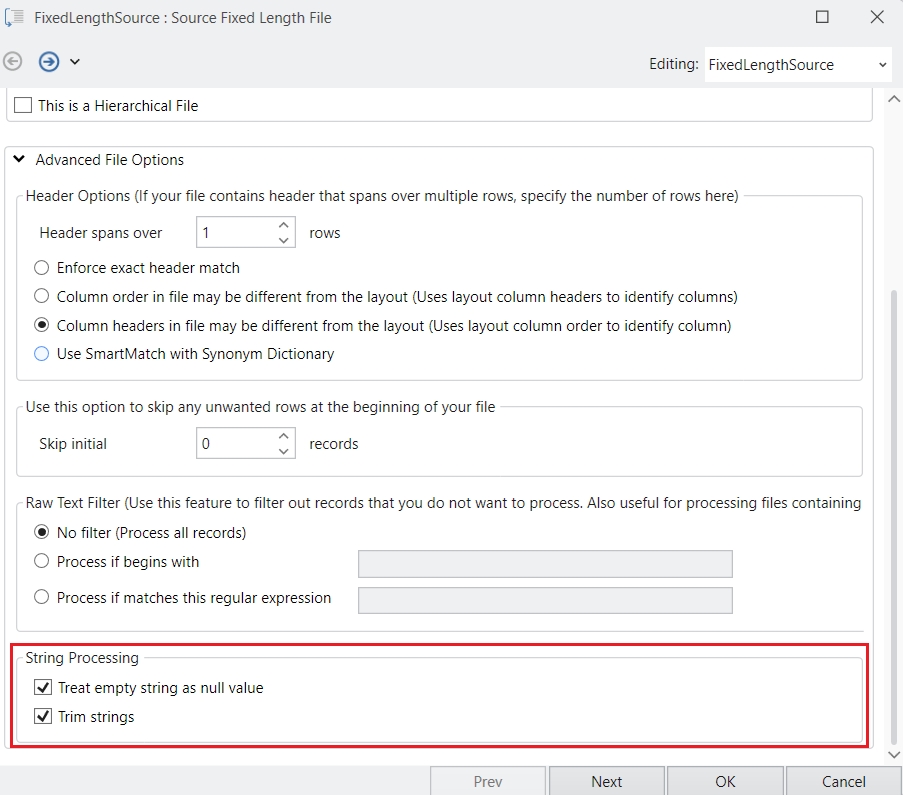
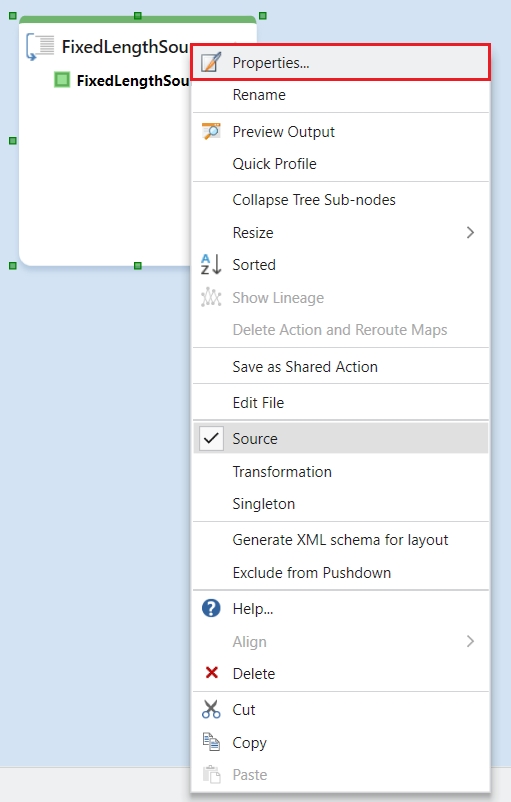
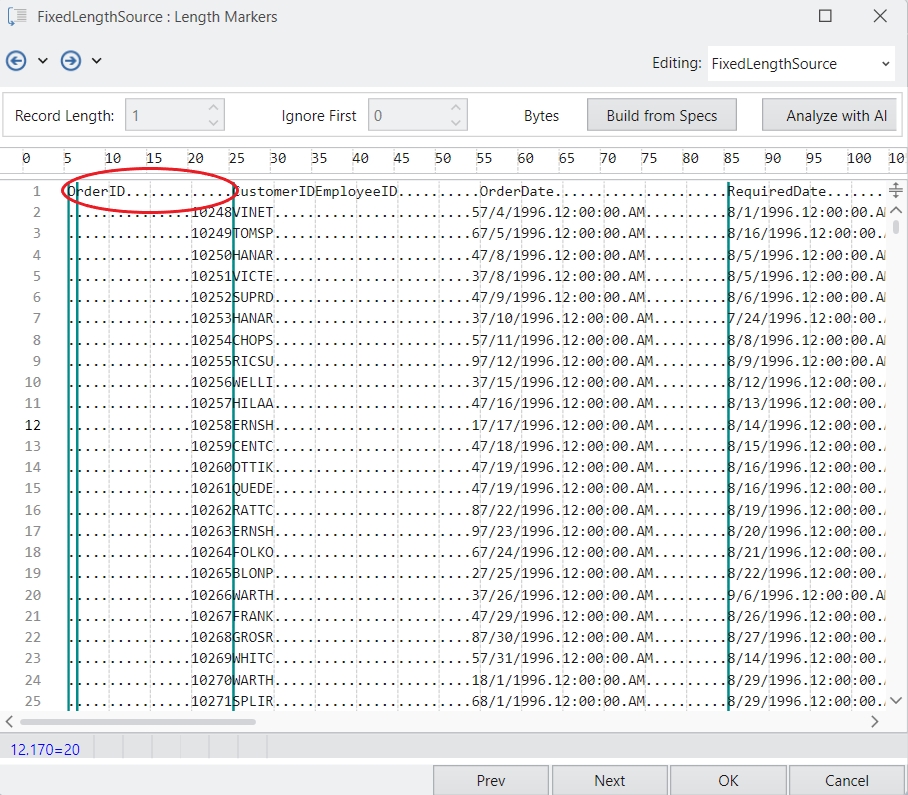
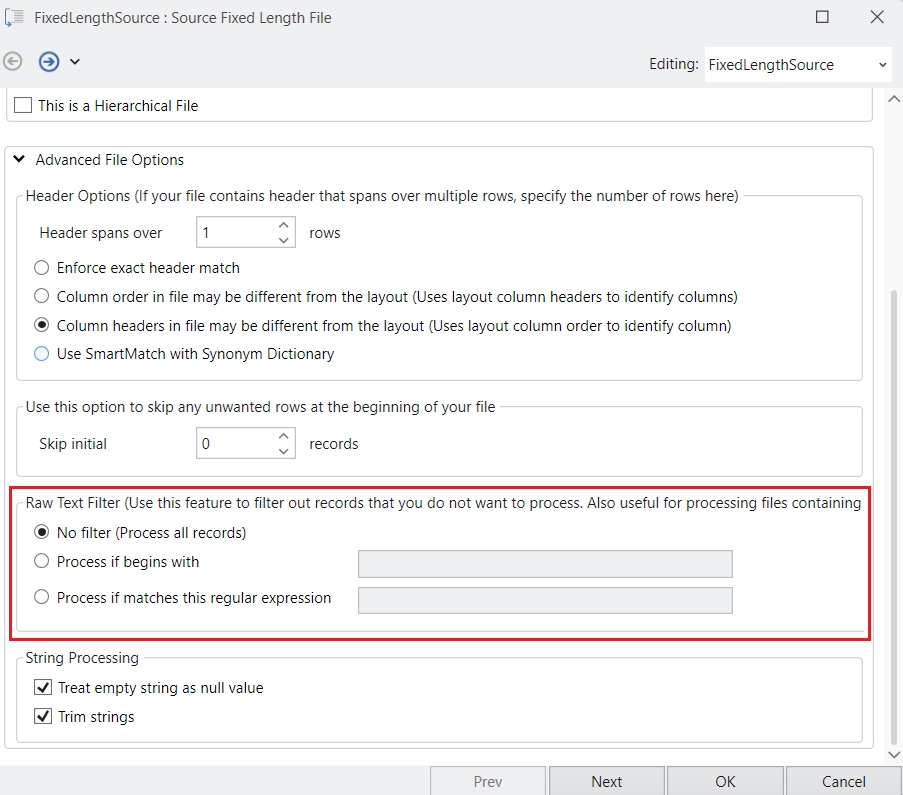
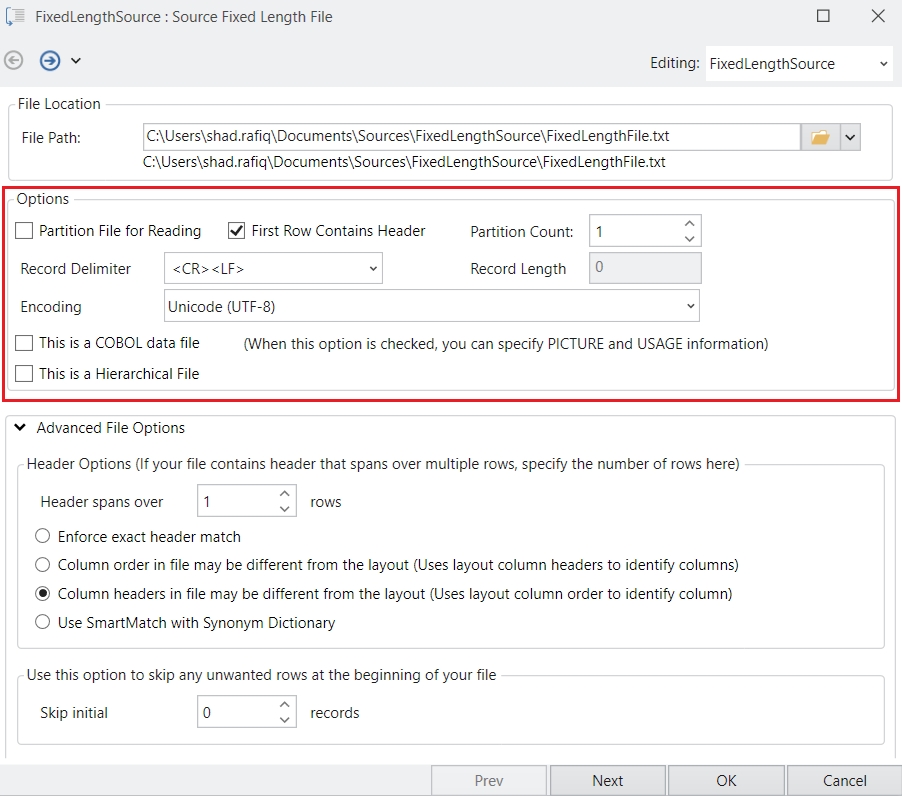

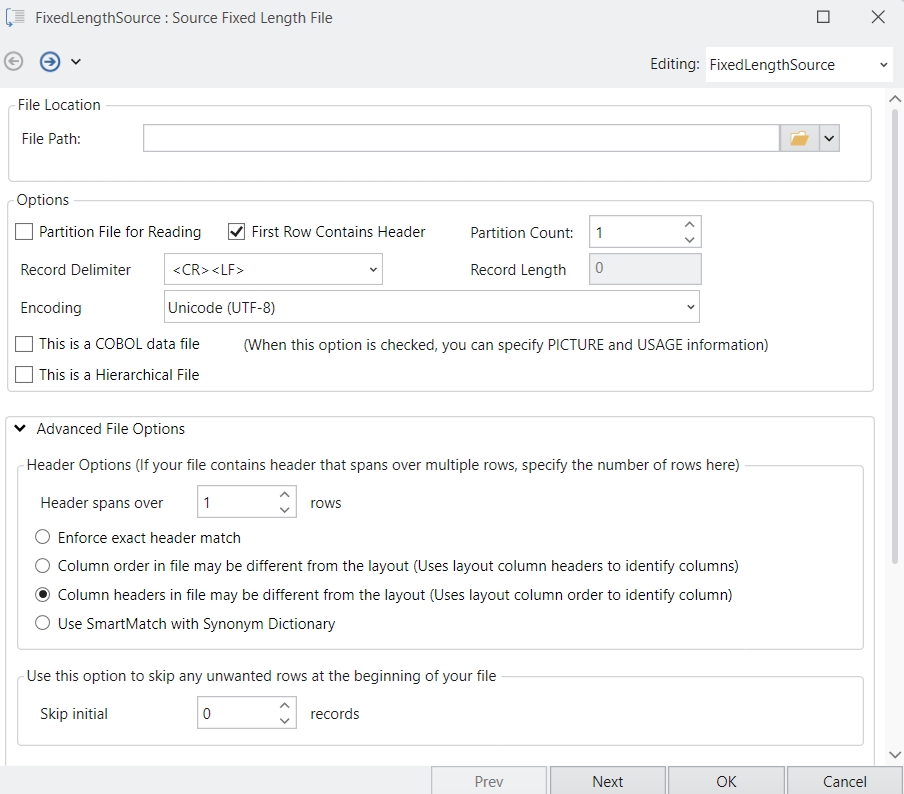
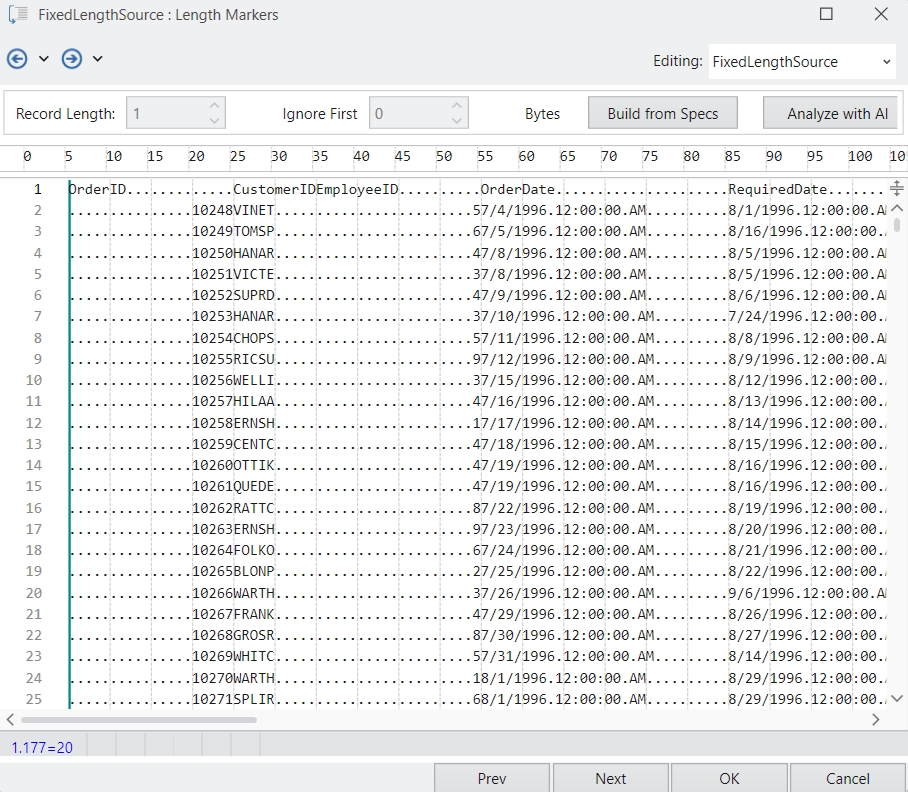
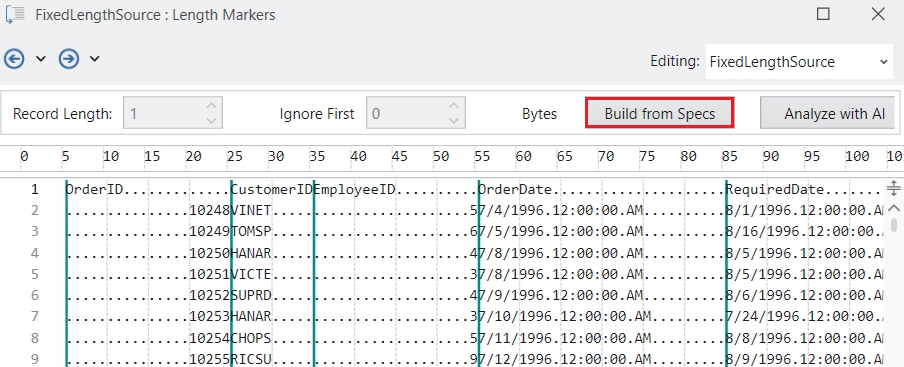
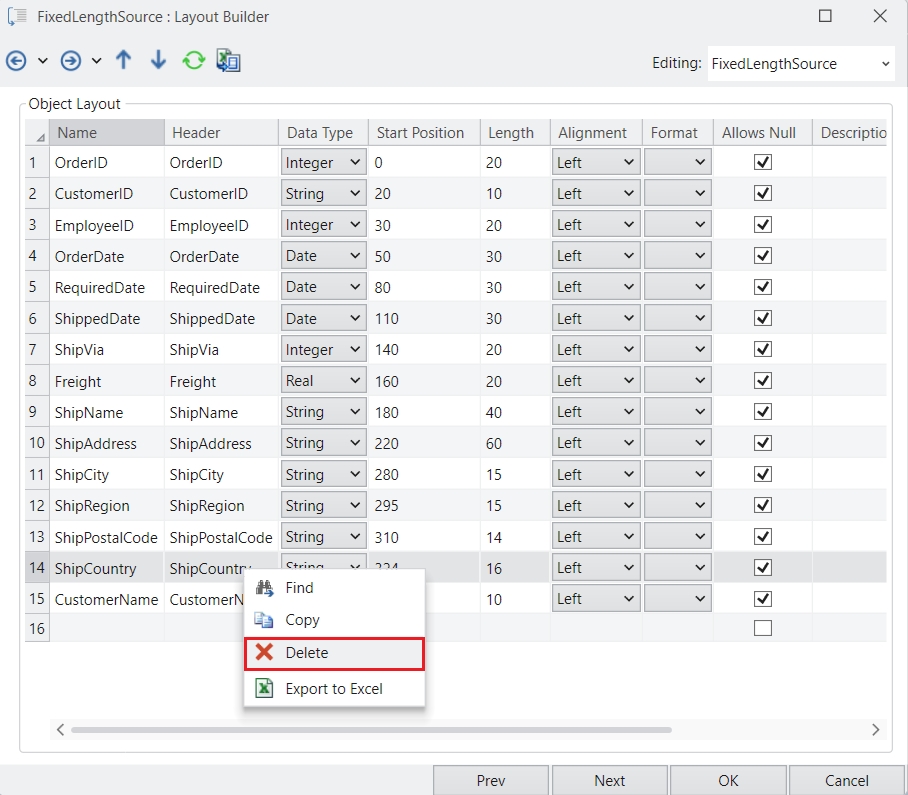

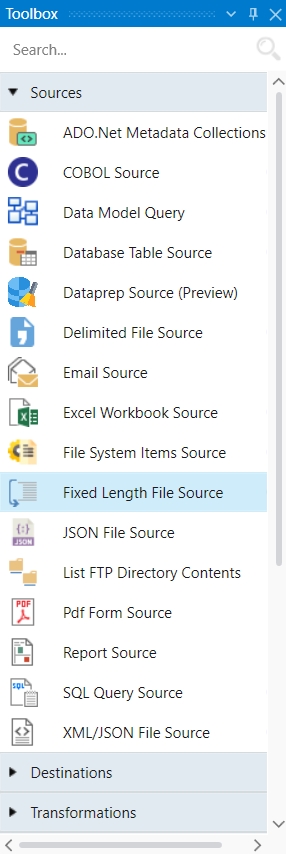
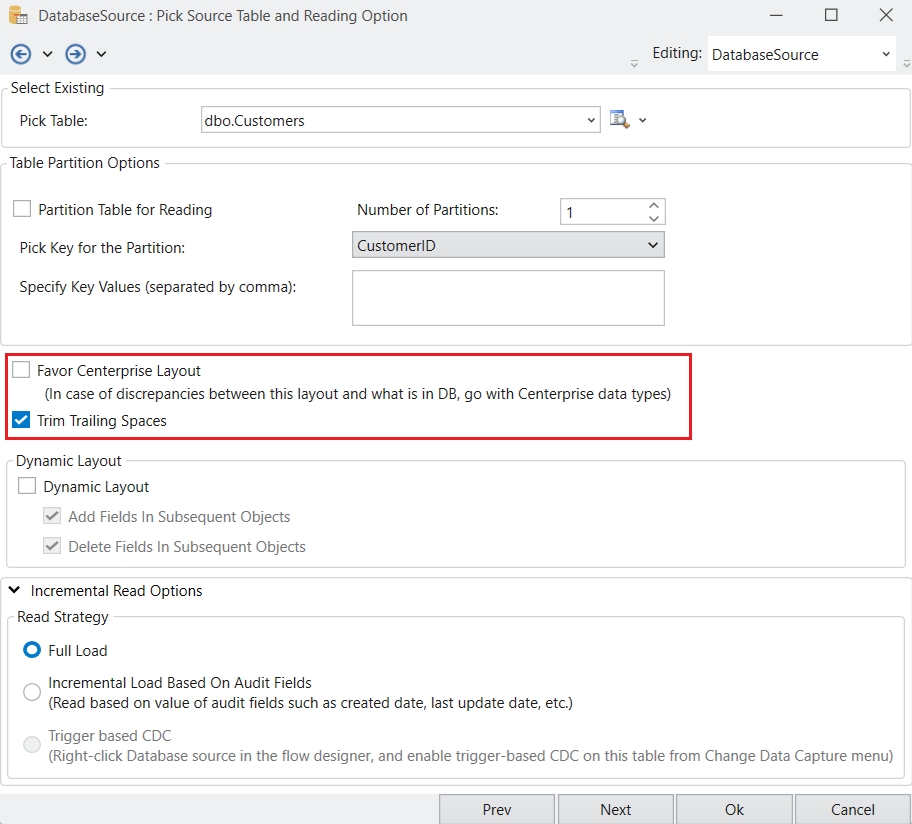
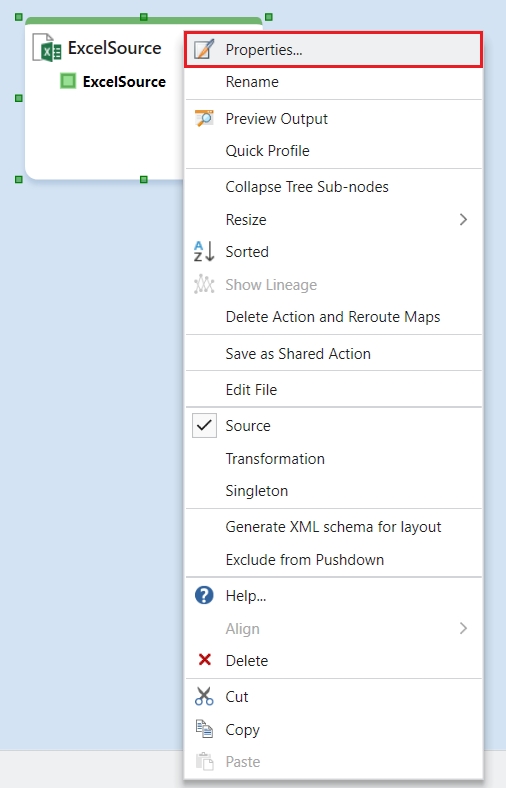
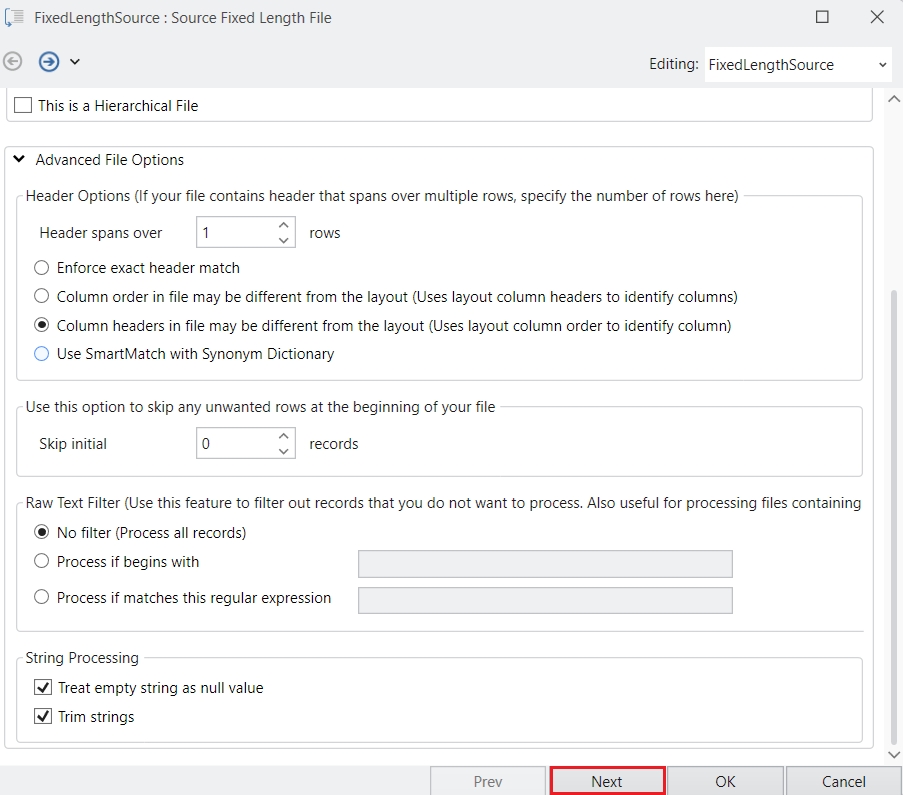

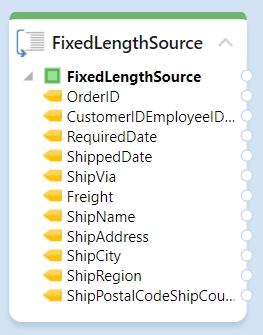
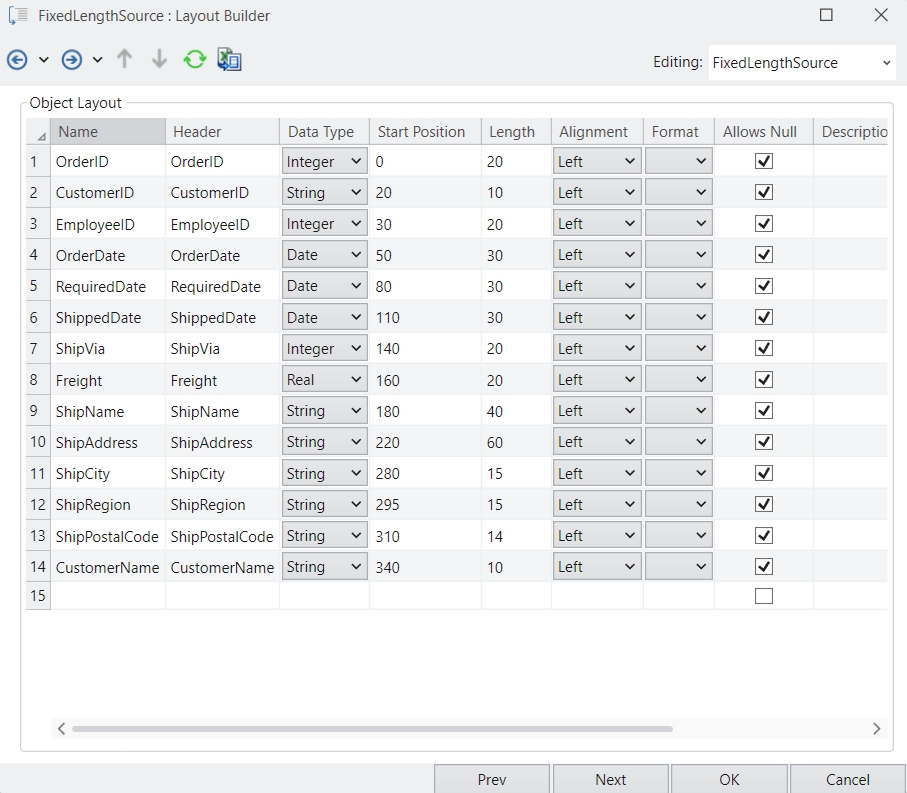
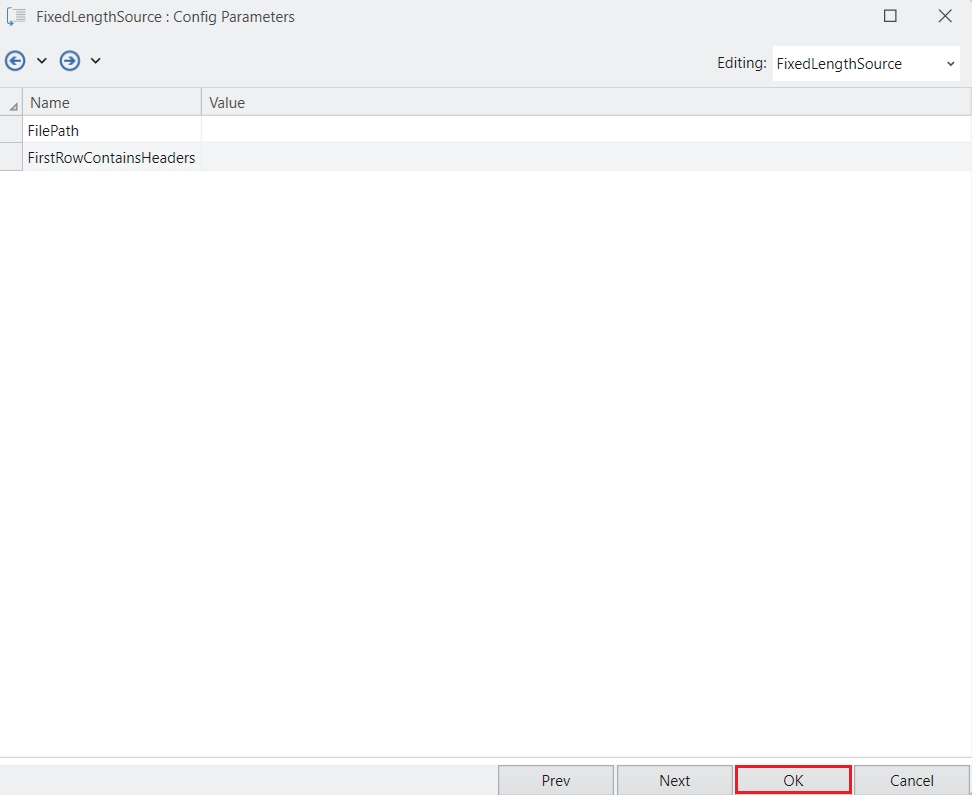

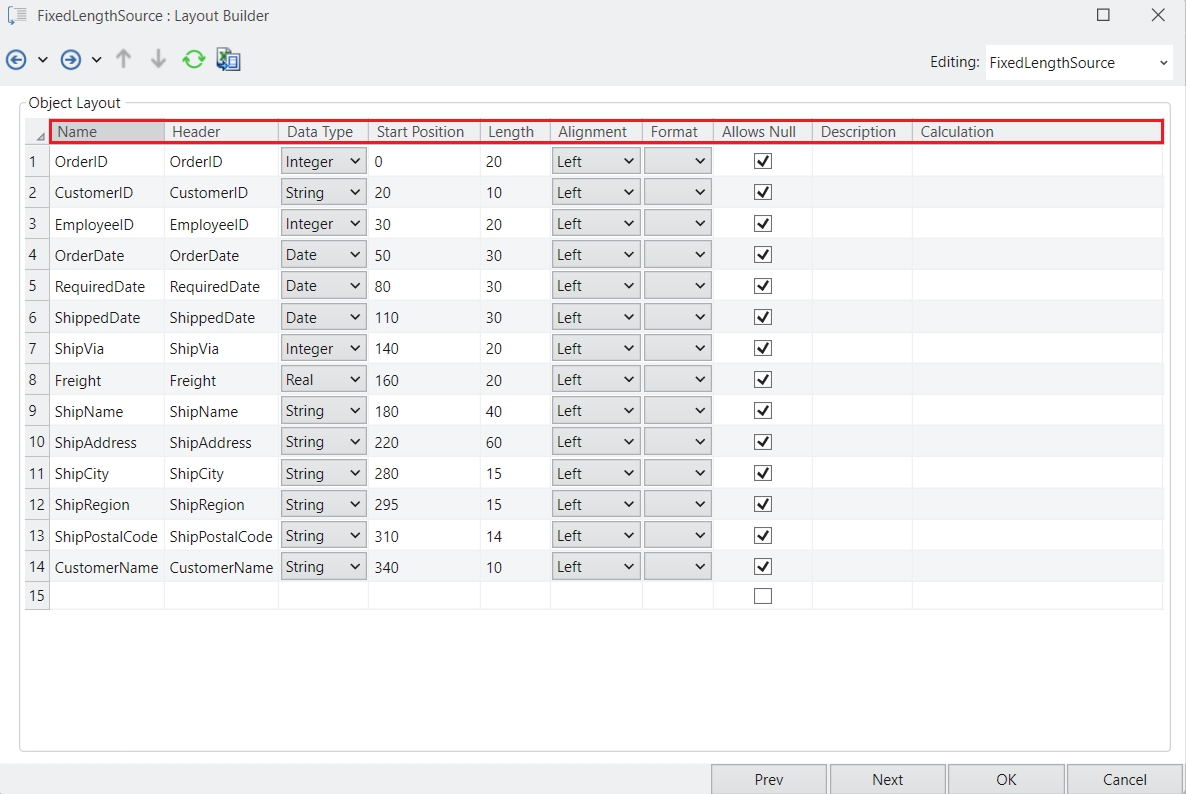
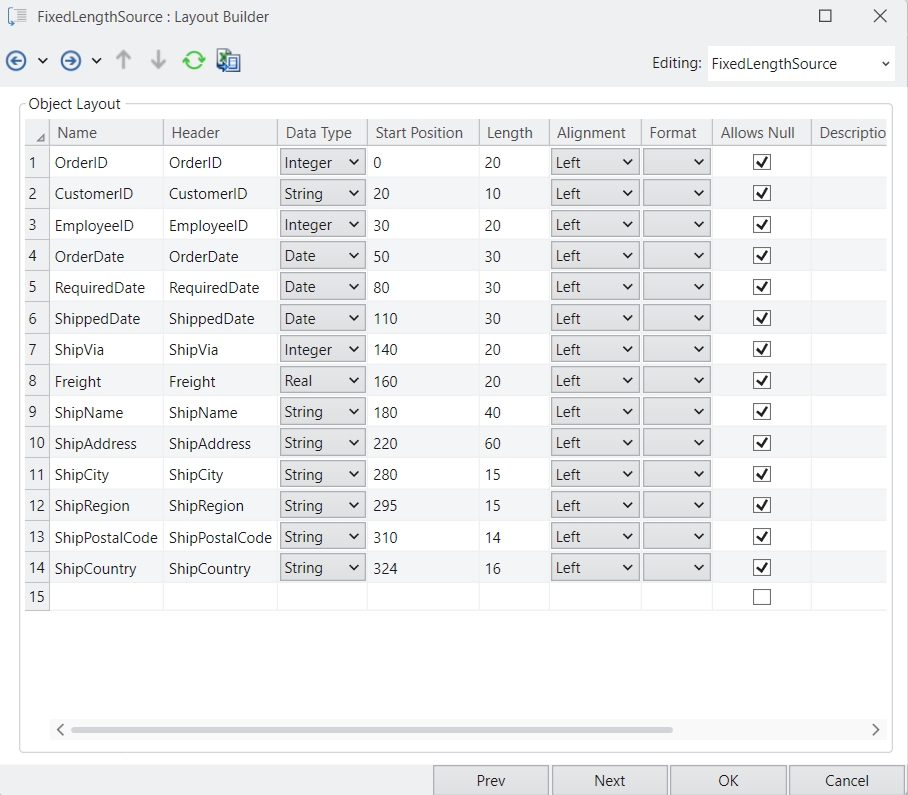
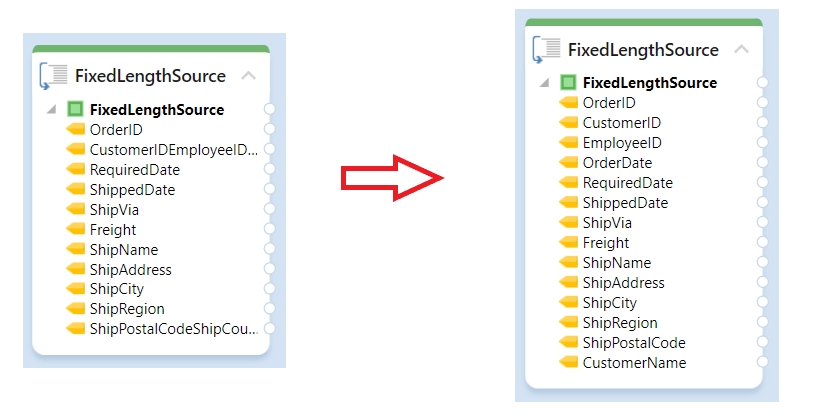
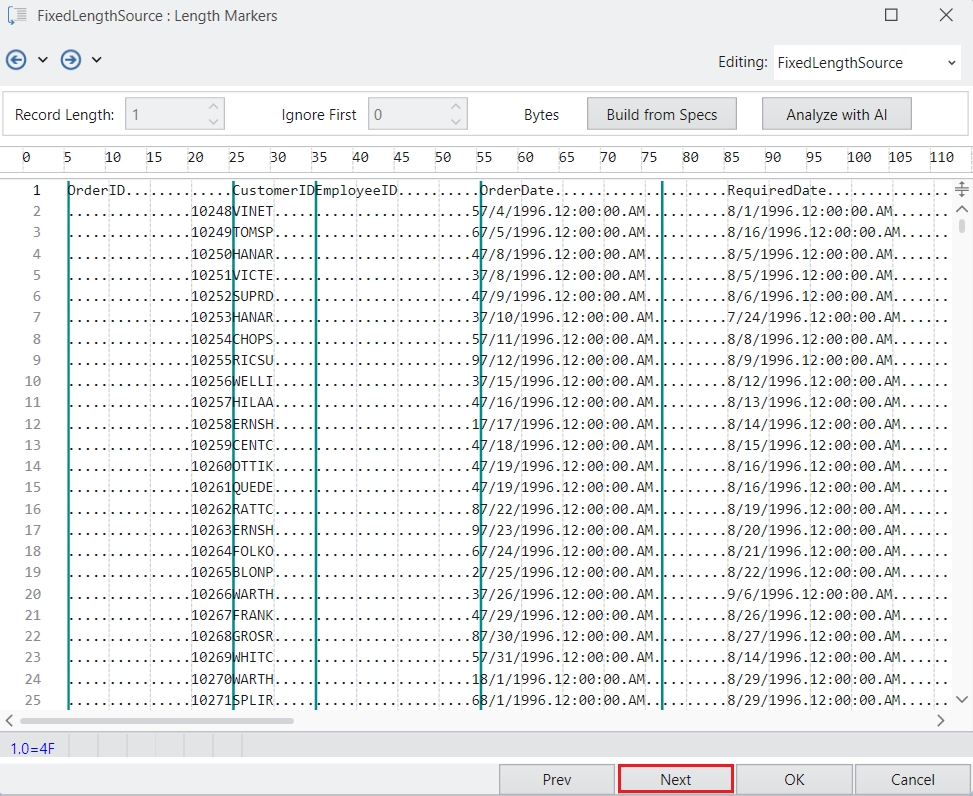
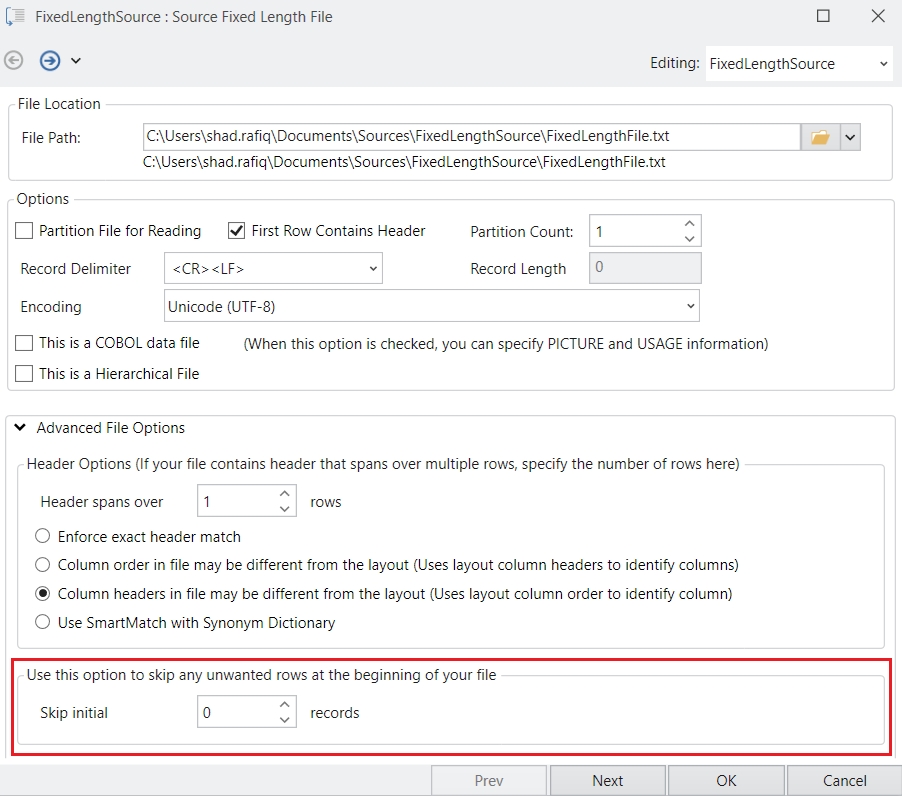
Each source on the dataflow is represented as a source object. You can have any number of sources in the dataflow, and they can feed into zero or more destinations.
The following source types are supported by the dataflow engine:
Flat File Sources:
Tree File Sources:
Database Sources:
Data Model
All sources can be added to the dataflow by picking a source type on the Toolbox and dropping it on the dataflow. File sources can also be added by dragging-and-dropping a file from an Explorer window. Database sources can be drag-and-dropped from the Data Source Browser. For more details on adding sources to the dataflow, see Introducing Dataflows.
Adding a Delimited File Source object allows you to transfer data from a delimited file. An example of what a delimited file source object looks like is shown below.
To configure the properties of a Delimited File Source object after it is added to the dataflow, right-click on its header and select Properties from the context menu.
Adding a Fixed-Length File Source object allows you to transfer data from a fixed-length file. An example of what a Fixed-Length File Source object looks like is shown below.
To configure the properties of a Fixed-Length File Source object after it is added to the dataflow, right-click on its header and select Properties from the context menu.
Adding an Excel Workbook Source object allows you to transfer data from an Excel file. An example of what an Excel Workbook Source object looks like is shown below.
To configure the properties of an Excel Workbook Source object after it is added to the dataflow, right-click on its header and select Properties from the context menu.
Adding a COBOL File Source object allows you to transfer data from a COBOL file. An example of what a COBOL File Source object looks like is shown below.
To configure the properties of a COBOL File Source object after it is added to the dataflow, right-click on its header and select Properties from the context menu.
Adding an XML/JSON File Source object allows you to transfer data from an XML file. An example of what an XML/JSON File Source object looks like is shown below.
To configure the properties of an XML/JSON File Source object after it is added to the dataflow, right-click on its header and select Properties from the context menu. The following properties are available:
General Properties window:
File Path – Specifies the location of the source XML file. Using UNC paths is recommended if running the dataflow on a server.
Schema File Path – Specifies the location of the XSD file controlling the layout of the XML source file.
To generate the schema, click icon next to the Schema File Path input, and select Generate.
To edit an existing schema, click icon next to the Schema File Path input, and select Edit File. The schema will open for editing in a new tab.
Optional Record Filter Expression – Allows you to enter an expression to selectively filter incoming records according to your criteria. You can use the Expression Builder to help you create your filter expression. For more information on using Expression Builder, see Expression Builder.
Adding a Database Table Source object allows you to transfer data from a database table. An example of what a Database Table Source object looks like is shown below.
To configure the properties of a Database Table Source object after it is added to the dataflow, right-click on its header and select Properties from the context menu. The following properties are available:
Source Connection window – Allows you to enter the connection information for your source, such as Server Name, Database, and Schema, as well as credentials for connecting to the selected source.
Pick Source Table window:
Select a source table using the Pick Table dropdown.
Select Full Load if you want to read the entire table.
Select Incremental Load Based on Audit Fields to perform an incremental read starting at a record where the previous read left off.
Incremental load based on Audit Fields is based around the concept of Change Data Capture (CDC), which is a set of reading and writing patterns designed to optimize large-scale data transfers by minimizing database writing in order to improve performance. CDC is implemented in Astera using Audit Fields pattern. The Audit Fields pattern uses create time or last update time to determine the records that have been inserted or updated since the last transfer and transfers only those records.
Advantages
Most efficient of CDC patterns. Only records that were modified since the last transfer are retrieved by the query thereby putting little stress on the source database and network bandwidth
Disadvantages
Requires update date time and/or create date time fields to be present and correctly populated
Does not capture deletes
Requires index on the audit field(s) for efficient performance
To use the Audit Fields strategy, select the Audit Field and an optional Alternate Audit Field from the appropriate dropdown menus. Also, specify the path to the file that will store incremental transfer information.
Where Clause window:
You can enter an optional SQL expression serving as a filter for the incoming records. The expression should start with the WHERE word followed by the filter you wish to apply.
For example, WHERE CreatedDtTm >= ‘2001/01/05’
General Options window:
The Comments input allows you to enter comments associated with this object.
Adding a SQL Query Source object allows you to transfer data returned by the SQL query. An example of what an SQL Query Source object looks like is shown below.
To configure the properties of a SQL Query Source object after it is added to the dataflow, right-click on its header and select Properties from the context menu. The following properties are available:
Source Connection window – Allows you to enter the connection information for your SQL Query, such as Server Name, Database, and Schema, as well as credentials for connecting to the selected database.
SQL Query Source window:
Enter the SQL expression controlling which records should be returned by this source. The expression should follow SQL syntax conventions for the chosen database provider.
For example, select OrderId, OrderName, CreatedDtTm from Orders.
Source or Destination is a Delimited File
If your source or destination is a Delimited File, you can set the following properties
First Row Contains Header - Check this option if you want the first row of your file to display the column headers. In the case of Source file, this indicates if the source contains headers.
Field Delimiter - Allows you to select the delimiter for the fields. The available choices are , and . You can also type the delimiter of your choice instead of choosing the available options.
Record Delimiter - Allows you to select the delimiter for the records in the fields. The choices available are carriage-return line-feed combination , carriage-return and line-feed . You can also type the record delimiter of your choice instead of choosing the available options. For more information on Record Delimiters, please refer to the Glossary.
You can also use the Build fields from an existing file feature to help you build a destination fields based on an existing file instead of manually typing the layout.
Source or Destination is a Microsoft Excel Worksheet
If the Source and/or the Destination chosen is a Microsoft Excel Worksheet, you can set the following properties:
First Row Contains Header - Check this option if you want the first row of your file to display the column headers. In the case of Source file, this indicates if the source contains headers.
Worksheet - Allows you to select a specific worksheet from the selected Microsoft Excel file.
You can also use the Build fields from an existing file feature to help you build a destination fields based on an existing file instead of manually typing the layout.
Source or Destination is a Fixed Length File
If the Source and/or the Destination chosen is a Fixed Length File, you can set the following properties:
First Row Contains Header - Check this option if you want the first row of your file to display the column headers. In the case of Source file, this indicates if the source contains headers.
Record Delimiter - Allows you to select the delimiter for the records in the fields. The choices available are carriage-return line-feed combination , carriage-return and line-feed . You can also type the record delimiter of your choice instead of choosing the available options. For more information on Record Delimiters, please refer to the Glossary.
Encoding - Allows you to choose the encoding scheme for the delimited file from a list of choices. The default value is Unicode (UTF-8)
You can also use the Build fields from an existing file feature to help you build a destination fields based on an existing file instead of manually typing the layout.
Using the Length Markers window, you can create the layout of your fixed-length file, The Length Markers window has a ruled marker placed at the top of the window. To insert a field length marker, you can click in the window at a particular point. For example, if you want to set the length of a field to contain five characters and the field starts at five, then you need to click at the marker position nine.
In case the records don’t have a delimiter and you rely on knowing the size of a record, the number in the RecordLength box is used to specify the character length for a single record.
You can delete a field length marker by clicking the marker.
Source or Destination is an XML file
If the source is an XML file, you can set the following options:
Source File Path specifies the file path of the source XML file.
Schema File Path specifies the file path of the XML schema (XSD file) that applies to the selected source XML file.
Record Filter Expression allows you to optionally specify an expression used as a filter for incoming source records from the selected source XML file. The filter can refer to a field or fields inside any node inside the XML hierarchy.
The following options are available for destination XML files.
Destination File Path specifies the file path of the destination XML file.
Encoding - Allows you to choose the encoding scheme for the XML file from a list of choices. The default value is Unicode (UTF-8).
Format XML Output instructs Astera to add line breaks to the destination XML file for improved readability.
Note: To ensure that your dataflow is runnable on a remote server, please avoid using local paths for the source. Using UNC paths is recommended.
When importing from a fixed-width, delimited, or Excel file, you can specify the following advanced reading options:
Header Spans x Rows - If your source file has a header that spans more than 1 row, select the number of rows for the header using this control.
Skip Initial Records - Sets the number of records which you want skipped at the beginning of the file. This option can be set whether or not your source file has a header. If your source file has a header, the first record after the specified number of rows to skip will be used as the header row.
Raw Text Filter - Only records starting with the filter string will be imported. The rest of the records will be filtered.
You can optionally use regular expressions to specify your filter. For example, the regular expression ^[12][4] will only include records starting with 1 or 2, and whose second character is 4.
Raw Text Filter setting is not available for Excel source files.
If your source is a fixed-length file, delimited file, or Excel spreadsheet, it may contain an optional header row. A header row is the first record in the file that specifies field names and, in the case of a fixed-length file, the positioning of fields in the record.
If your source file has a header row, you can specify how you want the system to handle the differences between your actual source file, and the source layout specified in the setting. Differences may arise due to the fact that the source file has a different field order from what is specified in the source layout, or it may have extra fields compared to the source layout. Conversely, the source file may have fewer fields than what is defined in the source layout, and the field names may also differ, or may have changed since the time the layout was created.
By selecting from the available options, you can have Astera handle those differences exactly as required by your situation. These options are described in more detail below:
Enforce exact header match – Lets Astera Data Stack proceed with the transfer only if the source file’s layout matches the source layout defined in the setting exactly. This includes checking for the same number and order of fields and field names.
Columns order in file may be different from the layout – Lets Astera Data Stack ignore the sequence of fields in the source file, and match them to the source layout using the field names.
Column headers in file may be different from the layout – This mode is used by default whenever the source file does not have a header row. You can also enable it manually if you want to match the first field in the layout with the first field in the source file, the second field in the layout with the second field in the source file, and so on. This option will match the fields using their order as described above even if the field names are not matched successfully. We recommend that you use this mode only if you are sure that the source file has the same field sequence as what is defined in the source layout.
The Field Layout window is available in the properties of most objects on the dataflow to help you specify the fields making up the object. The table below explains the attributes you can set in the Field Layout window.
The table below provides a list of all the attributes available for a particular layout type.
Astera supports a variety of formats for each data type. For example, for Dates, you can specify the date as “April 12” or “12-Apr-08”. Data Formats can be configured independently for source and for destination, giving you the flexibility to correctly read source data and change its format as it is transferred to destination.
If you are transferring from a flat file (for example, Delimited or Fixed-Width), you can specify the format of a field so that the system can correctly read the data from that field.
If you do not specify a data format, the system will try to guess the correct format for the field. For example, Astera is able to correctly interpret any of the following as a Date:
April 12
12-Apr-08
04-12-2008
Saturday, 12 April 2008
and so on
Astera comes with a variety of pre-configured formats for each supported data type. These formats are listed in the Sample Formats section below. You can also create and save your own data formats.
To open the Data Formats window, click icon located in the Toolbar at the top of the designer.
To select a data format for a source field, go to Source Fields and expand the Format dropdown menu next to the appropriate field.
Sample Formats
Dates:
Booleans:
Integers:
Real Numbers:
Numeric Format Specifiers:
Encoding - Allows you to choose the encoding scheme for the delimited file from a list of choices. The default value is Unicode (UTF-8)
Quote Char - Allows you to select the type of quote character to be used in the delimited file. This quote character tells the system to overlook any special characters inside the specified quotation marks. The options available are ” and ’.
Root Element specifies the root element from the list of the available elements in the selected schema file.
Generate Destination XML Schema Based on Source Layout creates the destination XML layout to mirror the layout of the source.
Root Element specifies the name of the root element for the destination XML file.
Generate Fields as XML Attributes specifies that fields will be written as XML attributes (as opposed to XML elements) in the destination XML file.
Record Node specifies the name of the node that will contain each record transferred.
Length
Specifies the maximum number of characters allotted for a value in the field. The actual value may be shorter than what is allowed by the Length attribute. Note: This option is only available for fixed length and database layout types.
Column Name
Specifies the column name of the database table. Note: This option is only available in database layout.
DB Type
Specifies the database specific data type that the system assigns to the field based on the field's data. Each database (Oracle, SQL, Sybase, etc) has its own DB types. For example, Long is only available in Oracle for data type string. Note: This option is only available in database layout.
Decimal Places
Specifies the number of decimal places for a data type specified as real. Note: This option is only available in database layout.
Allows Null
Controls whether the field allows blank or NULL values in it.
Default Value
Specifies the value that is assigned to the field in any one of the following cases:- The source field does not have a value - The field is not found in the source layout- The destination field is not mapped to a source field. Note: This option is only available in destination layout.
Sequence
Represents the column order in the source file. You can change the column order of the data being imported by simply changing the number in the sequence field. The other fields in the layout will then be reordered accordingly.
Description
Contains information about the field to help you remember its purpose.
Alignment
Specifies the positioning of the field’s value relative to the start position of the field. Available alignment modes are LEFT, CENTER, and RIGHT. Note: This option is only available for fixed length layout type.
Primary Key
Denotes the primary key field (or part of a composite primary key) for the table. Note: This option is only available in database layout.
System Generated
Indicates that the field will be automatically assigned an increasing Integer number during the transfer. Note: This option is only available in database layout.
Destination Database Table
Column name, Name, Data type, DB type, Length, Decimal places, Allows null, Primary key, System generated
04/12/08
dd-MMM-yy
12-Apr-08
M
April 12
D
12 April 2008
mm-dd-yyyy hh:mm:ss tt
04-12-2008 11:04:53 PM
M/d/yyyy hh:mm:ss tt
4/12/2008 11:04:53 PM
$1,234,567,890,000
$###,###,###,##0
$1,234,567,890,000
###,###
123450
#,#
1,000
##.00
35
.12345678900%
Thousand separator and number scaling
The ',' character serves as both a thousand separator specifier and a number scaling specifier. Thousand separator specifier: If one or more ',' characters is specified between two digit placeholders (0 or #) that format the integral digits of a number, a group separator character is inserted between each number group in the integral part of the output. Number scaling specifier: If one or more ',' characters is specified immediately to the left of the explicit or implicit decimal point, the number to be formatted is divided by 1000 each time a number scaling specifier occurs. For example, if the string "0,," is used to format the number 100 million, the output is "100".
%
Percentage placeholder
The presence of a '%' character in a format string causes a number to be multiplied by 100 before it is formatted. The appropriate symbol is inserted in the number itself at the location where the '%' appears in the format string.
E0E+0E-0e0e+0e-0
Scientific notation
If any of the strings "E", "E+", "E-", "e", "e+", or "e-" are present in the format string and are followed immediately by at least one '0' character, then the number is formatted using scientific notation with an 'E' or 'e' inserted between the number and the exponent. The number of '0' characters following the scientific notation indicator determines the minimum number of digits to output for the exponent. The "E+" and "e+" formats indicate that a sign character (plus or minus) should always precede the exponent. The "E", "E-", "e", or "e-" formats indicate that a sign character should only precede negative exponents.
'ABC'"ABC"
Literal string
Characters enclosed in single or double quotes are copied to the result string, and do not affect formatting.
;
Section separator
The ';' character is used to separate sections for positive, negative, and zero numbers in the format string. If there are two sections in the custom format string, the leftmost section defines the formatting of positive and zero numbers, while the rightmost section defines the formatting of negative numbers. If there are three sections, the leftmost section defines the formatting of positive numbers, the middle section defines the formatting of zero numbers, and the rightmost section defines the formatting of negative numbers.
Other
All other characters
Any other character is copied to the result string, and does not affect formatting.
Name
The system pre-fills this item for you based on the field header. Field names do not allow spaces. Field names are used to refer to the fields in the Expression Builder or tools where a field is used in a calculation formula.
Header
Represents the field name specified in the header row of the file. Field headers may contain spaces.
Data Type
Specifies the data type of a field, such as Integer, Real, String, Date, or Boolean.
Format
Specifies the format of the values stored in that field, depending on the field’s data type. For example, for dates you can choose between DD-MM-YY, YYYY-MM-DD, or other available formats.
Start Position
Specifies the position of the field’s first character relative to the beginning of the record. Note: This option is only available for fixed length layout type.
Source Delimited file and Excel worksheet
Name, Header, Data type, Format
Source Fixed Length file
Name, Header, Data type, Format, Start position, Length
Source Database Table and SQL query
Column name, Name, Data type, DB type, Length, Decimal places, Allows null
Destination Delimited file and Excel worksheet
Name, Header, Data type, Format, Allows null, Default value
Destination Fixed Length file
Sequence, Name, Header, Description, Data type, Format, Start position, Length, Allows null, Default value, Alignment
dd-MMM-yyyy
12-Apr-2008
yyyy-MM-dd
2008-04-12
dd-MM-yy
12-04-08
MM-dd-yyyy
04-12-2008
MM/dd/yyyy
04/12/2008
Y/N
Y/N
1/0
1/0
T/F
T/F
True/False
True/False
######
123456
####
1234
####;0;(####)
-1234
.##%;0;(.##%)
123456789000%
.##%;(.##%)
1234567800%
###,###.##
12,345.67
##.##
12.34
$###,###,###,###
$1,234,567,890,000
$###,###,###,##0
$1,234,567,890,000
.##%;(.##%);
.1234567800%
0
Zero placeholder
If the value being formatted has a digit in the position where the '0' appears in the format string, then that digit is copied to the result string; otherwise, a '0' appears in the result string. The position of the leftmost '0' before the decimal point and the rightmost '0' after the decimal point determines the range of digits that are always present in the result string. The "00" specifier causes the value to be rounded to the nearest digit preceding the decimal, where rounding away from zero is always used. For example, formatting 34.5 with "00" would result in the value 35.
#
Digit placeholder
If the value being formatted has a digit in the position where the '#' appears in the format string, then that digit is copied to the result string. Otherwise, nothing is stored in that position in the result string. Note that this specifier never displays the '0' character if it is not a significant digit, even if '0' is the only digit in the string. It will display the '0' character if it is a significant digit in the number being displayed. The "##" format string causes the value to be rounded to the nearest digit preceding the decimal, where rounding away from zero is always used. For example, formatting 34.5 with "##" would result in the value 35.
.
Decimal Point
The first '.' character in the format string determines the location of the decimal separator in the formatted value; any additional '.' characters are ignored.
MM/dd/yy
$###,###,###,###
.##%;0;(.##%)
,
